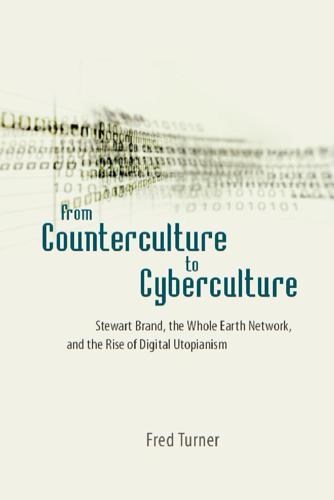
From Counterculture to Cyberculture: Stewart Brand, the Whole Earth Network, and the Rise of Digital Utopianism
by
Fred Turner
Published 31 Aug 2006
And as they rose to power, more than a few rightwing politicians and executives longed to share the hip credibility of people like Stewart Brand. This book, then, does not tell the story of a countercultural movement whose ideals and practices were appropriated by the forces of capital, technology, or the state. Rather, it demonstrates that the New Communalist wing of the counterculture embraced those forces early on and that in subsequent years, Stewart Brand and the Whole Earth network continued to provide the intellectual and practical contexts within which members of the two worlds could come together and legitimate one another’s projects. At the same time, however, this book is not a biography of Stewart Brand. Brand certainly deserves a biography, and one will no doubt be written in the years to come, but this book makes relatively little effort to understand Brand’s personal history except insofar as it illuminates his role in reshaping the politics of information.
…
And how is it that the communitarian ideals of the counterculture should have become melded to computers and computer networks in such a way that thirty years later, the Internet could appear to so many as an emblem of a youthful revolution reborn? For answers to these questions, we need to turn to the biography of Stewart Brand and the history of the Whole Earth network. CHAPTER 2 Stewart Brand Meets the Cybernetic Counterculture In the spring of 1957, at the height of the cold war, Stewart Brand was a nineteen-year-old freshman at Stanford University, and he was deeply worried. Even though Europe lay more than six thousand miles to the east, Brand had begun to write at length in his diary about his fear that the Soviet Union would soon attack the United States.
…
From counterculture to cyberculture : Stewart Brand, the Whole Earth network, and the rise of digital utopianism / Fred Turner. p. cm. Includes bibliographical references and index. ISBN 0-226-81741-5 (cloth : alk. paper) 1. Computers and civilization. 2. Brand, Stewart. 3. Information technology—History—20th century. 4. Counterculture—United States— History—20th century. 5. Computer networks—Social aspects. 6. Subculture— California—San Francisco—History—20th century. 7. Technology—Social aspects— California, Northern. 8. Whole earth catalog. I. Title: Stewart Brand, the Whole Earth network, and the rise of digital utopianism.

Whole Earth: The Many Lives of Stewart Brand
by
John Markoff
Published 22 Mar 2022
BACK TO NOTE REFERENCE 11 Barbara Kelley, “Whole Earth Founder Strolls into ‘Empowering Field of Mind Tools,’ ” Christian Science Monitor, December 17, 1984. BACK TO NOTE REFERENCE 12 Stewart Brand, “Why and How This Magazine Is Non-profit,” Whole Earth Software Review, Spring 1984, 125. BACK TO NOTE REFERENCE 13 Stewart Brand, “A Book-in-Progress,” Whole Earth Software Review, Spring 1984, 1. BACK TO NOTE REFERENCE 14 Michael Malone, “Stewart Brand: From Hippy Prince to Software Savant,” San Jose Mercury News, September 16, 1984, 6. BACK TO NOTE REFERENCE 15 Stewart Brand, “Apocalypse Juggernaut, Hello,” Whole Earth Catalog, January 1970, 21.
…
All of the others divide us from one another. It would await Stewart Brand and a photograph on the cover of the Whole Earth Catalog to conjure the significance of a unified planetary culture; that image has been his and our polestar ever since. Chapter 1 Shoppenagon Preserved in a large photograph, he was a mythic presence in the living room of the cabin where Stewart Brand spent his childhood summers. David Shoppenagon was a Chippewa Indian and a popular hunting and fishing guide for the wealthier residents of frontier Saginaw, Michigan, when in 1875 he brought Stewart Brand’s great-great-grandfather, former New York congressman Lorenzo Burrows, and his family to Higgins Lake.
…
BACK TO NOTE REFERENCE 1 Calvin Fentress, “The Next to Last Book on Earth,” Washington Post, November 16, 1980. https://www.washingtonpost.com/ BACK TO NOTE REFERENCE 2 Stewart McBride, “Stewart Brand and His Five Pounds of Ideas for the ’80s,” Christian Science Monitor, January 15, 1981. BACK TO NOTE REFERENCE 3 Sue M. Halpern, “Private Jets and Road Kills,” Nation, December 27, 1980. BACK TO NOTE REFERENCE 4 Katherine Fulton interview with the author, September 1994. BACK TO NOTE REFERENCE 5 Stewart McBride, “Uncommon Courtesy: Stewart Brand Launches a School of ‘Compassionate Skills,’ ” Christian Science Monitor, August 19, 1982. BACK TO NOTE REFERENCE 6 Stewart Brand, “Uncommon Courtesy: Triple Training,” CoEvolution Quarterly, July 1983, 38.

Valley of Genius: The Uncensored History of Silicon Valley (As Told by the Hackers, Founders, and Freaks Who Made It Boom)
by
Adam Fisher
Published 9 Jul 2018
PARC’s first outside visitor of note was Stewart Brand, fresh from editing and publishing The Last Whole Earth Catalog, and newly famous as a result of its countercultural success. He came to PARC for the tour in 1972. Stewart Brand: I went to Jann Wenner at Rolling Stone and said, “I want to do this story about what’s going on with computers,” and he said, “Fine, go ahead and do it.” He was doing it based, totally, on his good feelings about the Whole Earth Catalog. Alan Kay: Stewart and I knew each other a bit. He contacted me and said he was going to do a piece basically on Spacewar. Stewart Brand: What I had seen with Spacewar was that it drove the technology.
…
Steven Levy: It was a conversation, they were engaging. The whole thing was almost like a jazz improvisation. Just like building up in one of those long Coltrane songs or something like that. Stewart Brand: I was really just restating something that was written down in Levy’s book as “the hacker ethic.” Steven Levy: Information should be free. Stewart Brand: My only addition to that was to take away the “should” and turn it into a “want.” Steven Levy: He hacked me! That’s the way I put it. Stewart Brand: “Information wants to be free” was the meme that got loose and went viral from that discussion. Kevin Kelly: It was just another throwaway line at the time.
…
Flame wars, trolling, cyberbullying: All the social media dysfunction that is so familiar today came as a disturbing shock in the mideighties. Larry Brilliant: I knew Stewart Brand from the Merry Prankster days and the Hog Farm days. Stewart Brand: It was mainly through the Hog Farm. Larry Brilliant had been there as a kind of a resident physician. Ram Dass: He used to be known as Dr. America. The Hog Farm was a hippie commune in Berkeley, run by a fellow named Wavy Gravy. Stewart Brand: And I also knew Larry Brilliant by reputation: what he had done suppressing smallpox in India, and eliminating it, eventually. Ram Dass: It was very exciting stuff: You’ve got maps with pins of each case and you go with vaccination needles in jeeps and boats and you raid villages.

Surveillance Valley: The Rise of the Military-Digital Complex
by
Yasha Levine
Published 6 Feb 2018
How did a technology so deeply connected to war and counterinsurgency suddenly become a one-way ticket to global utopia? It’s an important question. Without it, we can’t begin to understand the cultural forces that have shaped the way we view the Internet today. In a way, it all started with a disillusioned entrepreneur named Stewart Brand.5 Hippies at ARPA October 1972. It’s evening, and Stewart Brand, a young, lanky freelance journalist and photographer, is hanging out at the Stanford Artificial Intelligence Laboratory, an ARPA contractor located in the Santa Cruz mountains above the campus. And he is having a lot of fun. He’s on assignment for Rolling Stone, the edgy house magazine of America’s counterculture, partying with a bunch of computer programmers and math geeks on ARPA’s payroll.
…
In the end, what were supposed to be experiments in freedom and new utopian societies simply replicated and magnified the structural inequality of the outside world that people brought with them. But Stewart Brand did not admit defeat, nor did he try to understand why the cybernetic-libertarian ideology underpinning the experiment failed so spectacularly. He simply transferred the utopian ideas of the mythical commune into something that had long fascinated him: the rapidly growing computer industry. Rebranding Stewart Brand On the surface, the worlds of ARPA and military computer research and the drugged-out hippie commune scene of the 1960s could not be more different.
…
But at Apple we’re trying to balance the scales by giving individuals the kind of computer power once reserved for corporations.” Apple cofounder and CEO Steve Jobs was a huge Stewart Brand fan.37 He was just a kid in the late 1960s when the magazine and commune culture were at their peak of popularity and power, but he read the Whole Earth Catalog and absorbed its culture into his own worldview. So it wasn’t surprising that the original Apple ad campaign that hinted at computers as corporate and government monsters was left in the Dumpster while Brand’s view of personal computers as a technology of freedom prevailed. Stewart Brand offered a powerful vision that was planted deep in the American psyche.
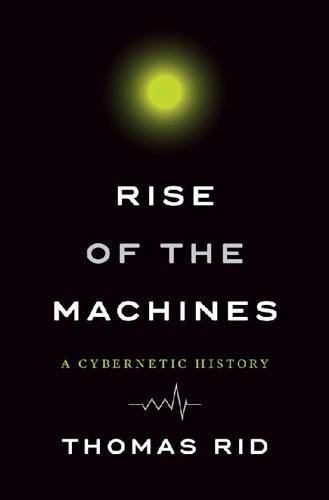
Rise of the Machines: A Cybernetic History
by
Thomas Rid
Published 27 Jun 2016
Anthropologist and social theorist Gregory Bateson was part of the original cybernetic Macy conferences and later applied cybernetics on a higher level, articulating his theory in the 1972 cult book Steps to an Ecology of Mind. Barry Schwartz Photography. The first issue of Stewart Brand’s Whole Earth Catalog was published in 1968. It was meant to be a printed feedback loop for back-to-the-land communards, and it reviewed six books on cybernetics. Stewart Brand (left) and company play with the Earth Ball at the New Games, an event that Brand organized in California, October 1, 1973.© Ted Streshinsky/CORBIS. Stewart Brand holds a copy of the Whole Earth Catalog on July 6, 1984.That same year, he launched the Whole Earth ’Lectronic Link, or WELL, the first real computerized social network. © Roger Ressmeyer/CORBIS.
…
The reading list was published in the winter 1974 issue of Co-evolution Quarterly, p. 28. 54.Bateson, Steps to an Ecology of Mind, 323. 55.Ibid., 467. 56.Ibid., 468. 57.Ibid., 469. 58.Stewart Brand, Two Cybernetic Frontiers (New York: Random House, 1974), 9. 59.See ibid., 24–25, where the story is reprinted. 60.Ibid., 29. 61.Ibid., 7. 62.Ibid., 48. 63.Ibid., 39. 64.Ibid., 49. 65.Stewart Brand, “SPACEWAR: Fanatic Life and Symbolic Death among the Computer Bums,” Rolling Stone, December 7, 1972, 58. 66.Brand, Two Cybernetic Frontiers, 78. 67.Stewart Brand, “We Owe It All to the Hippies,” Time 145, no. 12 (March 1, 1995): 54–56. 68.Ken Goffman, “Wake Up, It’s 1984!”
…
Photo of Handyman courtesy of miSci—Museum of Innovation and Science. Photo of Hardiman courtesy of miSci—Museum of Innovation and Science. Photo of Gregory Bateson. Courtesy of Barry Schwartz Photography. Cover of the first issue of the Whole Earth Catalog. Courtesy of Stewart Brand. Photo of Stewart Brand playing with the Earth Ball at the New Games. © Ted Streshinsky/CORBIS. Photo of Stewart Brand holding an issue of Whole Earth Catalog. © Roger Ressmeyer/CORBIS. Second Insert Photo of Staff Sergeant Vernon Wells with Visually Coupled Airborne Systems Simulator (VCASS) helmet. Department of Defense. Public domain. Computer-generated image projected inside the VCASS Helmet.
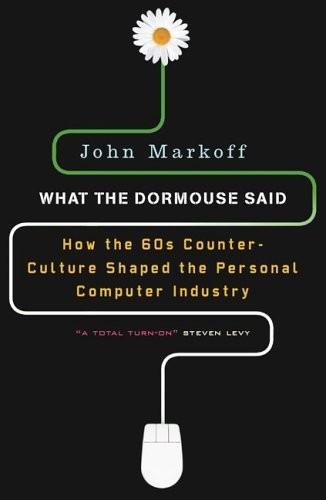
What the Dormouse Said: How the Sixties Counterculture Shaped the Personal Computer Industry
by
John Markoff
Published 1 Jan 2005
And yet the first true personal computer remained more or less locked away in Xerox’s secretive corporate laboratory throughout the 1970s. It had not quite become public when Stewart Brand’s seminal Rolling Stone article appeared in December 1972. In an Annie Leibovitz photo that accompanied the piece and captured the long-haired spirit and free-flowing culture of the lab in the Palo Alto foothills, John Shoch’s face was hidden, his nose buried in a notebook. Having managed to navigate the antiwar demonstrations at Stanford, Shoch had developed a good instinct for avoiding trouble. Stewart Brand had been hanging around the lab with the photographer, talking to people, and Shoch had a notion that trouble was exactly what his visits might lead to.
…
Henry Lowood and Alex Pang, Stanford University archivists and historians, took time out of their schedules to answer my questions. Paula Terzian was a wonderful transcriber on a moment’s notice. Finally, Leslie Terzian Markoff was there for me when I needed her most. NOTES Preface 1.Stewart Brand, “We Owe It All to the Hippies,” Time, special issue, spring 1995. 2.Stewart Brand, “Spacewar: Fanatic Life and Symbolic Death among the Computer Bums,” Rolling Stone, December 7, 1972. 3.The meaning of the term “hacker” changed beginning in the early 1990s, when it came to refer to teenagers who used modems to break into computers.
…
Thus it is ironic that Michael Hiltzik chose the phrase “Dealers of Lightning” as the title of his thorough history of Xerox PARC, when in fact the term was first used to describe Engelbart’s work. 2.“Whole Earth Visionary: Stewart Brand,” The Guardian (London), August 4, 2001, p. 6. 3.Sam Binkley, “Consuming Aquarius: Markets and the Moral Boundaries of the New Class, 1968–1980,” Ph.D. dissertation, New School University, 2002. 4.Whole Earth Catalog: Access to Tools, Thirtieth Anniversary Celebration (San Rafael, Calif.: Point Foundation, 1998), p. 2. 5.Stewart Brand, personal journals, Stanford University Special Collections, March 24, 1957. 6.Charles Irby, “The Augmented Knowledge Workshop,” in A History of Personal Workstations, ed.
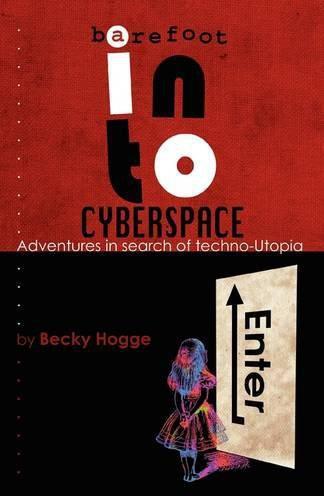
Barefoot Into Cyberspace: Adventures in Search of Techno-Utopia
by
Becky Hogge
,
Damien Morris
and
Christopher Scally
Published 26 Jul 2011
Is Rop prepared, I wonder, for the next generation to look back on the hacker counterculture and see that it failed? “Oh sure.” says Rop, “Nobody’s perfect.” * * * Chapter 3: Information wants to be free “What’s wrong with the corporate world? I don’t get what’s wrong with consumerism and I don’t get what’s wrong with corporations per se.” Stewart Brand is sitting across from me in the small private living room of a central London hotel. At 72, he’s looking remarkably well, although the trip over here from his hometown of Sausalito, California – where he lives on a tugboat with his wife – has taken its toll on his voice. We’ve already had to reschedule this interview once – the publicist for his current book was worried he might overdo it, and his slot on Radio 4’s Start the Week was certainly gravelish.
…
I’m feeling very comfortable sitting across from him on a cosy sofa, as a particularly violent bout of January weather rages in the city outside. Brand is a 1960s original. When Tom Wolfe first came across him as one of Ken Kesey’s Merry Pranksters, madly driving a souped-up pickup through the streets of San Francisco, he recorded the encounter thus: Stewart Brand, a thin blonde guy with a blazing disk on his forehead too, and a whole necktie made of Indian beads. No shirt, however, just an Indian bead necktie on bare skin and a white butcher’s coat with medals from the King of Sweden on it. Brand comes from a world I dreamed about in my teens, one I searched for through celluloid and print.
…
In the nights before the party, while planning the festival at Brand’s apartment in North Beach, Kesey racks up his second charge for marijuana possession, an inconvenience that would see him forced underground – paranoid and on the run – in the following months. But the party itself was a blast, and what’s more, it grossed over $12,000. He may have been a hippy, but Stewart Brand was good at making money. I’m not quite sure how I inspired the anti-anti-corporate rant Brand has just finished, but it serves to illustrate the time that stretches between his generation and mine. Whereas Brand’s generation had the military-industrial complex of the Cold War to haunt their nightmares, the politically conscious and privileged young hipsters of today are more likely to be found protesting Big Oil, Big Coal and Big Pharma.

The Innovators: How a Group of Inventors, Hackers, Geniuses and Geeks Created the Digital Revolution
by
Walter Isaacson
Published 6 Oct 2014
This section is based on author’s interviews with Stewart Brand; Stewart Brand, “ ‘Whole Earth’ Origin,” 1976, http://sb.longnow.org/SB_homepage/WholeEarth_buton.html; Turner, From Counterculture to Cyberculture; Markoff, What the Dormouse Said. Turner’s book is focused on Brand. 14. Author’s interview with Stewart Brand; Stewart Brand public comments on early draft of this chapter posted on Medium.com. 15. Stewart Brand, “Spacewar: Fanatic Life and Symbolic Death among the Computer Bums,” Rolling Stone, Dec. 7, 1972. 16. Stewart Brand comments on my crowdsourced draft on Medium; Stewart Brand interviews and emails with the author, 2013; poster and programs for the Trips Festival, http://www.postertrip.com/public/5577.cfm and http://www.lysergia.com/MerryPranksters/MerryPranksters_post.htm; Wolfe, Electric Kool-Aid Test, 259. 17.
…
By the 1980s the LSD evangelist Timothy Leary would update his famous mantra “Turn on, tune in, drop out” to proclaim instead “Turn on, boot up, jack in.”10 Richard Brautigan was the poet-in-residence in 1967 at Caltech, and that year he captured the new ethos in a poem, “All Watched Over by Machines of Loving Grace.”11 It began: I like to think (and the sooner the better!) of a cybernetic meadow where mammals and computers live together in mutually programming harmony like pure water touching clear sky. STEWART BRAND The person who best embodied and most exuberantly encouraged this connection between techies and hippies was a lanky enthusiast with a toothy smile named Stewart Brand, who popped up like a gangly sprite at the intersection of a variety of fun cultural movements over the course of many decades. “The counterculture’s scorn for centralized authority provided the philosophical foundations of the entire personal-computer revolution,” he wrote in a 1995 Time essay titled “We Owe It All to the Hippies.”
…
But it turned out to be, significantly, a quintessential display of the fusion that shaped the personal computer era: technology, counterculture, entrepreneurship, gadgets, music, art, and engineering. From Stewart Brand to Steve Jobs, those ingredients fashioned a wave of Bay Area innovators who were comfortable at the interface of Silicon Valley and Haight-Ashbury. “The Trips Festival marked Stewart Brand’s emergence as a countercultural entrepreneur—but in a deeply technocratic mold,” wrote the cultural historian Fred Turner.17 A month after the Trips Festival, in February 1966, Brand was sitting on his gravelly rooftop in San Francisco’s North Beach enjoying the effects of 100 micrograms of LSD.
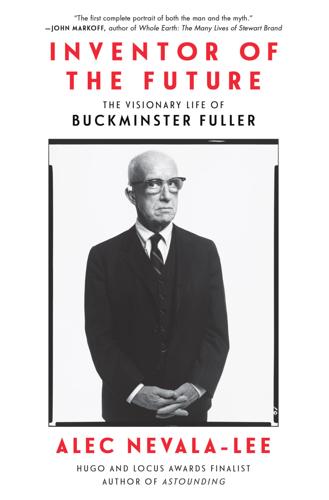
Inventor of the Future: The Visionary Life of Buckminster Fuller
by
Alec Nevala-Lee
Published 1 Aug 2022
“at the outset”: RBF to Dale Klaus, February 9, 1970, quoted in SD, xxxiii. USCO, an experimental collective: Stewart Brand interview, The Tim Ferriss Show, February 3, 2018, https://tim.blog/2018/02/03/the-tim-ferriss-show-transcripts-stewart-brand (accessed January 2021). “an Indian freak”: Tom Wolfe, The Electric Kool-Aid Acid Test (New York: Bantam Books, 1969), 10. “I was bored”: Stewart Brand interview, The Tim Ferriss Show, February 3, 2018. “Why haven’t we seen”: Ibid. only one to reply: Stewart Brand interview with Massive Change Radio, https://www.yumpu.com/en/document/view/5742799/bruce-mau-design-stewart-brand-interview-25-massive-change (accessed January 2021).
…
only one to reply: Stewart Brand interview with Massive Change Radio, https://www.yumpu.com/en/document/view/5742799/bruce-mau-design-stewart-brand-interview-25-massive-change (accessed January 2021). “powerful tools technology”: Stewart Brand to RBF, November 21, 1967, quoted in Wong, 458. “Oh, yes, I wrote to that guy”: Stewart Brand interview with Massive Change Radio. Fuller advised him: Stewart Brand to RBF, January 3, 1968, B152-F5, and April 10, 1968, B172-F6. “You’re right”: Peter Collier, “Drop-Out’s How-To,” New York Times Book Review, March 7, 1971, 8. “The program is operational”: Stewart Brand to RBF, January 3, 1968, B152-F5. RBF had previously received a report from Don Moore that described Engelbart’s research on using computers to navigate “conceptual space” (Moore to RBF, January 22, 1965, B134-F5).
…
“Amid the fever I was in”: Brand, Last Whole Earth Catalog, 439. “Techniques and tools”: Ibid. “I dunno, Whole Earth Catalog”: Ibid. “with manufacturers”: Stewart Brand to RBF, April 10, 1968, quoted in Wong, 454. “We are as gods”: Stewart Brand, Whole Earth Catalog, Fall 1968, 3. “access to tools”: John Markoff, Whole Earth: The Many Lives of Stewart Brand (New York: Penguin, 2022), 138. “People who beef about Fuller”: Stewart Brand, Whole Earth Catalog, Fall 1968, 3. “one of the most original”: Ibid. “baling wire hippies”: J. D. Smith, quoted in Andrew G. Kirk, Counterculture Green: The Whole Earth Catalog and American Environmentalism (Lawrence: University Press of Kansas, 2007), 76.

Whole Earth Discipline: An Ecopragmatist Manifesto
by
Stewart Brand
Published 15 Mar 2009
Fortunately Brand’s wonderful book will not be ignored because it makes its statements in a highly direct controversial fashion.” —David Tribe, Biofortified.org “I adored this book. Even the few parts I disagreed with. Stewart Brand’s mind is exhilaratingly clear, rational, and passionate. His pen is, too.” —Matt Ridley, author of Genome and Nature Via Nuture “On the first page of this landmark book, the lateral-thinking, San Francisco tugboat-based ecologist Stewart Brand sums up his philosophy in a single line: ‘We are as gods and HAVE to get good at it.’ It’s a staggeringly arrogant statement, guaranteed to offend everyone from religious fundamentalists to those at the mystical, misty-eyed end of the green spectrum, but after reading Whole Earth Discipline, you’ll find it difficult to disagree.”
…
Whole Earth Discipline contains every reason why they should: three hundred pages of data, anecdotes, and arguments that illustrate, in withering detail, the scale of ecological problems we face today, and the utter inability of faith-based environmentalism to fix them.” —Maywa Montenegro, Seed “Yet again, in a single book Stewart Brand provides us a clear catalog of everything important on Earth.” —Alan Weisman, author of The World Without Us “In these pages, Stewart Brand lays out a mind-blowing vision for the planet’s salvation: migration to the cities, power generated by mini-nuclear reactors, healthier crops through genetic engineering. This may well be the most important book I’ll read this year.
…
—Peter Hartlaub, San Francisco Chronicle “Cities are green. Nuclear energy is green. Genetic engineering is green. Don’t believe it? Read the book and be convinced. Stewart Brand’s pragmatism could save the planet and us.” —Sir Gordon Conway, author of The Doubly Green Revolution “This year’s must-read for anyone who considers himself an open-minded green.” —Mark Lynas, author of Six Degrees, in The New Statesman PENGUIN BOOKS WHOLE EARTH DISCIPLINE Stewart Brand trained originally as an ecologist. His legendary Whole Earth Catalog (1968-1985) won the National Book Award in 1972. Brand, whose previous books include The Media Lab, How Buildings Learn, and The Clock of the Long Now, is the president and cofounder of The Long Now Foundation and cofounder of Global Business Network.
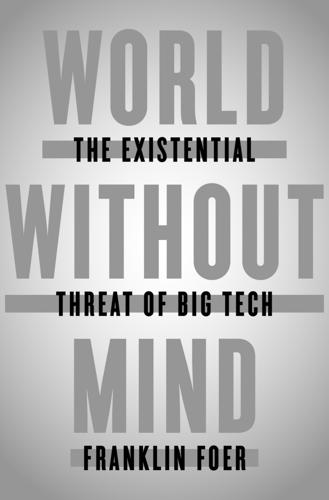
World Without Mind: The Existential Threat of Big Tech
by
Franklin Foer
Published 31 Aug 2017
“[The catalog] helped create the conditions”: Turner, 73. “he was the guy who was giving us the early warning system”: Katherine Fulton, “How Stewart Brand Learns,” Los Angeles Times, October 30, 1994. “Those magnificent men with their flying machines”: Stewart Brand, “Spacewar: Fanatic Life and Symbolic Death Among the Computer Bums,” Rolling Stone, December 7, 1972. “When computers become available to everybody”: Brand, “Spacewar.” injected an important new phrase into the lexicon: Stewart Brand, II Cybernetic Frontiers (Random House, 1974). “Ever since there were two organisms”: Turner, 121. “Today, after more than a century”: Marshall McLuhan, Understanding Media (McGraw-Hill, 1964), 3.
…
Their dangerous dream has such a firm footing because it has such a long pedigree. Silicon Valley’s craving for monopoly stretches back, strangely enough, to the counterculture of the 1960s, where it emerged from the most lyrical of visions of peace and love. More specifically, it begins with a crown prince of hippiedom. • • • STEWART BRAND WOULD DRIVE his truck down the San Francisco Midpeninsula, through the dissipating fog of the early sixties. The sticker on his bumper protested, “Custer Died for Your Sins.” On his exposed chest rested a string of beads. Citizens of the acid scene, of which Brand was a leading light, thought of him as an “Indian freak.”
…
In Silicon Valley, this naive belief has been handed down through ages. Even the most hard-nosed corporations have internalized it. What began as a stirring dream—humanity tied together into a single transcendent network—has become the basis for monopoly. In the hands of Facebook and Google, Brand’s vision is a pretext for domination. • • • BEFORE STEWART BRAND COULD REMAKE technology, he needed to mold the sixties. It is a story that begins, as many tales of the prehippie years do, a bit aimlessly. After boarding at Exeter and graduating from Stanford, Brand enlisted in the army. His experience in the barracks ended unhappily, but it also supplied him with a measure of organizational acumen and managerial chops.
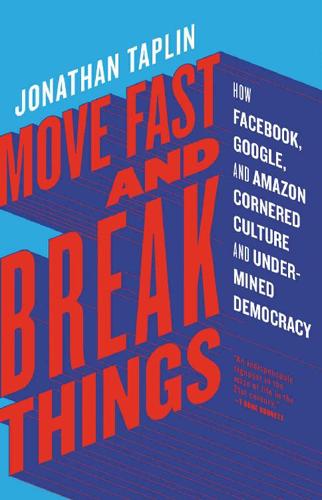
Move Fast and Break Things: How Facebook, Google, and Amazon Cornered Culture and Undermined Democracy
by
Jonathan Taplin
Published 17 Apr 2017
Yet Engelbart’s vision of the computing future was different from today’s reality. In the run-up to the demonstration, Bill English had enlisted the help of Whole Earth Catalog publisher Stewart Brand, who had produced the Acid Tests with Ken Kesey two years earlier. Engelbart felt that Brand might help make his show into a multimedia event. Kesey and Brand’s LSD festival had forever cemented San Francisco’s link to what Fred Turner in his book From Counterculture to Cyberculture: Stewart Brand, the Whole Earth Network, and the Rise of Digital Utopianism describes as the New Communalists. Engelbart himself had taken acid twice under the supervision of a Stanford psychology PhD, Jim Fadiman, at the International Foundation for Advanced Study, the Bay Area research hub for academic LSD studies, which were legal until 1967.
…
The next year Engelbart took a team from the Stanford Research Institute to the Lama Foundation commune, north of Taos, New Mexico. It was Stewart Brand who suggested that Lama might provide an atmosphere, as John Markoff wrote, “to create a meeting of the minds between the NLS researchers and the counterculture community animated by the Whole Earth Catalog.” The land outside Taos was full of alternative communities—Morningstar East, Reality Construction Company, the Hog Farm, New Buffalo, and the Family, to name a few. Steve Durkee and Steve Baer, both disciples of Buckminster Fuller and close friends of Stewart Brand, ran Lama, and the architecture of the buildings hewed closely to Bucky Fuller’s geodesic dome design.
…
The beginnings of the technical and social revolution that Martin Luther King referenced in his 1968 sermon at the National Cathedral were under way even as he was speaking. The revolution began in the moral precepts of the counterculture: decentralize control and harmonize people. The earliest networks—like the Whole Earth ’Lectronic Link (WELL), organized by Stewart Brand, the founder of The Whole Earth Catalog—grew directly out of 1960s counterculture. Brand had helped novelist Ken Kesey organize the Acid Tests—epic be-ins where thousands of hippies ingested LSD and danced to the music of a new band, the Grateful Dead. Steve Jobs, founder of Apple Computer, Inc., dropped acid as well.

Death Glitch: How Techno-Solutionism Fails Us in This Life and Beyond
by
Tamara Kneese
Published 14 Aug 2023
She also anticipated the historical importance of his public illness and death: “Looking back, I realize now that I had watched history happen in the ether through a community of pioneers who were planting the seeds for what social networking would become.”6 Invoking “pioneers” and “seeds,” she mirrors the language used by other techie visionaries—such as Stewart Brand from the WELL and John Perry Barlow from the Electronic Frontier Foundation—tying both Mandel and herself to a rarified group of early adopters of nascent technologies. In the World Wide Web’s heady first days, Mandel’s online death was unusual. But with the rise of personal blogs and social media posts, nontechies can now easily share their illness trajectories with online audiences.
…
Journalist Katie Hafner wrote about Mandel in Wired, and after his death the New York Times published a story about him using transcripts from the WELL.25 Hafner eventually published a book, The Well: A Story of Love, Death and Real Life in the Seminal Online Community, where she describes the founding and history of the WELL through Mandel’s public death. Founded by Larry Brilliant and Stewart Brand in Sausalito in 1985, the WELL was a uniquely Northern California phenomenon. Mandel lived in Mountain View, worked as a futurist at SRI International, and was deeply embedded in Silicon Valley life. Hafner was encouraged to write this story by WELL members, including Rheingold. As the use of the word “seminal” in the title might indicate, the story is mostly told through the lens of male founders and innovators, from Brilliant and Brand to Mandel and Rheingold, and is not especially critical.
…
Here I examine the disconnect between the fantasies that individual technologists might have about their digital afterlives versus the perpetual upkeep demanded by brittle smart technologies. This chapter focuses on the technological developments connecting digital remains to physical things in the world. Rather than viewing technology through short-term gains, technologists associated with projects like Stewart Brand’s San Francisco–based Long Now Foundation are crafting long-term visions of the future, integrating hardware and other physical objects with aggregated data. I mark the repercussions of technologists’ desire to network bodies, things, and environments, showing how their plans for posterity are often at odds with the infrastructures and labor required to maintain smartness over time.
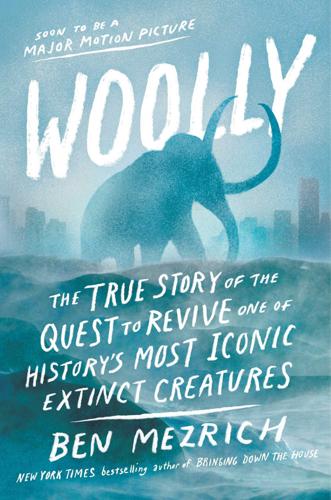
Woolly: The True Story of the Quest to Revive History's Most Iconic Extinct Creature
by
Ben Mezrich
Published 3 Jul 2017
While Church stood by the columns that were holding back the bull elephant, Brand wandered over to an odd-looking device that reached almost to his shoulders. As he was running his hands over its curved plastic, he realized it was designed to look like a female elephant’s rear end. “Uh, Stewart,” Brand heard Church mumble, but he was too busy trying to figure out the device. “Hold on a second. This is quite remarkable.” “Stewart.” “Ah,” Brand continued. “I think this is an insemination machine. The male elephant goes in here . . .” “Stewart!” Brand turned around and saw that the bull elephant had gone completely ballistic—his eyes rolled back, his feet pounding at the metal pins. He wanted to stomp Brand into dust.
…
He was momentarily by himself; Ting and Marie had fanned out in opposite directions as soon as they’d arrived, wanting to check out the natural streams and nearby little bodies of water that spotted the gentle slope leading up toward the two-story guest house. But Church was more interested in the pair of figures sitting in deck chairs on the unique building’s front porch. One of them, Stewart Brand, rose from his chair with a warm smile on his triangular face. Animated and angular, like an amiable praying mantis, long and trim, even at seventy-three, he had an overflowing level of kinetic energy. He was wearing a gray safari shirt covered in pockets and had a hunting knife strapped to his waist.
…
Now they needed something much bigger, something much more ambitious to capture the world’s attention. As Zimov had said at the end of his presentation, “To fight the forest, instead of Mammoths we now use military tanks. Unfortunately, they don’t create dung.” The rest of the scientists had laughed, while Church exchanged looks with Stewart Brand and Ryan Phelan. The Russian scientist had just given them their reason to resurrect their species. CHAPTER FOURTEEN Excerpted from “The Wild Field Manifesto” by Sergey Zimov For hundreds of millions of years, terrestrial ecosystems were an arena of struggle between plants and herbivores.
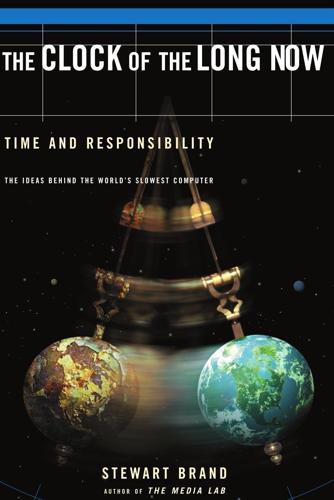
Clock of the Long Now
by
Stewart Brand
Published 1 Jan 1999
“Time & Bits: Managing Digital Continuity” was sponsored by the Getty Conservation Institute, the Getty Information Institute, and The Long Now Foundation. Participants were Peter Lyman, Howard Besser, Danny Hillis, Brewster Kahle, Jaron Lanier, Doug Carlston, Kevin Kelly, Brian Eno, Stewart Brand, Margaret MacLean, and Ben Davis. A book of the proceedings is available from The Getty Center, 1200 Getty Center Drive, Los Angeles, CA 90049. 3 Just to try out the 10,000-year perspective, the remainder of this book employs the five-figure year dates proposed in the previous chapter. OTHER WORKS BY STEWART BRAND: Whole Earth Catalog Two Cybernetic Frontiers The Media Lab: Inventing the Future at MIT How Buildings Learn: What Happens After They’re Built
…
Published by Basic Books, A Member of the Perseus Books Group Copyright © 1999 by Stewart Brand All rights reserved. No part of this book may be reproduced in any manner whatsoever without written permission except in the case of brief quotations embodied in critical articles and reviews. For information, address Basic Books, 387 Park Avenue South, New York, NY 10016. A CIP catalog record for this book is available from the Library of Congress. eISBN : 978-0-786-72292-1 Table of Contents Title Page Copyright Page NOTIONAL CLOCK KAIROS AND CHRONOS MOORE’S WALL THE SINGULARITY RUSH THE LONG NOW THE ORDER OF CIVILIZATION OLD-TIME RELIGION CLOCK/LIBRARY BEN IS BIG THE WORLD’S SLOWEST COMPUTER BURNING LIBRARIES DEAD HAND ENDING THE DIGITAL DARK AGE 10,000-YEAR LIBRARY TRAGIC OPTIMISM FUTURISMO USES OF THE FUTURE USES OF THE PAST REFRAMING THE PROBLEMS SLOW SCIENCE THE LONG VIEW GENERATIONS SUSTAINED ENDEAVOR THE INFINITE GAME APPENDIX: ENGAGING CLOCK/LIBRARY AFTERWORD: JANUARY 02000 Notes Recommended Bibliography Acknowledgments Index Other Works by Stewart Brand NOTIONAL CLOCK Time and Responsibility.
…
eISBN : 978-0-786-72292-1 Table of Contents Title Page Copyright Page NOTIONAL CLOCK KAIROS AND CHRONOS MOORE’S WALL THE SINGULARITY RUSH THE LONG NOW THE ORDER OF CIVILIZATION OLD-TIME RELIGION CLOCK/LIBRARY BEN IS BIG THE WORLD’S SLOWEST COMPUTER BURNING LIBRARIES DEAD HAND ENDING THE DIGITAL DARK AGE 10,000-YEAR LIBRARY TRAGIC OPTIMISM FUTURISMO USES OF THE FUTURE USES OF THE PAST REFRAMING THE PROBLEMS SLOW SCIENCE THE LONG VIEW GENERATIONS SUSTAINED ENDEAVOR THE INFINITE GAME APPENDIX: ENGAGING CLOCK/LIBRARY AFTERWORD: JANUARY 02000 Notes Recommended Bibliography Acknowledgments Index Other Works by Stewart Brand NOTIONAL CLOCK Time and Responsibility. What a prime subject for vapid truisms and gaseous generalities adding up to the world’s most boring sermon. To spare us both, let me tie this discussion to a specific device, specific responsibility mechanisms, and specific problems and cases. The main problems might be stated, How do we make long-term thinking automatic and common instead of difficult and rare?

Protocol: how control exists after decentralization
by
Alexander R. Galloway
Published 1 Apr 2004
Thus, it makes sense that any forces desiring to resist distributed power should themselves be adept at distributed strategies. I discuss this idea in what follows. 30. “The Victor Spoiled,” 2600 (Winter 1998–1999), p. 4, emphasis mine. 31. Stewart Brand, “SPACEWAR: Fanatic Life and Symbolic Death Among the Computer Bums,” Rolling Stone, December 7, 1972, p. 51. 32. Stewart Brand, The Media Lab: Inventing the Future at MIT (New York: Viking, 1987), p. 264. Chapter 5 160 CAE proposes a “nomadic” (rather than sedentary) model for resistance. The nomadic model “seeks to undermine the symbolic order with more ephemeral, process-oriented methods,”33 it writes.
…
The anti-entropic position states, simply, that life is precisely that force that resists entropy. Entropy is the physical principle derived from thermodynamics that states that, in any given system, things will tend to “fall apart” or tend toward disorder. Moreover, entropy means that 72. This might also be dubbed the “computers don’t know shit” ideology. See Stewart Brand, “SPACEWAR: Fanatic Life and Symbolic Death among the Computer Bums,” Rolling Stone, December 7, 1972, p. 58. 73. Leopoldseder, “Forward,” p. 6. 74. Jonathan Crary and Sanford Kwinter, “Forward,” Incorporations (New York: Zone, 1992), p. 13. 75. Crary and Kwinter, “Forward,” p. 13. Power 103 information, defined as any nonrandom measurement or quality, has a tendency to be forgotten.
…
Like the hacker’s access to computers, protocol is unlimited and total. Like the hacker’s mistrust of authority, protocol also seeks to eliminate arbitrary 9. Steven Levy, Hackers: Heroes of the Computer Revolution (New York: Anchor Press/Doubleday, 1984), p. ix. 10. This dictum is attributed to Stewart Brand, who wrote that “[o]n the one hand information wants to be expensive, because it’s so valuable. The right information in the right place just changes your life. On the other hand, information wants to be free, because the cost of getting it out is getting lower and lower all the time. So you have these two fighting against each other.”
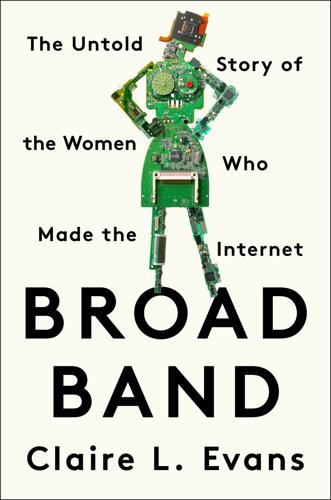
Broad Band: The Untold Story of the Women Who Made the Internet
by
Claire L. Evans
Published 6 Mar 2018
“My brother came to live with me”: Ibid. “one of the great hustles of modern times”: Stewart Brand, “SPACEWAR: Fanatic Life and Symbolic Death Among the Computer Bums,” Rolling Stone, December 7, 1972. “She had this way of sort of screwing up”: Felsenstein, interview with the author, March 7, 2017. “Pamela was about the only person”: Jane R. Speiser, Roadmap of the Promised Land (Turin: Edizioni Angolo Manzoni, 2006), 45. “If people needed something”: Hardt-English, interview with the author, February 6, 2017. “half or more of computer science is heads”: Stewart Brand, II Cybernetic Frontiers (New York: Random House, 1974), 49–50.
…
Meaning is our business; the computer is a mirror that reflects us back to ourselves, and whoever controls it molds the world in their image. This might be why the counterculture’s magazine of record, the Whole Earth Catalog, always printed the same coda on the cover of every issue: Access to tools. The year Resource One installed its computer, the Whole Earth Catalogue’s Stewart Brand pronounced that “half or more of computer science is heads.” Brand was inspired by the Bay Area’s constellation of forward-thinking research labs, the hacker groups gathering to play games after hours in university basements, and the scene developing at Resource One, and he wrote about computer science as the realm of mystics, sages, weirdos, or as he put it, “magnificent men with their flying machines, scouting a leading edge of technology.”
…
Although the Social Services Referral Directory has not been included in the prevailing mythologies about San Francisco as a place where hackers and hippies came together to create the future, it mattered in more practical ways. The directory connected an unseen and pointedly nontechnological segment of the population—social workers and families in need—until well into the twenty-first century. It’s not clear that the hackers, misfits, and “magnificent men” about which Stewart Brand wrote so enthusiastically would have come up with, or actively maintained, anything quite like the Social Services Referral Directory, which was an unglamorous, drudgery-intensive community service. Since its interface was a three-ring binder rather than a Teletype terminal, its true nature as a digital object remained invisible to all but those who maintained it, although the database was printed out only for the benefit of those without “access to tools.”

Tripping on Utopia: Margaret Mead, the Cold War, and the Troubled Birth of Psychedelic Science
by
Benjamin Breen
Published 16 Jan 2024
In a commencement address at Stanford, Apple cofounder Steve Jobs remembered the series, created by Stewart Brand, as “sort of like Google in paperback form, 35 years before Google came along: it was idealistic, and overflowing with neat tools and great notions.” Among those tools were DIY sensory deprivation tank kits, books explaining how to manufacture LSD, home birth manuals, and rudimentary personal computers. Taken together, the Whole Earth Catalog defined a cultural moment of “off the grid” communal living, concern for planetary ecology, and a melding of spirituality and science. The catalogs were also shot through with adoration for Gregory Bateson, whose ideas Stewart Brand took every opportunity to promote and praise.
…
The event had been organized by one of Bateson’s former colleagues from the Mental Research Institute. Frank Barron was also there, having fled the Leary circle by this time, but still a true believer in the transformative power of psychedelics. Richard Alpert was there, too. And watching from the audience was one of Bateson’s former students at Stanford: Stewart Brand, a filmographer, writer, and technology enthusiast who would become an important figure in both the hippie movement and the digital revolution of the 1970s and 1980s. Bateson’s presence at the conference despite his decision to transition away from psychedelic psychiatry was emblematic of his larger role in the history of the field.
…
Stateside, however, the vivid diversity of global psychedelic culture was becoming monochrome in a distinctly midcentury American way. Mead had long called for a truly diverse and broad-based global cultural change. Yet while the psychedelic counterculture embraced “non-Western spirituality,” it did so in a superficial and romanticized way that did not truly challenge Western cultural norms. Tom Wolfe memorably described Stewart Brand (who drives the Merry Pranksters’ bus through the opening pages of The Electric Kool-Aid Acid Test) as wearing “just an Indian bead necktie on bare skin and a white butcher’s coat with medals from the King of Sweden on it.” Underneath the costumes, however, were bodies that were almost invariably American, white, middle class, and male.
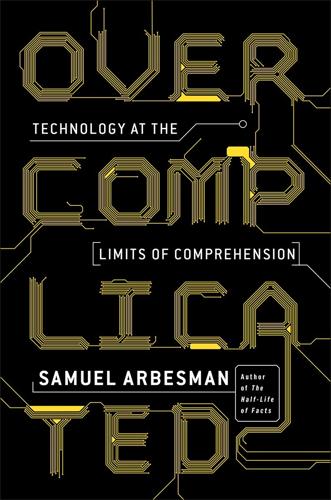
Overcomplicated: Technology at the Limits of Comprehension
by
Samuel Arbesman
Published 18 Jul 2016
(Boston, MA: Addison-Wesley, 1995; orig. pub. 1975), 53. It seems that this quote is a Latin proverb, misattributed to Ovid. a process of accretion: This term is also used in Homer-Dixon, The Ingenuity Gap. “Typically, outdated legacy systems”: Stewart Brand, The Clock of the Long Now: Time and Responsibility (New York: Basic Books, 1999), 85. only gingerly poke it: From an essay by Stewart Brand: “Beyond the evanescence of data formats and digital storage media lies a deeper problem. Computer systems of large scale are at the core of driving corporations, public institutions, and indeed whole sectors of the economy.
…
one way that new drugs are created: Dan Hurley, “Why Are So Few Blockbuster Drugs Invented Today?” The New York Times Magazine, November 13, 2014, http://www.nytimes.com/2014/11/16/magazine/why-are-there-so-few-new-drugs-invented-today.html. This point about what we can learn from testing pharmaceuticals was made to me by Edward Jung. Stewart Brand noted about legacy systems: Stewart Brand, The Clock of the Long Now: Time and Responsibility (New York: Basic Books, 1999), 85. a partial meltdown at the Three Mile Island plant: Peter G. Neumann, Computer-Related Risks (New York: ACM Press, 1995), 122. elaborates on the structure of the pantheon: Neal Stephenson, Cryptonomicon (New York: Avon Books, 1999; repr. 2002), 802–3.
…
Many pieces of scientific software exist as legacy tools, often written in Fortran, a powerful but archaic programming language. Given the speed with which technology moves, reading Fortran is almost the computational equivalent of being well-versed in Middle English. To quote the Whole Earth Catalog creator Stewart Brand in The Clock of the Long Now: “Typically, outdated legacy systems make themselves so essential over the years that no one can contemplate the prolonged trauma of replacing them, and they cannot be fixed completely because the problems are too complexly embedded and there is no one left who understands the whole system.”
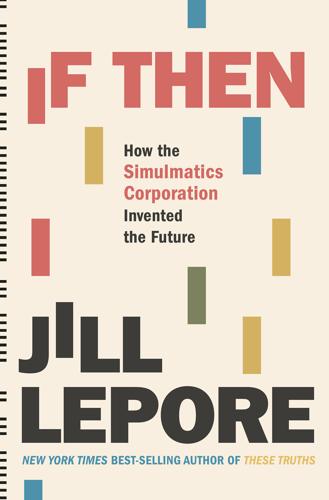
If Then: How Simulmatics Corporation Invented the Future
by
Jill Lepore
Published 14 Sep 2020
Popkin never knew quite why he’d been the subject of so much grand jury attention, and historians have never been able to figure it out, either.37 The 1972 election obscured a turning point in the history of technology: the beginning of personal computing and the unveiling of what would become the Internet. “Ready or not, computers are coming to the people,” Stewart Brand predicted in Rolling Stone in December 1972.38 Woodward and Bernstein broke the Watergate story. Stewart Brand broke the story of the coming computer revolution. Hardly anyone else noticed, at least not in 1972, a year when all eyes turned to what had happened in the Watergate Hotel, but very few paid attention to what had gone on in another Washington hotel, the Hilton.
…
Brand as quoted in Lloyd S. Etheredge, “What’s Next? The Intellectual Legacy of Ithiel de Sola Pool,” in IP, Humane Politics and Methods of Inquiry, ed. Lloyd S. Etheredge (New Brunswick, NJ: Transaction Publishers, 2000), 301–16. Stewart Brand, The Media Lab: Inventing the Future at M.I.T. (New York: Viking, 1987), 18, 44, 214–19, 253, 267. Ibid., 33. Ibid., 183–84, 222–32. Stewart Brand, “We Owe It All to the Hippies,” Time, March 1, 1995. Esther Dyson, George Gilder, George Keyworth, and Alvin Toffler, Cyberspace and the American Dream: A Magna Carta for the Knowledge Age (Progress and Freedom Foundation, 1994).
…
“If man is to continue as a successful pattern-complex function in universal evolution,” Fuller wrote in 1960, “it will be because the next decades will have witnessed the artist-scientist’s spontaneous seizure of the prime design responsibility and his successful conversion of the total capability of tool-augmented man from killingry to advanced livingry.” For Stewart Brand, an LSD advocate and one of Ken Kesey’s Merry Pranksters, the commune answered the atomization of Cold War America. But communal living required tools, a taking back of the machine. In 1968, from his base in Menlo Park, California, Brand launched the Whole Earth Catalog, with the motto “access to tools.”

Power Hungry: The Myths of "Green" Energy and the Real Fuels of the Future
by
Robert Bryce
Published 26 Apr 2011
pid=20601072&sid=aR1MVERYEgAs. 31 This is commonly called the Price-Anderson Act. For more, see Wikipedia, “Price Anderson Nuclear Industries Indemnity Act,” http://en.wikipedia.org/wiki/Price-Anderson_Nuclear_Industries_Indemnity_Act. 32 David Bradish, “Amory Lovins vs. Stewart Brand—Part Four,” NEI Nuclear Notes, November 16, 2009, http://neinuclearnotes.blogspot.com/2009/11/amory-lovins-vs-stewart-brand-part-four.html#links. 33 Note that the total in this report includes petroleum liquids. The EIA’s official statistics on electricity generation show that in 2007, natural gas total generation was 896.5 billion kilowatt-hours. See Energy Information Administration, “Net Generation by Energy Source by Type of Producer,” http://www.eia.doe.gov/cneaf/electricity/epa/epat1p1.html. 34 Recall that wind gets $23.37 per megawatt-hour, and gas gets $0.25.
…
Renewable energy is dandy, but it simply cannot provide the gargantuan quantities of always-available power that we demand at prices we can afford. The production of electricity from the wind and the sun will continue growing rapidly in the years ahead. But those sources are incurably intermittent. As Stewart Brand, the environmental activist and creator of the Whole Earth Catalog, put it during a lecture in mid-2009, “wind and solar can’t help because we don’t have a way to store that energy.”4 Given our inability to store the energy that comes from wind and solar, those sources will remain bit players in our overall energy mix for the foreseeable future.
…
They allow us to enjoy mountains, plains, and deserts without having our views obstructed or disturbed by spinning wind turbines, sprawling solar arrays, towering transmission lines, or miles of monocultured crops. As the architect Witold Rybczynski wrote in Atlantic Monthly in an essay expounding the environmental benefits of cities, “density is green.”27 Rybczynski’s endorsement of cities echoes that of Stewart Brand, who, in his latest book, the Whole Earth Discipline, argues that cities, and even densely populated slums, provide a path out of poverty for millions of people. Brand says that “cities are probably the greenest things that humans do.”28 Embracing the density of cities make sense. And to properly fuel them, we need energy sources with the highest possible densities.
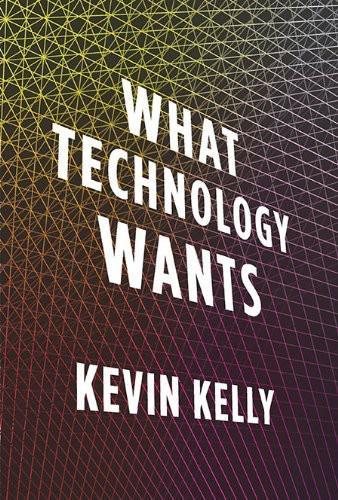
What Technology Wants
by
Kevin Kelly
Published 14 Jul 2010
New York: Routledge. 83 “this serves all the purposes of the family”: Ibid., p. 177. 83 “bona fide legal title to their land”: Ibid., p. 198. 83 “half a dozen tents or shanties”: Ibid., p. 197. 84 “Cities are wealth creators”: Stewart Brand. (2009) Whole Earth Discipline. New York: Viking, p. 25. 84 “nearly 9 in 10 new patented innovations”: Ibid., p. 32. 84 “GNP growth occurs in cities”: Ibid., p. 31. 84 “in the city at least six years”: Mike Davis. (2006) Planet of Slums. London: Verso, p. 36. 85 but 94 percent of their kids were literate: Stewart Brand. (2009) Whole Earth Discipline. New York: Viking, pp. 42-43. 85 “Discomfort is an investment”: Ibid., p. 36. 85 “get education for her children”: Ibid., p. 26. 86 “more options for their future”: Donovan Webster. (2005) “Empty Quarter.”
…
The city as a whole is a wonderful technological invention that concentrates the flow of energy and minds into computer chip-like density. In a relatively small footprint, a city not only provides living quarters and occupations in a minimum of space, but it also generates a maximum of ideas and inventions. Stewart Brand notes in the “City Planet” chapter of his book Whole Earth Discipline, “Cities are wealth creators; they have always been.” He quotes urban theorist Richard Florida, who claims that forty of the largest megacities in the world, home to 18 percent of the world’s population, “produce two-thirds of global economic output and nearly 9 in 10 new patented innovations.”
…
Then he answers: “So that someday the eldest son can buy two rooms in Mira Road, at the northern edges of the city. And the younger one can move beyond that, to New Jersey. Discomfort is an investment.” Then Mehta continues: “For the young person in an Indian village, the call of Mumbai isn’t just about money. It’s also about freedom.” Stewart Brand recounts this summation of the magnetic pull of cities by activist Kavita Ramdas: “In the village, all there is for a woman is to obey her husband and relatives, pound millet, and sing. If she moves to town, she can get a job, start a business, and get education for her children.” The Bedouin of Arabia were once seemingly the freest people on Earth, roaming the great Empty Quarter at will, under a tent of stars and no one’s thumb.

The Electric Kool-Aid Acid Test
by
Tom Wolfe
Published 1 Jan 1968
And, oh yeah, there's a long-barreled Colt .45 revolver in her hand, only nobody on the street can tell it's a cap pistol as she pegs away, kheeew, kheeew, at the erupting marshmallow faces like Debra Paget in ... in ... —Kesey's coming out of jail! Two more things they are looking at out there are a sign on the rear bumper reading "Custer Died for Your Sins" and, at the wheel, Lois's enamorado Stewart Brand, a thin blond guy with a blazing disk on his forehead too, and a whole necktie made of Indian beads. No shirt, however, just an Indian bead necktie on bare skin and a white butcher's coat with medals from the King of Sweden on it. Here comes a beautiful one, attaché case and all, the day-is-done resentful look and the ... shoes—how they shine!
…
But somehow a blue silk blazer and a big tie with clowns on it and ... a ... pair of shiny lowcut black shoes don't set them all to doing the Varsity Rag in the head world in San Francisco. Lois picks off the marshmallows one by one; Cool Breeze ascends into the innards of his gnome's hat; Black Maria, a Scorpio herself, rummages through the Zodiac; Stewart Brand winds it through the streets; paillettes explode—and this is nothing special, just the usual, the usual in the head world of San Francisco, just a little routine messing up the minds of the citizenry en route, nothing more than psyche food for beautiful people, while giving some guy from New York a lift to the Warehouse to wait for the Chief, Ken Kesey, who is getting out of jail.
…
Thousands of kids were moving into San Francisco for a life based on LSD and the psychedelic thing. Thing was the major abstract word in Haight-Ashbury. It could mean anything, isms, life styles, habits, leanings, causes, sexual organs; thing and freak; freak referred to styles and obsessions, as in "Stewart Brand is an Indian freak" or "the zodiac—that's her freak," or just to heads in costume. It wasn't a negative word. Anyway, just a couple of weeks before, the heads had held their first big "be-in" in Golden Gate Park, at the foot of the hill leading up into Haight-Ashbury, in mock observance of the day LSD became illegal in California.

Artificial Unintelligence: How Computers Misunderstand the World
by
Meredith Broussard
Published 19 Apr 2018
We saw that our parents had gone straight, and communes clearly weren’t the answer—but there was this entire new, uncharted world of “cyberspace” that was ours for the making. The connection wasn’t just metaphorical. The emerging Internet culture of the time was heavily influenced by the New Communalism movement of the 1960s, as Fred Turner writes in From Counterculture to Cyberculture, a history of digital utopianism.1 Stewart Brand, the founder of the Whole Earth Catalog, laid out the connections between the counterculture and the personal computer revolution in an essay called “We Owe It All to the Hippies,” in a 1995 special issue of Time magazine called “Welcome to Cyberspace.”2 The early Internet was deeply groovy. By my junior year, I could make a web page or spin up a web server or write code in six different programming languages.
…
Only a technochauvinist would imagine that a tacocopter is better than the human-based system that we have now. If you ask Siri if tacocopters are a good idea, she will look up that phrase for you online. What you’ll get are a bunch of news articles about the tacocopter, including one from Wired magazine (more on that publication and one of its founders, Stewart Brand, in chapter 6) that debunks the concept more fully than I have done here. The founder admits it’s logistically impossible, not least because of FAA regulations on the commercial use of unmanned aerial vehicles. But, she claims, keeping the vision of the idea alive is still important. “Like what cyberpunk did for the internet,” she says.
…
It’s really very bizarre, but this was a self-energizing community. These hackers had their own language. They could get things done in three days that would take a month. If somebody appeared who had the talent, the magic touch, they would fit in.” The TMRC and Minsky’s lab were later immortalized in Stewart Brand’s The Media Lab and Steven Levy’s Hackers: The Heroes of the Computer Revolution, in addition to many other publications.6 The hacker ethic is also what inspired Mark Zuckerberg’s first Facebook motto: “Move fast and break things.” Minsky was part of Zuckerberg’s curriculum at Harvard. Minsky and a collaborator, John McCarthy, organized the very first conference on artificial intelligence, at the Dartmouth Math Department in 1956.

The Code: Silicon Valley and the Remaking of America
by
Margaret O'Mara
Published 8 Jul 2019
Lynn Conway, “Reminiscences of the VLSI Revolution,” IEEE Solid-State Circuits Magazine 4, no. 4 (Fall 2012): 12. Immediately prior to PARC, Conway had worked briefly for Ed Zschau at System Industries. 7. Stewart Brand, “Spacewar: Fanatic Life and Symbolic Death Among the Computer Bums,” Rolling Stone, December 7, 1972, 33–39; Fred Turner, From Counterculture to Cyberculture: Stewart Brand, the Whole Earth Network, and the Rise of Digital Utopianism (Chicago: The University of Chicago Press, 2006), 118. 8. A definitive profile of Taylor at PARC is found in Leslie Berlin, Troublemakers: Silicon Valley’s Coming of Age (New York: Simon & Schuster, 2017), 89–106. 9.
…
There was Bob Albrecht, an engineer who quit his corporate gig at supercomputer maker Control Data Corporation to join an educational nonprofit called the Portola Institute, a far-ranging collective operated on a shoestring. Portola spawned the bible of the techno-counterculture, the Whole Earth Catalog, created by artist, utopian, and “happening” impresario Stewart Brand. High-tech met hippiedom on the Catalog’s pages, which featured fringed buckskin jackets and camp stoves alongside scientific calculators. Its motto: “Access to Tools.”13 Albrecht’s project was the People’s Computer Company, started in 1972 as a walk-in storefront for computer training, accompanied by a loose and loopy newsletter “about having fun with computers.”
…
While Esalen had meditation and encounter sessions, Engelbart used computers to, as his friend Paul Saffo later put it, “create a new home for the mind.”3 Engelbart’s December 1968 demo had been a revelation and an inspiration to the clan of Bay Area programmers and visionaries who were thinking about computers as tools for work, education, and play. Dean Brown’s lab used Engelbart’s mouse to test how computers augmented student learning. The event also brought new converts to the movement, notably Stewart Brand, who had joined the demo team as a journeyman videocam operator, and left having been turned on to the power of networked computing. Brand and Albrecht’s collaboration, the Portola Institute, and the Whole Earth Catalog followed. The demo “quite literally branched the course of computing off the course it had been going for the previous ten years,” remembered Saffo, “and things have never quite been the same again.”4 THE IDEA FACTORY Not too long after, three thousand miles away from the robot-trolled halls of SRI, a group of corporate executives were sitting in a wood-paneled office, trying to figure out where the next generation of their company’s products would come from.
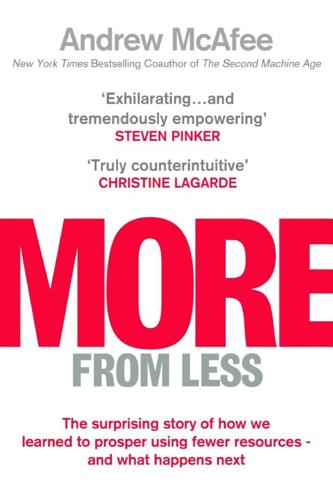
More From Less: The Surprising Story of How We Learned to Prosper Using Fewer Resources – and What Happens Next
by
Andrew McAfee
Published 30 Sep 2019
“is admired by a large class of persons as a sage”: “John Stuart Mill Quote,” LibQuotes, accessed March 25, 2019, https://libquotes.com/john-stuart-mill/quote/lbn8u1p. “When things are improving we know we are on the right track”: Bjørn Lomborg, The Skeptical Environmentalist: Measuring the Real State of the World (Cambridge, UK: Cambridge University Press, 2001), 5. Stewart Brand explained how implausible this is: Stewart Brand, “We Are Not Edging Up to a Mass Extinction,” Aeon, accessed March 25, 2019, https://aeon.co/essays/we-are-not-edging-up-to-a-mass-extinction. documented extinctions are relatively rare… in the past fifty years: Douglas J. McCauley, Malin L. Pinsky, Stephen R. Palumbi, James A.
…
Provide your email again so we can register this ebook and send you more of what you like to read. You will continue to receive exclusive offers in your inbox. To my mother, Nancy, who showed her children the world and taught them to love it We are as gods and might as well get good at it. —Stewart Brand, Whole Earth Catalog, 1968 INTRODUCTION README Listen! I will be honest with you, I do not offer the old smooth prizes, but offer rough new prizes —Walt Whitman, “Song of the Open Road,” 1856 We have finally learned how to tread more lightly on our planet. It’s about time. For just about all of human history our prosperity has been tightly coupled to our ability to take resources from the earth.
…
Before they went back to the land they had little experience in getting food from it, or in other forms of rural self-sufficiency. If this population was going to have any chance at success with homesteading they needed both knowledge and tools. The iconic writer, entrepreneur, and organizer Stewart Brand set out to provide both. In 1968 he christened a Dodge truck the Whole Earth Truck Store and took it on a “commune road trip” to educate back-to-the-landers about the best tools and techniques for sowing a field, drilling a well, and other important tasks. He also began producing a catalog, an early issue of which had Earthrise on its cover.
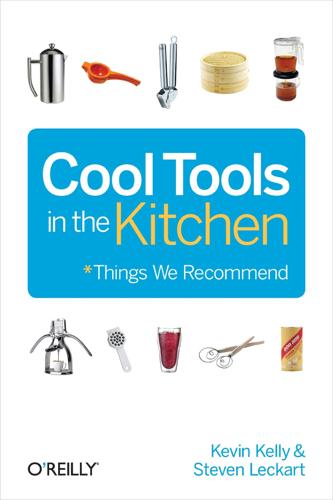
Cool Tools in the Kitchen
by
Kevin Kelly
and
Steven Leckart
Published 1 Dec 2011
The most effective sharpener I know is also the easiest to use—just carve straight down on the V of slender stones, a stroke on one side, a stroke on the other. The stones are triangular, so you can use either the flat side or the angle (which permits sharpening serrated blades such as bread knives). Spyderco has had the leading product for 20 years and now has a new improved “Sharpmaker” that looks pretty good. — Stewart Brand Spyderco Sharpmaker $54 Available from Amazon Inexpensive Great Chef Knife Forschner Victorinox Chef’s Knife A really great chef’s knife is insanely sharp, yet retains its edge easily and feels well-balanced and welcoming in your hand. These days, a decent high-grade chef’s knife can cost $100-$200.
…
However Cool Tools started even earlier, in 2000, as an email list run by Kevin Kelly, a founding editor of Wired Magazine and, prior to that, publisher and editor of the Whole Earth Catalog and its quarterly journal. The Whole Earth Catalog was a reader-written publication, with no ads, long before the web. Much of Cool Tools’ DNA stems from the passionate amateur’s spirit of the Catalog. As Catalog founder Stewart Brand wrote in in the first Whole Earth Catalog in 1969: An item is listed in the CATALOG if it is deemed: Useful as a tool, Relevant to independent education, High quality or low cost, Easily available by mail. We continue to uphold this standard and sense of community. It is that lineage which attracted me to Cool Tools in 2007, when I became its editor.
…
Roosma, Jay Allison, Jeff Jewell, Jeff Zimmerman, Jim Rubel, Jon Braun, Jon Margolis, Kelly Spitzer, Kurt Bollacker, Mark D. Esswein, Mark Frauenfelder, Marsh Gardiner, Matt Field, Michael Ham, Michael Krakovskiy, Michael Raab, Patrick Handley, Paul Knuth, Paul Saffo, Pen Duby, Raquel Maria Dillon, Rene, Robert Narracci, Sam Putman, Sessalee Hensley, Steve Allen, Steve Golden, Stewart Brand, Ted Boydston, Tim Plumley, Tom Lundin, Tom Streeter, Walter Susong III. In addition, there are a handful of other people who’ve had a hand in keeping Cool Tools alive and well: Oliver Hulland is the site’s current editor; Wayne Bremser masterfully implements all changes to our CMS (Movable Type).

The Rise and Fall of the Neoliberal Order: America and the World in the Free Market Era
by
Gary Gerstle
Published 14 Oct 2022
Bernstein, ed., Towards a New Past: Dissenting Essays in American History (New York: Pantheon, 1968), 263–288; Martin Sklar, The Corporate Reconstruction of American Capitalism, 1890–1916: The Market, the Law, and Politics (New York: Cambridge University Press, 1988). 67.On Kesey and the Merry Pranksters, see Tom Wolfe, The Electric Kool-Aid Acid Test (1968; New York: Bantam Books, 1969). 68.Stewart Brand, Whole Earth Catalog, 1st ed. (Menlo Park, CA: Portola Institute, 1968). 69.Anna Wiener, “The Complicated Legacy of Stewart Brand’s ‘Whole Earth Catalog,’ ” New Yorker, November 16, 2018, https://www.newyorker.com/news/letter-from-silicon-valley/the-complicated-legacy-of-stewart-brands-whole-earth-catalog, accessed April 10, 2021; Fred Turner, From Counterculture to Cyberculture: Stewart Brand, the Whole Earth Catalogue, and the Rise of Digital Utopianism (Chicago, IL: University of Chicago Press, 2006), 61–62; Margaret O’Mara, The Code: Silicon Valley and the Remaking of America (New York: Penguin Press, 2019).
…
This New Left revolt against excessive regulation is apparent in Paul Goodman’s cri de coeur, Growing Up Absurd; in the 1962 Port Huron Statement that defined the early goals of the New Left; in the rhetoric that Mario Savio used to frame the ambitions of Berkeley’s 1964 Free Speech movement, an early moment of New Left mass protest; in the early cybernetics movement that inspired the likes of Stewart Brand and Steve Jobs to associate the creation of the personal computer with the quest for individual freedom; and in the determination of Ralph Nader and his political allies to “free” the consumer from repressive corporate and government elites. Freeing the individual and his or her consciousness from the grip of large, stultifying institutions; privileging disruption over order; celebrating cosmopolitanism—and multiculturalism—and the unexpected sorts of mixing and hybridities that emerge under these regimes: All of these beliefs, each of which marinated for years in the political and culture milieux inspired by the New Left, furthered neoliberal aspirations and helped to make it into a hegemonic ideological force.9 Emphasizing the influence of classical liberalism on neoliberalism (and showing how the emancipatory elements of the former resurfaced in the latter) is one way in which this book’s account of neoliberalism is distinctive.
…
The resulting volume of essays became a foundational text for a new vector of interpretation, labeled the “corporate liberal school,” that would significantly influence the writing of American political history across the next quarter century.66 The third point of intersection would be slower to materialize but more consequential than the first two: one that began to take shape in Silicon Valley, where new forms of venture capitalism were linking up with young engineers imbued with a New Left, and sometimes New Age, belief in the liberating and transformative power of cyberspace. Steve Jobs’s career as a communard and “(apple) tree-hugging” hippie at Reed College is well known, an experience seen as a crucial prelude to his capacity to imagine a new world of freedom arising out of the personal computer. Stewart Brand, the man who invented the phrase “personal computer” and who is credited with helping generations of nerds and hackers to imagine the full potential—and freedom—of cyberspace, spent time in the 1960s alternating between two enthusiasms: first hanging out with Ken Kesey’s group of crazed “merry pranksters” and participating in the psychedelic parties Kesey was hosting at his home near the Stanford University campus; and second, publishing the Whole Earth Catalog, a paperback book of giant dimensions, each page packed with products and how-to information needed by individuals who were fleeing Moloch for communes where they could lead autarchic and self-sufficient lives.67 The Whole Earth Catalog eliminated the advertising, brand promotion, and mindless captions that filled the pages of just about every other catalogue and magazine in the United States at the time.

The new village green: living light, living local, living large
by
Stephen Morris
Published 1 Sep 2007
But safe, nontoxic alternatives exist for nearly every real need around the home, and the search for them may help consumers distinguish between what they really do need, and what may be “luxuries” that could compromise their famSea-squirt ilies’ health. The NEW VILLAGE GREEN 205 Whole Earth Catalog The New Village Library How Buildings Learn: What Happens After They’re Built. Stewart Brand. Viking, 1994. The Clock of the Long Now. Stewart Brand. Basic Books, 1999. The Natural House: A Complete Guide to Healthy, Energy-Efficient, Environmental Homes. Dan Chiras. Chelsea Green Publishing, 2001. Earth Sheltered Houses: How to Build an Affortable Underground Home. Rob Roy. New Society Publishers, 2006. The New Independent Home: People and Houses that Harvest the Sun.
…
. — Bill McKibben, author & activist When a decision is made to cope with the symptoms of a problem, it is generally assumed that the corrective measures will solve the problem itself.They seldom do. Bioregionalism, in combination with deep ecology, is the most important ecological idea of our time. — Kirkpatrick Sale, author and director of the Middlebury Institute All historians understand that they must never, ever talk about the future. — Stewart Brand, jack of all trades, master of more than a few The anti-nature attitude in our culture comes from some very respectable sources. — Euell Gibbons, forager The New Village Green is a testament that life endures, even flourishes... Do we know the factors that support community, enhance civility, and achieve sustainability.
…
Biomimicry: Innovation Inspired by Nature, by Janine Benyus. William Morrow & Co., 1997. The NEW VILLAGE GREEN 151 7 WHOLE EARTH CATALOG “ Civilization’s shortening attention span is mismatched with the pace of environmental problems. . . Environmental health requires peace, prosperity, and continuity.” — Stewart Brand 152 T he original Whole Earth Catalog was not “given” to me; it was “laid on” me by someone who had moved on to a newer edition. It was dog-eared then. It’s more dog-eared now. It has survived more than forty years of moves and life changes. The publication of the Whole Earth Catalog was fueled by new technology.

Epic Win for Anonymous: How 4chan's Army Conquered the Web
by
Cole Stryker
Published 14 Jun 2011
When someone lets loose with a string of expletives in a comments section I roll my eyes and keep scrolling. But if someone said those things to me on the street my heart would stop. During the early days on the Internet, there were no agreed-upon standards of etiquette. Templeton helped to define the way people would behave for decades to come. The Virtual Community: The Well In 1985 Stewart Brand and Larry Brilliant founded the Whole Earth ‘Lectronic Link, or WELL. The WELL was made up of a new breed of techno-utopian ex-hippies who’d been experimenting with communal living and other alternative lifestyles. These baby boomers had grown up a bit, and where their ’60s brethren had failed, they believed they’d succeed, with the power of network technology.
…
And he quickly dispels any image of the pre-AOL Internet as an anarchic proto-4chan. I only had to ban one person in ten years at the Well. It was too expensive and difficult to dial in; the people who were there had a good reason to be there. We were very friendly, but very hands off. I asked Stewart Brand, cofounder of the WELL and editor of the Whole Earth Catalog, about the nature of anonymity in an effort to draw parallels between 4chan and the infancy of the Internet. Unlike other Internet communities of the day, the WELL forced identity on its users. Stewart attributes the success of the community to “continuity of community and absence of anonymity”—what he calls “the main preventatives of destructive flaming.”
…
After a while we did experiment with one anonymous conference, and it was so immediately destructive it was shut down within the week by popular demand. Where Usenet had newsgroups, the WELL had “conferences,” subject areas devoted to computing, religion, politics, whatever. The community was like the Wild West in the sense that it was writing the rules as it went along. This new territory didn’t have any mores. One defining maxim that Stewart Brand coined for the WELL was, “You own your own words,” which reinforced personal responsibility. Cliff told me a story about cantaloupes and how this early community dealt with unsubstantiated claims. Just after I was named Director of the WELL in August 1986, one of the WELL’s earliest members openly discussed her idea of starting an online news service using USENET (not the WELL) as her platform.
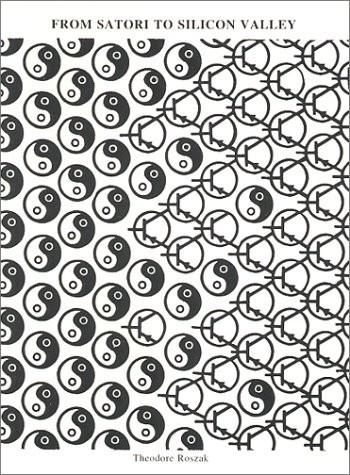
From Satori to Silicon Valley: San Francisco and the American Counterculture
by
Theodore Roszak
Published 31 Aug 1986
Excerpted from The Pill Versus the Springhill Mine Disaster, reprinted by permission of Delacorte Press/Seymour Lawrence, New York. DOUBLEDAY & CO. for Hackers by Steven Levy, copyright 1984. PRAEGER PUBLISHERS Society, edited for quote by Bill Voyd from Shelter and by Paul Oliver, copyright 1969. SAN FRANCISCO FOCUS MAGAZINE view with Stewart Brand in the for quotes from an inter- February 1985 issue. SAN FRANCISCO ORACLE for quotes from issues #6, 1967, and #12, 1967. Reprinted with permission of Allan Cohen, Editor. ST. MARTIN'S PRESS for Buckminster Fuller, An Autobiographical Monologue!Scenario by Robert Snyder, copyright 1970.
…
front cover of Time 1964) but he became one of the pro- phetical voices of the starting with a American counterculture - prolonged campus residency Jose State College that brought in early 1966. for- Thanks to that 18 him to the at San Bay Area appearance and subse- him quently to the prominence Stewart Brand gave in the Whole Earth Catalog, was launched on and most spectacular phase of the final On Fuller his career. the first page of the Catalog, the full corpus of Fuller's works was generously presented under the inscription: "the insights of itiated this catalog." became From Buckminster Fuller in- that point forward, Fuller the necessary presence at New Age confer- ences, symposia, and workshops: a sort of peripatetic global wizard audience down who might tie his awe-inspired for four or five hours at a stretch while he recited the history of the universe.

An Optimist's Tour of the Future
by
Mark Stevenson
Published 4 Dec 2010
But, as the conversation behind me drifts towards the frame-shifting potential of alien civilisations, I reflect that my own chosen topic, on this trip to California, is hardly less fantastical. Nanotechnology, at first glance, sounds much like science fiction. Yet it seems likely that it will radically reshape our future. At least, that’s what future commentator and ‘eco-pragmatist’ Stewart Brand believes: ‘The science is good, the engineering feasible, the paths of approach are many, the consequences are revolutionary-times-revolutionary, and the schedule is: in our lifetimes.’ Brand wrote that in 1991. Today nanotechnology is infiltrating nearly every sphere of human endeavour, from health care to construction.
…
Nations try to ring-fence sufficient resources and sometimes that means taking them from someone else. As the population rises we have two choices: find a way to increase carrying capacity; or fight (justifying the latter with some form of ideology). But what has this to do with nanotechnology? The same Stewart Brand who suggested the impacts of nanotechnology would be ‘revolutionary-times-revolutionary’ provides a link in his book Whole Earth Discipline: An Ecopragmatist Manifesto: Peace can break out, though, when carrying capacity is pushed up suddenly, as with the invention of agriculture, or newly effective bureaucracy, or remote trade or technological breakthroughs.
…
Its significance stems from the fact that each tool we build gives us a better platform on which to build its successor. Computers, for instance, allow us to design more powerful computers than themselves. This phenomenon is called ‘autocatalysis,’ where the output of a process can be fed back into the process itself, spurring it on. In the opening chapter of Whole Earth Discipline, Stewart Brand gives a useful perspective: Not all technologies are autocatalytic: New discoveries don’t make every technology advance faster. Progress in automobile technology and wind technology makes better cars and wind generators but not better tools for the engineering itself. The current autocatalytic technologies that goose themselves into exponential growth are infotech (including computers, communications, and artificial intelligence), biotech, and nanotech (which is blurring into biotech).
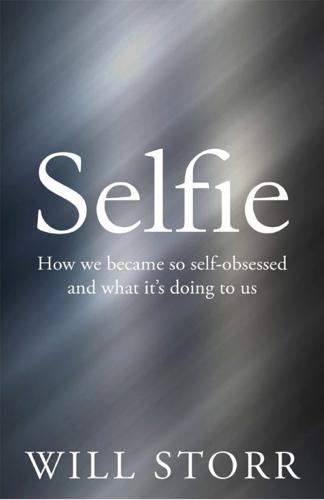
Selfie: How We Became So Self-Obsessed and What It's Doing to Us
by
Will Storr
Published 14 Jun 2017
Jobs, he said, just ignored him. Much of the spirit of Engelbart’s wider vision would be carried into the future by the man who was not only an invited speaker, along with Vasco, at Esalen’s bad-tempered ‘Spiritual Tyranny’ conference, but who acted as consultant and cameraman for the 1968 demo. To Engelbart’s technology, Stewart Brand would add the humanist-neoliberal ideology that still drives our computer culture today. The month following the demo saw the first proper publication of Brand’s Whole Earth Catalog, whose headquarters was blocks from Engelbart’s lab. Open the cover of this esoteric bazaar of products and philosophies and you’d see its mission statement.
…
On paper, many members of GBN were libertarians, which is the political ideology most often associated with Ayn Rand and her followers. In practice, libertarianism and neoliberalism have a huge amount in common, not least in their core belief in the benevolence of free markets, and their hatred of central planning and the state. Alan Greenspan called himself a libertarian, as did many of Stewart Brand’s associates. Wired Magazine, which would do perhaps more than any other title to promote his worldview to the public, was partly funded by the GBN and co-founded by libertarian Louis Rosetto. (A 1994 edition covered the GBN itself, depicting the people in its network visually as a series of interconnected hubs – the member with the most connections of all was Esalen’s Michael Murphy.)
…
In the fallout of the financial crisis, even greater pressure was placed on the ordinary Western individual. The age of perfectionism was here. * My train passed through Menlo Park, where John Vasconcellos had recuperated following his heart bypass operation, where Doug Engelbart had developed his astonishing vision of personal computing and where Stewart Brand’s Whole Earth organization had been headquartered. It rolled through Palo Alto, home of Stanford University and Xerox PARC and then Mountain View, where Engelbart got his first job in the Valley, and which is now Googleland. The neighbourhoods were disappointingly ordinary to look at: blocks of bungalows – terracotta, dun, dusty white – with outsized SUVs in their drives.
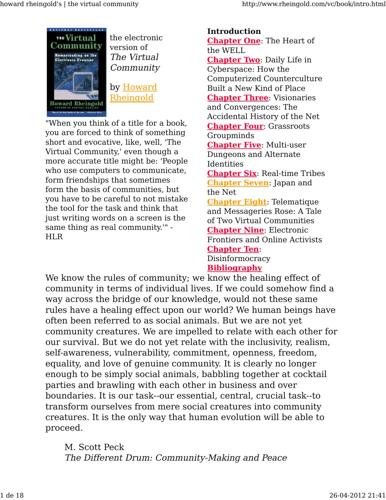
Howard Rheingold
by
The Virtual Community Homesteading on the Electronic Frontier-Perseus Books (1993)
Published 26 Apr 2012
Although dramatic incidents are what bring people together and stick in their memories, most of what goes on in the Parenting conference and most virtual communities is informal conversation and downright chitchat. The model of the WELL and other social clusters in cyberspace as "places" is one that naturally emerges whenever people who use this medium discuss the nature of the medium. In 1987, Stewart Brand quoted me in his book The Media Lab about what tempted me to log onto the WELL as often as I did: "There's always another mind there. It's like having the corner bar, complete with old buddies and delightful newcomers and new tools waiting to take home and fresh graffiti and letters, except instead of putting on my coat, shutting down the computer, and walking down to the corner, I just invoke my telecom program and there they are.
…
HLR http://www.rheingold.com/vc/book/2.html Introduction Chapter One: The Heart of the WELL Chapter Two: Daily Life in Cyberspace: How the Computerized Counterculture Built a New Kind of Place Chapter Three: Visionaries and Convergences: The Accidental History of the Net Chapter Four: Grassroots Groupminds Chapter Five: Multi-user Dungeons and Alternate Identities Chapter Six: Real-time Tribes Chapter Seven: Japan and the Net Chapter Eight: Telematique and Messageries Rose: A Tale of Two Virtual Communities Chapter Nine: Electronic Frontiers and Online Activists Chapter Ten: Disinformocracy Bibliography Chapter Two: Daily Life in Cyberspace: How the Computerized Counterculture Built a New Kind of Place I was still toting around my 1969 edition of the Whole Earth Catalog when I read an article about a new computer service that Whole Earth publisher Stewart Brand and his gang were starting in the spring of 1985. For only $3 an hour, people with computers and modems could have access to the kind of online groups that cost five or ten times that much on other public telecommunication systems. I signed up for an account. I had previously suffered the initiation of figuring out how to plug in a modem and use it to connect to computer bulletin-board systems, or BBSs, and the Source (an early public information utility), so I was only a little dismayed that I had to learn a whole new set of commands to find my way through the software to the people.
…
The shock of recognition that came with that statement seemed to resolve the matter between us. The WELL is rooted in the San Francisco Bay area and in two separate cultural revolutions that took place there in past decades. The Whole Earth Catalog originally emerged from the Haight-Ashbury counterculture as Stewart Brand's way of providing access to tools and ideas to all the communards who were exploring alternate ways of life in the forests of Mendocino or the high deserts outside Santa Fe. The Whole Earth Catalogs and the magazines they spawned--Co-Evolution Quarterly and its successor, Whole Earth Review--seem to have outlived the counterculture itself, since the magazine and catalogs still exist after twenty-five years.

Survival of the Richest: Escape Fantasies of the Tech Billionaires
by
Douglas Rushkoff
Published 7 Sep 2022
Tech companies actively sought out programmers from this imaginative subculture, and made special accommodations for them—such as quietly giving certain employees early warning of the drug tests they were required to conduct as defense contractors. Psychedelic heroes of the 1960s, including LSD guru Timothy Leary, former Merry Prankster Stewart Brand, and Grateful Dead lyricist John Barlow, reassured the California counterculture that the computer revolution would be characterized less by the postwar military bureaucracy or even high-tech corporations than by the “new communalists ” of Haight-Ashbury, the Whole Earth Catalog, and the hot tubs of Esalen.
…
Then they won’t have to feel any guilt, shame, or fear of retribution. 3 A Womb with a View YOU ARE SAFE IN YOUR TECHNO-BUBBLE W hat if The Mindset is not just a product of money, but of technology itself? I remember back around 1990, when psychedelics philosopher Timothy Leary first read Stewart Brand’s book The Media Lab , about the new digital technology center MIT had created in its architecture department. Tim devoured it, cover to cover, over the course of one long day. Around sunset, just as he was finishing, he threw it across the living room in disgust. “Look at the index,” he said, “of all the names, less than 3 percent are women.
…
sh =675141ef6ad6. 19 real estate agents specializing in private islands : Heather Murphy, “The Island Brokers Are Overwhelmed,” New York Times , October 9, 2020, https:// www .nytimes .com /2020 /10 /09 /realestate /private -islands -coronavirus .html. 19 Cancer-causing microplastics : Jamie Wheal, Recapture the Rapture: Rethinking God, Sex, and Death in a World That’s Lost Its Mind (New York: HarperCollins, 2021). 19 World Wide Fund for Nature study : Wijnand de Wit and Nathan Bigaud, “No Plastic in Nature: Assessing Plastic Ingestion from Nature to People,” World Wide Fund for Nature, 2019, https:// d2ouvy59p0dg6k .cloudfront .net /downloads /plastic _ingestion _web _spreads .pdf. 21 “aquapreneurs” : Joe Quirk and Patri Friedman, Seasteading: How Floating Nations Will Restore the Environment, Enrich the Poor, Cure the Sick, and Liberate Humanity from Politicians (New York: Free Press, 2017). 21 humanity’s return to the sea : “Busan UN Habitat and OCEANIX Set to Build the World’s First Sustainable Floating City Prototype as Sea Levels Rise,” UNHabitat.org, November 18, 2021, https:// unhabitat .org /busan -un -habitat -and -oceanix -set -to -build -the -worlds -first -sustainable -floating -city -prototype -as. 21 “To establish permanent” : https:// www .seasteading .org. 21 “We’ve had the agricultural revolution” : https:// www .seasteading .org. Chapter 2: Mergers and Acquisitions 25 Tech companies actively sought : Douglas Rushkoff, Cyberia: Life in the Trenches of Hyperspace (New York: HarperOne, 1994). 25 “new communalists” : Fred Turner, From Counterculture to Cyberculture: Stewart Brand, the Whole Earth Network, and the Rise of Digital Utopianism (Chicago: University of Chicago Press, 2006). 26 Operation Sundevil : Bruce Sterling, The Hacker Crackdown: Law and Disorder on the Electronic Frontier (New York: Bantam, 1992). 26 “Governments of the Industrial World” : John Perry Barlow, “A Declaration of the Independence of Cyberspace,” Electronic Frontier Foundation, 1996, https:// www .eff .org /cyberspace -independence. 26 fungus and bacteria : Qi Hui Sam, Matthew Wook Chang, and Louis Yi Ann Chai, “The Fungal Mycobiome and Its Interaction with Gut Bacteria in the Host,” International Journal of Molecular Sciences , February 4, 2017, https:// www .ncbi .nlm .nih .gov /pmc /articles /PMC5343866 /. 28 extolled the virtues of the deal : Saul Hansell, “America Online Agrees to Buy Time Warner for $165 Billion; Media Deal is Richest Merger,” New York Times , January 11, 2000, https:// www .nytimes .com /2000 /01 /11 /business /media -megadeal -overview -america -online -agrees -buy -time -warner -for -165 -billion .html. 28 the piece I wrote placed in the Guardian : Douglas Rushkoff, “Why Time Is Up for Warner,” Guardian , January 20, 2000, https:// www .theguardian .com /technology /2000 /jan /20 /onlinesupplement10. 29 People blamed : Seth Stevenson, “The Believer,” New York Magazine , July 6, 2007, https:// nymag .com /news /features /34454 /. 30 hired investment bank Salomon Smith Barney : Tim Arango, “How the AOL–Time Warner Merger Went So Wrong,” New York Times , January 10, 2010, https:// www .nytimes .com /2010 /01 /11 /business /media /11merger .html. 31 probably borrowed : Steven Levy, Facebook: The Inside Story (New York: Blue Rider Press, 2020). 32 stocks quadruple : Lisa Pham, “This Company Added the Word ‘Blockchain’ to Its Name and Saw Its Shares Surge 394%,” Bloomberg , October 27, 2017, https:// www .bloomberg .com /news /articles /2017 -10 -27 /what -s -in -a -name -u -k -stock -surges -394 -on -blockchain -rebrand. 33 “independent, host-led local organizations” : Dave Lee, “Airbnb Using ‘Independent’ Host Groups to Lobby Policymakers,” Financial Times , March 21, 2021, https:// www .ft .com /content /1afb3173 -444a -47fa -99ec -554779dde236. 33 Google was outspending : Shaban Hamza, “Google for the First Time Outspent Every Other Company to Influence Washington in 2017,” Washington Post , January 23, 2018, https:// www .washingtonpost .com /news /the -switch /wp /2018 /01 /23 /google -outspent -every -other -company -on -federal -lobbying -in -2017 /. 33 outspent by Facebook : Lauren Feiner, “Facebook Spent More on Lobbying than Any Other Big Tech Company in 2020,” CNBC , January 22, 2021, https:// www .cnbc .com /2021 /01 /22 /facebook -spent -more -on -lobbying -than -any -other -big -tech -company -in -2020 .html. 33 Numerous studies : Martin Gilens and Benjamin I.

A People’s History of Computing in the United States
by
Joy Lisi Rankin
In addition to the prominence of My Computer Likes Me and The Limits to Growth, the Huntington Computer Project (to which I’ll turn momentarily)—w ith programs for students and educators written in BASIC and distributed by DEC —developed simulations about pollution and population modeling. A subset of the Bay Area population at the intersection of technology and counterculture cared deeply about computing and the environment. Albrecht helped launch the loose computing education division of the Portola Institute, which employed Stewart Brand, the father of the quintessen tial countercultural publication the Whole Earth Catalog.107 The Whole Earth Catalog was favored by t hose interested in (among other things) ecology, the environment, and back-to-the-earth communes. Albrecht mirrored t hese issues in My Computer Likes Me when he noted about population that “if the present growth rate persists,” t here would be “too many” people.108 The first edition of My Computer Likes Me was snapped up during 1972, the same year that Albrecht expanded his paired BASIC-and- people-computing mission with the publication of the People’s Computer Company.
…
See, especially, Arthur Norberg, Judy O’Neill, and Kerry Freedman, Transforming Computer Technology: Information Pro cessing for the Pentagon, 1962–1986 (Baltimore: Johns Hopkins University Press, 1996) and Atsushi Akera, Calculating a Natural World: Scientists, Engineers, and Computers during the Rise of U.S. Cold War Research (Cambridge, MA: MIT Press, 2007). Accounts that highlight the role of the counterculture in personal computing’s origins include Fred Turner’s From Counterculture to Cyberculture: Stewart Brand, the Whole Earth Network, and the Rise of Digital Utopianism (Chicago: University of Chicago Press, 2006) and John Markoff’s What the Dormouse Said: How the Sixties Counterculture S haped the Personal Computer Industry (New York: Viking Penguin, 2005). 5. T hese works include Susan Rosegrant and David Lampe, Route 128: Lessons from Boston’s High-Tech Community (New York: Basic Books, 1992); 245 246 Notes to Pages 3–5 AnnaLee Saxenian, Regional Advantage: Culture and Competition in Silicon Valley and Route 128 (Cambridge, MA: Harvard University Press, 1994); Christophe Lécuyer, Making Silicon Valley: Innovation and the Growth of High Tech, 1930–1970 (Cambridge, MA: MIT Press, 2006); and Barry Katz, Make It New: The History of Silicon Valley Design (Cambridge, MA: MIT Press, 2015).
…
Nevison, The Computer as Pupil: The Dartmouth Secondary School Project, Final Report, October 1970, 16, Dartmouth College History Collection, Rauner Library. 56. Student version of Spacewar! in NSF-Dartmouth Secondary School Project Monthly Bulletin 3, no. 2 (1969): 7–8, reprinted in Nevison, The Computer as Pupil, appendix C. For more on Spacewar!, see Stewart Brand, “SPACEWAR: Fanatic Life and Symbolic Death among the Computer Bums,” Rolling Stone, December 7, 1972. 262 Notes to Pages 85–87 57. “LOVE Program,” in NSF-Dartmouth Secondary School Project Monthly Bulletin 3, no. 2 (1969): 8–9, reprinted in Nevison, The Computer as Pupil, appendix C. 58.

The Rational Optimist: How Prosperity Evolves
by
Matt Ridley
Published 17 May 2010
By 2008, less than twenty-five years after they were first invented, fully 10 per cent of all arable land, thirty million acres, was growing genetically modified crops: one of the most rapid and successful adoptions of a new technology in the history of farming. Only in parts of Europe and Africa were these crops denied to farmers and consumers by the pressure of militant environmentalists, with what Stewart Brand calls their ‘customary indifference to starvation’. African governments, after intense lobbying by Western campaigners, have been persuaded to tie genetically modified food in red tape, which prevents them being grown commercially in all but three countries (South Africa, Burkina Faso and Egypt).
…
To many Westerners, suffused with nostalgie de la boue (nostalgia for mud), this is a regrettable trend. Many charities and aid agencies see their job as helping to prevent subsistence farmers having to move to the city by making life in the countryside more sustainable. ‘Many of my contemporaries in the developed world,’ writes Stewart Brand, ‘regard subsistence farming as soulful and organic, but it is a poverty trap and an environmental disaster.’ Surely a Nairobi slum or a São Paolo favela is a worse place to be than a tranquil rural village? Not for the people who move there. Given the chance they eloquently express their preference for the relative freedom and opportunity of the city, however poor the living conditions.
…
Everybody knows the population of the world is growing. But remarkably few people seem to know that the rate of increase in world population has been falling since the early 1960s and that the raw number of new people added each year has been falling since the late 1980s. As the environmentalist Stewart Brand puts it, ‘Most environmentalists still haven’t got the word. Worldwide, birth-rates are in free fall ... On every part of every continent and in every culture (even Mormon), birth rates are headed down. They reach replacement level and keep on dropping.’ This is happening despite people living longer and thus swelling the ranks of the world population for longer, and despite the fact that babies are no longer dying as frequently as they did in the early twentieth century.
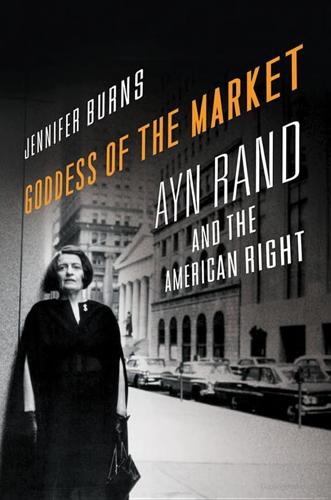
Goddess of the Market: Ayn Rand and the American Right
by
Jennifer Burns
Published 18 Oct 2009
Whether this set of ideas transcends or represents yet another iteration of what Donald Worster called the dialectic of “arcadian” and “imperialist” ecology is an important question to explore. Worster, Nature’s Economy: A History of Ecological Ideas (Cambridge: Cambridge University Press, 1977/1994). 47. Stewart Brand, diary entries dated July 9, 1968 and August 16, 1968, Stewart Brand Papers, Stanford University Special Collections. 48. The Last Whole Earth Catalog (Menlo Park, CA: Portola Institute, 1971), 185. The catalogue included only books deemed either “useful as a tool” or “relevant to independent education,” making mention tantamount to endorsement.
…
The survivalist Whole Earth Catalog, a hippy-techno-geek bible, was an important node of this movement. “We are as gods and might as well get good at it,” the catalogue announced, striking a vaguely libertarian note with its intention to support “a realm of intimate, personal power” and “the power of the individual.” Not surprisingly the catalogue’s founder, Stewart Brand, thought Rand was an exciting thinker.46 In 1968 Brand noted in his diary, “I’m reading Atlas Shrugged these days, again, on quite a different level—keeping some watch on myself, but mostly letting the notions run on.” He returned to Rand during a period of deep thinking, aided by his near daily consumption of nitrous oxide.
…
The Rothbard Papers are cited courtesy of the Ludwig Von Mises Institute, Auburn, Alabama. Material from Leonard Read is used with permission of the Foundation for Economic Education (www.fee.org). The Department of Special Collections and University Archives, Stanford University Libraries, granted me permission to use material from the Stewart Brand Collection (M1237). Barry Goldwater is quoted with the permission of the Arizona Historical Foundation. Barbara Branden and Nathaniel Branden, Ph. D, kindly granted use of photographs and documents. Permission to quote from Ayn Rand’s unpublished material was granted by the Estate of Ayn Rand, and other material is used courtesy of the Ayn Rand Archives.

Dawn of the New Everything: Encounters With Reality and Virtual Reality
by
Jaron Lanier
Published 21 Nov 2017
I became convinced our home should be made of spherical structures resembling those found in plants. Ellery said he thought I might enjoy another book, in that case. This turned out to be a roughly designed publication in the form of an extra-thick magazine called Domebook. It was an offshoot of Stewart Brand’s Whole Earth Catalog.5 Buckminster Fuller had been promoting geodesic domes as ideal structures, and they embodied the techie utopian spirit of the times. Initially I was skeptical of going geodesic. “I don’t want our house to be like any other house, and other people are building geodesic domes,” I complained.
…
These are the little rings you crimp on a pig’s nose to make it less destructive. The innovative idea was to fasten sheets of metal lath together with hog rings and then press concrete into the layers. Bad idea. The lath density was inconsistent and the result was subject to cracking. About ten years later I’d meet Stewart Brand for the first time, and my first words to him were, “I grew up in a geodesic dome.” His first words to me were, “Did it leak?” “Of course it leaked!” We started first on the medium-size dome, because that was all we could afford. It was a strange feeling to move into it from the tents, like recapitulating deep human history.
…
(I was a Coxeter fanatic.)1 Some of the earliest nontechnical books about computing were split in two. One half would be about a systems approach to reality and the human future. That part would be nerdy. The other half would be about the personal experience of computing. It would be ecstatic, brimming with revelations. One example was II Cybernetic Frontiers, by Stewart Brand. The first half was an interview with Gregory Bateson2 about how cybernetics would change society and the way we know the world. The other half was devoted to Spacewar!, the first networked videogame, and the fanatical devotion the game inspired. Another example was cloaked as a grainy retort to the craft of printing, just like New York conceptual art ’zines.
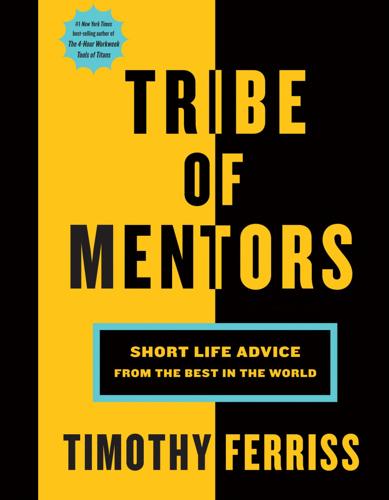
Tribe of Mentors: Short Life Advice From the Best in the World
by
Timothy Ferriss
Published 14 Jun 2017
For artists, the most important thing is total engagement. So I always tell writers to follow their curiosity, obsessions, and fascinations. “Back when I was 75 (I’m 78 now), I checked out the local CrossFit ‘box’ and was enchanted by the absence of mirrors and machines, and by the presence of free weights.” Stewart Brand TW: @stewartbrand reviverestore.org STEWART BRAND is the president of the Long Now Foundation, established to creatively foster long-term thinking and responsibility in the framework of the next 10,000 years. He leads a project there called Revive and Restore, which seeks to bring back extinct animal species such as the passenger pigeon and woolly mammoth.
…
Quotes I’m Pondering (Tim Ferriss: Nov. 6–Dec. 4, 2015) Soman Chainani Dita Von Teese Jesse Williams Dustin Moskovitz Richa Chadha Quotes I’m Pondering (Tim Ferriss: Dec. 11, 2015–Jan. 1, 2016) Max Levchin Neil Strauss Veronica Belmont Patton Oswalt Lewis Cantley Quotes I’m Pondering (Tim Ferriss: Jan. 8–Jan. 29, 2016) Jerzy Gregorek Aniela Gregorek Amelia Boone Sir Joel Edward McHale, Lord of Winterfell Ben Stiller Quotes I’m Pondering (Tim Ferriss: March 11–March 25, 2016) Anna Holmes Andrew Ross Sorkin Joseph Gordon-Levitt How to Say No: Wendy MacNaughton Vitalik Buterin Quotes I’m Pondering (Tim Ferriss: Feb. 12–March 4, 2016) Rabbi Lord Jonathan Sacks Julia Galef Turia Pitt Annie Duke Jimmy Fallon Quotes I’m Pondering (Tim Ferriss: April 1–April 15, 2016) Esther Perel Maria Sharapova Adam Robinson Josh Waitzkin Ann Miura-Ko Jason Fried Quotes I’m Pondering (Tim Ferriss: April 22–May 13, 2016) Arianna Huffington Gary Vaynerchuk Tim O’Reilly Tom Peters Bear Grylls Brené Brown Quotes I’m Pondering (Tim Ferriss: May 27–June 16, 2016) Leo Babauta Mike D Esther Dyson Kevin Kelly Ashton Kutcher Quotes I’m Pondering (Tim Ferriss: June 24–July 15, 2016) Brandon Stanton Jérôme Jarre Fedor Holz Eric Ripert Sharon Salzberg Quotes I’m Pondering (Tim Ferriss: July 22–Aug. 12, 2016) Franklin Leonard Peter Guber Greg Norman Daniel Ek Strauss Zelnick Quotes I’m Pondering (Tim Ferriss: Aug. 12–Sept. 9, 2016) Steve Jurvetson Tony Hawk Liv Boeree Anníe Mist þórisdóttir Quotes I’m Pondering (Tim Ferriss: Sept. 16–Oct. 14, 2016) Mark Bell Ed Coan Ray Dalio Jacqueline Novogratz Brian Koppelman Stewart Brand Quotes I’m Pondering (Tim Ferriss: Oct. 21–Nov. 18, 2016) Sarah Elizabeth Lewis Gabor Maté Steve Case Linda Rottenberg Tommy Vietor Quotes I’m Pondering (Tim Ferriss: Nov. 25–Dec. 30, 2016) Larry King Muna AbuSulayman Sam Harris Maurice Ashley How to Say No: Danny Meyer John Arnold Quotes I’m Pondering (Tim Ferriss: Jan. 6–Jan. 27, 2017) Mr.
…
I devoured any and all science fiction our public library contained. Arthur C. Clarke’s stories in particular birthed a lifelong interest in science and a deep respect for the power of imagination. This story of a singularity always stuck with me as something to prepare for. The Whole Earth Catalog by Stewart Brand: When I was 17, this big catalog of choices gave me permission to have my own ideas, make my own tools, and unabashedly follow my two loves of art and science. I used it to invent my own life. Decades later, I worked at the Catalog in my first real job. The Fountainhead by Ayn Rand: I got sucked into reading this over-the-top manifesto of self-reliance during finals of my first year of college.
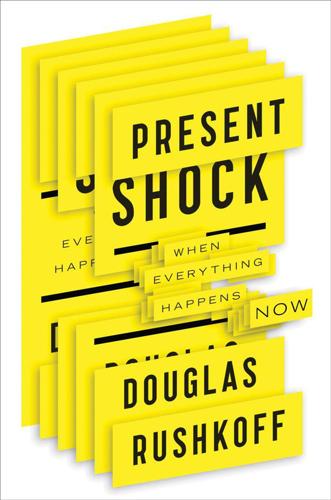
Present Shock: When Everything Happens Now
by
Douglas Rushkoff
Published 21 Mar 2013
While chronobiologists looked at the various natural cycles influencing the processes of life, proponents of temporal diversity are encouraging us to understand and distinguish between the different rates at which things on different levels of existence change. Former Merry Prankster and Whole Earth Catalog founder Stewart Brand applied temporal diversity to different levels of society. In his book The Clock of the Long Now, he argues that we live in a world with multiple timescales, all moving simultaneously but at different speeds. Brand calls it the order of civilization. Nature, or geological time, moves the slowest—like the skater in the middle of the pinwheel.
…
What we really need is access to both: we want to take advantage of all the time that has been bound for us as well as stay attuned to the real-world feedback we get from living in the now. While they often seem to be at odds, they are entirely compatible, even complementary, if we understand the benefits and drawbacks of each. It’s not solely a matter of establishing appropriate “temporal diversity,” as Stewart Brand suggests. That may work for processes that are unfolding over historical time, but it doesn’t really have anything to do with the now that we’re contending with in a presentist reality. We’re not in nature’s time nor fashion’s time. We’re in no time. All we presentists get from zooming out to ten-thousand-year time spans is vertigo.
…
As long as people didn’t engage with one another and were instead kept happily competing with one another, their actions, votes, and emotions remained fairly predictable. Screech could be kept to a minimum. But the Cold War gave rise to something else: a space race, and the unintended consequence of the first photographs of planet Earth taken from the heavens. Former Merry Prankster Stewart Brand had been campaigning since 1966 for NASA to release a photo of Earth, aware that such an image could change human beings’ perception of not only their place in the universe but also their relationship to one another. Finally, in 1972, NASA released image AS17-148-22727, birthing the notion of our planet as a “big blue marble.”

The Filter Bubble: What the Internet Is Hiding From You
by
Eli Pariser
Published 11 May 2011
It’s the power to create new universes, which is what often draws people to code in the first place. Type in a few lines, or a few thousand, strike a key, and something seems to come to life on your screen—a new space unfolds, a new engine roars. If you’re clever enough, you can make and manipulate anything you can imagine. “We are as Gods,” wrote futurist Stewart Brand on the cover of his Whole Earth Catalog in 1968, “and we might as well get good at it.” Brand’s catalog, which sprang out of the back-to-the-land movement, was a favorite among California’s emerging class of programmers and computer enthusiasts. In Brand’s view, tools and technologies turned people, normally at the mercy of their environments, into gods in control of them.
…
Here Comes Everybody: The Power of Organizing Without Organizations. New York: The Penguin Press, 2008. Solove, Daniel J. Understanding Privacy. Cambridge, MA: Harvard University Press, 2008. Sunstein, Cass R. Republic.com 2.0. Princeton: Princeton University Press, 2007. Turner, Fred. From Counterculture to Cyberculture: Stewart Brand, the Whole Earth Network, and the Rise of Digital Utopianism. Chicago: The University of Chicago Press, 2006. Watts, Duncan J. Six Degrees: The Science of a Connected Age. New York: W.W. Norton & Company, 2003. Wu, Tim. The Master Switch : The Rise and Fall of Information Empires. New York: Alfred A.
…
Harris, “Facebook’s Advertising Fluke,” TechRepublican, Dec. 21, 2010, accessed Feb. 9, 2011, http://techrepublican.com/free-tagging/vincent-harris. 155 have the ads pulled off the air: Monica Scott, “Three TV Stations Pull ‘Demonstrably False’ Ad Attacking Pete Hoekstra,” Grand Rapids Press, May 28, 2010, accessed Dec. 17, 2010, www.mlive.com/politics/index.ssf/2010/05/three_tv_stations_pull_demonst.html. 157 “improve the likelihood that a registered Republican”: Bill Bishop, The Big Sort: Why the Clustering of Like-Minded America Is Tearing Us Apart (New York: Houghton Mifflin, 2008), 195. 157 “likely to be most salient in the politics”: Ronald Inglehart, Modernization and Postmodernization (Princeton: Princeton University Press, 1997), 10. 159 Pabst began to sponsor hipster events: Neal Stewart, “Marketing with a Whisper,” Fast Company, Jan. 11, 2003, accessed Jan. 30, 2011, www.fastcompany.com/fast50_04/winners/stewart.html. 159 “$44 in US currency”: Max Read, “Pabst Blue Ribbon Will Run You $44 a Bottle in China,” Gawker, July 21, 2010, accessed Feb. 9, 2011, http://m.gawker.com/5592399/pabst-blue-ribbon-will-run-you-44-a-bottle-in-china. 160 “I serve as a blank screen”: Barack Obama, The Audacity of Hope: Thoughts on Reclaiming the American Dream (New York: Crown, 2006), 11. 161 “We lose all perspective”: Ted Nordhaus, phone interview with author, Aug. 31, 2010. 162 “the source is basically in thought”: David Bohm, Thought as a System (New York: Routledge, 1994) 2. 163 “participants in a pool of common meaning”: David Bohm, On Dialogue (New York: Routledge, 1996), x–xi. 164 “define and express its interests”: John Dewey, The Public and Its Problems (Athens, OH: Swallow Press, 1927), 146. Chapter Six: Hello, World! 165 “no intelligence or skill in navigation”: Plato, First Alcibiades, in The Dialogues of Plato, vol. 4, trans. Benjamin Jowett (Oxford, UK: Clarendon Press, 1871), 559. 166 “We are as Gods”: Stewart Brand, Whole Earth Catalog (self-published, 1968), accessed Dec. 16, 2010, http://wholeearth.com/issue/1010/article/195/we.are.as.gods. 167 “make any man (or woman) a god”: Steven Levy, Hackers: Heroes of the Computer Revolution (New York: Penguin, 2001), 451. 167 “having some troubles with my family”: “How Eliza Works,” accessed Dec. 16, 2010, http://chayden.net/eliza/instructions.txt. 168 “way of acting without consequence”: Siva Vaidyanathan, phone interview with author, Aug. 9, 2010. 168 “not a very good program”: Douglas Rushkoff, interview with author, New York, NY, Aug. 25, 2010. 168 “politics tends to be seen by programmers”: Gabriella Coleman, “The Political Agnosticism of Free and Open Source Software and the Inadvertent Politics of Contrast,” Anthropological Quarterly, 77, no. 3 (Summer 2004): 507–19, Academic Search Premier, EBSCOhost. 170 “addictive control as well”: Levy, Hackers, 73. 172 “Howdy” is a better opener than “Hi”: Christian Rudder, “Exactly What to Say in a First Message,” Sept. 14, 2009, accessed Dec. 16, 2010, http://blog.okcupid.com/index.php/online-dating-advice-exactly-what-to-say-in-a-first-message. 173 “hackers don’t tend to know any of that”: Steven Levy, “The Unabomber and David Gelernter,” New York Times, May 21, 1995, accessed Dec. 16, 2010, www.unabombers.com/News/95-11-21-NYT.htm. 174 “engineering relationships among people”: Langdon Winner, “Do Artifacts Have Politics?”

Intertwingled: Information Changes Everything
by
Peter Morville
Published 14 May 2014
xlix Information Anxiety by Richard Saul Wurman (1989), p.72. l The Wurmanizer by Gary Wolf (2000). li Dutch Uncles, Ducks, and Decorated Sheds by Dan Klyn (2013). lii A Brief History of Information Architecture by Andrea Resmini and Luca Rosati (2012). liii Wurman (1989), p.59. liv The Clock of the Long Now by Stewart Brand (1999), p.34. lv How Buildings Learn by Stewart Brand (1995). lvi Resilience: Why Things Bounce Back by Andrew Zolli (2013), p.34. lvii Don’t Just Be the Change: Mass-Produce It by Alex Steffen (2007). lviii Why Dolphins Make Us Nervous by Robert Krulwich (2013). lix Nonhuman Rights Project, http://www.nonhumanrights.org.
…
The acronym is catchy, but it’s the opposite of right. The ways of organizing information are infinite. As uncle Buddha once said, put no head above your own, because even Dutch uncles are wrong. To build strength and flexibility, we should open our minds to people and ideas we don’t like, and pick fights with those we do. For instance, Stewart Brand’s concept of pace layering gets a lot of love. He argues that in complex systems, it’s vital that distinct layers can change at differing rates. The combination of fast and slow creates resilience. Fast learns, slow remembers. Fast gets our attention. Slow has all the power.liv Figure 2-26. The pace layers of civilization.

About Time: A History of Civilization in Twelve Clocks
by
David Rooney
Published 16 Aug 2021
Time capsules such as the one buried in Osaka can be considered as clocks, but clocks unlike all the others we have examined so far in this story. Where they have been concerned with the now, or nowadays, time capsules work over longer time horizons. They work over the long now. And that might just save civilization. IN 1998, STEWART BRAND, writer, inventor and founder of the Whole Earth Catalog, wrote these words: Civilization is revving itself into a pathologically short attention span. The trend might be coming from the acceleration of technology, the short-horizon perspective of market-driven economics, the next-election perspective of democracies, or the distractions of personal multitasking.
…
Every twenty years since 692, barring a few periods of warfare in the fifteenth and sixteenth centuries, the wooden shrine buildings at Ise have been totally rebuilt; the most recent ceremony, in 2013, was the sixty-second rebuilding. About 100 local craftspeople are entrusted with the process, which takes eight years each time. In his book outlining the Clock of the Long Now project, Stewart Brand said, “Ise is the world’s greatest monument to continuity—an unbroken lineage of structure, records, and tradition on a humid, earthquake-prone, volcanic island. Its ancient rites are alive and meaningful.”9 Alexander Rose, Danny Hillis and other Long Now Foundation members attended the 2013 rebuilding ceremony.
…
Elsewhere in the time and frequency industry, I have been helped by countless experts, with Bob Cockshott, Charles Curry and John Pottle being particular stars. Moving from fast clocks to the slowest, I must thank the people of the Long Now Foundation for everything they have done for me since we first met in 2000. Stewart Brand, Danny Hillis and Brian Eno ignited in me a new way of thinking, and particular gratitude goes to Alexander Rose, who has been an inspiration throughout. I met Laura Williams in front of the Long Now clock the same year; Aluna, and Laura’s friendship, has helped sustain me ever since. And I am truly grateful to Jem Finer, whose projects—not just Longplayer, though that was how we met—have changed the way I see and experience the world.

The Everything Store: Jeff Bezos and the Age of Amazon
by
Brad Stone
Published 14 Oct 2013
That fall, Shel Kaphan drove a U-Haul full of his belongings up from Santa Cruz and officially joined Bezos and his wife as a founding employee of Amazon and as its primary technical steward. Kaphan had grown up in the San Francisco Bay Area and as a teenage computer enthusiast explored the ARPANET, the U.S. Defense Department–developed predecessor to the Internet. In high school, Kaphan met Stewart Brand, the writer and counterculture organizer, and the summer after he graduated, Kaphan took a job at the Whole Earth Catalog, Brand’s seminal guide to the tools and books of the enlightened new information age. Sporting long hippie-ish hair and a bushy beard, Kaphan worked at Brand’s Whole Earth Truck Store in Menlo Park, a mobile lending library and roving education service.
…
Bezos flew in colleagues and Kaphan’s family and friends and put everyone up for three days in private cabins on a Maui beach. Every attendee received an ornamental tile coaster emblazoned with a picture of Kaphan wearing a goofy Cat in the Hat hat. That weekend spawned a fortuitous relationship for Bezos. One of Kaphan’s friends who came on the trip was Stewart Brand, the founder of the Whole Earth Catalog. Brand and his wife, Ryan, bonded with Bezos and MacKenzie, forging a connection that led to Bezos’s involvement in the Clock of the Long Now, an aspirational project aimed at building a massive mechanical clock designed to measure time for ten thousand years, a way to promote long-term thinking.
…
Inside, the sprinklers went off and employees rolled under their mercifully thick door-desks. Bezos’s tiny conference room was full of tchotchkes like Star Trek figurines and water guns, many of which noisily rattled to the floor. Also in the room was a twenty-two-pound ball made of the dense metal tungsten, a memento from Stewart Brand and the organizers of the Clock of the Long Now. Halfway through the earthquake, the executives in the room heard the ominous sound of the ball rolling off its stand. “I was the low man on the totem pole, so my legs were halfway exposed,” says Neil Roseman, only partly in jest. Fortunately, the ball thudded harmlessly to the floor.
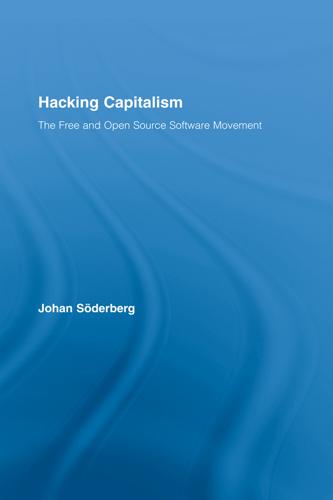
Hacking Capitalism
by
Söderberg, Johan; Söderberg, Johan;
Information Exceptionalism ‘Information wants to be free’ has long been the rallying cry of hackers, crackers and file sharers. The words were first coined at a hacker conference in 1984 by Stewart Brand, a senior figure in the American counter-culture movement. The saying has since come to live a life of its own among devotees. Likewise, sceptics have commonly dismissed cyber-politics by replying that ‘information doesn’t want anything’. Looking closer at what Stewart Brand actually said makes it clear that his thought was a bit more sophisticated than is given away by the catch phrase: “Information wants to be free. Information also wants to be expensive.
…
Rather than engaging in head-on confrontations with the system and the police, hopes were placed in the building of an alternative system. The leading thought was to develop small-is-beautiful, bottom-up, and decentralised technology. The personal computer fits into this picture. A central figure in advocating such an approach, with a foothold both in the environment movement and the embryonic hacker movement, was Stewart Brand, publisher of the Whole Earth Catalog. Another key name in the philosophy of ‘appropriate technology’ was the industrial designer Victor Papanek. They denounced mass production in the same breath as they provided blueprints for Do-It-Yourself technologies. The leading thought was that a ‘better mousetrap’ would win out against faulty industrial products on the merits of its technical qualities.
…
It wants to be expensive because it can be immeasurably valuable to the recipient.”47 As is shown by the full quote, Brand counterpoised two warring forces and situated them in the political economy of information. The intentionality ascribed to information was strictly metaphorical. Still, the question remains if the contradiction pointed out by Stewart Brand is unique to the political economy of information? That seems to be the conclusion of mainstream economic theory. The economist Fritz Malchup commented in the 1960s on the unusual properties of information: “If a public or social good is defined as one that can be used by additional persons without causing any additional cost, then knowledge is such a good of the purest type.”48 Public good has played a minor role in liberal economic theory.
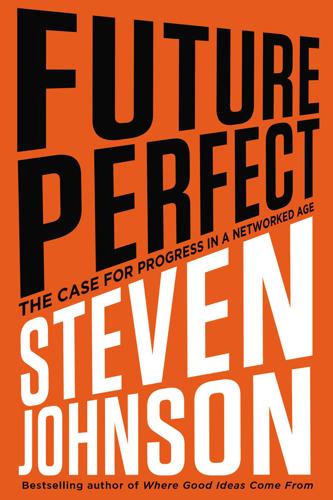
Future Perfect: The Case for Progress in a Networked Age
by
Steven Johnson
Published 14 Jul 2012
His work at Hughes gave him intimate access to the nascent technology of nuclear war—specifically the control systems that allowed the military to both detect inbound missiles and launch first strikes or retaliations. Years later, he would recall his horror at watching Hughes bid on the control system for the new Minuteman missile. “I was scared shitless,” he later told Stewart Brand, in a Wired magazine interview, “because you had all these missiles that could go off by anyone’s stupidity. The technology was never to be trusted.” As the cold war intensified after the launch of Sputnik in 1957, Baran took a new job at the RAND Corporation, where he got involved in a project to design a new command-and-control architecture for military communications.
…
My thinking on these issues has been greatly expanded—if not downright borrowed—from conversations with Beth Noveck, Yochai Benkler, Fred Wilson, Brad Burnham, Larry Lessig, Denise Caruso, John Mackey, John Geraci, Paul Miller, Roo Rogers, Rachel Botsman, Reid Hoffman, Perry Chen, Yancey Strickler, Clay Shirky, Stewart Brand, Howard Rheingold, Kevin Kelly, Jon Schnur, Raj Sisodia, Gordon Wheeler, Nick Grossman, Jay Haynes, Eric Liftin, John Battelle, and my mother, Bev Johnson. Special thanks to the group who were generous enough to comment on the manuscript in draft: Bill Wasik, David Sloan Wilson, Dan Hill, Henry Farrell, and my father and longtime political sparring partner, Stan Johnson.
…
Hayek’s arguments are nicely summarized in his 1945 essay “The Use of Knowledge in Society,” which appeared in The American Economic Review. Jane Jacobs’s attack on centralized planning appears in her classic work, The Death and Life of Great American Cities. For a comprehensive history of the birth of the Internet, see Where Wizards Stay Up Late, by Matthew Lyon and Katie Hafner, as well as Stewart Brand’s interview with Paul Baran, “Founding Father,” in Wired. I first came across the concept of “positive deviance” in the article “Design Thinking for Social Innovation,” by Tim Brown and Jocelyn Wyatt, in the Stanford Social Innovation Review. For more on the approach, see the website of the Positive Deviance Initiative at http://www.positivedeviance.org/.

The Long Boom: A Vision for the Coming Age of Prosperity
by
Peter Schwartz
,
Peter Leyden
and
Joel Hyatt
Published 18 Oct 2000
Stevens, "In Kyoto, the Subject Is for Climate; the Forecast Is for Storms," New York Times (December 1, 1997), Dl. David Harris, "Sao Paulo Megacity," Rolling Stone (December 26, 1997), 126-134. to release the image: Stewart Brand is a cofounder of GBN and a longtime friend of Schwartz's. Brand went on to do many remarkable things, including founding the Hacker's Conference and the WELL, the pioneer on-line community, and writing many books, including The Media Lab. (New York: Penguin Books, 1987). gone completely global: Peter Schwartz and Stewart Brand, Decades of Restructuring. (Emeryville, Global Business Network, 1989) p. 57, "Drowning in Oil," The Economist, vol. 350, no. 8109 (March 6, 1999), 19, 23-25.
…
We're all breathing the same air. ONE PtftNCT There was a time, not very long ago, when people had never seen a photograph of the whole earth. By the mid-1960s, we had sent rockets into space and had many satellites winging around the planet, but the general public had never seen what the earth actually looks like. Stewart Brand, a young iconoclast and freethinker, started mounting a campaign to get NASA to release the image. It turned out NASA was not withholding the image from the public. No one had bothered to take the picture in the first place. For whatever reason, NASA just hadn't thought of it—that is, until Brand came along.
…
And our increasing understanding of genetics will also allow us to react to impending environmental crises, such as a new disease epidemic. We're not like a helpless dinosaur. We're much more in control of our destiny. "We are as gods and might as well get good at it." That was the opening line of the inaugural 1968 Whole Earth Catalog, the one that greeted the world with that picture of the earth floating in space. Stewart Brand came up with that line to set the tone for a catalog that wanted to get news of great new technologies and tools to as many people as possible. He actually built Ms line on a similar one from the 1968 book A Runaway World? by the British anthropologist Edmund Leach: "Men have become like gods.
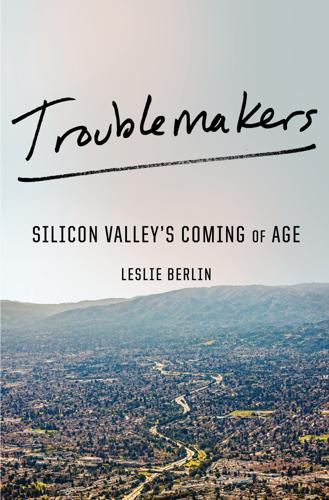
Troublemakers: Silicon Valley's Coming of Age
by
Leslie Berlin
Published 7 Nov 2017
So when someone in the lab suggested the beanbag chairs, other people liked the idea, and the chairs proved cheap, Taylor was happy to have his unconventional meeting room in PARC’s low-slung, glass-faced building in the Stanford Industrial Park, an easy walk from the spot where students had overturned a school bus during the anti-SRI protests three years earlier.2 Now he had some twenty-odd corduroy-covered chairs in the colors of the 1970s rainbow: burnt orange, goldenrod yellow, avocado green, midnight blue.XI In the spring of 1972, a young reporter named Stewart Brand came out to write about the lab for a magazine article on the “youthful fervor and firm dis-Establishmentarianism of the freaks who design computer science.”3 The article would be published in Rolling Stone, established five years before with support from Arthur Rock, the venture capitalist behind Fairchild, Intel, Scientific Data Systems, and soon Apple.
…
The lab was less than two years old when a Xerox executive visited a Dealer meeting, only to be pelted with questions as to “whether or not people at the corporate level were listening in a responsive way to what we at PARC have to say.” (The answer: “a qualified yes.”)33 The split deepened after Rolling Stone published Stewart Brand and Annie Leibovitz’s 1972 article that praised the PARC computer scientists’ “bent away from hugeness and centrality, toward the small and the personal, toward putting maximum computer power in the hands of every individual who wants it.” Brand recalled that the “East Coast headquarters embarked on a major flap about unauthorized information, photos, four-letter words, and the scurrilous Rolling Stone.”
…
Andersen (university controller) to Bob Taylor, Dec. 23, 1969; T. C. King to Taylor, March 3, 1970, both RWT. Taylor, “Some Thoughts on Information Processing at the University of Utah,” March 10, 1970, RWT. 2. The PARC labs on Porter Drive, and later Coyote Hill, were a mile from the Stanford campus. 3. Stewart Brand, “Spacewar!: Fanatic Life and Symbolic Death Among the Computer Bums,” Rolling Stone, Dec. 7, 1972. 4. Taylor told the author that if he were ever the subject of a biography, he wanted the Leibovitz photo for the cover. 5. Martin Campbell-Kelly and William Aspray, Computer: A History of the Information Machine (New York: Basic Books, 1996): 130, 229. 6.
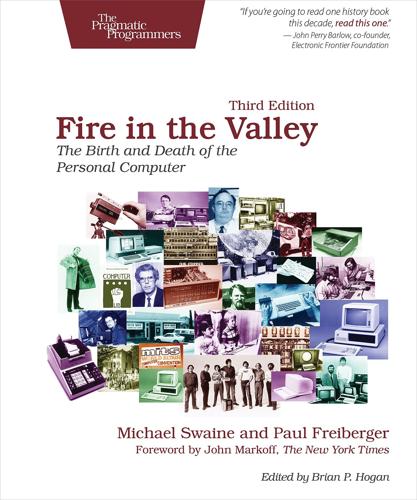
Fire in the Valley: The Birth and Death of the Personal Computer
by
Michael Swaine
and
Paul Freiberger
Published 19 Oct 2014
Our primary debt is to the people who lived this story and graciously granted us entry into what is in fact their personal history—through hundreds of hours of interviews and generous access to documents, records, letters, diaries, time lines, telexes, and photographs. Among others, we are grateful to the following individuals: Scott Adams, Todd Agulnick, David Ahl, Alice Ahlgren, Bob Albrecht, Paul Allen, Dennis Allison, Bill Anderson, Bill Baker, Steve Ballmer, Rob Barnaby, John Barry, Allen Baum, John Bell, Tim Berners-Lee, Tim Berry, Ray Borrill, Stewart Brand, Dan Bricklin, Keith Britton, David Bunnell, Nolan Bushnell, Maggie Canon, David Carlick, Douglas Carlston, Mark Chamberlain, Hal Chamberlin, Roger Chapman, Alan Cooper, Sue Cooper, Ben Cooper, John Craig, Andy Cunningham, Eddie Curry, Steve Dompier, John Draper, John Dvorak, Doug Engelbart, Chris Espinosa, Gordon Eubanks, Ed Faber, Federico Faggin, Lee Felsenstein, Bill Fernandez, Todd Fischer, Richard Frank, Bob Frankston, Paul Franson, Nancy Freitas, Don French, Gordon French, Howard Fulmer, Dan Fylstra, Mark Garetz, Harry Garland, Jean-Louis Gassee, Bill Gates, Bill Godbout, John Goodenough, Chuck Grant, Wayne Green, Dick Heiser, Carl Helmers, Kent Hensheid, Andy Hertzfeld, Ted Hoff, Thom Hogan, Rod Holt, Randy Hyde, Peter Jennings, Steve Jobs, Bill Joy, Philippe Kahn, Mitch Kapor, Vinod Khosla, Guy Kawasaki, Gary Kildall, Joe Killian, Dan Kottke, Barbara Krause, Tom Lafleur, Jaron Lanier, Phil Lemons, Phil Levine, Andrea Lewis, Bill Lohse, Mel Loveland, Scott Mace, Regis McKenna, Marla Markman, Mike Markkula, Bob Marsh, Patty McCracken, Dorothy McEwen, Patrick McGovern, Scott McNealy, Roger Melen, Seymour Merrin, Edward Metro, Vanessa Mickan, Jill Miller, Dick Miller, Michael Miller, Fred Moore, Gordon Moore, Lyall Morrill, George Morrow, Jeanne Morrow, Theodor Holm Nelson, Robert Noyce, Tom and Molly O’Neill, Terry Opdendyk, Adam Osborne, Chuck Peddle, Harvard Pennington, Joel Pitt, Fred “Chip” Poode, Frank and Susan Raab, Jeff Raikes, Janet Ramusack, Jef Raskin, Ed Roberts, Roy Robinson, Tom Rolander, Phil Roybal, Seymour Rubinstein, Sue Runfola, Chris Rutkowski, Paul Saffo, Art Salsberg, Wendell Sanders, Ed Sawicki, Joel Schwartz, John Sculley, Jon Shirley, John Shoch, Richard Shoup, Michael Shrayer, Bill Siler, Les Solomon, Deborah Stapleton, Alan Stein, Barney Stone, Don Tarbell, George Tate, Paul Terrell, Larry Tesler, Glenn Theodore, John Torode, Jack Tramiel, Bruce Van Natta, Jim Warren, Larry Weiss, Randy Wigginton, Margaret Wozniak, Steve Wozniak, Larry Yaeger, Greg Yob, and Pierluigi Zappacosta.
…
Rebelling Against the Priesthood Bob Albrecht had left Control Data Corporation in the 1960s because of its reluctance to consider the idea of a personal computer, and had, with friends, started a nonprofit alternative-education organization called the Portola Institute. From Portola sprang The Whole Earth Catalog, under the orchestration of Stewart Brand, with its emphasis on access to tools. This, in turn, inspired actress Celeste Holm’s son Ted Nelson to write a book similar in spirit but about access to computers. Nelson’s Computer Lib proclaimed, well before the Altair was announced, “You can and must understand computers NOW!” Nelson was the Tom Paine and his book the Common Sense of this revolution.
…
At least a few writers and several publishing houses were making a lot of money on books that explained how to use software, the very same task that a user manual was designed to accomplish. In one legendary deal, a publisher paid a $1.1 million advance for The Whole Earth Software Catalog, a book that offered reviews of software products. The huge advance was thought fair even though many of the reviews would already be out of date before the book was published, recalled Stewart Brand, who coordinated the project. Industry magazines were evolving right along with the products they featured. The more technically geared magazines, like Byte, spanned platforms (such as computers running the CP/M operating system, IBM PCs, and Macintosh computers) in their coverage and addressed readers interested in all kinds of computers.

The God Species: Saving the Planet in the Age of Humans
by
Mark Lynas
Published 3 Oct 2011
This is the story of a species whose biological characteristics combined with an accident of fate to have world-shattering consequences. And it is a story that might shed some light on the central question of this book—whether we are rebel organisms destined to destroy the biosphere, or divine apes sent to manage it intelligently and so save it from ourselves. Perhaps the environmentalist and futurist Stewart Brand put it best when he wrote these words: “We are as gods and have to get good at it.”5 Amen to that. THE DESCENT OF MAN Listening to some environmentalists talk, it is easy to get the feeling that humanity is somehow unnatural, a malign external force acting on the natural biosphere from the outside.
…
“One does not fight the corporate misdeeds of the automotive industry, for instance, by demanding that the wheel must be banned,” someone pointed out in a thought-provoking analogy. I decided to stop writing about genetic engineering for a while and read up on the science before tackling the subject again. A second eureka moment came in a book by an environmentalist who had already changed his mind about genetic engineering, the American writer Stewart Brand. In the opening sentence of the “Green Genes” chapter in his 2010 book Whole Earth Discipline, Brand writes: “I daresay the environmental movement has done more harm with its opposition to genetic engineering than any other thing we’ve been wrong about. We’ve starved people, hindered science, hurt the natural environment, and denied our own practitioners a crucial tool.”
…
Some in the environmental movement have begun to realize this mistake, including members of the Green Party and the former director of Greenpeace U.K., Stephen Tindale, who courageously joined with me to make a front-page “mea culpa” declaration in the Independent newspaper on February 23, 2009.68 In the U.S., both Stewart Brand and NASA scientist (and planetary boundaries co-author) James Hansen have strongly supported nuclear in the battle against climate change. In Britain, my friend and colleague the writer George Monbiot, one of the Green movement’s most fearsome and well-known campaigners, wrote in the Guardian that the Fukushima disaster had convinced him that nuclear power was actually less dangerous than his environmental comrades confidently asserted, especially when compared to fossil fuels.
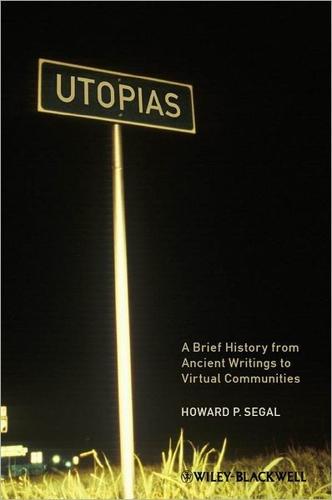
Utopias: A Brief History From Ancient Writings to Virtual Communities
by
Howard P. Segal
Published 20 May 2012
Much of the renewed interest derives from the Energy Policy Act of 2005, which “is stuffed with generous subsidies for nuclear power and other alternatives to fossil fuels.” As the head of General Electric, Jeffrey Immelt, has argued, “it’s hard to believe simultaneously in energy security and reduction of greenhouse gas emissions without believing in nuclear power.”43 Increasing numbers of environmentalists are conceding this point, among them the famous Stewart Brand, creator of The Whole Earth Catalog. Brand confessed to his traditional opponents: “I’m sorry. I was wrong, you were right. I’m sorry.” Brand has nevertheless maintained his utopian propensities despite this Utopia Reconsidered 153 change of heart and has embraced a decentralized corporate vision of information technologies and computer networks that nicely complements those of capitalist leaders such as Immelt.
…
No radioactivity was released, but this accident took place just as the plant’s owners had applied to the NRC for a twenty-year extension of its license beyond its 2012 expiration date. That twenty-year extension was later granted by the NRC, but both the governor and the state are fighting it. Yet Vermont Yankee provides a third of the state’s electricity generation, and the same dilemma that converted Stewart Brand confronts Vermont’s residents. As a New York Times reporter noted recently, at present Vermont has “only one commercial wind farm, eleven turbines along a mountain ridge. They have less than one percent of the capacity of Vermont Yankee,” itself a relatively small nuclear power plant.47 Should we be surprised that Maine Yankee’s most passionate defenders have made the same point in denouncing that plant’s closure?
…
Wald, “After 35-Year Lull, Nuclear Power May Be in Early Stages of a Revival,” New York Times, October 24, 2008, B3; and Elizabeth Spiers, “The Case for Nukes,” Fortune, 157 (June 9, 2008), 22. Steward Brand quoted in Whitford, “Going Nuclear,” 54. See Fred Turner, From Counterculture to Cyberculture: Stewart Brand, the Whole Earth Network, and the Rise of Digital Utopianism (Chicago: University of Chicago Press, 2006). See Whitford, “Going Nuclear,” 48. One possible new—or, more precisely, partially new—plant could be the presently dismantled Unit 2 of Seabrook Station. Although there are no plans to reopen Unit 2, opponents of any revival have made their concerns amply known.
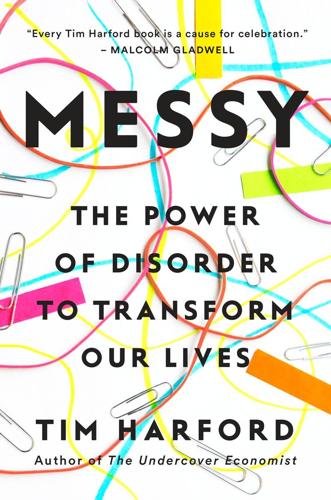
Messy: The Power of Disorder to Transform Our Lives
by
Tim Harford
Published 3 Oct 2016
But few modern offices boast the extreme reconfigurability of Building 20: when the atomic clock was being developed by a team led by Jerrold Zacharias, the group simply removed a couple of floors from their laboratory to accommodate it. And Building 20’s true advantage wasn’t so much that it was reconfigurable by design, but that the building’s inhabitants felt confident that they had the authority (if only by default) to make changes, even messy changes. It was that it was so cheap and ugly that in the words of Stewart Brand, author of How Buildings Learn, “Nobody cares what you do in there.” Unlike at Kyocera or Chiat/Day, Building 20’s inhabitants were in control. Heather Lechtman, professor of material science and archaeology, told Brand: “We feel our space is really ours. We designed it, we run it.” After Jerome Wiesner became president of MIT in 1971, he kept a secret office tucked away in Building 20.
…
Thanks to Adele Armstrong, Katerina Billouri, Wolfango Chiappella, Sir Andrew Dilnot, Alice Fishburn, Richard Fisher, Bruno Giussani, Cesar Hidalgo, Nigel House, Emma Jacobs, Richard Knight, Martin Lloyd, Patricia Ryan Madson, Sue Matthias, and Scott Page. I am also grateful to my colleagues at the Financial Times and the BBC for being such inspirational people to work with. Thanks to everyone who gave up their time to be interviewed for the book: David Allen, Gwyn Bevan, Stewart Brand, Shelley Carson, Mathijs de Vaan, Brian Eno, Digby Fairweather, Tim Gill, Nicola Green, Andy Haldane, Guy Haworth, Craig Knight, John Kounios, Charles Limb, Michael Norton, Gerald Ratner (interviewed by Emma Jacobs), Ken Regan, Keith Sawyer, Balázs Vedres, and Holly White. As a glance at the references will reveal, I have a considerable debt to the journalists, writers, and thinkers whose reporting or analysis has informed my own ideas, but in particular: On music: Ashley Kahn, Paul Trynka, and the BBC documentary teams behind For One Night Only: The Cologne Concert and Oblique Strategies.
…
As a glance at the references will reveal, I have a considerable debt to the journalists, writers, and thinkers whose reporting or analysis has informed my own ideas, but in particular: On music: Ashley Kahn, Paul Trynka, and the BBC documentary teams behind For One Night Only: The Cologne Concert and Oblique Strategies. On creative prodigies: Paul Hoffman and Ed Yong. On architecture: Warren Berger, Stewart Brand, Alain de Botton, and Jonah Lehrer. On Martin Luther King, Jr.: Taylor Branch, David Garrow, and Stephen Oates. On Bezos, Rommel, and Stirling: Virginia Cowles, David Fraser, and Brad Stone. On Flight 447: William Langewiesche, Jeff Wise, and the staff of 99% Invisible. On Hans Monderman: Tom Vanderbilt.

The Seventh Sense: Power, Fortune, and Survival in the Age of Networks
by
Joshua Cooper Ramo
Published 16 May 2016
Working with composer Brian Eno on the sound of the clock chime, and with a team of geologists and physicists, Hillis had made the clock into a natural extension of his Tinkertoy tic-tac-toe machine, a device that served a purpose and sent a message. If there is an emotion the clock conveys in the way that Bernini’s Apollo and Daphne might inspire terror or joy, it is meant to be awe. Stewart Brand, one of the supporters of the clock and an early member of the New Caste too, would tell you that the idea for the clock had emerged from a desire to emphasize, to physicalize, the importance of longer-term thinking in a way that no one could forget. We’ve all arrived now, Brand and the other clock masters worried, at a moment in history when no one has a view that extends much past his or her own life—or sometimes past the next election, or the next fashion season, or the next financial quarter.
…
Computers were once switched on at nine and off at five—just like their human masters. But digital activity is constant now. The networks are paying attention all the time. They have to. Our machines—tractors and trains and cars—used to echo our pace of life. Now we echo theirs. We want them to be fast. To be instant. It was certainly true, as Stewart Brand insisted in his manifesto, that the Clock of the Long Now was meant as a reminder, as a kind of constant totem of the fact that we’re all just a small tick on the endless continuum. We do think in too short a time frame. But the clock also, I began to suspect as I considered it, had another role.
…
The immense possibility: Ryan Gallagher, “Profiled: From Radio to Porn, British Spies Track Web Users’ Online Identities,” The Intercept, September 25, 2015; GCHQ documents, “PullThrough Steering Group Meeting #16,” at https://theintercept.com/document/2015/09/25/pull-steering-group-minutes/. “We were not aware”: John Maynard Keynes, “My Early Beliefs,” in Two Memoirs by J. M. Keynes: “Dr. Melchior, a Defeated Enemy,” and “My Early Beliefs” (New York: A. M. Kelley, 1949), 99. Chapter 8. “MAPREDUCE”: THE COMPRESSION OF SPACE AND TIME “Civilization is revving itself”: Stewart Brand, The Clock of the Long Now: Time and Responsibility (New York: Basic Books, 1999), 2. “Summer afternoon”: Edith Wharton, A Backward Glance (New York: D. Appleton-Century, 1934). See chapter 8 for her tale of an afternoon with Henry James. “With each crossing”: Georg Simmel, “The Metropolis and Mental Life” (1903), in The Sociology of Georg Simmel, trans., ed., and intro by Kurt H.

Cataloging the World: Paul Otlet and the Birth of the Information Age
by
Alex Wright
Published 6 Jun 2014
Dressed in the white shirt of a working engineer, the soft-spoken former Navy telegraph operator demonstrated a working model of a system that struck many of the idealistic San Francisco counterculture types in attendance as representing nothing short of a revolution in human consciousness. Equipped with a video monitor, keyboard, and central pro cessor, Engelbart’s demo included applications for word processing, sending messages between users, and even building links from one document to another. Stewart Brand (of the Electric Kool-Aid Acid Test and Whole Earth Catalog fame) manned a video camera trained on Engelbart’s on-stage keyboard, while Engelbart proceeded to show a working prototype of a fully functional hypertext system, including a word processor, video and graphics displays, and the ability to link one document to another, all connected to another computer in Menlo Park by a 1,200-baud modem.
…
Brown University computer science professor and early hypertext pioneer Andy van Dam was there and subsequently dubbed the event “the Mother of all Demos.” Also in attendance were a few key members of the original NLS team, who migrated over to Xerox’s PARC research division under the direction of Alan Kay, with whom they began developing the first true personal computer, the Alto. Stewart Brand, who was of course there, later brought the novelist and ur–Merry Prankster Ken Kesey over to look at the system; Kesey promptly dubbed it “the next thing after acid.”16 By the early 1970s, a “People’s Computer Center” had appeared in Menlo Park, providing access to rudimentary computer tools that would allow customers to play games or learn to program.
…
In contrast to the topdown, centrally managed world of mainframe computers that still dominated in the corporate, military, and government power centers that funded the bulk of computer purchases, the new breed of counterculture programmers valued free expression and self- determination. “Half or more of computer science is heads” (meaning, roughly, hippies), wrote Stewart Brand in a landmark profile of the Bay Area computer science scene for Rolling Stone magazine.17 Imbued with an ethos of individual freedom and self-expression, many of the early acolytes of the digital revolution—like Brand, Kevin Kelly, Howard Rheingold, and others—came of age during this period when top-down schemes were seen as tools of suppression and control, administered by “the Man.”
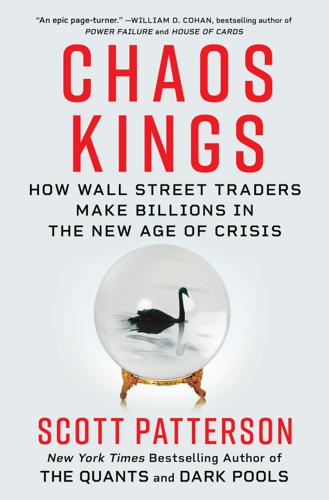
Chaos Kings: How Wall Street Traders Make Billions in the New Age of Crisis
by
Scott Patterson
Published 5 Jun 2023
Brockman had earlier sent Taleb a list of topics included in the so-called Master Class, a dizzying witches’ brew of techno-wizardry: what is life, origins of life, in-vitro synthetic life, mirror life, metabolic engineering for hydrocarbons and pharmaceuticals, computational tools, electronic-biological interfaces, nanotech-molecular manufacturing, biosensors, accelerated lab evolution, engineered personal stem cells, multivirus-resistant cells, humanized mice, bringing back extinct species. At the SpaceX facility, Church gave a talk called “Dreams and Nightmares.” Attendees included venture capitalist Sean Parker, an original Facebook backer; Google’s Larry Page; behavioral economist Richard Thaler; Stewart Brand, creator of the Whole Earth Catalog; someone from the White House; and a bunch of egghead scientists. Elon Musk ducked in from time to time to listen. Taleb introduced himself as a professor of risk engineering, which he said “doesn’t explain what I do.” Church, a tall, wizardly man with a heavy white beard, explained that, contrary to popular belief, geneticists still hadn’t mapped the entire human genome.
…
The science behind GMOs was about three decades old. These concoctions might provide a short-term benefit and feed more people, but over the long run—across generations—the impact could be disastrous on a global level, a risk that should never be taken, Taleb warned. Taleb sent his letter to Stewart Brand, creator of the Whole Earth Catalog and president of the Long Now Foundation, whose goal was to improve long-term thinking. Taleb, who’d briefly met Brand at the Brockman conference at SpaceX in 2009, was shocked by his reply. “The science of genetic engineering is far more precise than blind selective breeding, and for that reason it is even safer,” Brand wrote.
…
Pull one thread of the spiderweb and the whole web can fall apart. The impact is nonlinear since a small input can crash the whole edifice just as Luke Skywalker’s tiny proton torpedoes blew up the Death Star in the blink of an eye. Scale matters, as Taleb had noted in his Longplayer letter to Stewart Brand. Throwing a fifty-pound stone at a person’s head can cause massive harm. Throwing ten thousand pebbles that, added up, weigh fifty pounds, causes zero harm. Uncertainty about impacts and the reliability of models increases the risk of ruin and calls for more precaution. “More skepticism about models implies more uncertainty about the tails, which necessitates more precaution about newly implemented techniques, or larger size of exposures,” Taleb and his coauthors wrote.

Dealers of Lightning
by
Michael A. Hiltzik
Published 27 Apr 2000
Ingalls, LRG member, developer of “BitBlt” graphic program and principal developer of Smalltalk Adele Goldberg, LRG member, learning specialist and co-developer of Smalltalk Ted Kaehler, LRG member, co-developer of Smalltalk and “Twang” music program Diana Merry, LRG member and co-developer of Smalltalk Larry Tesler, LRG member, co-designer of Gypsy user-friendly word processing program and first PARC principal scientist to be hired by Apple John Shoch, LRG member, inventor of the Worm Tim Mott, co-designer of Gypsy Chris Jeffers, childhood friend of Kay’s and “chief of staff” of LRG Gary Starkweather, inventor of the laser printer Lynn Conway, co-developer (with Carver Mead) of VLSI tools and technology allowing the design of highly complex integrated circuits on silicon chips Douglas Fairbairn, hardware implementer of POLOS and co-designer (with Tesler) of the Notetaker portable computer Bill English, head of POLOS (PARC On-Line Office System) group, early but unsuccessful multimedia office network Bill Duvall, chief designer of POLOS David Liddle, head of System Development Division after 1978, supervisor of the development of the Xerox Star, first fully realized commercial version of a PARC computer GENERAL SCIENCE LABORATORY Gerald Lucovsky, associate manager (reporting to Pake) David Thornburg, scientist David Biegelsen, scientist OPTICAL SCIENCE LABORATORY (AFTER 1973): John C. Urbach, manager OTHERS: Max Palevsky, founder of Scientific Data Systems (SDS), sold to Xerox in 1969 Rigdon Currie, chief of sales at SDS Stewart Brand, founder of the Whole Earth Catalog and author of “Spacewar,” 1972 article in Rolling Stone that introduced PARC to the general public Carver Mead, California Institute of Technology professor and co-developer of VLSI tools and technology at PARC James Clark, principal inventor of the “Geometry Engine” graphics chip at PARC, founder of Silicon Graphics Inc. and Netscape Communications Corp.
…
June: Bob Metcalfe encounters a technical paper describing Hawaii’s ALOHAnet, several principles of which he will incorporate into Ethernet. September: MAXC having been completed, Thacker and Lampson invite Kay to join their project to build a small personal computer. The machine will be known as the Alto. November 22: Thacker begins design work on the Alto. December 7: Rolling Stone publishes Stewart Brand’s article “Spacewar,” sparking months of controversy by its depiction of computer research at PARC. April: The first Alto becomes operational, displaying an animated image of Sesame Street’s Cookie Monster. April: Dick Shoup’s “Superpaint” frame buffer records and stores its first video image, showing Shoup holding a sign reading, “It works, sort of.”
…
Together they drove to an off-campus newsstand where they found the magazine prominently displayed. Before they had read to the end of “Spacewar” they knew they had a major crisis on their hands. With Bob Taylor’s apparent permission, but to the complete ignorance of anyone else in PARC management, the writer Stewart Brand had apparently been ranging freely through the Computer Science Lab for weeks. Brand was a technology fancier whose recent sale of the Whole Earth Catalog, his popular offbeat guidebook, had left him with the money and time to conduct a personal grand tour of the Bay Area’s leading computer research facilities.
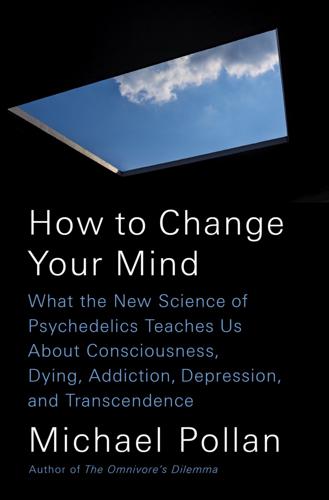
How to Change Your Mind: What the New Science of Psychedelics Teaches Us About Consciousness, Dying, Addiction, Depression, and Transcendence
by
Michael Pollan
Published 30 Apr 2018
“You had to be able to visualize a staggering complexity in three dimensions, hold it all in your head. They found that LSD could help.” Schwartz eventually realized that “everyone in that community”—referring to the Bay Area tech crowd in the 1960s and early 1970s, as well as the people in and around Stewart Brand’s Whole Earth Network—“had taken Hubbard LSD.” Why were engineers in particular so taken with psychedelics? Schwartz, himself trained as an aerospace engineer, thinks it has to do with the fact that unlike the work of scientists, who can simplify the problems they work on, “problem solving in engineering always involves irreducible complexity.
…
Schwartz, himself trained as an aerospace engineer, thinks it has to do with the fact that unlike the work of scientists, who can simplify the problems they work on, “problem solving in engineering always involves irreducible complexity. You’re always balancing complex variables you can never get perfect, so you’re desperately searching to find patterns. LSD shows you patterns. “I have no doubt that all that Hubbard LSD all of us had taken had a big effect on the birth of Silicon Valley.” Stewart Brand received his own baptism in Hubbard LSD at IFAS in 1962, with James Fadiman presiding as his guide. His first experience with LSD “was kind of a bum trip,” he recalls, but it led to a series of other journeys that reshaped his worldview and, indirectly, all of ours. The Whole Earth Network Brand would subsequently gather together (which included Peter Schwartz, Esther Dyson, Kevin Kelly, Howard Rheingold, and John Perry Barlow) and play a key role in redefining what computers meant and did, helping to transform them from a top-down tool of the military-industrial complex—with the computer punch card a handy symbol of Organization Man—into a tool of personal liberation and virtual community, with a distinctly countercultural vibe.
…
Brand came down from his roof and launched a campaign that eventually reached the halls of Congress and NASA. Who knows if it was the direct result of Brand’s campaign, but two years later, in 1968, the Apollo astronauts turned their cameras around and gave us the first photograph of Earth from the moon, and Stewart Brand gave us the first edition of the Whole Earth Catalog. Did everything change? The case could be made that it had. Part II: The Crack-Up Timothy Leary came late to psychedelics. By the time he launched the Harvard Psilocybin Project in 1960, there had already been a full decade of psychedelic research in North America, with hundreds of academic papers and several international conferences to show for it.
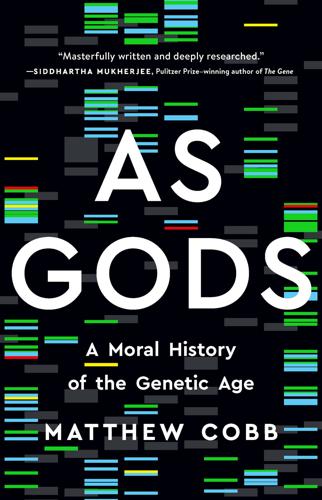
As Gods: A Moral History of the Genetic Age
by
Matthew Cobb
Published 15 Nov 2022
In each of these fields our ability to alter genes is both extraordinarily far-reaching and profoundly threatening, for ourselves and for the rest of the planet. As mythology teaches us, gods are not always benevolent. But there is another side to this view of scientists ‘playing God’. In 1968, in the heart of what would soon be called Silicon Valley, Stanford biology graduate Stewart Brand published the first issue of the Whole Earth Catalog.i Part hippie mail-order listing, part instruction manual for the Age of Aquarius, Brand called the Catalog ‘a guide to resources’. In the Introduction to the 1969 edition, written shortly before genetic engineering became a reality and at a time of growing doubts about science, Brand made a striking declaration that served as a manifesto for his view of the modern world: ‘We are as gods and might as well get good at it.’
…
As an indication of the challenge involved, it took Venter’s group twenty years to master this procedure in a bacterial cell, which has only one chromosome and does not have a nucleus or any of the complex structures found in eukaryotes such as elephants and mammoths and does not develop into a large, hairy, intelligent animal. Tweet by Stewart Brand, March 2021. Even if all this went smoothly, the resultant embryo would have to be implanted into a surrogate – again, an Asian elephant would be best – and the myriad interactions between embryo and mother would have to function appropriately for months and not kill either or both. This is much trickier than you might think – a few years ago a Spanish-led team of researchers tried to clone an extinct subspecies of Pyrenean ibex; hundreds of embryos were created and implanted in a series of surrogate mothers of the same species, but only one animal was born and she died a few minutes after birth.7 Things could so easily go awry using a surrogate from a different species.
…
Even if every one of those unbelievably complex steps could be overcome, there would be profound ethical questions about the well-being of these extraordinary animals in the alien world in which they would find themselves. As a result of these very real problems, the woolly mammoth de-extinction scheme, initially the brainchild of George Church, has recently become less mammoth in scope. The current version of the project, partly funded by Revive & Restore (R&R), a US foundation co-founded by Stewart Brand, focuses on identifying those alleles that adapted the mammoth to cold temperatures, with the dream of maybe some day creating an elephant with enough mammothy characteristics to enable it to live in northern climes. By 2022, a biotech start-up co-founded by Church called Colossal Biosciences had raised $75 millionii to try to create a ‘cold-resistant elephant’, which it was claimed would be ‘functionally equivalent’ to a mammoth.
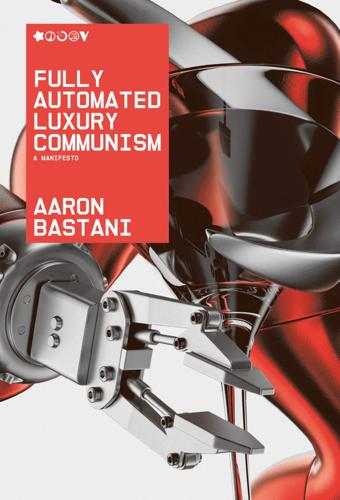
Fully Automated Luxury Communism
by
Aaron Bastani
Published 10 Jun 2019
Together, these crises – encompassing climate change, resource scarcity, ever-larger surplus populations, ageing and technological unemployment as a result of automation – are set to undermine capitalism’s ability to reproduce itself. That is because they could dissolve some of its key features like the presumption of constant expansion and infinite resources, production for profit, and workers having to sell their labour. In 1984 the futurist Stewart Brand made the now-iconic declaration ‘Information wants to be free.’ He would later clarify what that meant, saying, On the one hand information wants to be expensive, because it’s so valuable. The right information in the right place just changes your life. On the other hand, information wants to be free, because the cost of getting it out is getting lower and lower all the time.
…
What was now identified as the most valuable aspect of a commodity was also – technically, at least – capable of infinite replication at near zero cost: ‘once the cost of creating a new set of instructions has been incurred the instructions can be used over and over again at no additional cost. Developing new and better instructions is equivalent to incurring a fixed cost.’ Romer made no mention of the hacker movement, but this was starting to sound remarkably similar to Stewart Brand’s conclusion that ‘information wants to be free’ some six years earlier. This contradiction was particularly portentous for market capitalism. As Larry Summers and J. Bradford DeLong would write in August 2001, just a month after the file-sharing service Napster was taken down, ‘the most basic condition for economic efficiency … [is] that price equal marginal cost.’
…
. _________________ * Addressing the General Assembly on 22 September 1960, President Eisenhower indeed proposed that the principles of the Antarctic Treaty be applied to outer space and celestial bodies. * In 1973 dollars it was calculated to have cost $25.4 billion. 7 Editing Destiny: Age and Post-Scarcity in Health We are as gods … we might as well get good at it. Stewart Brand An Ageing Species By 2020, for the first time in human history, there will be more people over the age of sixty-five than under the age of five. By 2050 there will be more people over sixty-five than under fourteen. This is perhaps the crowning achievement of our species – nowhere else in nature do the old outnumber the young.
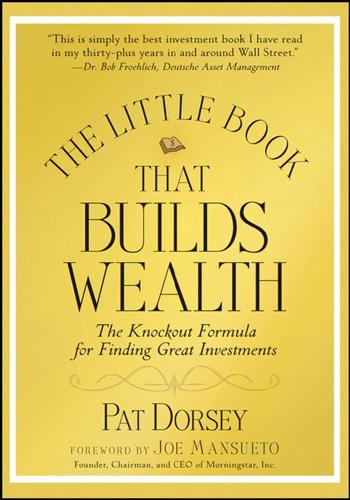
The Little Book That Builds Wealth: The Knockout Formula for Finding Great Investments
by
Pat Dorsey
Published 1 Mar 2008
So, I’d say Deere has a narrow but solid economic moat, and we can have some confidence that the company will continue to generate solid returns on capital for some time into the future. Our next example takes us from the heartland to the Hamptons—Martha Stewart Living Omnimedia, which licenses the Martha Stewart brand and also produces magazines and TV shows. Given Martha’s popularity—even after a brief sojourn in the pokey—we might expect the company to be pretty profitable. Let’s check the numbers by referring to Exhibit 11.3. EXHIBIT 11.3 Martha Stewart Living Omnimedia Hmm. Not very impressive, are they?
…
While that’s not a terrible return on capital, we should expect better from a business that doesn’t have a whole lot of invested capital to begin with. After all, Martha Stewart Living Omnimedia produces a magazine and a TV show, and licenses the brand to other companies; it doesn’t own a whole bunch of factories or expensive inventory. So, despite the resurgent popularity of the Martha Stewart brand, I have to conclude that her company has no economic moat. And that’s not a good thing. Moving from a firm without much invested capital to one with a whole lot of it, let’s take a look at Arch Coal, the country’s second-largest coal producer. It’s generally tough for commodity firms to dig an economic moat, so we’ll probably be a bit skeptical when we start the analysis.
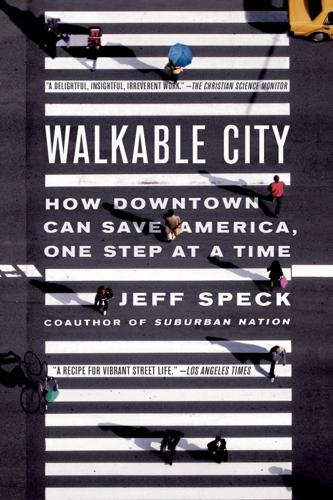
Walkable City: How Downtown Can Save America, One Step at a Time
by
Jeff Speck
Published 13 Nov 2012
There is mounting evidence that dense, walkable cities generate wealth by sheer virtue of the propinquity that they offer. This is a concept that is both stunningly obvious—cities exist, after all, because people benefit from coming together—and tantalizingly challenging to prove.● This hasn’t kept it from the lips of some of our leading thinkers, including Stewart Brand, Edward Glaeser, David Brooks, and Malcolm Gladwell. Speaking at the Aspen Institute, David Brooks pointed out how most U.S. patent applications, when they list similar patents that influenced them, point to other innovators located less than twenty-five miles away. He also mentioned a recent experiment at the University of Michigan, where “researchers brought groups of people together face to face and asked them to play a difficult cooperation game.
…
Witold Rybczynski, Makeshift Metropolis, 83. 35. Jeff Speck, “Six Things Even New York Can Do Better.” 36. Ken Livingstone, winner commentary by Mayor of London, World Technology Winners and Finalists. 37. Data taken alternately from two sources: Ibid., and Wikipedia, “London Congestion Charge.” 38. Ibid. 39. Stewart Brand, Whole Earth Discipline, 71. 40. Wikipedia, “New York Congestion Pricing.” 41. Ibid. 42. Ibid. 43. Nozzi, op. cit. 44. Bernard-Henri Lévy, American Vertigo. 45. Ivan Illich, Toward a History of Needs. 46. Ibid., 119. 47. Duany, Plater-Zyberk, and Speck, 91n. 48. Catherine Lutz and Anne Lutz Fernandez, Carjacked, 145.
…
air conditioners Alarm UK Alaskan Way Viaduct Alexander, Christopher Alfonzo, Mariela Allen, Paul Amazon.com American City American Dream Coalition American Recovery and Reinvestment Act anchors and paths ArtPlace Aspen Ideas Festival Aspen Institute asthma Atlantic, The autobahns Baacke, Adam Babjack, Kristen Barnes, Henry “Barnes Dance” intersections Barnett, David Beatley, Timothy Bed Bath & Beyond Belden Russonello & Stewart Bel Geddes, Norman Bellow, Saul Benfield, Kaid Bernstein, Andrea Bernstein, Scott Berreby, David Best Buy Bettencourt, Luis bicycle boulevards Bicycling (magazine) bikerealtor.com biking; accidents; bicycle boulevards and; cycle tracks and; docking stations; and “green waves”; health benefits of; housing values and; infrastructure for; investment in; lanes for; rise in commuter; safety and; separated path for; shared route; sharing programs for; sharrows and; statistics on; urbanism needed for; vehicular Bill & Melinda Gates Foundation Birk, Mia Bloomberg, Michael Blue Zones Blue Zones, The (Buettner) Board of Trade (Washington, D.C.) Board of Zoning Appeals (Washington, D.C.) Boston Globe Boulevard Book, The (Jacobs) Bowling Alone (Putnam) Boyer, Heather Brady Bunch, The (TV show) Brancusi, Constantin Brand, Stewart Brand Muscle British Columbia, University of British Medical Journal Brookings Institution Brooks, David Broyard, Anatole Buehler, Ralph Buettner, Dan “Built Environment and Traffic Safety, The: A Review of Empirical Evidence” (Ewing and Dumbaugh) Burden, Dan buses Bush, George W. Bus Rapid Transit (BRT) Byrne, David Calder, Alexander California, University of, Los Angeles California Health and Safety Code Campanella, Thomas “Canadian and American Cities: Our Differences Are the Same” (London) Capital Bikeshare (Washington, D.C.)

The Internet Is Not the Answer
by
Andrew Keen
Published 5 Jan 2015
By 2012 there were more than 3 billion email accounts around the world sending 294 billion emails, of which around 78% were spam.37 Another popular feature was the Bulletin Board System (BBS), which enabled users with similar interests to connect and collectively share information and opinions. Among the best known of these was the Whole Earth ’Lectronic Link (the WELL), begun in 1985 by the Whole Earth Catalog founder Stewart Brand. The WELL captured much of the countercultural utopianism of early online users who believed that the distributed structure of the technology created by Internet architects like Paul Baran, with its absence of a central dot, represented the end of traditional government power and authority. This was most memorably articulated by John Perry Barlow, an early WELL member and lyricist for the Grateful Dead, in his later 1996 libertarian manifesto “Declaration of the Independence of Cyberspace.”
…
This libertarian worship of the unregulated network and disdain for government destroys jobs “without creating new ones,” Cohen explains, and it compounds “the already dizzying chasm between the rich and the rest.”3 The origins of this infinitely disruptive libertarianism, of the only rule being the absence of rules, can be traced back to the 1960s. According to the Stanford University historian Fred Turner, the Internet’s borderless idealism, and its ahistorical disdain for hierarchy and authority, especially the traditional role of government, were inherited from the countercultural ideas of Internet pioneers like WELL founder Stewart Brand and the “Declaration of the Independence of Cyberspace” author John Perry Barlow.4 Silicon Valley, Turner says, has become an extension of the fancy-dress affair in Marin County where I met Michael Birch. It’s a sixties nostalgia fantasy hosted by space cadets like Birch who appear to have seceded from both time and space.
…
Keith recommended me to Paul Carr and Jon Orlin at TechCrunchTV, and my show Keen On . . . was the first program on the network, running for four years and including over two hundred interviews with leading Internet thinkers and critics. In particular, I’d like to thank Kurt Andersen, John Borthwick, Stewart Brand, Po Bronson, Erik Brynjolfsson, Nicholas Carr, Clayton Christensen, Ron Conway, Tyler Cowen, Kenneth Cukier, Larry Downes, Tim Draper, Esther Dyson, George Dyson, Walter Isaacson, Tim Ferriss, Michael Fertik, Ze Frank, David Frigstad, James Gleick, Seth Godin, Peter Hirshberg, Reid Hoffman, Ryan Holiday, Brad Horowitz, Jeff Jarvis, Kevin Kelly, David Kirkpatrick, Ray Kurzweil, Jaron Lanier, Robert Levine, Steven Levy, Viktor Mayer-Schönberger, Andrew McAfee, Gavin Newsom, George Packer, Eli Pariser, Andrew Rasiej, Douglas Rushkoff, Chris Schroeder, Tiffany Shlain, Robert Scoble, Dov Seidman, Gary Shapiro, Clay Shirky, Micah Sifry, Martin Sorrell, Tom Standage, Bruce Sterling, Brad Stone, Clive Thompson, Sherry Turkle, Fred Turner, Yossi Vardi, Hans Vestberg, Vivek Wadhwa, and Steve Wozniak for appearing on Keen On . . . and sharing their valuable ideas with me.
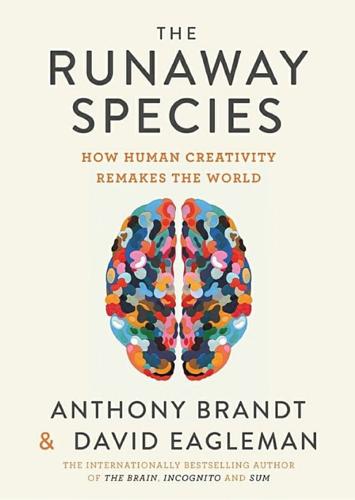
The Runaway Species: How Human Creativity Remakes the World
by
David Eagleman
and
Anthony Brandt
Published 30 Sep 2017
In that ramshackle building, Noam Chomsky developed his pioneering theories about human language, Harold Edgerton pursued high-speed photography and Amar Bose patented his loudspeakers. The first video game was invented there, and a host of tech companies were born. The building came to be known as the “magical incubator.” As Stewart Brand wrote in his book How Buildings Learn: Building 20 raises a question about what are the real amenities. Smart people gave up good heating and cooling, carpeted hallways, big windows, nice views, state-of-the-art construction, and pleasant interior design for what? For sash windows, interesting neighbors, strong floors, and freedom.23 Working long-term in a temporary building is typically not an option.
…
id=29705435> 16 Nikil Saval, Cubed: A Secret History of the Workplace (New York: Doubleday, 2014). 17 Patrick May, “Apple’s new headquarters: An exclusive sneak peek,” San Jose Mercury News, October 11, 2013. http://www.mercurynews.com/2013/10/11/2013-apples-new-headquarters-an-exclusive-sneak-peek/ 18 Pap Ndiaye, Nylon and Bombs: DuPont and the March of Modern America (Baltimore: Johns Hopkins University Press, 2007). 19 “‘Forget the Free Food and Drinks – the Workplace is Awful:’ Facebook Employees Reveal the ‘Best Place to Work in Tech’ Can be a Soul-Destroying Grind Like Any Other,” Daily Mail, September 3, 2013, accessed May 11, 2016, <http://www.dailymail.co.uk/news/article-2410298> 20 Maria Konnikova, “The Open-Office Trap,” New Yorker, January 7, 2014, accessed May 17, 2016, http://www.newyorker.com/business/currency/the-open-office-trap 21 Anne-Laure Fayard and John Weeks, “Who Moved My Cube?” Harvard Business Review, July 2011, accessed May 11, 2016, <https://hbr.org/2011/07/who-moved-my-cube> 22 Jonah Lehrer, “Groupthink: The Brainstorming Myth,” New Yorker, January 30, 2012. 23 Stewart Brand, How Buildings Learn: What Happens After They’re Built (New York: Penguin, 1994). 24 Alex Osborn, Your Creative Power: How to Use Imagination (New York: Scribners and Sons, 1948), p. 254. 25 Jeff Gordiner, “At Eleven Madison Park, a New Minimalism,” New York Times, January 4, 2016, accessed May 17, 2016. 26 Pete Wells, “Restaurant Review: Eleven Madison Park in Midtown South,” New York Times, March 17, 2015, accessed May 17, 2016, <http://www.nytimes.com/2015/03/18/dining/restaurant-review-eleven-madison-park-in-midtown-south.html?
…
id=29705435> 16 Nikil Saval, Cubed: A Secret History of the Workplace (New York: Doubleday, 2014). 17 Patrick May, “Apple’s new headquarters: An exclusive sneak peek,” San Jose Mercury News, October 11, 2013. http://www.mercurynews.com/2013/10/11/2013-apples-new-headquarters-an-exclusive-sneak-peek/ 18 Pap Ndiaye, Nylon and Bombs: DuPont and the March of Modern America (Baltimore: Johns Hopkins University Press, 2007). 19 “‘Forget the Free Food and Drinks – the Workplace is Awful:’ Facebook Employees Reveal the ‘Best Place to Work in Tech’ Can be a Soul-Destroying Grind Like Any Other,” Daily Mail, September 3, 2013, accessed May 11, 2016, <http://www.dailymail.co.uk/news/article-2410298> 20 Maria Konnikova, “The Open-Office Trap,” New Yorker, January 7, 2014, accessed May 17, 2016, http://www.newyorker.com/business/currency/the-open-office-trap 21 Anne-Laure Fayard and John Weeks, “Who Moved My Cube?” Harvard Business Review, July 2011, accessed May 11, 2016, <https://hbr.org/2011/07/who-moved-my-cube> 22 Jonah Lehrer, “Groupthink: The Brainstorming Myth,” New Yorker, January 30, 2012. 23 Stewart Brand, How Buildings Learn: What Happens After They’re Built (New York: Penguin, 1994). 24 Alex Osborn, Your Creative Power: How to Use Imagination (New York: Scribners and Sons, 1948), p. 254. 25 Jeff Gordiner, “At Eleven Madison Park, a New Minimalism,” New York Times, January 4, 2016, accessed May 17, 2016. 26 Pete Wells, “Restaurant Review: Eleven Madison Park in Midtown South,” New York Times, March 17, 2015, accessed May 17, 2016, <http://www.nytimes.com/2015/03/18/dining/restaurant-review-eleven-madison-park-in-midtown-south.html?
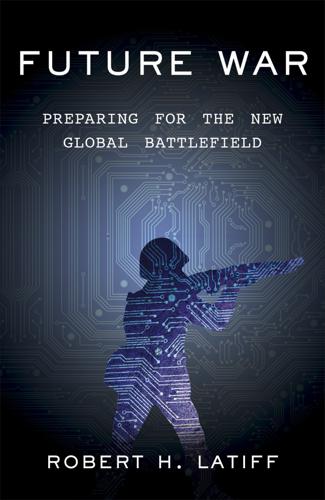
Future War: Preparing for the New Global Battlefield
by
Robert H. Latiff
Published 25 Sep 2017
Space is no longer the sanctuary it once was. INCREASED COMPLEXITY By any measure, the rate of technology development and adoption is accelerating and has brought with it incredible advances for society and for the military. Yet rapid technology growth itself poses an ethical challenge. Time magazine columnist Stewart Brand wrote in 2000, prior to the latest burst of technological innovation, that “change that is too rapid can be deeply divisive; if only an elite can keep up, the rest of us will grow increasingly mystified about how the world works.” As he said, “We can understand natural biology, subtle as it is, because it holds still.
…
However, the chief of the U.S. Army’s Cyber Center of Excellence: Sandra Jontz, “Cyber Ethics Vex Online Warfighters,” Signal, January 1, 2016. The U.S. Air Force designed and built: George I. Seffers, “CHAMP Prepares for Future Fights,” Signal, February 1, 2016. Yet rapid technology growth itself poses: Stewart Brand, “Is Technology Moving Too Fast?,” Time, June 19, 2000. If the situation of dizzying complexity: Samuel Arbesman, “It’s Complicated,” Aeon, January 6, 2014. 2 HOW WE GOT TO NOW Happily, the total numbers of dead: Colin Schulz, “Globally, Deaths from War and Murder Are in Decline,” Smithsonian, March 21, 2014.

Make Your Own Job: How the Entrepreneurial Work Ethic Exhausted America
by
Erik Baker
Published 13 Jan 2025
These non-secretaries were “using the computer for all their word processing” and did “all departmental budgeting on it,” which in Jobs’s view amounted to an entirely new “job description based on allowing people to do more creative work rather than more ‘work work.’”35 One source for Jobs’s emphasis on the power of technology to transfigure people’s relationship to their work—and for his obsessive use of the language of “tools”—was Stewart Brand’s Whole Earth Catalog, whose motto promised “access to tools.” The first Whole Earth Catalog, published in 1968, began with a statement of purpose reprinted in each successive edition. Setting itself against “remotely done power and glory—as via government, big business, formal education, church,” the Catalog avowed to seek out and publicize “tools that aid this process” of developing “a realm of intimate, personal power.”36 The Catalog was ubiquitous in the San Francisco-era counterculture milieu that Jobs embraced as a teenager and young adult in the late 1960s and early 1970s.
…
“Thousands of Mexicans, Filipinos and Vietnamese immigrants” typically earned “wages of less than $5 an hour, low by industry standards,” for their work “assembling circuit boards, or inspecting chips” in high-tech factories. A “few serpents,” the author suggested, “have begun to crawl into northern California’s economic Garden of Eden.” But perhaps it was not quite appropriate to depict this unglamorous industrial exploitation as a serpent infiltrating the divine garden from the outside. “We are as gods,” Stewart Brand famously told his readers, “and we might as well get good at it.” Milton’s Lucifer could hardly have put it better himself. The Aquarian Conspiracy On April 27, 1979, workers in the production, trucking, shipping, and kitchen departments at Erewhon Trading Company voted to form a union affiliated with Local 925 of the Services Employees International Union (SEIU).
…
Dynamic, entrepreneurial managers had the ability to launch their employees into the New Age through their example and encouragement.56 Many aspects of Ferguson’s account of the Aquarian Conspiracy required an imaginative leap, to say the least, but the idea that there was a burgeoning movement of New Agers devoted to encouraging their peers to embrace entrepreneurship was firmly grounded in reality. One of its pillars was the San Francisco-based Briarpatch Society, led since 1974 by Dick Raymond, a Harvard Business School alum who himself had “dropped out” of the corporate world to publish Stewart Brand’s Whole Earth Catalog. Briarpatch described itself as a “network,” but it was really a nonprofit consultancy; member businesses would pay anywhere from $30 to $110, depending on their size, for six months of free advice from Raymond and his team. At its peak in 1977, there were over six hundred Briarpatch members throughout the Bay Area—“ice cream shops, grocery stores, teachers of Tantric yoga, toy manufacturers,” according to a profile in the New Age magazine The Sun, plus a camera shop in the Castro operated by a man named Harvey Milk.
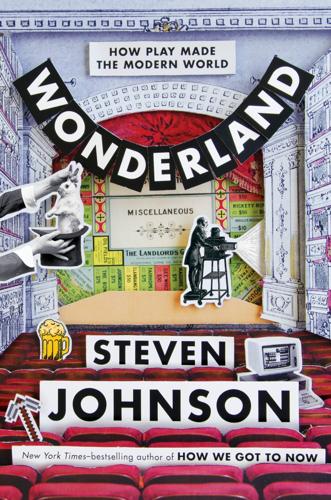
Wonderland: How Play Made the Modern World
by
Steven Johnson
Published 15 Nov 2016
You might teach a computer to play chess in order to determine how intelligent the machine had become, but programming a computer to play games just for the sake of playing games would have seemed like a colossal waste of resources, like hiring a symphony orchestra to play “Chopsticks.” But the Spacewar! developers saw a different future, one where computers had a more personal touch. Or, put another way, developing Spacewar! helped them see that future more clearly. In 1972, during a hiatus between publishing issues of The Whole Earth Catalog, Stewart Brand visited the Artificial Intelligence Lab at Stanford to witness “the First Intergalactic Spacewar! Olympics.” He wrote up his experiences for Rolling Stone in an article called “Spacewar: Fanatic Life and Symbolic Death Among the Computer Bums.” As one of the first essays to document the hacker ethos and its connection to the counterculture, it is now considered one of the seminal documents of technology writing.
…
And I’m also very grateful to Helen Yentus and Ben Denzer for what may well be my favorite jacket design of all of my books. A number of people were gracious enough to read the book (or sections of it) in draft form. I’m deeply indebted to the comments, corrections, and encouraging words from Alex Ross, Ken Goldberg, Stewart Brand, Steven Pinker, Mike Gazzaniga, Filipe Castro, Jane Root, Fred Hepburn, Chris Anderson, Juliet Blake, Angela Cheng, and Jay Haynes. As always, my wife, Alexa Robinson, read every word—but only improved every other word—with her wisdom and line-editing mojo. Thanks to Franco Moretti for introducing me to the kleptomaniacs of Paris more than two decades ago.
…
Recent studies show that when latex from Castilla elastica is boiled with the juice of moon vine, sulfonic acids that occur naturally in the vine increase the plasticity and elasticity of the rubber and produce a degree of vulcanization.” Fox, Kindle location 1300. “It should demonstrate”: J. M. Graetz, “The Origin of Spacewar!,” Creative Computing, August 1981, www.wheels.org/spacewar/creative/SpacewarOrigin.html. “The game of Spacewar!”: Stewart Brand, “Spacewar!,” Rolling Stone, December 7, 1972, www.wheels.org/spacewar/stone/rolling_stone.html. “Using data from the American Ephemeris”: Graetz, “The Origin of Spacewar!” “mechanically well made”: Edward O. Thorp, “Wearable Computers,” Digest of Papers, Second International Symposium on. 1998.
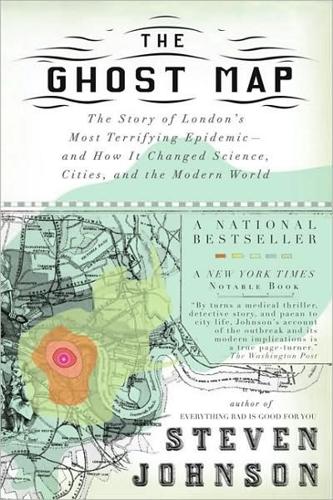
The Ghost Map: A Street, an Epidemic and the Hidden Power of Urban Networks.
by
Steven Johnson
Published 18 Oct 2006
But the history book of recent Homo sapiens as a species should begin and end with one narrative line: We became city dwellers. If you time-traveled back to the London of September 1854 and described to some typical Londoners the demographic future that awaited their descendants, no doubt many would react with horror at the prospect of a “city planet,” as Stewart Brand likes to call it. Nineteenth-century London was an overgrown, cancerous monster, doomed to implode sooner or later. Two million people crowded into a dense urban core was a kind of collective madness. Why would anyone want to do the same with twenty million? To date, those fears have proved unfounded.
…
I’m indebted to a number of people who read the manuscript and improved the book immensely with their thoughts and corrections: Carl Zimmer, Paul Miller, Howard Brody, Nigel Paneth, Peter Vinten-Johansen, and Tom Koch. A number of scholars were kind enough to comment on specific sections of the manuscript, or to answer my questions about the material: Sherwin Nuland, Steven Pinker, Ralph Frerichs, John Mekalanos, Sallie Patel, and Stewart Brand. My research assistant, Ivan Askwith, was once again an invaluable collaborator, as was Russell Davies, who came through with some last-minute additions from the streets (and libraries) of London. Whatever errors remain are mine alone. I’m grateful to the many libraries whose resources I drew on in my research: those of Harvard, MIT, and NYU, and the New York Public Library.
…
There are innumerable portraits of Victorian London, but Henry Mayhew’s London Labour and the London Poor is still the most riveting and thorough account of the city’s vast underclass, rivaled only by Engels’ London chapters from The Condition of the English Working Class. Among the contemporary accounts, Liza Picard’s Victorian London, Roy Porter’s London: A Social History, and Peter Ackroyd’s London: A Biography are all worth reading. On the future of cities, I recommend Stewart Brand’s essay “City Planet” and Richard Rogers’ Cities for a Small Planet. The best account of the psychological and cultural impact of urbanization remains Raymond Williams’ masterly The Country and the City. Stephen Halliday’s The Great Stink tells the amazing story of Joseph Bazalgette’s battle to build London’s sewer system.

What Algorithms Want: Imagination in the Age of Computing
by
Ed Finn
Published 10 Mar 2017
In Snow Crash, Hiro Protagonist satirically defines the icon of the hacker figure, working at the periphery of monolithic cultural systems to make crucial interventions through technical skill, idealistic motivation, and a blithe disregard for traditional mores. Hiro is a character right out of the trickster archetype that technology journalist Steven Levy chronicles in Hackers; a character who came to life around Silicon Valley pioneer Stewart Brand’s Hackers Conference in 1984.2 The computational systems of the novel, from the various security systems to the Metaverse itself, were created by hackers and are subject to their manipulations. As a high-water mark in the cyberpunk genre, Snow Crash both embellished and consecrated hackers as potent and capricious architects of computational reality.
…
Organism is opposed to chaos, to disintegration, to death, as message is to noise.”35 This line of argument evolved into the theory of autopoiesis proposed by philosophers Humberto Maturana and Francisco Varela in the 1970s, the second wave of cybernetics which adapted the pattern-preservation of homeostasis more fully into the context of biological systems. Describing organisms as information also suggests the opposite, that information has a will to survive, that as Stewart Brand famously put it, “information wants to be free.”36 Like Neal Stephenson’s programmable minds, like the artificial intelligence researchers who seek to model the human brain, this notion of the organism as message reframes biology (and the human) to exist at least aspirationally within the boundary of effective computability.
…
ISPW ’88: Proceedings of the 4th International Software Process Workshop on Representing and Enacting the Software Process. New York: ACM, 1988. Turing, Alan M. “Computing Machinery and Intelligence.” Mind. New Series 59 (236) (October 1, 1950): 433–460. Turner, Fred. From Counterculture to Cyberculture: Stewart Brand, the Whole Earth Network, and the Rise of Digital Utopianism. Chicago: University of Chicago Press, 2006. “2014 Financial Tables—Investor Relations—Google,” Q1 2014. http://investor.google.com/financial/tables.html. “Understanding Deposit Insurance.” Federal Deposit Insurance Corporation, June 3, 2014. http://www.fdic.gov/deposit/deposits/.
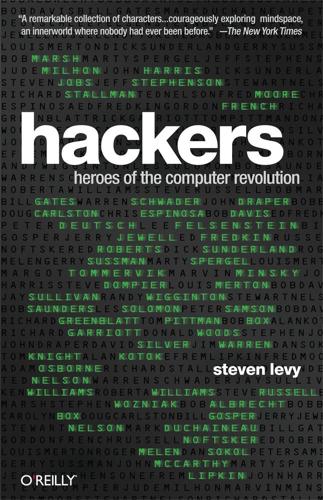
Hackers: Heroes of the Computer Revolution - 25th Anniversary Edition
by
Steven Levy
Published 18 May 2010
In reorganizing the Information Age around the individual, via personal computers, the hackers may well have saved the American economy . . . The quietest of all the ’60s sub-subcultures has emerged as the most innovative and powerful. --Stewart Brand Founder, Whole Earth Catalog In November 1984, on the damp, windswept headlands north of San Francisco, one hundred fifty canonical programmers and techno-ninjas gathered for the first Hacker Conference. Originally conceived by Whole Earth Catalog founder Stewart Brand, this event transformed an abandoned Army camp into temporary world headquarters for the Hacker Ethic. Not at all coincidentally, the event dovetailed with the publication of this book, and a good number of the characters in its pages turned up, in many cases to meet for the first time.
…
Fred was a vagabond activist, a student of nonviolence who believed that most problems could be solved if only people could get together, communicate, and share solutions. Sometimes, in the service of these beliefs, Feed Moore would do very strange things. One of his more notable moments had come four years earlier, in 1971, during the demise party of the Whole Earth Catalog. Editor Stewart Brand had thrown this farewell-to-the-Catalog bash into turmoil by announcing that he was going to give away twenty thousand dollars: it was up to the fifteen hundred party-goers to decide whom he should give it to. The announcement was made at 10:30P.M., and for the next ten hours the party turned, variously, from town meeting to parliamentary conference, to debate, to brawl, to circus, and to bitching session.
…
Just as satisfying is the fact that the issues raised by the book have become some of the central controversies of the information age. On the week of the book’s publication, many of my subjects, (along with other remarkable hackers I hadn’t included), met in Marin County, California, for the first Hackers Conference. It was there that Stewart Brand, hacker godfather and Whole Earth Catalog editor, hacked the “Information Should Be Free” principle. It’s worth citing his comment, uttered off the cuff at a session I hosted called “The Future of the Hacker Ethic,” because it’s so often misquoted. “On one hand, information wants to be expensive, because it’s so valuable,” Brand said.
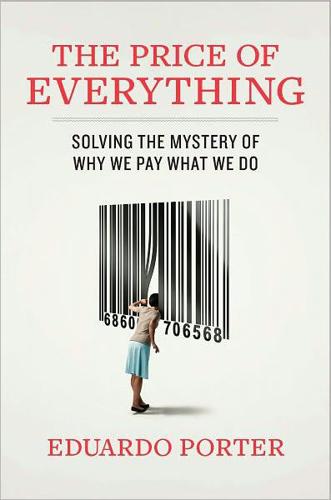
The Price of Everything: And the Hidden Logic of Value
by
Eduardo Porter
Published 4 Jan 2011
In June of 1999, Shawn Fanning, a teenager from Brockton, Massachusetts, known to his friends as the Napster, launched a system that allowed people to share over the Internet the music files stored on their hard drives. By July of the following year, one in four adults who used the Internet said they had downloaded music for free. Stewart Brand, a countercultural prankster of the acid-laced sixties who evolved into a revolutionary futurist, told the nation’s first hackers’ conference near San Francisco a quarter of a century ago that “information wants to be free.” In the 1990s, Apple advertised its new iMacs equipped with a writable CD drive as the tool to “Rip.
…
He argued that piracy allowed the fruits of this talent to reach consumers who couldn’t afford the extortionate prices charged by the labels. But Willetts lost and was jailed. And the bootleggers were cowed out of existence. Information became expensive again. Ultimately, information cannot be free. It only looks that way sometimes. The quote by Stewart Brand that became the slogan of online freedom fighters has a prelude that acknowledges that information also “wants to be expensive” because of its enormous value to recipients. This is a reasonable proposition. Still, it leaves no space for the producer of information. Information can’t exist without her.
…
SelectedTable=34&ViewSeries=NO&Java=no&Request3Place=N&3Place=N&FromView=YES&Freq=Year&FirstYear= 1980&LastYear=2009&3Place=N&Update= U pdate& Java Box=no#Mid, accessed on 08/16/2010). The explosion of free music downloads is detailed in Amanda Lenhart and Susannah Fox, “Downloading Free Music,” Pew Internet and American Life Project, September 28, 2000. Stewart Brand’s quote is in Jack Fuller, What Is Happening to News: The Information Explosion and the Crisis in Journalism (Chicago: University of Chicago Press, 2010), p. 104. Chris Anderson’s thoughts can be found in Free: The Future of a Radical Price (New York: Hyperion, 2009). Data on the declining sales of music recordings come from the Recording Industry Association of America (awww.riaa. org) and the International Federation of the Phonographic Industry (www.ifpi.org).

Artificial Whiteness
by
Yarden Katz
While Zeleny states this is not meant to be “an argument against planning,” his work fits rather squarely in the neoliberal epistemic frame that sees markets as powerful, decentralized information-processors. 42. Milan Zeleny, “Crisis and Transformation: On the Corso and Ricorso of Human Systems,” Human Systems Management 31, no. 1 (2012): 49–63. 43. Fred Turner describes how individuals such as Stewart Brand (of Whole Earth Catalog fame) brought together people from the corporate world, academia, the military, and the media around themes of self-organization, cybernetic control, networks, and distributed learning: “The notion of distributed learning, in which individuals learn together as elements in a system, was simultaneously congenial to Shell executives (‘because that’s pretty much how they do their administration’), to cyberneticians such as Francisco Varela (because it seemed to describe his notion of ‘awakening systems’), to computer engineers like Danny Hillis (because it was a conceptual element of massively parallel computing), and to Brand’s own ‘access to tools’ approach to life.”
…
Fred Turner describes how individuals such as Stewart Brand (of Whole Earth Catalog fame) brought together people from the corporate world, academia, the military, and the media around themes of self-organization, cybernetic control, networks, and distributed learning: “The notion of distributed learning, in which individuals learn together as elements in a system, was simultaneously congenial to Shell executives (‘because that’s pretty much how they do their administration’), to cyberneticians such as Francisco Varela (because it seemed to describe his notion of ‘awakening systems’), to computer engineers like Danny Hillis (because it was a conceptual element of massively parallel computing), and to Brand’s own ‘access to tools’ approach to life.” Turner, From Counterculture to Cyberculture: Stewart Brand, the Whole Earth Network, and the Rise of Digital Utopianism (Chicago: University of Chicago Press, 2010), 183. The meetings Brand convened eventually led to the formation of the Global Business Network (GBN). In addition to AI practitioners and biologists, GBN’s orbit included social scientists such as Sherry Turkle and Mary Catherine Bateson and the writer Kevin Kelly (who later became editor of Wired magazine).
…
Tuck, Eve, and K. Wayne Yang. “Decolonization Is Not a Metaphor.” Decolonization: Indigeneity, Education & Society 1, no. 1 (2012): 1–40. Turner, Fred. “The Arts at Facebook: An Aesthetic Infrastructure for Surveillance Capitalism.” Poetics 67 (2018): 53–62. ________. From Counterculture to Cyberculture: Stewart Brand, the Whole Earth Network, and the Rise of Digital Utopianism. Chicago: University of Chicago Press, 2010. United Kingdom. Department for Business, Energy & Industrial Strategy and Department for Digital, Culture, Media & Sport. AI Sector Deal. Policy paper, April 26, 2018. https://www.gov.uk/government/publications/artificial-intelligence-sector-deal/ai-sector-deal.
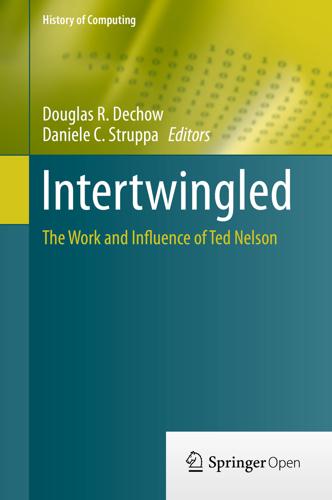
Intertwingled: The Work and Influence of Ted Nelson (History of Computing)
by
Douglas R. Dechow
Published 2 Jul 2015
PS: Ted Nelson’s Computer Lib/Dream Machines had two front covers, no back cover. One front cover was for Computer Lib, which dealt with computer politics and tech. Flip the book over, start reading from the other cover and you have Dream Machines, dealing with the visionary use of computers. Stylistically Computer Lib/Dream Machines was modeled on Stewart Brand’s Whole Earth Catalog, interspersed with hip illustrations, weaving odd stories and quotations into the text. The book was not meant to be read in a linear fashion. For 1974, it was completely revolutionary. LS: The forms Ted’s early books took showed the essence of the problem. We simply don’t think in sequential streams.
…
v=AXlyMrv8_dQ Excerpt (?) of “The Silicon Valley Show“ uploaded in 2010 to YouTube Nelson TH (1992) The silicon valley show. http://archive.org/details/Timothy_Leary_Archives_189.dv. A video short called “The Silicon Valley Show” featuring Ted Nelson, Douglas Engelbart, Rick Mascitti, Stewart Brand, and Timothy Leary. Directed by Ted Nelson Nelson TH (1992) Xanadu space, 1993. Autodesk, Sausalito. http://archive.org/details/01Kahle000838. Wide Area Information Servers Project Documentation, scanned in 2013 Nelson TH (1993) Literary Machines … 93.1 edn. Mindful Press, Sausalito, CA Nelson TH (1993) Publishing contracts for a point-and-click Universe.
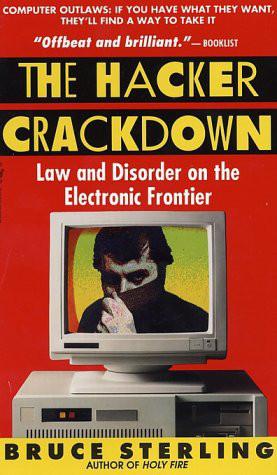
The Hacker Crackdown
by
Bruce Sterling
Published 15 Mar 1992
Barlow, though he was not arrested or accused of a crime, and though his computer had certainly not gone out the door, was very troubled by this anomaly. He carried the word to the Well. Like the Hackers Conference, "the Well" was an emanation of the Point Foundation. Point Foundation, the inspiration of a wealthy Californian 60s radical named Stewart Brand, was to be a major launch-pad of the civil libertarian effort. Point Foundation's cultural efforts, like those of their fellow Bay Area Californians the Grateful Dead, were multifaceted and multitudinous. Rigid ideological consistency had never been a strong suit of the Whole Earth Catalog. This Point publication had enjoyed a strong vogue during the late 60s and early 70s, when it offered hundreds of practical (and not so practical) tips on communitarian living, environmentalism, and getting back-to-the-land.
…
John Gilmore, one of the pioneers of Sun Microsystems, immediately offered his own extensive financial and personal support. Gilmore, an ardent libertarian, was to prove an eloquent advocate of electronic privacy issues, especially freedom from governmental and corporate computer-assisted surveillance of private citizens. A second meeting in San Francisco rounded up further allies: Stewart Brand of the Point Foundation, virtual-reality pioneers Jaron Lanier and Chuck Blanchard, network entrepreneur and venture capitalist Nat Goldhaber. At this dinner meeting, the activists settled on a formal title: the Electronic Frontier Foundation, Incorporated. Kapor became its president. A new EFF Conference was opened on the Point Foundation's Well, and the Well was declared "the home of the Electronic Frontier Foundation."
…
This world of decentralized, small-scale nodes, with instant global access for the best and brightest, would be a perfect milieu for the shoestring attic capitalism that made Mitch Kapor what he is today. Kapor is a very bright man. He has a rare combination of visionary intensity with a strong practical streak. The Board of the EFF: John Barlow, Jerry Berman of the ACLU, Stewart Brand, John Gilmore, Steve Wozniak, and Esther Dyson, the doyenne of East-West computer entrepreneurism—share his gift, his vision, and his formidable networking talents. They are people of the 1960s, winnowed-out by its turbulence and rewarded with wealth and influence. They are some of the best and the brightest that the electronic community has to offer.

The Idealist: Aaron Swartz and the Rise of Free Culture on the Internet
by
Justin Peters
Published 11 Feb 2013
They are the mechanisms by which an entire society can come to consider and discuss the same ideas and events. Lawmakers have never been quite sure whether to feed or starve the cultural brain. As communications technologies have advanced, this conflict has intensified. In his 1987 book, The Media Lab, the entrepreneur and futurist Stewart Brand memorably asserted that “information wants to be free”: that it is effectively impossible to restrict the flow of (and artificially maintain high prices for) data in a world rife with photocopiers, tape decks, instant cameras, digital networks, and other such disseminative tools.32 Brand was the founder of the Whole Earth Catalog, which, in the 1960s and 1970s, brought long-haired shoppers a message of conscientious consumption.
…
Soon after that, if history is any guide, copyright stakeholders will gather in private to draft a statute that protects and advances their financial interests. Information wants to be expensive. Information wants to be free. Today, with the developed world linked by digital networks that have not entirely fulfilled their transformative promise, Stewart Brand’s paradox seems more relevant and more frustrating than ever. Aaron Swartz spent his life caught in this paradox, and while he didn’t quite succeed in disentangling it, he at least called attention to the fact that it exists. Three years on, the story of his life and death serves as a necessary reminder that there is a fundamental disconnect between our laws and our habits, between the way we are supposed to conduct ourselves online and the way we actually do.
…
Tirella, Joseph. Tomorrow-Land: The 1964–65 World’s Fair and the Transformation of America. Guilford, CT: Lyons Press, 2014. Townley, Benjamin. The Quest for Nationality: An American Literary Campaign. Syracuse, NY: Syracuse University Press, 1957. Turner, Fred. From Counterculture to Cyberculture: Stewart Brand, the Whole Earth Network, and the Rise of Digital Utopianism. Chicago: University of Chicago Press, 2006. Twain, Mark. Autobiography of Mark Twain. Edited by Benjamin Griffin and Harriet Elinor Smith. 2 vols. Berkeley: University of California Press, 2013. Unger, Harlow Giles. Noah Webster: The Life and Times of an American Patriot.

The Invention of Air: A Story of Science, Faith, Revolution, and the Birth of America
by
Steven Johnson
Published 26 Dec 2008
ACKNOWLEDGMENTS I’m grateful to several institutions for their willingness to let me work through the major themes of this book in public. First, NYU’s School of Journalism, for letting me teach a graduate seminar on Cultural Ecosystems, and my students there who contributed so many helpful ideas (and who, I’m thankful to report, shot down more than a few of my less helpful ones). My friends at the Long Now Foundation—Stewart Brand, Kevin Kelly, Brian Eno, Danny Hillis, and Alexander Rose—were kind enough to invite me to discuss the “long zoom” approach to cultural history at one of their seminars in long-term thinking in 2007. I was also lucky enough to be invited to discuss these issues onstage with Brian at the Institute of Contemporary Arts in London.
…
In part his prediction failed because he neglected other macro forces, including the capacity of capitalism to evolve corrections to the problems it created, and in part because he couldn’t shake off the organizing principle of Hegel’s dialectic. 44 “Aside from occasional brief asides” Kuhn, p. xii. 47 thousands (or millions) of years to play out This layered view of cultural development was directly inspired by the pace layered diagram of civilization that I first encountered in Stewart Brand’s wonderful book, How Buildings Learn. Brand’s levels are slightly different, and are focused primarily on the speed at which each layer changes. The main categories are, going from fast to slow: Fashion; Commerce; Infrastructure; Governance; Culture; Nature. 50 “By the way” Schofield 1966, p. 54. 54 “The impact of the introduction of coffee” Standage, p. 135. 55 “In electricity, in particular” Priestley 1775, p. xii Chapter Two: Rose and Nightshade 61 “The work of a button” Journal of Jonathan Williams, Jr., of His Tour with Franklin and Others through Northern England, May 28, 1771.

WTF?: What's the Future and Why It's Up to Us
by
Tim O'Reilly
Published 9 Oct 2017
Larry Wall, creator of Perl, was another of my mentors in how to think about free software. When I asked him why he had made Perl free software, he explained that he had gotten so much value from the work of others that he felt an obligation to give something back. Larry also quoted to me a variation of Stewart Brand’s classic observation, saying, “Information doesn’t want to be free. Information wants to be valuable.” Like many other free software authors, Larry had discovered that one way to make his information (that is, his software) more valuable was to give it away. He was able to increase its utility not only for himself (because others who took it up made changes and enhancements that he could use), but for everyone else who uses it, because as software becomes more ubiquitous it can be taken for granted as a foundation for further work.
…
Policy makers must understand the role of platforms in bringing small business into the twenty-first century, measure their economic impact, and craft tax policies to encourage the creation of broader economic value, not just the value companies extract for themselves. THE CLOTHESLINE PARADOX What we measure matters. I first became fascinated with the curious fact that we often ignore and take for granted many types of economic value when, in 1975, I read an essay by environmentalist Steve Baer published in Stewart Brand’s Co-Evolution Quarterly, the successor to The Whole Earth Catalog. The essay was called “The Clothesline Paradox.” “If you take down your clothesline and buy an electric clothes dryer, the electric consumption of the nation rises slightly,” Baer wrote. “If you go in the other direction and remove the electric clothes dryer and install a clothesline, the consumption of electricity drops slightly, but there is no credit given anywhere on the charts and graphs to solar energy, which is now drying the clothes.”
…
Or will we achieve that not through a perfection of the machinist’s art but through the next steps in the path trod by Luther Burbank? Amazing work is happening today in synthetic biology and gene engineering. George Church and his colleagues at Harvard are beginning a controversial ten-year project to create from scratch a complete human genome. Ryan Phelan and Stewart Brand’s Revive and Restore project is working to use gene engineering to restore genetic diversity to endangered species, and perhaps one day to bring extinct species back to life. Technologies like CRISPR-Cas9 allow researchers to rewrite the DNA inside living organisms. Neurotech—direct interfaces between machines and the brain and nervous system—is another frontier.

The Future Is Faster Than You Think: How Converging Technologies Are Transforming Business, Industries, and Our Lives
by
Peter H. Diamandis
and
Steven Kotler
Published 28 Jan 2020
See: https://www.cnbc.com/2018/07/05/the-us-labor-shortage-is-reaching-a-critical-point.html. Existential Risks: Vision, Prevention, and Governance Nick Bostrom: “Existential Risks: Analyzing Human Extinction Scenarios and Related Hazards,” Journal of Evolution and Technology 9 (March 9, 2002). Vision Stewart Brand: Stewart Brand, Clock of the Long Now: Time and Responsibility, The Ideas Behind the World’s Slowest Computer (Basic Books, 1999), p.1. Prevention Michael Kimmelman in the New York Times: Michael Kimmelman, “The Dutch Have Solutions to Rising Seas. The World Is Watching,” New York Times, June 15, 2017.
…
Delayed gratification is the psychological term, and one distinguishing characteristic of our species is the ability to delay gratification beyond the limits of lifespan. Religions that shape behavior today by promising an afterlife tomorrow rely on this mechanism. No other animal can do this. But we seem to be losing this talent. “Civilization is revving itself into a pathologically short attention span,” writes Stewart Brand in an essay for the Long Now Foundation. “This trend might be coming from the acceleration of technology, the short-horizon perspective of market-driven economics, the next-election perspective of democracies, or the distractions of personal multi-tasking. All are on the increase. Some sort of balancing corrective to the short-sightedness is needed.”
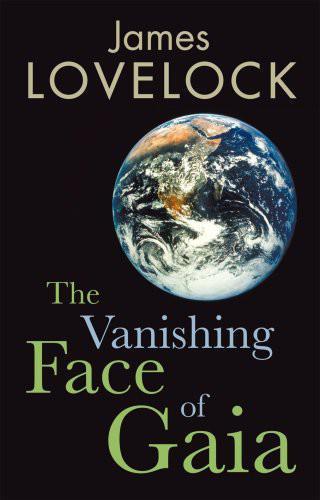
The Vanishing Face of Gaia: A Final Warning
by
James E. Lovelock
Published 1 Jan 2009
Yet it is not the coal itself that kills but the inefficient way we burn it in open fires. London’s air, apart from traffic pollution, is now almost clean to breathe, although 33 per cent of all the electricity we use still comes from burning coal. In 2008 Sandy and I were invited to have breakfast at a London hotel with James Rogers of Duke Energy, and Mary, his wife. My friend Stewart Brand had made the introduction and thought that we would both benefit from the meeting: he was right. I found Jim Rogers, a leading figure in the huge American coal industry, to be as concerned with our future as I was, and wonderfully practical. We shared the opinion that there was neither the time nor the resources to bury the carbon dioxide effluent of coal‐fired power stations on a global scale.
…
It is normal to debate a new hypothesis, so what went wrong? Why was the Gaia hypothesis thrown into the rubbish bin? The trouble started in 1979 when the Canadian biologist Ford Doolittle wrote his lively and well‐written critique of Gaia. Interestingly, he chose to publish it in the American New Age magazine Coevolution Quarterly, edited by Stewart Brand. Scientists may pretend to deplore the New Age, but that does not stop them reading its publications and in no time Gaia’s face was turned to the wall, especially in the neo‐Darwinist community of scientists. Neither Lynn Margulis nor I could make a convincing defence – partly because, as we had stated it, the Gaia hypothesis was wrong.

How We Got to Now: Six Innovations That Made the Modern World
by
Steven Johnson
Published 28 Sep 2014
It is an exercise in a different kind of time discipline: the discipline of avoiding short-term thinking, of forcing yourself to think about our actions and their consequences on the scale of centuries and millennia. Borrowing a wonderful phrase from the musician and artist Brian Eno, the device is called “the Clock of the Long Now.” The Clock of the Long Now The organization behind this device, the Long Now Foundation—cofounded by Hillis, Eno, Stewart Brand, and a few other visionaries—aims to build a number of ten-thousand-year clocks. (The first one is being constructed for a mountainside location in West Texas.) Why go to such extravagant lengths to build a clock that might tick only once in your lifetime? Because new modes of measuring force us to think about the world in a new light.
…
A book that covers so many different fields can only succeed by drawing on the expertise of others. I’m grateful to the many talented people we interviewed for this project, some of whom were kind enough to read portions of the manuscript in draft: Terri Adams, Katherine Ashenburg, Rosa Barovier, Stewart Brand, Jason Brown, Dr. Ray Briggs, Stan Bunger, Kevin Connor, Gene Chruszcs, John DeGenova, Jason Deichler, Jacques Desbois, Dr. Mike Dunne, Caterina Fake, Kevin Fitzpatrick, Gai Gherardi, David Giovannoni, Peggi Godwin, Thomas Goetz, Alvin Hall, Grant Hill, Sharon Hudgens, Kevin Kelly, Craig Koslofsky, Alan MacFarlane, David Marshall, Demetrios Matsakis, Alexis McCrossen, Holley Muraco, Lyndon Murray, Bernard Nagengast, Max Nova, Mark Osterman, Blair Perkins, Lawrence Pettinelli, Dr.
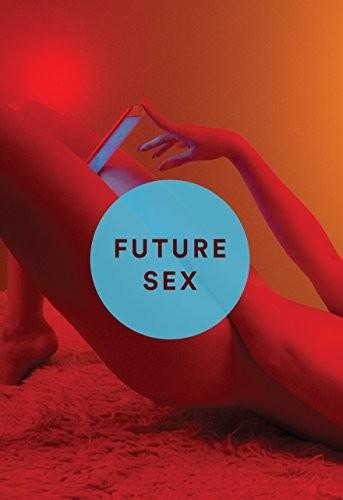
Future Sex
by
Emily Witt
Published 10 Oct 2016
We talked about megafauna, which are mentioned in The World Without Us, how the nice thing about megafauna was that they had coincided with human history—that even six thousand years ago there were still small woolly mammoths living on an island off Alaska. He wondered how dinosaurs had overtaken megafauna in the popular imagination. We talked about the Long Now Foundation in San Francisco, an organization started by Stewart Brand, founder of the Whole Earth Catalog, who is trying to genetically resurrect megafauna. I talked about how I had gone to see Charles C. Mann, the author of the books 1491 and 1493, speak at the Long Now Foundation. He had listened to the podcast. We talked about 1493, about how in North America, before the Columbian exchange, there were no earthworms, and how the Spanish had hired samurai to fight the Aztecs in Mexico, and how somebody should make a movie about that.
…
Perimeters within perimeters, one demanding a finger signature on a nondisclosure agreement drawn up on a glowing tablet computer, some Hi-Chews pilfered from the candy bowl next to it, past a flat-screen television on which a shiny-faced Mark Zuckerberg stood and lectured with the volume on mute, and then I was with my friend in the inner sanctum, the amusement park village with its simulacra of urbanity. In the screen-printing shop, an archive of Facebook propaganda hung on the wall, brightly colored hand-printed posters that read EVENTUALLY EVERYTHING CONNECTS, PRIDE CONNECTS US, SYSTEMS FOR SOCIETY, IF IT WORKS IT’S OBSOLETE, and, in traffic-light colors, SLOW DOWN AND FIX YOUR SHIT. When Stewart Brand described Stanford’s Artificial Intelligence lab in the pages of Rolling Stone in 1972, he described the beanbag room, the beards and long hair, the posters against the Vietnam War and Richard Nixon, and signs written in Lord of the Rings Elvish Feanorian script. He described hackers as “those magnificent men with their flying machines, scouting a leading edge of technology which has an odd softness to it; outlaw country, where rules are not decree or routine so much as the starker demands of what’s possible.”
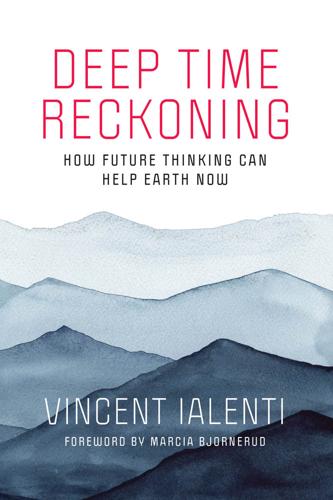
Deep Time Reckoning: How Future Thinking Can Help Earth Now
by
Vincent Ialenti
Published 22 Sep 2020
But adopting a spirit of adventurous learning can be enriching. Fieldwork showed me how a subtle, abiding, guarded optimism about technological advancement, intellectual discourse, and scientific scrutiny could—in one specific place, in one specific time—make deep time reckoning more achievable, or at least more accessible, for those who believed in it. Stewart Brand once asked: “How do we make long-term thinking automatic and common instead of difficult and rare?”83 My answer is that we can look to Finland’s Safety Case experts’ practical, pluralistic, grounded, “applied science” of deep time reckoning for some clues, but never all the answers. While this may interest futurologists in the interdisciplinary field of futures studies, my goal is different.
…
Crutzen, and J. McNeill, “The Anthropocene: Conceptual and Historical Perspectives,” Philosophical Transactions: Mathematical, Physical and Engineering Sciences 369, no. 1938 (2011): 842–867. 3. Richard Irvine, “Deep Time: An Anthropological Problem,” Social Anthropology 22, no. 2 (2014). 4. Stewart Brand, The Clock of the Long Now: Time and Responsibility (New York: Basic Books, 1999). 5. Martin Rees, On the Future: Prospects for Humanity (Princeton, NJ: Princeton University Press, 2018), 3, 217. 6. Tim Ingold, Evolution and Social Life (Cambridge: Cambridge University Press, 1986), 129. 7.

Machines of Loving Grace: The Quest for Common Ground Between Humans and Robots
by
John Markoff
Published 24 Aug 2015
Once Toyota had extraordinary craftsmen that were known as Kami-sama, or “gods” who had the ability to make anything, according to Toyota president Akio Toyoda.49 The craftsmen also had the human ability to act creatively and thus improve the manufacturing process. Now, to add flexibility and creativity back into their factories, Toyota chose to restore a hundred “manual-intensive” workspaces. The restoration of the Toyota gods is evocative of Stewart Brand’s opening line to the 1968 Whole Earth Catalog: “We are as gods and might as well get good at it.” Brand later acknowledged that he had borrowed the concept from British anthropologist Edmund Leach, who wrote, also in 1968: “Men have become like gods. Isn’t it about time that we understood our divinity?
…
More than a decade ahead of its time, the Alto was the first modern personal computer with a windows-based graphical display that included fonts and graphics, making possible on-screen pages that corresponded precisely to final printed documents (ergo WYSIWYG, pronounced “whizziwig,” which stands for “what you see is what you get”). The machine was controlled by an oddly shaped rolling appendage with three buttons wired to the computer known as a mouse. For those who saw the Alto while it was still a research secret, it drove home the meaning of Engelbart’s augmentation ideas. Indeed, one of those researchers was Stewart Brand, a counterculture impresario—photographer, writer, and editor—who had masterminded the Whole Earth Catalog. In an article for Rolling Stone, Brand referred to PARC as “Shy Research Center,” and he coined the term “personal computing.” Now, more than four decades later, the desktop personal computers of PARC are handheld and they are in the hands of much of the world’s population.
…
Gordon, “Why Innovation Won’t Save Us,” Wall Street Journal, December 21, 2012, http://online.wsj.com/news/articles/SB10001424127887324461604578191781756437940. 48.Gordon, “The Demise of U.S. Economic Growth.” 49.Craig Trudell, Yukiko Hagiwara, and Jie Ma, “Humans Replacing Robots Herald Toyota’s Vision of Future,” BloombergBusiness, April 7, 2014, http://www.bloomberg.com/news/2014-04-06/humans-replacing-robots-herald-toyota-s-vision-of-future.html. 50.Stewart Brand, “We Are As Gods,” Whole Earth Catalog, Fall 1968, http://www.wholeearth.com/issue/1010/article/195/we.are.as.gods. 51.Amir Efrati, “Google Beat Facebook for DeepMind, Creates Ethics Board,” Information, January 27, 2014, https://www.theinformation.com/google-beat-facebook-for-deepmind-creates-ethics-board. 52.

More Everything Forever: AI Overlords, Space Empires, and Silicon Valley's Crusade to Control the Fate of Humanity
by
Adam Becker
Published 14 Jun 2025
O’Neill’s ideas spread widely over the course of the 1970s and ’80s. The L5 Society, named after a stable point in the Earth-Moon system that would be a suitable location for a space station, formed around O’Neill’s ideas, promoting them to the public as a viable path to a bigger and better future. Stewart Brand, of the Whole Earth Catalog, enthusiastically shared O’Neill’s ideas with his large mailing list and set of connections across business and academia. And a certain scientifically minded high school student in Florida was so enthusiastic about O’Neill’s ideas that he talked about them to his school newspaper.
…
“You develop an instant global consciousness, a people orientation, an intense dissatisfaction with the state of the world and a compulsion to do something about it,” said Edgar Mitchell, an astronaut who landed on the Moon on Apollo 14. “From out there on the moon, international politics look so petty. You want to grab a politician by the scruff of the neck and drag him a quarter of a million miles out and say, ‘Look at that, you son of a bitch.’”68 It’s a compelling idea. In 1966, the same impulse prompted Stewart Brand to sell pins saying, “Why haven’t we seen a photograph of the whole earth yet?”69 Two years later, Brand put one of the first such images on the cover of the first Whole Earth Catalog, which espoused a peculiarly Californian fusion of the countercultural philosophy of the hippies and a techno-utopian vision of the future.
…
Martin Luther King, Jr.,” StarTrek.com, January 16, 2023, www.startrek.com/news/nichelle-nichols-remembers-dr-king. 67 Benjamin Russell, “Far Beyond the Stars,” Incredible Tales of Scientific Wonder, September 1953. 68 Mike Wall, “Earth from Space: ‘Overview Effect’ Could Help Troubled Country, Astrophysicist Neil deGrasse Tyson Says,” Space.com, June 3, 2020, www.space.com/overview-effect-amid-us-crisis-neil-degrasse-tyson.html. 69 Stewart Brand, “‘Whole Earth’ Origin…,” Long Now Foundation, accessed June 12, 2024, https://sb.longnow.org/SB_homepage/WholeEarth_buton.html. 70 Frank, Light of the Stars, 67–70. 71 M. H. Hecht et al., “Detection of Perchlorate and the Soluble Chemistry of Martian Soil at the Phoenix Lander Site,” Science 325, no. 5936 (2009): 64–67, www.science.org/doi/10.1126/science.1172466. 72 Carl Sagan, Pale Blue Dot: A Vision of the Human Future in Space (New York: Ballantine, 1997), 6–7. 73 Stirone, “Mars Is a Hellhole”; Lex Fridman, “Elon Musk: Neuralink, AI, Autopilot, and the Pale Blue Dot | Lex Fridman Podcast #49,” November 12, 2019, in Lex Fridman Podcast, YouTube, www.youtube.com/watch?

The Plundered Planet: Why We Must--And How We Can--Manage Nature for Global Prosperity
by
Paul Collier
Published 10 May 2010
But by chance his anger is right on target: son and father are ethically aligned in the battleground of natural assets. First, the left flank. I agree with environmentalists that nature is special: at some level most of us recognize that. But why is it special? Mainstream environmentalists, such as Stewart Brand, offer one answer. Nature is especially vulnerable and that matters because, being dependent upon it, mankind is thereby vulnerable. But as Brand argues, many environmentalists are carrying ideological baggage that needs to be discarded. For romantic environmentalists nature is incommensurate with the mundane business of the economy: it is in some way ethically prior.
…
France was able to do this because whereas elsewhere the political left was hostile to nuclear energy, in France it was nationalistic and so supported the idea of independence from imported oil. Wind, wave, and solar power may eventually become scalable (provided enough money is put into research), but for the moment pragmatists such as Stewart Brand, one of the pioneers of the environmental movement, have accepted that nuclear power is an essential part of the battle to contain global warming. They are in tune with the spirit of this book, which is that decisions over the management of natural assets and liabilities are too important to be guided by romanticism.
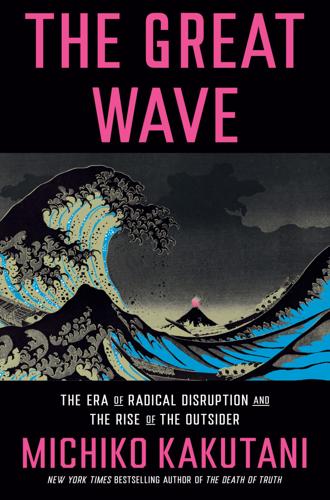
The Great Wave: The Era of Radical Disruption and the Rise of the Outsider
by
Michiko Kakutani
Published 20 Feb 2024
Silicon Valley emerged in the San Francisco Bay Area, ground zero for antiestablishment culture in the 1960s and 1970s, and its founding generation was indelibly shaped by that era’s zeitgeist of rebellion and utopian hopes. In a 1995 essay titled “We Owe It All to the Hippies,” the creator of the Whole Earth Catalog, Stewart Brand, wrote that “the counterculture’s scorn for centralized authority provided the philosophical foundations of not only the leaderless Internet but also the entire personal-computer revolution.” While huge mainframes of the day were associated with the government and corporate America (i.e., IBM), hackers and early programmers saw the personal computer as a revolutionary tool that could help people realize both libertarian and communitarian goals—connect like-minded people, boost creativity, democratize information, empower outsiders.
…
GO TO NOTE REFERENCE IN TEXT Even an early (unused) design: Luke Dormehl, The Apple Revolution: Steve Jobs, the Counterculture, and How the Crazy Ones Took Over the World (London: Ebury Publishing, 2012), 83–84. GO TO NOTE REFERENCE IN TEXT “the counterculture’s scorn”: Stewart Brand, “We Owe It All to the Hippies,” Time, Mar. 1, 1995, content.time.com/time/subscriber/article/0,33009,982602,00.html. GO TO NOTE REFERENCE IN TEXT worth $3 trillion in market value: Jack Nicas, “Apple Becomes First Company to Hit $3 Trillion Market Value,” The New York Times, Jan. 3, 2022, nytimes.com/2022/01/03/technology/apple-3-trillion-market-value.html.
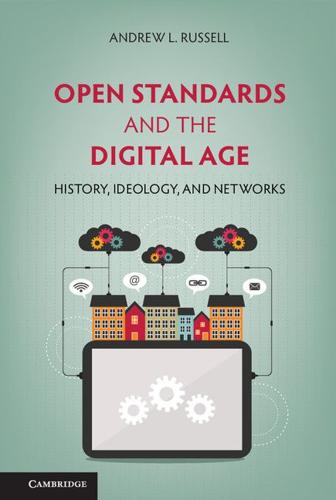
Open Standards and the Digital Age: History, Ideology, and Networks (Cambridge Studies in the Emergence of Global Enterprise)
by
Andrew L. Russell
Published 27 Apr 2014
Brock, The Second Information Revolution (Boston: Harvard University Press, 2003), 106–111. 29 Steven Levy, Hackers: Heroes of the Computer Revolution (New York: Doubleday, 1984); Edwards, Closed World; Atsushi Akera, “Voluntarism and the Fruits of Collaboration: The IBM User Group, Share,” Technology and Culture 42 (2001): 710–736; Fred Turner, From Counterculture to Cyberculture: Stewart Brand, the Whole Earth Network, and the Rise of Digital Utopianism (Chicago: University of Chicago Press, 2006); John Markoff, What the Dormouse Said: How the Sixties Counterculture Shaped the Personal Computer Industry (New York: Penguin, 2006); Ted Friedman, Electric Dreams: Computers in American Culture (New York: New York University Press, 2005); Steven W.
…
Nye, “Shaping Communication Networks: Telegraph, Telephone, Computer,” Social Research 64 (1997): 1067–1091; Richard Barbrook and Andy Cameron, “The Californian Ideology,” Science as Culture 6 (1996): 44–72; Paulina Borsook, Cyberselfish: A Critical Romp through the Terribly Libertarian Culture of High Tech (New York: PublicAffairs, 2001); Pekka Himanen, The Hacker Ethic and the Spirit of the Information Age (New York: Random House, 2001); Fred Turner, From Counterculture to Cyberculture: Stewart Brand, the Whole Earth Network, and the Rise of Digital Utopianism (Chicago: University of Chicago Press, 2006). Bibliography Manuscript Collections Alex McKenzie Collection of Computer Networking Development Records (CBI 123), Charles Babbage Institute, University of Minnesota, Minneapolis.
…
“Intercompany Technical Standardization in the Early American Automobile Industry.” The Journal of Economic History 14 (1954): 1–20. Toth, Robert, ed. Standards Activities of Organizations in the United States. Gaithersburg, MD: National Institute of Standards and Technology, 1996. Turner, Fred. From Counterculture to Cyberculture: Stewart Brand, the Whole Earth Network, and the Rise of Digital Utopianism. Chicago: University of Chicago Press, 2006. United States Congress, Office of Technology Assessment. Global Standards: Building Blocks for the Future. Washington, DC: U.S. Government Printing Office, 1992. Updegrove, Andrew. “A Work in Progress: Government Support for Standard Setting in the United States, 1980–2004.”
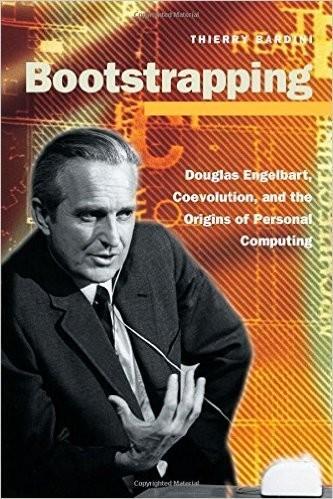
Bootstrapping: Douglas Engelbart, Coevolution, and the Origins of Personal Computing (Writing Science)
by
Thierry Bardini
Published 1 Dec 2000
(laughs) But I know it was on the order of $IO-I5,000, which would be like $50,000 now- adays, or the equIvalent. A lot of money. (Engelbart 1996) Back in our lab, we dismantled a number of the display units in our display sys- tem, so that we could use the cameras in San Francisco and SRI. We borrowed a few tripods and got some extra people to be camera people. One of our friends, Stewart Brand, who was at that time workIng on his first Whole Earth Catalog, helped as well. So it was really a group project; there were about 17 of us. SRI and the oN-LIne System 141 On my console on the stage, there was a camera mounted that caught my face. Another camera, mounted overhead, looked down on the workstatIon controls.
…
However, prIor to Ehrlich and Raven's paper, some studIes aimed at understanding the relationshIp between coevolution and pop- ulation regulatIon wIthout using the term "coevolution." Instead, they referred to "genetic feedback" (IbId., 5). This link between evolutionary ecology and cybernetics through the notIon of co- evolution gained popular currency through the life and work of a former student of Paul R. EhrlIch's: Stewart Brand. According to hIs own account, Brand "was bit early by a series of biologists" including Ehrlich, who had supervised his undergraduate research at Stanford in I 9 5 9, and "last but deepest, Gregory Bateson" (Brand, in Kleiner and Brand 1986, 3). In 1968, Brand founded the Whole Earth Catalog, whIch he edIted and published untIl 1972.
…
In 1974, with the proceeds of the catalog, Brand founded CoEvolutIon Quarterly (CQ). Both the catalog and CQ were institutions of the counterculture in the late 1960's and early I970'S. In his introduction to a col- lection of ten years of CQ entitled News that Stayed News, Art Kleiner recalled that the catalog was "started by Stewart Brand in I968 to cater (at first) to hippies liv- ing on commune" (Kleiner, in KleIner and Brand 1986, xi). Like its predecessor, CQ went on "to spark the resourcefulness of a generation of people," the flower genera- tion of the West Coast, who "reached for various things-some to stop the war In Vietnam, some to save vanous species, some to find a way to stay high" (Brand, in Kleiner and Brand, 1986, xi, 330).

The Contrarian: Peter Thiel and Silicon Valley's Pursuit of Power
by
Max Chafkin
Published 14 Sep 2021
“We owe it all to the hippies,” as the futurist (and countercultural activist) Stewart Brand famously put it, positing that the “real legacy of the sixties generation is the computer revolution.” But Silicon Valley—the real Silicon Valley—had never been about subverting the military-industrial complex. Silicon Valley, in its purest form, was the military-industrial complex. Its founders weren’t dropping LSD. They were proud squares, with politics that were closer to those of David Starr Jordan than to the radicals of Stewart Brand’s imagination. The man who’d coined the phrase “traitorous eight” (and the boss whom those eight men rebelled against) was William Shockley, a physicist who worked on radar for B-29 bombers during World War II, then invented a new kind of transistor, and then, after closing his company and taking a job as a professor of electrical engineering at Stanford, picked up Jordan’s mantle to become the campus eugenicist.
…
“terrorists, not writers and reporters”: Peter Kafka, “Why Did Nick Denton Think Peter Thiel Was behind the Hulk Hogan Suit?” Recode, May 24, 2016, https://www.vox.com/2016/5/24/11765246/peter-thiel-nick-denton-hulk-hogan-gawker-valleywag. CHAPTER TEN: THE NEW MILITARY-INDUSTRIAL COMPLEX “We owe it all to the hippies”: Stewart Brand, “We Owe It All to the Hippies,” Time, March 1, 1995, http://content.time.com/time/subscriber/article/0,33009,982602-3,00.html. a 1983 Esquire profile: Tom Wolfe, “The Tinkerings of Robert Noyce,” Esquire, December 1, 1983, http://classic.esquire.com/the-tinkerings-of-robert-noyce/. as he’d write: Peter Thiel, “The End of the Future,” National Review, October 3, 2011, https://www.nationalreview.com/2011/10/end-future-peter-thiel/.

Enlightenment Now: The Case for Reason, Science, Humanism, and Progress
by
Steven Pinker
Published 13 Feb 2018
Grayling, Joshua Greene, Cesar Hidalgo, Jodie Jackson, Lawrence Krauss, Branko Milanović, Robert Muggah, Jason Nemirow, Matthew Nock, Ted Nordhaus, Anthony Pagden, Robert Pinker, Susan Pinker, Stephen Radelet, Peter Scoblic, Martin Seligman, Michael Shellenberger, and Christian Welzel. Other friends and colleagues answered questions or made important suggestions, including Charleen Adams, Rosalind Arden, Andrew Balmford, Nicolas Baumard, Brian Boutwell, Stewart Brand, David Byrne, Richard Dawkins, Daniel Dennett, Gregg Easterbrook, Emily-Rose Eastop, Nils Petter Gleditsch, Jennifer Jacquet, Barry Latzer, Mark Lilla, Karen Long, Andrew Mack, Michael McCullough, Heiner Rindermann, Jim Rossi, Scott Sagan, Sally Satel, and Michael Shermer. Special thanks go to my Harvard colleagues Mahzarin Banaji, Mercè Crosas, James Engell, Daniel Gilbert, Richard McNally, Kathryn Sikkink, and Lawrence Summers.
…
Transgenic crops are being developed with high yields, lifesaving vitamins, tolerance of drought and salinity, resistance to disease, pests, and spoilage, and reduced need for land, fertilizer, and plowing. Hundreds of studies, every major health and science organization, and more than a hundred Nobel laureates have testified to their safety (unsurprisingly, since there is no such thing as a genetically unmodified crop).28 Yet traditional environmentalist groups, with what the ecology writer Stewart Brand has called their “customary indifference to starvation,” have prosecuted a fanatical crusade to keep transgenic crops from people—not just from whole-food gourmets in rich countries but from poor farmers in developing ones.29 Their opposition begins with a commitment to the sacred yet meaningless value of “naturalness,” which leads them to decry “genetic pollution” and “playing with nature” and to promote “real food” based on “ecological agriculture.”
…
Curing a body of cancer requires radical and invasive therapy, and therefore, curing the biosphere of the human virus will also require a radical and invasive approach.”2 Recently an alternative approach to environmental protection has been championed by John Asafu-Adjaye, Jesse Ausubel, Andrew Balmford, Stewart Brand, Ruth DeFries, Nancy Knowlton, Ted Nordhaus, Michael Shellenberger, and others. It has been called Ecomodernism, Ecopragmatism, Earth Optimism, and the Blue-Green or Turquoise movement, though we can also think of it as Enlightenment Environmentalism or Humanistic Environmentalism.3 Ecomodernism begins with the realization that some degree of pollution is an inescapable consequence of the Second Law of Thermodynamics.
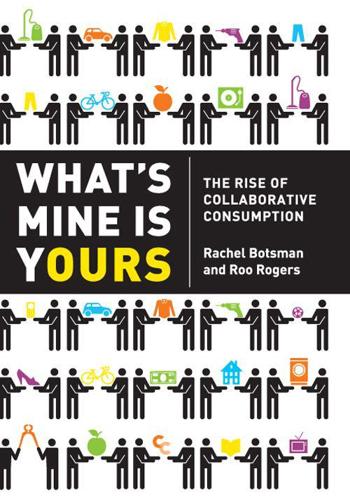
What's Mine Is Yours: How Collaborative Consumption Is Changing the Way We Live
by
Rachel Botsman
and
Roo Rogers
Published 2 Jan 2010
In the Bubble: Designing in a Complex World (MIT Press, 2006). Thaler, Richard, and Cass R. Sunstein. Nudge: Improving Decisions About Health, Wealth, and Happiness (Penguin, 2009). Tomasello, Michael. Why We Cooperate (MIT Press, 2009). Turner, Fred. From Counterculture to Cyberculture: Stewart Brand, the Whole Earth Network, and the Rise of Digital Utopianism (University of Chicago Press, 2006). Wilkinson, Richard, and Kate Pickett. The Spirit Level: Why Greater Equality Makes Societies Stronger (Bloomsbury Press, 2009). Index The pagination of this electronic edition does not match the edition from which it was created.
…
Michael Tomasaello’s research and new book Why We Cooperate were covered in Nicholas Wade, “Why We May Be Born with an Urge to Help,” New York Times (November 30, 2009), www.nytimes.com/2009/12/01/science/01human.html?pagewanted=1. 3. Michael Tomasello, Why We Cooperate (MIT Press, 2009), 5. 4. Statistics retrieved from, “The Rise and Rise of eBay,” Nielsen//NetRatings. Retrieved October 2009, www.nielsen-online.com/pr/pr_050823_uk.pdf. 5. Fred Turner, From Counterculture to Cyberculture: Stewart Brand, the Whole Earth Network, and the Rise of Digital Utopianism (Chicago University Press, 2006). 6. “Zipcar Rolls Out National Low-Car Diet.” Zipcar press release (July 21, 200), http://green.autoblog.com/2009/08/25/zipcars-low-car-diet-results-save-money-lose-weight 7. Ibid. 8. Philip Ball, Critical Mass: How One Thing Leads to Another (Farrar, Straus and Giroux, 2006).
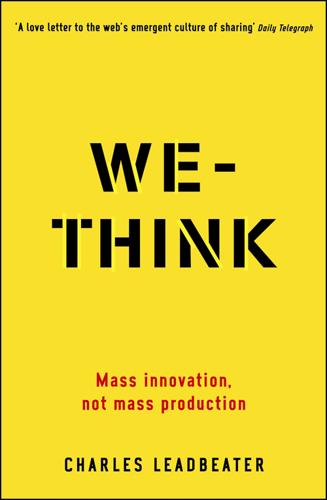
We-Think: Mass Innovation, Not Mass Production
by
Charles Leadbeater
Published 9 Dec 2010
Before Engelbart, the computer was distrusted as a dehumanising tool of corporate and bureaucratic control. His work re-imagined it as an instrument of personal liberation and freedom of expression, with the potential to flatten hierarchies, decentralise organisations and unleash collective creativity. The man recording Engelbart’s presentation in December 1968 was Stewart Brand, a 29-year-old itinerant artist and journalist. Brand’s eclectic interests meant he had links with avantgarde artists in Manhattan who were exploring new art forms; with backwoods communes in New Mexico where people were exploring new ways of living; and with the counter-culture of San Francisco, where technology, protest and drugs fused together.
…
They were exploring new territory, devising the process as they went along, so there were no fiefdoms to defend. Sharing ideas quickly became normal. As the community grew, researchers communicated their progress through the relentlessly practical Worm Breeder’s Gazette. (The Gazette was like a cross between Lean’s Engine Reporter, which organised innovation in the Cornish tin mines and Stewart Brand’s Whole Earth Catalog, which listed useful technologies.) Brenner’s openness set off a virtuous cycle of knowledge-sharing, which was the only way to get the work done. He had identified a task so complex that no single laboratory could complete it. Knowledge about what a particular gene did was worthless unless it could be combined with information about other genes.

The End of Big: How the Internet Makes David the New Goliath
by
Nicco Mele
Published 14 Apr 2013
Ted Nelson’s pivotal 1974 book Computer Lib: You Can and Must Understand Computers Now confronted nerds everywhere with a rousing call to action, demanding that they claim computing for individuals so as to free them from the oppression of, you guessed it, large institutions. Computer Lib had a radical style similar to Stewart Brand’s countercultural publication The Whole Earth Catalog, yet Computer Lib devoted itself to computers, offering both a primer on the basics of programming and a breathtaking vision of computing’s future. The book’s cover art—a raised fist, à la the Black Panthers—left little doubt about its intended radicalism.
…
In May 1970, a group of students at the University of Illinois organized a day of action to protest the construction on campus of a supercomputer called the ILLIAC IV, primarily because it was funded by the Defense Department. They called their protest Smash ILLIAC IV and included a cartoon of the mainframe computer with screens tracking things like a “kill-die factor” and a gaping mouth labeled “Feed $$$$$$ here!” 12. Stewart Brand is a particularly interesting figure because he bridged these two branches of nerd culture. He was the camera operator at Engelbart’s “Mother of All Demos,” but he was also one of the Merry Pranksters running around on Ken Kesey’s bus. The quotation is taken from his essay “We Owe It All to the Hippies,” Time, 1 Mar. 1995. 13. http://www.digibarn.com/collections/newsletters/peoples-computer/peoples-1972-oct/index.html 14. http://www.atariarchives.org/deli/homebrew_and_how_the_apple.php 15. http://www.digibarn.com/collections/newsletters/homebrew/V2_01/index.html 16. http://www.gadgetspage.com/comps-peripheral/apple-i-computer-ad.html 17.
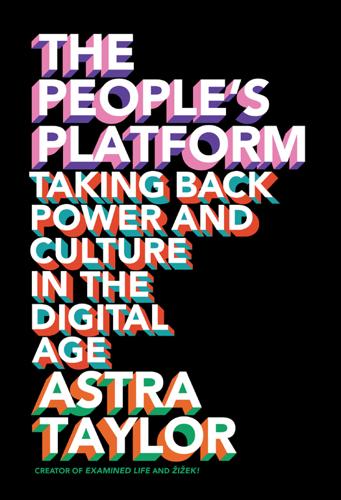
The People's Platform: Taking Back Power and Culture in the Digital Age
by
Astra Taylor
Published 4 Mar 2014
This group performed the remarkable feat of transforming computers from enablers of stodgy government administration to countercultural cutting edge, from implements of technocratic experts to machines that empower everyday people. They “reconfigured the status of information and information technologies,” Turner explains, by contending that these new tools would tear down bureaucracy, enhance individual consciousness, and help build a new collaborative society.15 These prophets of the networked age—led by the WELL’s Stewart Brand and including Kelly and many other still-influential figures—moved effortlessly from the hacker fringe to the upper echelon of the Global Business Network, all while retaining their radical patina. Thus, in 1984 Macintosh could run an ad picturing Karl Marx with the tagline, “It was about time a capitalist started a revolution”—and so it continues today.
…
For example, both Clay Shirky (in Cognitive Surplus: Creativity and Generosity in a Connected Age [New York: Penguin Press, 2010]) and Lawrence Lessig (in Remix: Making Art and Commerce Thrive in the Hybrid Economy [New York: Penguin Press, 2008]) take time to dispute the digital sharecropping argument. 15. Fred Turner, From Counterculture to Cyberculture: Stewart Brand, the Whole Earth Network, and the Rise of Digital Utopianism (Chicago: University of Chicago Press, 2006), 238 and 247. 16. For a good discussion of this history, see Evgeny Morozov’s profile of Tim O’Reilly, supporter of the open source movement and founder of O’Reilly Media. Evgeny Morozov, “The Meme Hustler,” Baffler, no. 22 (2013). 17.
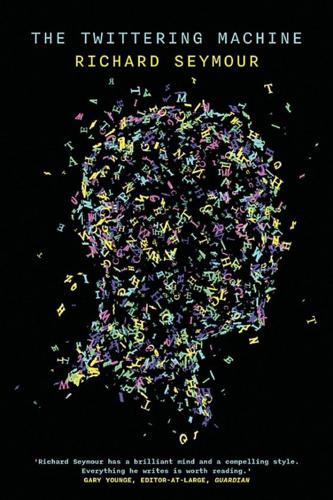
The Twittering Machine
by
Richard Seymour
Published 20 Aug 2019
Clinton, in a major 2010 speech, attacked the usual enemies like hackers and repressive regimes, in defence of an ‘open’ internet. She milked the last dismal vestiges of Californian hippy idealism: alluding to the hoary old sentiment that ‘information wants to be free’, as the hippy entrepreneur and Silicon Valley legend Stewart Brand didn’t quite say.23 She also took to task, as enemies of openness, those countries who didn’t trust the global regulatory oversight of ICANN, an industry-aligned Californian non-profit. Championing an open net was, in addition to being congruent with Washington’s liberal self-image, both a projection of American power and a logical political alliance.
…
If anyone knew what utopia looked like, it would have ceased to be utopia: we would be living in it. Utopia is, literally, a non-place, meaning that utopias at their best are not prescriptions but imaginative placeholders for human desires. At its worst, cyber-utopianism has been a neo-liberal sublimation of 1960s communalism, reflecting the journey from the hippy Stewart Brand and the Whole Earth Catalog to Wired magazine. The whole earth, according to this dispensation, is a ‘global, massively interconnected system of technology vibrating around us’, as executive editor of Wired, Kevin Kelly, put it.26 This conception, which he calls ‘the technium’, saw Kelly, Brand and their confederates serenaded by venture capital and lauded at Davos.
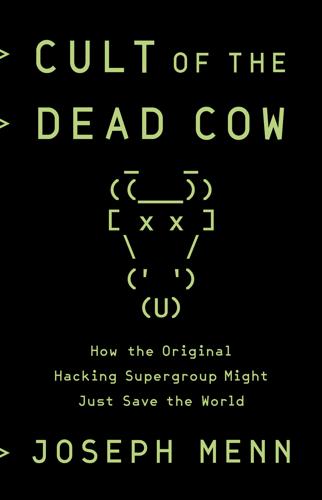
Cult of the Dead Cow: How the Original Hacking Supergroup Might Just Save the World
by
Joseph Menn
Published 3 Jun 2019
Along with shared creative efforts and antiestablishment attitude, that deep alliance meant experimental social structure, early technological adoption, and, as Mann put it, “better living through chemistry.” Even before the Dead had their name, they were a part of Ken Kesey’s Merry Pranksters, the eclectic and idealistic group that drove through America to have fun messing with people and to spread the good news about LSD. Another Prankster, visionary writer and marketer Stewart Brand, would also help spread the good news about the coming age of computing. Brand’s outlets included the ecology-oriented magazine Whole Earth Catalog and the WELL, the pioneering West Coast online community. Among Mann’s friends was Dead lyricist and future WELL regular John Perry Barlow. As a Wesleyan college student, Barlow had begun visiting acid guru Timothy Leary, and he introduced the Dead to Leary in 1967.
…
Neidorf’s trial became a pivotal moment for hackers and their defenders, in large part because of Jesse Dryden’s family friend, John Perry Barlow, the freewheeling Grateful Dead lyricist and early fan of online communities who would be a major influence on cDc. Barlow’s fellow acid-taking Deadhead Stewart Brand had spawned the online community the WELL in 1985, and Barlow was a prolific and eloquent contributor. For those with primitive online access via modems, university networks, or other means, it was a mega bulletin board, broken up by topic. Barlow appreciated the dialogue and the chance to connect with interesting people even from his Wyoming ranch.

After the Gig: How the Sharing Economy Got Hijacked and How to Win It Back
by
Juliet Schor
,
William Attwood-Charles
and
Mehmet Cansoy
Published 15 Mar 2020
It represents the combination of hippie counterculture and technophilia and the view that digital technology was the route to a society free of domination. See also Turner (2006); and Thomas Frank (2000). 8. Turner (2006, 208) takes issue with Barbrook and Cameron’s claim that the Californian Ideology emerged from the New Left. He argues its origins were Stewart Brand’s Whole Earth network and New Communalism. 9. Tech pioneers such as John Perry Barlow (former lyricist for the Grateful Dead), Esther Dyson, and others embarked on lucrative tech-enabled careers themselves and preached the gospel of network-based financial independence. 10. The Jeffersonian vision is discussed by Barbrook and Cameron (1996).
…
Gawker, May 8, 2014. http://valleywag.gawker.com/airbnb-lobbyist-is-charging-800-for-tickets-to-a-shar-1572254090. Tsotsis, Alexia. 2012. “TaskRabbit Gets $13M from Founders Fund and Others to ‘Revolutionize the World’s Labor Force,’ ” 2012. Tech Crunch, July 23, 2012. Turner, Fred. 2006. From Counterculture to Cyberculture: Stewart Brand, the Whole Earth Network, and the Rise of Digital Utopianism. Chicago: University of Chicago Press. Tussyadiah, Iis P., and Juho Pesonen. 2016. “Impacts of Peer-to-Peer Accommodation Use on Travel Patterns.” Journal of Travel Research 55 (8): 1022–40. Uber Technologies, Inc. 2019. “Form S-1 Registration Document.”

Road to Nowhere: What Silicon Valley Gets Wrong About the Future of Transportation
by
Paris Marx
Published 4 Jul 2022
Their response to the social and political challenges of the sixties was to abandon politics altogether and seek out individualized solutions, even going so far as to retreat from society and build their own communities modeled on how they believed their ideal world should work. But their communes displayed the fundamental problems with their approach, and those issues would be echoed in the institutions that were inspired by them. In 1967, former Stanford biology student and US Army soldier Stewart Brand set up the Whole Earth Catalog with his wife, Lois Jennings. The Catalog brought together Brand’s countercultural, scientific, and academic interests in the pursuit of enhancing individual freedom and went on to create an influential nexus of ideas and personalities that inspired the worldview of Silicon Valley.
…
Understanding the Silicon Valley Worldview 1 Margaret O’Mara, The Code: Silicon Valley and the Remaking of America, Penguin Books, 2020, p. 7. 2 Ibid., p. 15. 3 AnnaLee Saxenian, Regional Advantage: Culture and Competition in Silicon Valley and Route 128, Harvard University Press, 1996. 4 O’Mara, The Code, pp. 75–6. 5 Tom Wolfe, “The Tinkerings of Robert Noyce,” Esquire, December 1983, Classic.esquire.com. 6 Fred Turner, From Counterculture to Cyberculture: Stewart Brand, the Whole Earth Network, and the Rise of Digital Utopianism, University of Chicago Press, 2006, p. 31. 7 Ibid., p. 73. 8 Ibid., p. 76. 9 Ibid., p. 14. 10 Richard Barbrook and Andy Cameron, “The Californian Ideology,” Science as Culture 6:1, 1996, imaginaryfutures.net. 11 Saxenian, Regional Advantage, p. 90. 12 O’Mara, The Code, p. 214. 13 Ibid., p. 226. 14 Peter Thiel, “The End of the Future,” National Review, October 3, 2011, Nationalreview.com. 15 Tom Simonite, “Technology Stalled in 1970,” MIT Technology Review, September 18, 2014, Technologyreview.com. 16 David Graeber, “Of Flying Cars and the Declining Rate of Profit,” The Baffler 19, March 2012, Thebaffler.com. 17 O’Mara, The Code, pp. 90–1. 18 Tim Maughan, “The Modern World Has Finally Become Too Complex for Any of Us to Understand,” OneZero, November 30, 2020, Onezero.medium.com. 19 Ibid. 20 Senator Gore, speaking on S. 1067, 101st Congress, 1st sess., Congressional Record 135, May 18, 1989, S 9887. 21 Daniel Greene, The Promise of Access: Technology, Inequality, and the Political Economy of Hope, MIT Press, 2011. 22 Madeline Carr, US Power and the Internet in International Relations: The Irony of the Information Age, Palgrave Macmillan, 2016, p. 58 (author’s emphasis). 23 Turner, From Counterculture to Cyberculture, p. 194. 24 John Perry Barlow, “A Declaration of the Independence of Cyberspace,” February 8, 1996, Eff.org. 25 Turner, From Counterculture to Cyberculture, p. 209. 26 Ibid., p. 222. 27 Ibid. 28 Mariana Mazzucato, The Entrepreneurial State: Debunking Public vs.
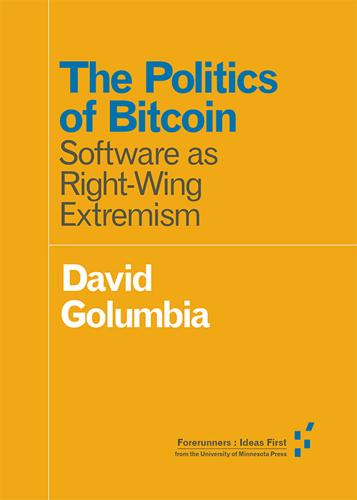
The Politics of Bitcoin: Software as Right-Wing Extremism
by
David Golumbia
Published 25 Sep 2016
Ephemera: Theory and Politics in Organization 12, no. 4: 386–405. Tucker, Jeffrey A. 2015a. Bit by Bit: How P2P Is Freeing the World. Liberty.me. —. 2015b. “A Theory of the Scam.” Beautiful Anarchy (January 2). http://tucker.liberty.me/. Turner, Fred. 2008. From Counterculture to Cyberculture: Stewart Brand, the Whole Earth Network, and the Rise of Digital Utopianism. Chicago: University of Chicago Press. Tutino, Antonella, and Carlos E. J. M. Zarazaga. 2014. “Inflation Is Not Always and Everywhere a Monetary Phenomenon.” Economic Letter (June). http://www.dallasfed.org/. Varoufakis, Yanis. 2013.

Green Metropolis: Why Living Smaller, Living Closer, and Driving Less Are Thekeys to Sustainability
by
David Owen
Published 16 Sep 2009
City families live more compactly, do less damage to fragile ecosystems, burn less fuel, build stronger social ties to larger numbers of people, and, most significantly, produce fewer children, since large families have less economic utility in dense urban settings than they do in marginal agricultural areas. Wealthy westerners are capable of romanticizing truly desolate urban living conditions, as was evident with Hollywood’s embrace of the 2008 movie Slumdog Millionaire. But humanely managing wholesale urban migration will play a critical part in any quest for global sustainability. Stewart Brand has written, “Already, as a result of headlong urbanization, birthrates have plummeted in the developing world from 6 children per woman in the 1970s to 2.9 now. Twenty ‘less developed’ countries, including China, Chile, Thailand, and Iran, have already dropped below the replacement rate of 2.1 children per woman.”8 That’s good news, both locally and globally, and Brand sees hope for the world in the spread of dense, jumbled urban neighborhoods very much like the ones that the Chinese have assiduously been leveling in Beijing.
…
Sachs, “Coping with a Persistent Oil Crisis,” Scientific American , October 2008. 5 Charles Dickens, Bleak House (New York: Modern Library Edition, 2002), p. 28. 6 There are some good hutong photographs here: http://beijingman.blogspot.com/2007/12/beijing-hutong-time-out.html. See also Wang Wenbo, Recollections of Hutong (Beijing: China Nationality Art Photograph Publishing House, 2006)—a wonderful book, if you can find it. 7 Peter Hessler, “Hutong Karma,” The New Yorker, February 13 and 20, 2006. 8 Stewart Brand, “City Planet,” Strategy + Business, Spring 2006: http://www.strategy-business.com/press/16635507/06109. 9 Elisabeth Rosenthal, “New Jungles Prompt a Debate on Saving Primeval Rain Forests,” The New York Times, January 30, 2009. 10 Danielle Pergament, “36 Hours: Dubai,” The New York Times, April 6, 2008. 11 Seth Sherman, “Dubai, Where Too Much Is Never Enough,” The New York Times, June 4, 2006. 12 William McDonough and Michael Braungart, Cradle to Cradle: Remaking the Way We Make Things (New York: North Point Press, 2002). 13 Jennifer Conlin, “Going Green in Australia’s Blue Mountains,” The New York Times, April 6, 2008. 14 Michael Pollan, The Omnivore’s Dilemma: A Natural History of Four Meals (New York: Penguin Books, 2006), p. 242. 15 Michael Specter, “Big Foot,” The New Yorker, February 25, 2008. 16 From “Tesco, Carbon and the Consumer,” a speech by Sir Terry Leahy, Tesco’s CEO, given in London on January 1, 2007.

The Connected Company
by
Dave Gray
and
Thomas Vander Wal
Published 2 Dec 2014
I have also had the privilege to receive help and advice from true luminaries, such as Richard Saul Wurman, Saul Kaplan, Kevin Kelly, Jared Spool, Peter Vander Auwera, Dan Roam, Thor Muller, Paul Pangaro, Lane Becker, Peter Morville, Lou Rosenfeld, Nilofer Merchant, John Hagel III, JP Rangaswami, Doc Searls, Stowe Boyd, Jay Cross, Marcia Conner, Ben Cerveny, Chris Brogan, Bob Logan, David Armano, Alex Osterwalder, and Don Norman. Although I don’t know them personally, for the ideas in this book, I owe a deep debt of gratitude to the works of Gary Hamel, Clayton Christensen, Arie de Geus, Ricardo Semler, Eric Beinhocker, Daniel Pink, Richard Florida, Stewart Brand, Bill McKelvey, Stafford Beer, Herbert Simon, John Boyd, and perhaps most of all, Dr. W. Edwards Deming, many of whose groundbreaking ideas are only now being realized. For the access they provided to connected companies and their inner workings, I must thank Ray LaDriere, Kevin Kernan, Michael Bonamassa, Jerry Rudisin, Sunny Gupta, Adrian Cockcroft, Harry Max, Mary Walker, Mark Interrante, Ben Hart, Livia Labate, Sherri Maxson, and Sharif Renno.
…
The Future of Management By Bill Breen and Gary Hamel, Harvard Business School Press, 2007. The Ghost in the Machine By Arthur Koestler, Macmillan, 1968. The Great Reset: How New Ways of Living and Working Drive Post-Crash Prosperity By Richard Florida, Harper, 2010. How Buildings Learn: What Happens After They’re Built By Stewart Brand, Viking Adult, 1994. Human Sigma: Managing the Employee-Customer Encounter By John Fleming and Jim Asplund, Gallup Press, 2007. In the Plex: How Google Thinks, Works, and Shapes Our Lives By Steven Levy, Simon and Schuster, 2011. Information Rules: A Strategic Guide to the Network Economy By Carl Shapiro and Hal R.
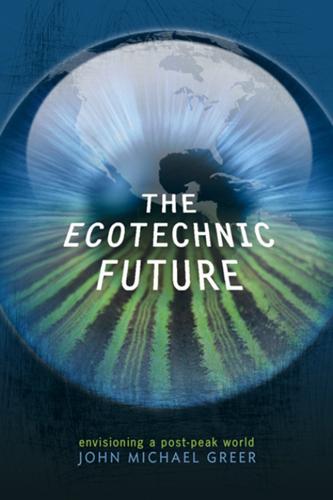
The Ecotechnic Future: Envisioning a Post-Peak World
by
John Michael Greer
Published 30 Sep 2009
I should confess at the start that I have been a fan of Wright’s work for decades, and not merely because he was one of the handful of first-rate talents influenced by the modern Druid tradition.2 In his quest for an organic architecture, he reshaped the vocabulary of space and form in ways that are still being explored by architects today, and he also produced rather more than his share of stunningly beautiful buildings. Still, there are few geniuses whose works have no flaws, and Wright was not among them. Stewart Brand ably sets out the case for the prosecution.3 To begin with, he notes, Wright’s roofs leak. Since one essential purpose of shelter is to keep weather out, and making a roof watertight is not that difficult, Wright’s problems with this basic task are not a good sign. More broadly, Wright paid more attention to the aesthetics of building materials than their structural qualities, and built a good 121 122 T he E cotechnic F u t u re many splendid buildings that could not hold up to normal wear and tear, or in some cases, the mere force of gravity.
…
It may be clear from the following, however, that I find claims of the immorality of eating animals unconvincing. Chapter Seven: Home 1. In Le Corbusier, Towards a New Architecture, Dover, 1986. 2. See, for example, the introduction to Frank Lloyd Wright, Truth Against the World: Frank Lloyd Wright Speaks for an Organic Architecture, WileyInterscience, 1987. 3. In Stewart Brand, How Buildings Learn: What Happens After They’re Built, Viking, 1994. 4. The R-value (resistance to heat) of a wall built with standard American domestic wooden construction practices averages 19, while three-string straw bale construction faced on both sides with plaster and cob has been rated with R-values from 52 to 74.

Possible Minds: Twenty-Five Ways of Looking at AI
by
John Brockman
Published 19 Feb 2019
We were ushered into a large space on the MIT campus, in the middle of which there was a “cold room” raised off the floor and enclosed in glass, in which technicians wearing white lab coats, scarves, and gloves were busy collating punch cards coming through an enormous machine. When I approached, the steam from my breath fogged up the window into the cold room. Wiping it off, I saw “the” computer. I fell in love. Later, in the fall of 1967, I went to Menlo Park to spend time with Stewart Brand, whom I had met in New York in 1965 when he was a satellite member of the USCO group of artists. Now, with his wife, Lois, a mathematician, he was preparing the first edition of the Whole Earth Catalog for publication. While Lois and the team did the heavy lifting on the final mechanicals for WEC, Stewart and I sat together in a corner for two days, reading, underlining, and annotating the same paperback copy of Cybernetics that Cage had handed to me the year before, and debating Wiener’s ideas.
…
The poem is about his own imagination; it concerns what he attends to. The parable of the blind men and an elephant. Like the elephant, AI is too big a topic for any one perspective, never mind the fact that no two people seem to see things the same way. What do we want the book to do? Stewart Brand has noted that “revisiting pioneer thinking is perpetually useful. And it gives a long perspective that invites thinking in decades and centuries about the subject. All contemporary discussion is bound to age badly and immediately without the longer perspective.” Danny Hillis wants people in AI to realize how they’ve been programmed by Wiener’s book.

Green Swans: The Coming Boom in Regenerative Capitalism
by
John Elkington
Published 6 Apr 2020
Having worked on a book called The Gaia Atlas of Planet Management back in the 1980s, I have long been interested in this theme. It probably tracks back to the various editions of The Whole Earth Catalog, which I read assiduously between 1968 and 1972.44 Imagine my joy, then, to find myself sitting next to Whole Earth Catalog founder Stewart Brand at the Lovelock centennial event, and across the table from his wife Ryan Phelan, who runs an organization called Revive & Restore.45 I learned that her team had been using the triple bottom line to evaluate their work on saving the horseshoe crab from exploitation by the pharmaceutical industry.
…
Thank you, too, Silvio Rebêlo for the Green Swan visual identity, used on the front cover—and Carlo Schifano and Conor Dowse of Twist Creative for their help with the visual side of Green Swan Day, among other things. In addition to those already mentioned, I thank our wider ecosystem, particularly: Salla Ahonen, Simon Anholt, Jamie Arbib, Duncan Austin, Azeem Azhar (as editor of Exponential View), Oli Barrett, Janine Benyus, José Luis Blasco Vazquez, David Blood, Gail Bradbrook, Stewart Brand, Sir Richard Branson, Sarah Brunwin, Tom Burke, Peter Byck, Mark Campanale, Jay Coen Gilbert, Dame Polly Courtice, Peter Diamandis, Robert (Bob) Eccles, Paul Ekins, Fiona Ellis, Thomas Ermacora, Marie Gad, John Gilbert, James Gomme, Al Gore, David Grayson, Sarah Green Carmichael, Nick Haan, Julia Hailes, Sonja Haut, Paul Hawken, Katie Hill, Julian Hill-Landolt, Dominic Hofstetter, Simo Honkanen, Sarah Hunter, the Rt.
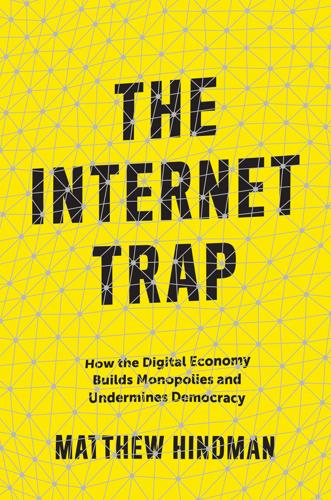
The Internet Trap: How the Digital Economy Builds Monopolies and Undermines Democracy
by
Matthew Hindman
Published 24 Sep 2018
But mythbusting means little if it cannot replace vapid folk theories of the internet with something better. Ironically, clearer thinking about the internet comes from taking all this talk about the“nature” of the internet seriously. An Evolutionary Model of Audiences The use of biological metaphors has a long history in the rhetoric of technology, from Stewart Brand’s focus on human “co-evolution” with technology to Schumpeter’s discussion of technology change as “industrial The “Nature” of the Internet • 165 mutation.”6 Recent communication scholarship on media “niches”7 and “audience evolution,”8 too, has relied on biological language to explain important shifts in the media landscape.
…
The future of personalization at news websites: lessons from a longitudinal study. Journalism Studies 13(5–6): 775–90. Toth, O. (2014, May). Moving the conversation to where you want to have it. Huffington Post. Retrieved from http://www.huffingtonpost.com/otto-toth/were-moving-the -conversation_b_5423675.html. Turner, F. (2006). From counterculture to cyberculture: Stewart Brand, the Whole Earth Network, and the rise of digital utopianism. Chicago, IL: University of Chicago Press. Turow, J. (2012). The Daily You: how the new advertising industry is defining your identity and your worth. New Haven, CT: Yale University Press. Bibliography • 223 Upworthy. (2013, December).
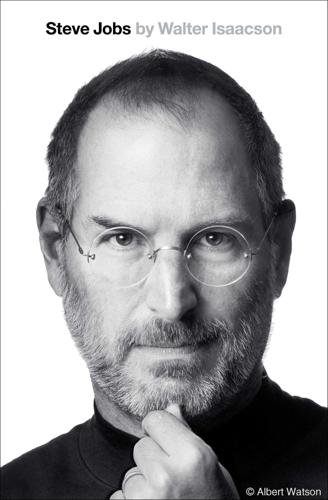
Steve Jobs
by
Walter Isaacson
Published 23 Oct 2011
The Search: Interviews with Steve Jobs, Daniel Kottke, Elizabeth Holmes, Greg Calhoun. Young, 72; Young and Simon, 31–32; Moritz, 107. Breakout: Interviews with Nolan Bushnell, Al Alcorn, Steve Wozniak, Ron Wayne, Andy Hertzfeld. Wozniak, 144–149; Young, 88; Linzmayer, 4. CHAPTER 5: THE APPLE I Machines of Loving Grace: Interviews with Steve Jobs, Bono, Stewart Brand. Markoff, xii; Stewart Brand, “We Owe It All to the Hippies,” Time, Mar. 1, 1995; Jobs, Stanford commencement address; Fred Turner, From Counterculture to Cyberculture (Chicago, 2006). The Homebrew Computer Club: Interviews with Steve Jobs, Steve Wozniak. Wozniak, 152–172; Freiberger and Swaine, 99; Linzmayer, 5; Moritz, 144; Steve Wozniak, “Homebrew and How Apple Came to Be,” www.atariarchives.org; Bill Gates, “Open Letter to Hobbyists,” Feb. 3, 1976.
…
“The hierarchical systems of the East Coast, England, Germany, and Japan do not encourage this different thinking. The sixties produced an anarchic mind-set that is great for imagining a world not yet in existence.” One person who encouraged the denizens of the counterculture to make common cause with the hackers was Stewart Brand. A puckish visionary who generated fun and ideas over many decades, Brand was a participant in one of the early sixties LSD studies in Palo Alto. He joined with his fellow subject Ken Kesey to produce the acid-celebrating Trips Festival, appeared in the opening scene of Tom Wolfe’s The Electric Kool-Aid Acid Test, and worked with Doug Engelbart to create a seminal sound-and-light presentation of new technologies called the Mother of All Demos.
…
And as always, I am most deeply indebted to my wife, Cathy, for her editing, suggestions, wise counsel, and so very much more. SOURCES Interviews (conducted 2009–2011) Al Alcorn, Roger Ames, Fred Anderson, Bill Atkinson, Joan Baez, Marjorie Powell Barden, Jeff Bewkes, Bono, Ann Bowers, Stewart Brand, Chrisann Brennan, Larry Brilliant, John Seeley Brown, Tim Brown, Nolan Bushnell, Greg Calhoun, Bill Campbell, Berry Cash, Ed Catmull, Ray Cave, Lee Clow, Debi Coleman, Tim Cook, Katie Cotton, Eddy Cue, Andrea Cunningham, John Doerr, Millard Drexler, Jennifer Egan, Al Eisenstat, Michael Eisner, Larry Ellison, Philip Elmer-DeWitt, Gerard Errera, Tony Fadell, Jean-Louis Gassée, Bill Gates, Adele Goldberg, Craig Good, Austan Goolsbee, Al Gore, Andy Grove, Bill Hambrecht, Michael Hawley, Andy Hertzfeld, Joanna Hoffman, Elizabeth Holmes, Bruce Horn, John Huey, Jimmy Iovine, Jony Ive, Oren Jacob, Erin Jobs, Reed Jobs, Steve Jobs, Ron Johnson, Mitch Kapor, Susan Kare (email), Jeffrey Katzenberg, Pam Kerwin, Kristina Kiehl, Joel Klein, Daniel Kottke, Andy Lack, John Lasseter, Art Levinson, Steven Levy, Dan’l Lewin, Maya Lin, Yo-Yo Ma, Mike Markkula, John Markoff, Wynton Marsalis, Regis McKenna, Mike Merin, Bob Metcalfe, Doug Morris, Walt Mossberg, Rupert Murdoch, Mike Murray, Nicholas Negroponte, Dean Ornish, Paul Otellini, Norman Pearlstine, Laurene Powell, Josh Quittner, Tina Redse, George Riley, Brian Roberts, Arthur Rock, Jeff Rosen, Alain Rossmann, Jon Rubinstein, Phil Schiller, Eric Schmidt, Barry Schuler, Mike Scott, John Sculley, Andy Serwer, Mona Simpson, Mike Slade, Alvy Ray Smith, Gina Smith, Kathryn Smith, Rick Stengel, Larry Tesler, Avie Tevanian, Guy “Bud” Tribble, Don Valentine, Paul Vidich, James Vincent, Alice Waters, Ron Wayne, Wendell Weeks, Ed Woolard, Stephen Wozniak, Del Yocam, Jerry York.
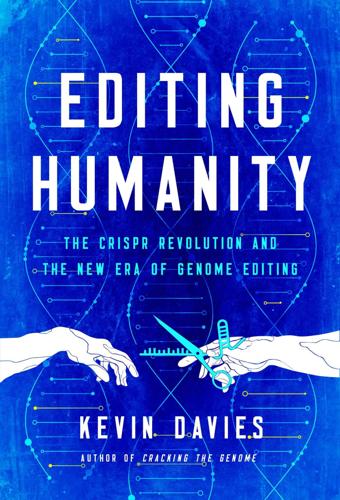
Editing Humanity: The CRISPR Revolution and the New Era of Genome Editing
by
Kevin Davies
Published 5 Oct 2020
Steven Salzberg, “The Loneliest Word, And The Extinction Crisis,” Forbes, July 8, 2019, https://www.forbes.com/sites/stevensalzberg/2019/07/08/is-this-the-loneliest-word/#1d02e2bd2367. 16. Ed Yong, “The last of its kind,” Atlantic, July 2019, https://www.theatlantic.com/magazine/archive/2019/07/extinction-endling-care/590617/. 17. Stewart Brand, “The dawn of de-extinction. Are you ready?,” TED, February 2013, https://www.ted.com/talks/stewart_brand_the_dawn_of_de_extinction_are_you_ready?language=en. 18. Elizabeth Kolbert, The Sixth Extinction: An Unnatural History (New York: Henry Holt & Co., 2014). 19. B. J. Novak et al., “Advancing a New Toolkit for Conservation: From Science to Policy,” CRISPR Journal 1, (2018): 11–15, https://www.liebertpub.com/doi/10.1089/crispr.2017.0019. 20.
…
“He was calling for a mate and there wasn’t a mate for him on the entire planet,” Mandica said. By the time a species reaches that point, it is just one small, inevitable step to extinction. On Oahu, Hawaii, a trailer provides the last refuge for dozens of species of snails, passing what could be their final days in plastic containers destined to become coffins. Environmentalist Stewart Brand recounts the passing of Martha, the last passenger pigeon, as if she was a blood relative. Her species was the most abundant bird in the world, with flocks reportedly one mile wide and four hundred miles long, variously described as a biological storm, a feathered tempest, and distant thunder.

Likewar: The Weaponization of Social Media
by
Peter Warren Singer
and
Emerson T. Brooking
Published 15 Mar 2018
In the right hands, those lies can become powerful weapons. 4 The Empires Strike Back Censorship, Disinformation, and the Burial of Truth “Truth” is a lost cause and . . . reality is essentially malleable. —PETER POMERANTSEV AND MICHAEL WEISS, “The Menace of Unreality” “INFORMATION WANTS TO BE FREE,” declared web pioneer and counterculture icon Stewart Brand at the world’s first Hackers Conference in 1984. This freedom wouldn’t just sound the death knell of censorship; it would also mark the end of authoritarian regimes that relied on it. After all, what government could triumph against a self-multiplying network of information creators and consumers, where any idea might mobilize millions in a heartbeat?
…
And caught in the middle will be us—all of us—part of a conflict that we definitely started but whose dynamics we will soon scarcely understand. It is a bizarre, science-fiction-seeming future. But for something that began with an SF-lovers email thread, it also seems strangely appropriate. 9 Conclusion What Do We Know, What Can We Do? We are as gods and might as well get good at it. —STEWART BRAND, “We Are as Gods” LONG BEFORE THE MILITARY CONVOY ARRIVED in the muggy town of Dara Lam, news of the meeting between the U.S. Army colonel and the unpopular governor of Kirsham province had seeped into social media. Angry with the American presence and the governor’s corruption, local citizens organized for a demonstration.
…
utm_term=.viEmNOlN3o#.xtPNkBWkwD. 256 “generative adversarial networks”: Cade Metz, “Google’s Dueling Neural Networks Spar to Get Smarter, No Humans Required,” Wired, April 11, 2017, https://www.wired.com/2017/04/googles-dueling-neural-networks-spar-get-smarter-no-humans-required/. 9. CONCLUSION 258 “We are as gods”: Stewart Brand, “We Are as Gods,” Whole Earth Catalog, Fall 1968, http://www.wholeearth.com/issue/1010/article/195/we.are.as.gods. Although the words are now indelibly his, Brand actually lifted the line from the British anthropologist Edmund Leach. 258 Long before the military: Authors’ phone interview with representatives of the Joint Readiness Training Center, November 14, 2014. 260 “built to accomplish”: “Zuckerberg’s Letter to Investors,” Reuters, February 1, 2012, https://www.reuters.com/article/us-facebook-letter-idUSTRE8102MT20120201. 261 youth is no defense: Brooke Donald, “Stanford Researchers Find Students Have Trouble Judging the Credibility of Information Online,” Stanford Graduate School of Education News Center, November 22, 2016, https://ed.stanford.edu/news/stanford-researchers-find-students-have-trouble-judging-credibility-information-online. 263 other nations now look: Michael Birnbaum, “Sweden Is Taking On Russian Interference Ahead of Fall Elections.

Reinventing Discovery: The New Era of Networked Science
by
Michael Nielsen
Published 2 Oct 2011
The report does not directly compute total worldwide governmental spending on basic research, and so the figure of 100 billion dollars is an estimate, based on several other numbers from that report. p 206: The Daniel Hillis quote “there are problems that are impossible&0;. . .” is from page 157 of Stewart Brand’s book The Clock of the Long Now [27]. Appendix p 211: A gentle introduction to the density Hales Jewett (DHJ) theorem, including on explanation of the concept of combinatorial lines, may be found in [66]. p 212: For Szemerédi’s theorem, see [218]. The Green-Tao theorem is proved in [84].
…
Boroson and Tod R. Lauer. A candidate sub-parsec supermassive binary black hole system. Nature, 458:53–55, March 5, 2009. [26] Jean-Claude Bradley. Open notebook science. Drexel CoAS E-Learning (blog), September 26, 2006. http://drexel-coas-elearning.blogspot.com/2006/09/open-notebook-science.html. [27] Stewart Brand. The Clock of the Long Now. New York: Basic Books, 2000. [28] John Seely Brown and Paul Duguid. The Social Life of Information. Boston: Harvard Business School Press, 2000. [29] Zacary Brown. I’m a solver. Perspectives on Innovation (blog), February 4, 2009. http://blog.innocentive.com/2009/02/04/im-a-solver-zacary-brown/

Possiplex
by
Ted Nelson
Published 2 Jan 2010
(2) 1987 In Cambridge I saw Tom Kuhn and asked him how he felt about my extensions to his terminology, like “paradigm lock” and “paradigm warp.” ‘Do what you like,’ he said, ‘I’ve run it into the ground already.’ What would Stewart Brand have said? ca. 1987 When Microsoft published a revised Computer Lib—an edition that still makes me deeply unhappy—they solicited comments from various people. Stewart Brand said: ‘Ted Nelson is the Thomas Paine of the computer revolution.’ I kind of liked that; I had admired Paine since highschool. But the remark makes me just a writer, not a designer, which is where a lot of people want to pigeonhole me.
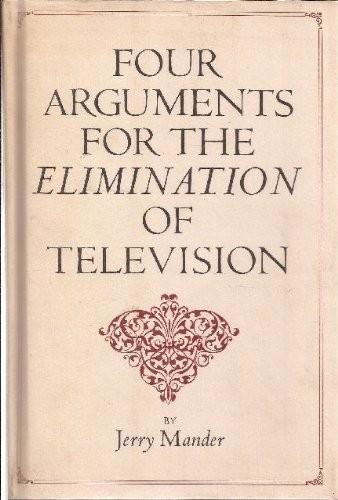
Four Arguments for the Elimination of Television
by
Jerry Mander
Published 1 Jan 1977
EFFECTS OF TELEVISION ON THE HUMAN BEING Health and Light As I began to look around for an explanation to account for the physical symptoms people were describing, particularly those related to "deadness," "zombielike feeling," "irritation," and so on-symptoms ordinarily explained as psychologically induced-Stewart Brand sent me a copy of a book called Health and Light by Dr. John Ott, a former banker who quit to become a time-lapse photographer and then founded the Environmental Health and Light Research Institute in Sara- sota, Florida. Now in his seven ties, Ott presides over a board of directors of doctors and medical researchers who do pio- neering work on the effects of light on the human body.
…
Often while working on this project, I found myself mentally checking things with the way he would have seen them, his mind remains that alive to me. Finally, for contributions of hot leads and miscellaneous good ideas, I would like to thank Larry Adleman, Rina AI- calay, Obie Benz, Jeff Brand, Stewart Brand, Susan Brock- man, Neeli Cherkovski, Sheldon Davis, Libby Edwards, Mali Gesmundo, Todd Gitlin, Rubin Glickman, Colette Goerner, Arlene Goldbard, Rasa Gustaitis, Jim Harding, Janet Kranz- berg, Ann Kyle, Marie Helene Laraque, George Leonard, Leo Litwak, Jerry Lubenow, Joan Lubenow, John Magnuson, Jane Margold, Susan Margolis, Katinka Matson, John Matt- son, Jeannie Milligan, Albert Morse, Stewart Mott, Mike Murphy, Michael Nolan, Mark Obenhaus, Zev Putterman, Michael Shamberg, Michael Singer, Dick Shouse, Sara Ur- quart-Duskin, Henry Weinstein, and the folks at the Ant Farm, Optic Nerve and Malvina's. .,. .f' - "..f' .,..,
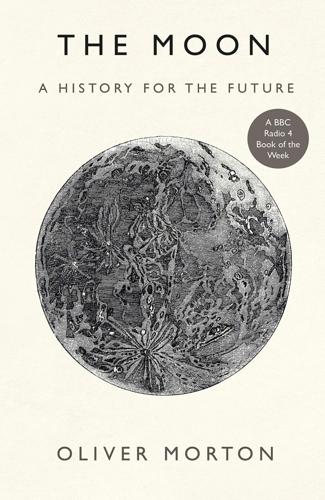
The Moon: A History for the Future
by
Oliver Morton
Published 1 May 2019
O’Neill imagined one such structure—he called it “Island Three”—as a hollow cylinder kilometres long, spinning on its axis so that the workers living within would enjoy a centrifugal force that emulated gravity.5 Sunlight would be let in through long windows; the neighbours would live overhead. This vision, published under the title “The High Frontier” (1976), proved to have a wide and eclectic appeal. Tech-heads liked it; hippies liked it, too; so did the ecology minded. Stewart Brand, a magnificent Californian impresario of ideas who had campaigned for NASA to release pictures of the whole Earth from space when they were not available, took up the cause in his publications Whole Earth Catalog and its spin-off CoEvolution Quarterly. The same publications had also, not coincidentally, been the venue for some of the first serious discussions of James Lovelock’s Gaia hypothesis.
…
Grinning and turning, changing and sure to change again, I danced in the surf to the rising Moon. ACKNOWLEDGEMENTS THIS BOOK HAS BENEFITTED FROM THE TIME AND GENEROSITY of many people, during both its long mostly unwitting latency and its somewhat frenetic execution. For various sorts of information, inspiration and practical help, I would like to thank Oded Aharonson, Eric Asphaug, Stewart Brand, Holly Jean Buck, Niall Campbell, Andrew Chaikin, Carissa Christensen, Charles Cockell, Ashley Conway, Olaf Corry, Ian Crawford, Martin Elvis, Jeff Foust, Mike French, Trevor Hammond, Bill Hartmann, Jim Head, Tracy Hester, Scott Hubbard, Laura Joanknecht, Roz Kaveney, John Kessel, Jeff Lewis, Simon Lewis, Simon Lock, John Logsdon, Neil Maher, Will Marshall, Chris McKay, Jay Melosh, Farah Mendelsohn, Philip Metzger, Clive Neal, Ted Nordhaus, Ted Parson, Stephen Pumfrey, Bob Richards, Paul Robbins, Stan Robinson, Simon Schaffer (as always), Jean Schneider, Rusty Schweickart, Sarah Stewart, Timothy Stubbs, Bron Szerszynski, David Waltham, Dennis Wingo, Nick Woolf, Pete Worden and Kevin Zahnle.
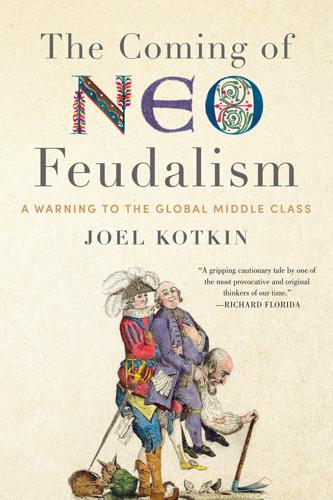
The Coming of Neo-Feudalism: A Warning to the Global Middle Class
by
Joel Kotkin
Published 11 May 2020
“Clean Rich” or High-Tech Monopolists? To a remarkable extent, the tech elites have presented themselves as dynamic, entrepreneurial outsiders who want to make the world better. In the early days of the tech revolution, some imagined an almost utopian, communitarian society on the horizon. The California author Stewart Brand, writing in Rolling Stone in 1972, predicted that when computers became widely available, we would all become “computer bums, all more empowered as individuals and as co-operators.” It would be a new era of enhanced “spontaneous creation and of human interaction.”36 The “early digital idealists” envisioned a “sharing” web that functioned “free from the constraints of the commercial order.”37 Instead, a technocratic economy is engendering a new kind of hierarchy, favoring highly skilled technicians and engineers.
…
Tech Giants Are Helping to Build China’s Surveillance State,” Intercept, July 11, 2019, https://theintercept.com/2019/07/11/china-surveillance-google-ibm-semptian/; Mike Elgan, “Uh Oh: Silicon Valley is building a Chinese-style social credit system,” Fast Company, August 26, 2019, https://www.fastcompany.com/90394048/uh-oh-silicon-valley-is-building-a-chinese-style-social-credit-system; Dan Strumpf and Wenxin Fan, “Who Wants to Supply China’s Surveillance State? The West,” Wall Street Journal, November 1, 2017, https://www.wsj.com/articles/who-wants-to-supply-chinas-surveillance-state-the-west-1509540111. 36 Stewart Brand, “Spacewar,” Rolling Stone, December 7, 1972, http://www.wheels.org/spacewar/stone/rolling_stone.html. 37 Jaron Lanier, Who Owns the Future? (New York: Simon & Schuster, 2013), xii. 38 Will Oremus, “Most Americans Still Don’t Fear Big Tech’s Power,” Slate, March 16, 2018, https://slate.com/technology/2018/03/most-americans-still-dont-fear-big-techs-power-survey-finds.html; Aaron Smith, “Public Attitudes Toward Technology Companies,” Pew Research Center, June 28, 2018, http://www.pewinternet.org/2018/06/28/public-attitudes-toward-technology-companies/. 39 Wolfgang Streeck, How Will Capitalism End?
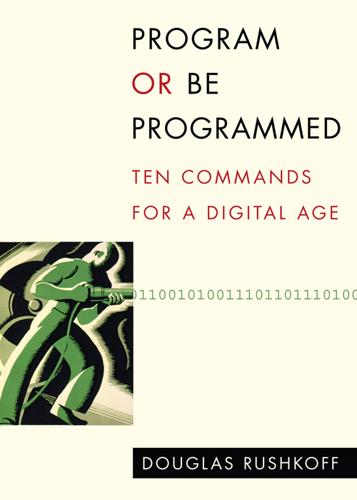
Program Or Be Programmed: Ten Commands for a Digital Age
by
Douglas Rushkoff
Published 1 Nov 2010
To most people, this meant a confirmation of copyright—that everything we posted on the bulletin boards belonged to us, and couldn’t be published by someone else without permission. To others, including me, You Own Your Own Words served as an ethical foundation: You, the human being on the other side of the modem, are responsible for what you say and do here. You are accountable. Given that the WELL was developed by farsighted cultural pioneers such as Stewart Brand, Larry Brilliant, Kevin Kelly, and Howard Rheingold, we shouldn’t be surprised that they sought to compensate for some of the disconnection online between people and their words. And that’s why, from the very beginning, I decided to be myself online. I’ve only used one name on the Internet: Rushkoff.
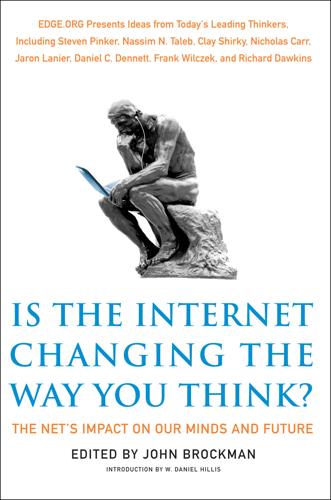
Is the Internet Changing the Way You Think?: The Net's Impact on Our Minds and Future
by
John Brockman
Published 18 Jan 2011
Myers Navigating Physical and Virtual Lives: Linda Stone Not Everything or Everyone in the World Has a Home on the Internet: Barry C. Smith Ephemera and Back Again: Chris DiBona What Do We Think About? Who Gets to Do the Thinking?: Evgeny Morozov The Internet Is a Cultural Form: Virginia Heffernan Wallowing in the World of Knowledge: Peter Schwartz One’s Guild: Stewart Brand Trust Nothing, Debate Everything: Jason Calacanis Harmful One-Liners, an Ocean of Facts, and Rewired Minds: Haim Harari What Other People Think: Marti Hearst The Extinction of Experience: Scott D. Sampson The Collective Nature of Human Intelligence: Matt Ridley Six Ways the Internet May Save Civilization: David Eagleman Better Neuroxing Through the Internet: Samuel Barondes A Gift to Conspirators and Terrorists Everywhere: Marcel Kinsbourne The Ant Hill: Eva Wisten I Can Make a Difference Because of the Internet: Bruce Hood Go Virtual, Young Man: Eric Weinstein My Internet Mind: Thomas A.
…
Our identity is embedded in what we know. And how I think is an expression of that identity. For me, the Internet has led to that deep sense of collaboration, awareness, and ubiquitous knowledge that means that my thought processes are not bound by the meat machine that is my brain, nor my locality, nor my time. One’s Guild Stewart Brand Founder, Whole Earth Catalog; cofounder, the WELL; cofounder, Global Business Network; author, Whole Earth Discipline I couldn’t function without them, and I suspect the same is true for nearly all effective people. By “them,” I mean my closest intellectual collaborators. They are the major players in my social, extended mind.

This Will Make You Smarter: 150 New Scientific Concepts to Improve Your Thinking
by
John Brockman
Published 14 Feb 2012
Sean Carroll The Pointless Universe Looking at the universe through our anthropocentric eyes, we can’t help but view things in terms of causes, purposes, and natural ways of being. Samuel Arbesman The Copernican Principle We are not anywhere special. J. Craig Venter We Are Not Alone in the Universe There is a humancentric, Earthcentric view of life that permeates most cultural and societal thinking. Stewart Brand Microbes Run the World This biotech century will be microbe-enhanced and maybe microbe-inspired. Richard Dawkins The Double-Blind Control Experiment Why do half of all Americans believe in ghosts, three-quarters believe in angels, a third believe in astrology, three-quarters believe in hell?
…
Sasselov estimates that there are approximately a hundred thousand Earths and super-Earths within our own galaxy. The universe is young, so wherever we find microbial life, there will be intelligent life in the future. Expanding our scientific reach farther into the skies will change us forever. Microbes Run the World Stewart Brand Founder, Whole Earth Catalog; cofounder, the WELL; cofounder, Global Business Network; author, Whole Earth Discipline “Microbes run the world.” That opening sentence of the National Research Council’s The New Science of Metagenomics sounds reveille for a new way of understanding biology and maybe of understanding society as well.

How Not to Network a Nation: The Uneasy History of the Soviet Internet (Information Policy)
by
Benjamin Peters
Published 2 Jun 2016
“There was a clear but not formally stated understanding,” noted Baran, “that a survivable communications network is needed to stop, as well as to help avoid, a war.”38 A network that can survive an enemy attack could ensure the threat of the mutual nuclear annihilation—a threat so cataclysmic that it would rationally deter (Baran and his military superiors hoped) either the Soviets, the Americans, or any other nuclear power from striking first.39 Baran’s inspiration for packet switching as a way to build a survivable network traces back to Warren McCulloch’s cybernetic conception of the human brain as a complex and resilient logical processor. As Baran reported in an interview with Stewart Brand, “McCulloch in particular inspired me. He described how he could excise a part of the brain, and the function in that part would move over to another part.”40 The same interview lists McCulloch and Pitt’s 1943 paper on neural networks as a sensible reference, although Baran also noted that he was reading more broadly in the “subject of neural nets,” a literature that probably included McCulloch, Pitts, Jerome Lettvin, Humberto Maturana, and others.
…
Kristie Mackrasis, Seduced by Secrets: Inside the Stasi’s Spy-Tech World (New York: Cambridge University Press, 2014), 23, 133, 139, esp. 112–140. 38. Judy O’Neill, “Interview with Paul Baran,” Charles Babbage Institute, OH 182, March 5, 1990, Menlo Park, CA, accessed April 15, 2015, http://www.gtnoise.net/classes/cs7001/fall_2008/readings/baran-int.pdf. 39. Ibid.; see also Stewart Brand, “Founding Father,” Wired 9 (3) (1991), accessed April 15, 2015, http://archive.wired.com/wired/archive/9.03/baran_pr.html. 40. Brand, “Founding Father.” 41. Ibid. 42. Bradley Voytek, “Are There Really as Many Neurons in the Human Brain as Stars in the Milky Way?,” Nature (Scitable blog, May 20, 2013), accessed April 15, 2015, http://www.nature.com/scitable/blog/brain-metrics/are_there_really_as_many. 43.

The End of Doom: Environmental Renewal in the Twenty-First Century
by
Ronald Bailey
Published 20 Jul 2015
As a result, the researchers conclude that while the need for action is urgent, there is still time to rescue and restore the biodiversity of the oceans. Cities Spare Nature Another extremely positive megatrend with regard to protecting and restoring nature is urbanization. In his 2010 article “How Slums Can Save the Planet,” prominent environmental thinker Stewart Brand cited architect Peter Calthorpe’s 1985 assertion that “[t]he city is the most environmentally benign form of human settlement. Each city dweller consumes less land, less energy, less water, and produces less pollution than his counterpart in settlements of lower densities.” By 2010, the majority of people lived in cities for the first time in history.
…
Jackson, “Ecological Extinction and Evolution in the Brave New Ocean,” Proceedings of the National Academy of Sciences 105, supp. 1 (August 12, 2008): 11458–11465. www.pnas.org/content/105/Supplement_1/11458.full. “halts, and even reverses”: Christopher Costello, Steven D. Gaines, and John Lynham, “Can Catch Shares Prevent Fisheries Collapse?” Science 321.5896 (September 19, 2008): 1678–1681. www.sciencemag.org/content/321/5896/1678.short . “The city is the most environmentally benign form”: Stewart Brand, citing Peter Calthorpe in “How Slums Can Save the Planet.” Prospect, January 27, 2010. www.prospectmagazine.co.uk/magazine/how-slums-can-save-the-planet/#.U7sUp6goxyg. a globally interconnected world: Paolo D’Odorico et al., “Feeding Humanity Through Global Food Trade.” Earth’s Future 2.9 (September 2014): 458–469. onlinelibrary.wiley.com/doi/10.1002/2014EF000250/abstract.

The Human City: Urbanism for the Rest of Us
by
Joel Kotkin
Published 11 Apr 2016
More than 80 percent of employment growth from 2007 to 2013 was in the newer suburbs and exurban areas.23 CITIES, SUBURBS, AND ENVIRONMENT In addition to economic arguments, claims of environmental superiority also drive the push for densification. Some environmentalists also celebrate the demographic impact of densification, seeing in denser cities a natural contraceptive against population growth, which is seen as a major contributor to environmental destruction. Stewart Brand, founder of the green handbook Whole Earth Catalog, embraces denser urbanization, particularly in developing countries, as a way of “stopping the population explosion cold.”24 Concerns over climate change have been added to justify greater density. “What is causing global warming is the lifestyle of the American middle class,” insists New Urbanist architect Andrés Duany, a major developer of dense housing himself and arguably the movement’s most important voice.25 To advocates such as Duany, a return to old urban forms encourages transit riding over cars, which is one way to reduce carbon emissions.
…
Remarkably, as stated earlier, some in the West seem to feel that these residents should not be encouraged to become more affluent, to try to achieve higher income standards. This is based in part on concerns about a potential strain on resources and perhaps the encroachment of cities on rural land. The growth of slums, suggests environmental pundit Stewart Brand, is a positive development for the planet. It takes people out of remote villages, where subsistence farming threatens forests and topsoil, and puts them into slums, where they consume little in the way of energy and leave the rural landscape alone. Rather than a problem for future humanity, Brand and others see slums as part of “the solution” to the world’s environmental and social dilemmas.130 IS THERE A BETTER ALTERNATIVE?
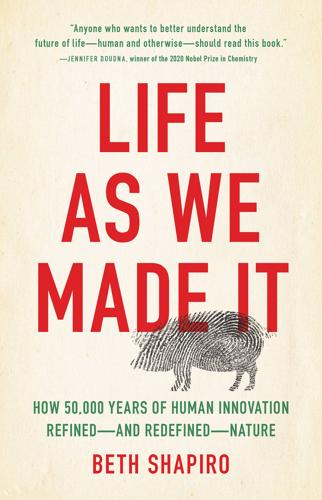
Life as We Made It: How 50,000 Years of Human Innovation Refined--And Redefined--Nature
by
Beth Shapiro
Published 15 Dec 2021
Foremost I need to thank those who helped me to get my facts straight: Ross MacPhee, Grant Zazula, and Paul Koch for their paleontological expertise; Geoff Bailey, Isabelle Winder, Ed Green, and Mindy Zeder for their expertise in early human history, archaeology, and domestication; Alison Van Eenennaam for making sure that my descriptions of genetic engineering and gene editing in agriculture were clear and correct, and also for lighting up my Twitter DMs with photos of cows and newborn calves; Oliver Ryder, Stewart Brand, Kevin Esvelt, Ben Novak, and Ryan Phelan for their knowledge of new biotechnologies for conservation. I would also like to thank several people for feedback that helped to improve earlier drafts: Chris Vollmers, who was willing to read any chapter that loosely involved caves and also came up with the final title; Rachel Meyer, who also provided cocktails when necessary; Matt Schwartz, who needed something to do other than obsessively check the coronavirus statistics; my stepdad Tony Ezzell (of the Palm Coast Ezzells), who read the book to take his mind off the fact that his gym was closed because of the pandemic; and Sarah Crump, Katie Moon, Russ Corbett-Detig, and Shelbi Russell, who tolerated listening to me read paragraphs out loud as I tried to resolve unresolvable clunkiness.
…
Wilson, who presents his argument for allowing nature space to recover in Half-Earth (2016). On the other side are those of us who believe that it is too late to imagine any portion of the planet not impacted by us and instead we must embrace our role as planetary curators. Two of my favorite books that lay out this argument are Stewart Brand’s Whole Earth Discipline (2009) and Emma Marris’s Rambunctious Garden (2011). The original report of the survey of Aotorean attitudes toward biotechnological solutions for biodiversity conservation can be found in Taylor et al. (2017a), and a discussion of the implications of this research is presented in Taylor et al. (2017b).
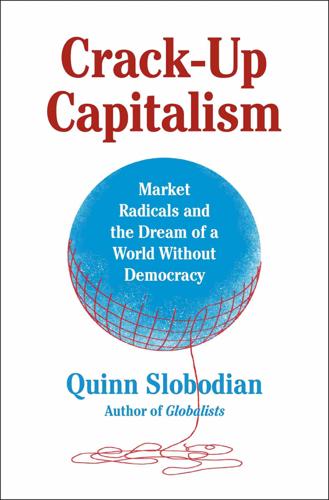
Crack-Up Capitalism: Market Radicals and the Dream of a World Without Democracy
by
Quinn Slobodian
Published 4 Apr 2023
Marc Andreessen, prominent venture capitalist and co-creator of the first web browser, called it “the most thought-provoking book on the unfolding nature of the 21st Century that I’ve yet read.”13 Another reader influenced by the book on its release was Peter Thiel, who created the online payment system PayPal partly as an attempt to realize the book’s visions of “encrypted cybercash.”14 He said the book made him realize that success came from thinking in the time frame of ten or twenty years in the future.15 One of the attractions of The Sovereign Individual is how it worked against what could be called the “commune story” of the internet. The commune story finds the origins of Silicon Valley in the failure of the hippie settlements of the 1970s—a failure that led people like Stewart Brand, publisher of the Whole Earth Catalog, to try building their utopias in the clean space of computer code rather than the stubborn muck of the outdoors.16 The “Declaration of Independence of Cyberspace,” written by former Grateful Dead songwriter John Perry Barlow and released at the World Economic Forum in Davos in 1996, praised cyberspace as the “new home of the Mind.”
…
Paul Romer and Patri Friedman both promoted the idea that their start-up societies were extensions of the spirit of Burning Man. Craib, Adventure Capitalism: A History of Libertarian Exit from Decolonization to the Digital Age, 186–88. 17. Fred Turner, From Counterculture to Cyberculture: Stewart Brand, the Whole Earth Network, and the Rise of Digital Utopianism (Chicago: University of Chicago Press, 2006). 18. Jathan Sadowski, “The Internet of Landlords: Digital Platforms and New Mechanisms of Rentier Capitalism,” Antipode 52, no. 2 (March 2020): 562–80. 19. “Innovators Under 35,” MIT Technology Review (2013), https://www.technologyreview.com/innovators-under-35/2013/. 20.
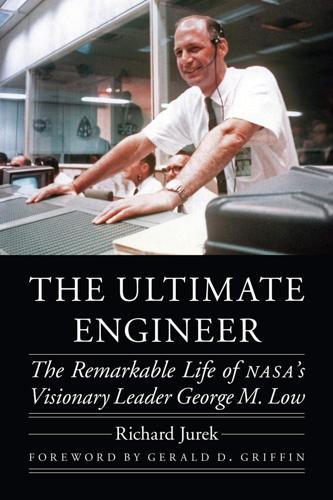
The Ultimate Engineer: The Remarkable Life of NASA's Visionary Leader George M. Low
by
Richard Jurek
Published 2 Dec 2019
Low and Cousteau were looking for ways to use LANDSAT with oceanic research. “I spent a very enlightening Christmas week with Commander Cousteau on Calypso. It was Christmas a year ago, off a small island in Mexico,” Low said, during a 1976 conversation with Schweickart, Cousteau, Cousteau’s son Phillipe, and Stewart Brand. “We started talking about what we can jointly do in learning how to better understand the oceans and to begin to get on top of some of the problems. . . . In fact, we did a joint project last summer in the Caribbean to try to see whether satellites can help determine the shallow ocean depths, the depths of the ocean where ships tend to run aground and spew oil all over.”
…
Mark Low, email correspondence with the author, 21 September 2016. 14. Rusty Schweickart, interview by the author, 27 May 2016. 15. Rusty Schweickart, interview by the author, 27 May 2016. 16. Rusty Schweickart, interview by the author, 27 May 2016. 17. “Jacques Cousteau at NASA Headquarters,” in Space Colonies: A CoEvolution Book, ed. Stewart Brand (1977), https://space.nss.org/settlement/nasa/CoEvolutionBook/JCOUST.HTML. 18. Rusty Schweickart, interview by the author, 27 May 2016. 19. George Low, handwritten pro/con notes on TRENCOR vs. RPI, March 1976, George M. Low Papers, 1930–1984. 20. Roundup, 26 March 1976. 21. George Low, Personal Notes, no. 167, 4 June 1976, p. 3. 22.
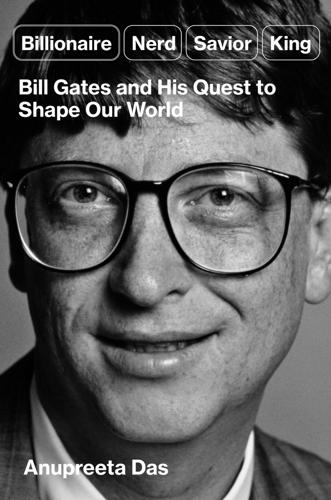
Billionaire, Nerd, Savior, King: Bill Gates and His Quest to Shape Our World
by
Anupreeta Das
Published 12 Aug 2024
This demand-driven, unplanned and almost whimsical way of finding computer programmers would ultimately feed into the definition of who is a nerd. Casting about for solitary males to fill programming seats was one way to spread the nerd gospel. Equally though, a few landmark pieces of cultural documentation helped flesh out both the characteristics of the nerd and the environment in which he thrived most. In 1972, the writer Stewart Brand wrote a piece for Rolling Stone called “Spacewar: Fanatic Life and Symbolic Death Among the Computer Bums.”12 Brand, who by then had achieved some fame as the publisher of the Whole Earth Catalog magazine, immersed himself in the lives of early coders and programmers like an ethnologist, observing their habits and behaviors and capturing “hacker” culture, as they were known at the time.
…
Associated Press, “Mary Gates, 64; Helped Her Son Start Microsoft,” The New York Times, June 11,1994. 8. Cathy Booth, “Steve’s Job: Restart Apple,” Time, August 18, 1997. 9. Walter Isaacson, Steve Jobs (New York: Simon & Schuster, 2021), 171–79. 10. IBM Archives, “The Birth of the IBM PC.” 11. Nathan Ensmenger, The Computer Boys Take Over (Cambridge, MA: MIT Press, 2012), 52–53, 62, 79. 12. Stewart Brand, “Spacewar,” Rolling Stone, December 7, 1972. 13. Thomas Streeter, “Romanticism in Business Culture: The Internet, the 1990s, and the Origins of Irrational Exuberance,” in Toward a Political Economy of Culture: Capitalism and Communication in the Twenty-First Century,” ed. Andrew Calabrese and Colin Sparks (Lanham, MD: Rowman & Littlefield, 2004), 286–306.
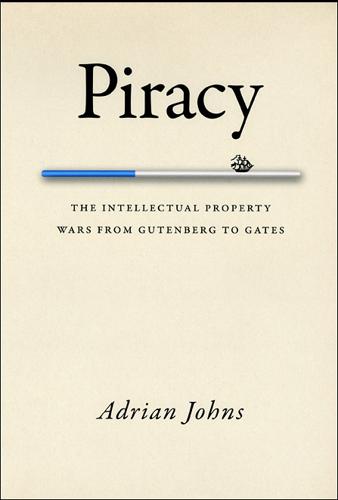
Piracy : The Intellectual Property Wars from Gutenberg to Gates
by
Adrian Johns
Published 5 Jan 2010
It also derives from underground practices seen by their proponents as upholding those ideals in the face of industry and monopoly. Take radio. All the principal participants in the making of the home computer either had backgrounds as ham radio aficionados or came from whole families of them (as did Stewart Brand, founder of the first online community, the WELL). Before their experiences at MIT, Stanford, or any of the other canonical sites of the computer revolution, these figures were already acculturated into norms of open access, technical meritocracy, libertarianism, and the sharing of information.
…
It occurred at a range of extramural and sometimes transient social settings, including various homes, Kepler’s bookstore (a place reminiscent of the bookshops and coffeehouses of Restoration London), and a Free University that offered courses on “How to End the IBM Monopoly.” In print, there was of course Stewart Brand’s Whole Earth Catalog, a guide to “tools” useful for readers impatient with the conformities of American consumerism. Launched in 1969, the catalogue touched on an extraordinary range of topics, from cybernetics and communication theories to agriculture and medicine, with an eclectic individualism purportedly inspired by Buckminster Fuller.
…
The reality, extent, and epistemic implications of piratical practices were held up as not only challenges to intellectual property – though those challenges were widely declared to be fundamental – but as threats to the possibility of a rational online public. The need to articulate the moral economy of digital networks became acute. The best known of the early networked communities was the Whole Earth ’Lectronic Link, or WELL, a Sausalito group cofounded by Stewart Brand. Before long other online collectives – Usenet, MUDs, MOOs, and the like – were multiplying. The earliest BBS (bulletin board system) was older, having been created by two Chicagoans in the late 1970s as a substitute for swapping cassettes. Some of these groups, like the WELL, were fairly small and localized; others were larger and adopted fictional locations, leading at length to ventures like Second Life.
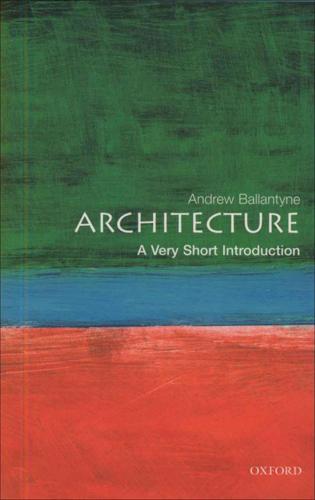
Architecture: A Very Short Introduction
by
Andrew Ballantyne
Published 19 Dec 2002
Michael Pollan, A Place of My Own: the Education of an Amateur Builder (Random House, 1997) describes the commissioning and construction of a small building in the author’s garden, and shows how personal and emotional investments are made along with the effort and ingenuity involved in building. The range of forces at work on buildings is explored in Edward Allen, How Buildings Work (Oxford University Press, second edition 1995). The books shows how many things find resolution in a building’s design, and is complemented by Stewart Brand, How Buildings Learn: What Happens After They’re Built (Viking, 1994) which shows how people adapt buildings to overcome problems that the designers did not anticipate. There is a host of more specialized studies that caters to particular interests, and the bibliographies and recommendations in the books listed above will point towards them.
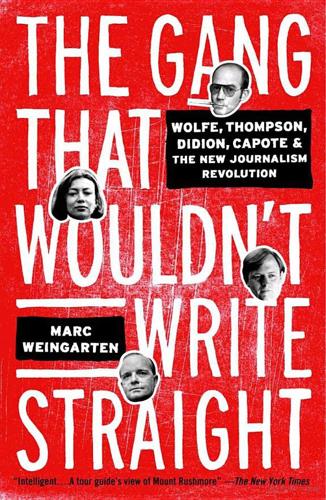
The Gang That Wouldn't Write Straight: Wolfe, Thompson, Didion, Capote, and the New Journalism Revolution
by
Marc Weingarten
Published 12 Dec 2006
But the acid trips would provide the meta-narrative—or, rather, the metaphysical narrative. This objective presented a new set of problems. Anything Wolfe didn’t witness firsthand would have to be re-created from interviews and whatever else he could get his hands on. So he went back to La Honda, tracked down Pranksters such as Ed McClanahan and Stewart Brand, and interviewed them at length about what acid really felt like, what visions they might have had on the drug, and how it altered their perception of the world. Because the Pranksters were so attuned to the use of multimedia, Wolfe had the advantage of a tremendous amount of audio and visual documentation, particularly films of various Acid Tests, which Kesey screened for him.
…
INTERVIEWS Marco Acosta Marshall Fishwick George Plimpton Ken Auletta “Mouldy” Marvin Gilbert Bert Prelutsky Ken Babbs Ralph Ginzburg Alan Rich Ralph “Sonny” Barger Milton Glaser Hugh Romney Julie Baumgold George Goodman Lillian Ross (via email) Jim Bellows Pete Hamill Ron Rosenbuam John Berendt Christopher Lehmann- Mort Sahl Burl Bernard Haupt Lawrence Schiller Patricia Bosworth George Hirsch Robert Semple Stewart Brand Clifford Hope Robert Sherrill Jimmy Breslin David Horowitz Jim Silberman David Broder William Kennedy Ralph Steadman Brock Brower Robert Kotlowitz Gloria Steinem Bill Brown Michael Kramer Gay Talese Art Buchwald Paul Krassner Hunter S. Thompson David Burgin Zane Kesey Nicholas von Hoffman John Burks George Lois Dan Wakefield Midge Decter Frank Mankiewicz Richard Wald Ed de Grazia Martin Mayer George Walker David Dellinger Charles McAtee Bernard Weinraub Byron Dobell Ed McClanahan Jann Wenner Elaine Dundy Larry McMurtry Les Whitten Clay Felker Thomas B.
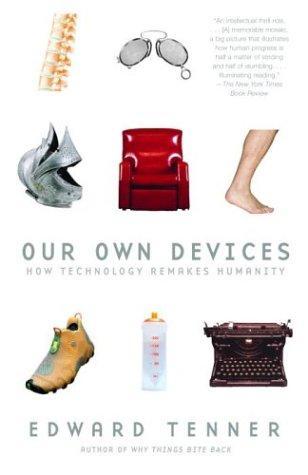
Our Own Devices: How Technology Remakes Humanity
by
Edward Tenner
Published 8 Jun 2004
Of course, new technology could in turn serve these trends: braiding machines with today’s sophisticated controls can produce patterns in laces, including ways to identify corporate and school affiliation. Technique and technology reinforce and modify each other, coevolving unpredictably and endlessly. Building on the ideas of the architectural theorist Christopher Alexander, the writer and designer Stewart Brand has illustrated how structures “learn” by absorbing the additions, subtractions, innovations, and restorations of successive owners. Adaptability is equally vital in designing the smaller things in life. What Brand writes about buildings, that each is a prediction and a wrong one, applies to our tools as well.9 Our Own Devices is thus an exploration not only of inventive genius but also of user ingenuity.
…
Louis Post-Dispatch, July 23, 1993; Carolyn Hughes Crowley, “College Cribbers,” Washington Post, January 6, 1992. 8. J. H. Thornton, Textbook of Footwear Materials (London: National Trade Press, 1955), 55–56, 210–14; Jeff Bailey, “Unfit to Be Tied: It Really Isn’t You, It’s Your Shoelaces,” Wall Street Journal, January 28, 1998. 9. Stewart Brand, How Buildings Learn (New York: Penguin Books, 1995), 12–23. 10. Hans Fantel, “Portable CD Players Advance,” New York Times, May 17, 1987; Jon Van, “Teletubby Infatuation Gives Fermilab Inspiration,” Chicago Tribune, September 13, 1999; “Totally Random,” Scientific American, vol. 278, no. 5 (November 1997), 28.
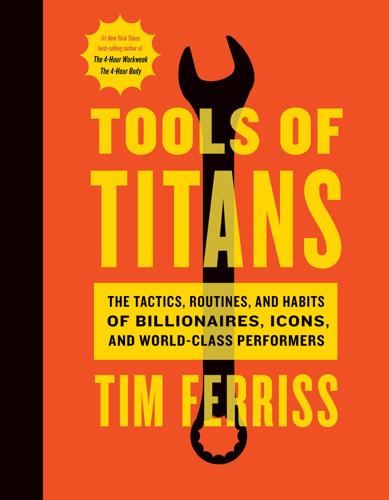
Tools of Titans: The Tactics, Routines, and Habits of Billionaires, Icons, and World-Class Performers
by
Timothy Ferriss
Published 6 Dec 2016
I tell you, nothing concentrates your time like knowing how many days you have left. Now, of course, I’m likely to live longer than that. I’m in good health, etc. But nonetheless, I have 6,000-something days. It’s not very many days to do all the things I want to do. “I learned something from my friend Stewart Brand [founder of the Whole Earth Catalog, president of the Long Now Foundation], who organized his remaining days around 5-year increments. He says any great idea that’s significant, that’s worth doing, for him, will last about 5 years, from the time he thinks of it, to the time he stops thinking about it.
…
Feynman), Recession Proof Graduate (Charlie Hoehn), Ogilvy on Advertising (David Ogilvy), The Martian (Andy Weir) Kamkar, Samy: Influence (Robert Cialdini) Kaskade: Lights Out: A Cyberattack, A Nation Unprepared, Surviving the Aftermath (Ted Koppel) Kass, Sam: Sapiens (Yuval Noah Harari), The Art of Fielding (Chad Harbach), Plenty; Jerusalem; Plenty More (Yotam Ottolenghi), The Flavor Bible: The Essential Guide to Culinary Creativity, Based on the Wisdom of America’s Most Imaginative Chefs (Karen Page and Andrew Dornenburg), A History of World Agriculture (Marcel Mazoyer and Laurence Roudart) Kelly, Kevin: The Adventures of Johnny Bunko (Daniel Pink), So Good They Can’t Ignore You (Cal Newport), Shantaram (Gregory David Roberts), Future Shock (Alvin Toffler), Regional Advantage: Culture and Competition in Silicon Valley and Route 128 (AnnaLee Saxenian), What the Dormouse Said: How the Sixties Counterculture Shaped the Personal Computer Industry (John Markoff), The Qur’an, The Bible, The Essential Rumi; The Sound of the One Hand: 281 Zen Koans with Answers (Yoel Hoffman), It’s All Too Much: An Easy Plan for Living a Richer Life with Less Stuff (Peter Walsh) Koppelman, Brian: What Makes Sammy Run? (Budd Schulberg), The Artist’s Way Morning Pages Journal (Julia Cameron), The War of Art (Steven Pressfield) Libin, Phil: The Clock of the Long Now (Stewart Brand), The Alliance (Reid Hoffman), The Selfish Gene (Richard Dawkins), A Guide to the Good Life (William Irvine) MacAskill, Will: Reasons and Persons (Derek Parfit), Mindfulness: An Eight-Week Plan for Finding Peace in a Frantic World (Mark Williams and Danny Penman), The Power of Persuasion (Robert Levine), Superintelligence: Paths, Dangers, Strategies (Nick Bostrom) MacKenzie, Brian: Tao Te Ching (Lao Tzu), Way of the Peaceful Warrior (Dan Millman) McCarthy, Nicholas: The Life and Loves of a He Devil: A Memoir (Graham Norton), I Put a Spell on You: The Autobiography of Nina Simone (Nina Simone) McChrystal, Stanley: Once an Eagle (Anton Myrer), The Road to Character (David Brooks) McCullough, Michael: The Start-up of You: Adapt to the Future, Invest in Yourself, and Transform Your Career (Reid Hoffman and Ben Casnocha), Getting Things Done: The Art of Stress-Free Productivity (David Allen), The 7 Habits of Highly Effective People: Powerful Lessons in Personal Change (Stephen R.
…
Sacca, Chris: “This form of advertising is archaic and unaccountable. Don’t waste your money.” Sethi, Ramit: “‘Tell me a secret you’ve never told anyone. I’ll keep it confidential. Email me: ramit.sethi@iwillteachyoutoberich.com.’” Silva, Jason: “‘We are as gods and might as well get good at it.’—Stewart Brand” Sivers, Derek: “Well, my real answer, if I was taking that literally, is that I would remove all the billboards in the world, and ensure that they were never replaced. . . . So, my better answer is, I would make a billboard that would say, ‘It Won’t Make You Happy,’ and I would place it outside any big shopping mall or car dealer.”
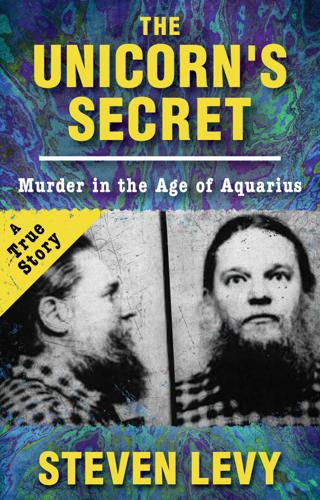
The Unicorn's Secret
by
Steven Levy
Published 6 Oct 2016
Names appearing on the cover letters of recipients of a given piece might include economist Hazel Henderson; Lehmann Brothers managing director Shel Gordon; Seagram heir Charles Bronfman; futurist Alvin Toffler; science adviser to the British Commonwealth Christian de Lait; corporate presidents John Haas and George Bartol; Whole Earth Catalog publisher Stewart Brand; physicists Freeman Dyson, David Bohm, Frijtof Capra, and Heinz Pagels; Esalen cofounder Mike Murphy; journalists Alex Cockburn and Jack Anderson; authors Colin Wilson, Robert Theobold, and Thomas Kuhn. “Adam Smith” (himself a recipient of certain network mailings under his real name Gerry Goodman) wrote a column about it in New York magazine, calling it the “Far-Out Physics Underground”; Smith described an afternoon discussing various mailings with fellow network recipient Arthur Koestler.
…
Einhorn claimed he was among the world vanguard in circulating information regarding Tesla technology—used in various ways from Soviet jamming techniques known as the “Russian Woodpecker,” to ELF transmissions clouding minds in Timmons, Ontario, even in Russian efforts to control the weather! Ira had not only distributed dispatches on his network about this but had written an article in Co-Evolution Quarterly (a magazine founded by Stewart Brand of the Whole Earth Catalog) about the Tesla stuff, warning of a “psychic Pearl Harbor.” Then there was his recent trip to Yugoslavia, paid for, Ira said, by the Yugoslavian government, which provided him high-level access to their Tesla files. All of this technology was, Ira insisted to the dumbfounded Greg Walter, potentially as dangerous as nuclear weapons.

Who Owns England?: How We Lost Our Green and Pleasant Land, and How to Take It Back
by
Guy Shrubsole
Published 1 May 2019
Machine-readable datasets and open-source software have made it easier to analyse complex datasets detailing who owns land, while modern web mapping allows us to create powerful online maps. The Open Data movement has also sought to shift culture, both within government and wider civil society, so that previously closed data is made open and easily accessible. As Internet pioneer Stewart Brand put it: ‘Information wants to be free.’ All these developments and work-arounds have increased our chances of finding out who owns England. But what of the present state of the Land Registry, set up over 150 years ago now, with the express purpose of gathering such information? Here, the picture is not so rosy.
…
a lovely three-tier Adam Jacques, ‘Mark Thomas interview: The social-activist comedian talks opera, charity shops, and Nicholas Soames’, Independent, 31 October 2015. a Saudi prince Roger Harrabin, ‘Farm subsidies: Payment to billionaire prince sparks anger’, 29 September 2016, http://www.bbc.co.uk/news/uk-politics-37493956 Information wants Stewart Brand, cited in R. Polk Wagner, ‘Information wants to be free: intellectual property and the mythologies of control’, Columbia Law Review 103: 995 (2003), https://www.law.upenn.edu/fac/pwagner/wagner.control.pdf millions of acres Department of Communities and Local Government (DCLG), Housing White Paper, ‘Fixing our broken housing market’ (February 2017), p. 76, https://www.gov.uk/government/uploads/system/uploads/attachment_data/file/590463/Fixing_our_broken_housing_market_-_accessible_version.pdf You can buy Author’s conversations with Land Registry.
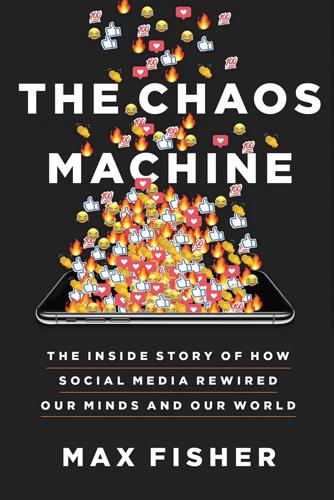
The Chaos Machine: The Inside Story of How Social Media Rewired Our Minds and Our World
by
Max Fisher
Published 5 Sep 2022
Talk of smashing power structures was, at first, mostly rhetorical. But a handful of zealots built those ideals, taken to an almost millenarian extreme, into something they called the WELL, the first social network of real consequence. It had grown out of a magazine run by a former Ken Kesey associate named Stewart Brand, who’d spent the ’60s driving between California’s hippie communes selling supplies out of his truck. He’d called it the Whole Earth Truck Store. On settling in the Santa Clara Valley, he converted it, in 1968, into the Whole Earth Catalog. The name was a joke: it advised readers on how to make the products on their own, alongside articles promoting hippie communalism.
…
Lee, Arstechnica.com, January 14, 2020. 9 When an industry-news: “Intel Pulls Ads from Gamasutra, and Then Apologizes for It,” Dean Takahashi, Venturebeat.com, October 3, 2014. 10 “Software increasingly defines”: “I’m Brianna Wu, and I’m Risking My Life Standing Up to Gamergate,” Brianna Wu, Daily Dot, February 12, 2015. 11 Through the 1960s: O’Mara: 90–92. 12 “We are really the revolutionaries”: Berlin: 194. 13 PCC’s newsletter: O’Mara: 136–39. 14 It had grown out: From Counterculture to Cyberculture: Stewart Brand, the Whole Earth Network, and the Rise of Digital Utopianism, Fred Turner, 2010: 71–72. 15 The site’s founders: Cliff Figallo, one of the platform’s architects, has said, for example, “Principles of tolerance and inclusion, fair resource allocation, distributed responsibility, management by example and influence, a flat organizational hierarchy, cooperative policy formulation, and acceptance of a libertarian-bordering-on-anarchic ethos were all carryovers from our communal living experience.”
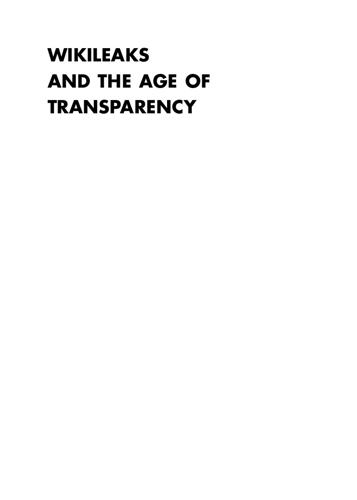
WikiLeaks and the Age of Transparency
by
Micah L. Sifry
Published 19 Feb 2011
Scott Neuman, “Clinton: WikiLeaks ‘Tear at Fabric’ of Government,” NPR, November 29, 2010, www.npr.org/2010/11/29/131668950/whitehouse-aims-to-limit-wikileaks-damage. Chapter 2 1 Micah L. Sifry, “The Rise of Open Source Politics,” The Nation, November 22, 2004, www.thenation.com/article/rise-open-source-politics. 2 Interview with the author, June 2004. 3 See Fred Turner, From Counterculture to Cyberculture: Stewart Brand, the Whole Earth Network and the Rise of Digital Utopianism (University of Chicago Press, 2006). 4 Jay Rosen, “The People Formerly Known as the Audience,” PressThink. org, June 27, 2006, http://archive.pressthink.org/2006/06/27/ppl_frmr. html. 5 Howard Rheingold, “Crap Detection 101,” SFGate.com, June 30, 2009, www.sfgate.com/cgi-bin/blogs/rheingold/detail?
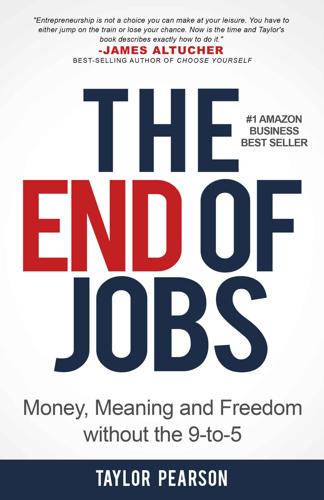
The End of Jobs: Money, Meaning and Freedom Without the 9-To-5
by
Taylor Pearson
Published 27 Jun 2015
Instead of a large, up-front investment in hiring and training someone who may or may not be good enough for the role, you’re able to make a small investment, over time, in someone that has been vetted by other people in your industry. Self-Education: Information Wants to Be Free In 1984, at the first Hackers Conference, Whole Earth Catalog founder Stewart Brand was overheard telling Apple co-founder Steve Wozniak the now iconic phrase: “Information wants to be free.” The internet has done more to facilitate information transparency than any technology since the printing press. Knowledge that used to be opaque and hard to source is often now just a Google search away.
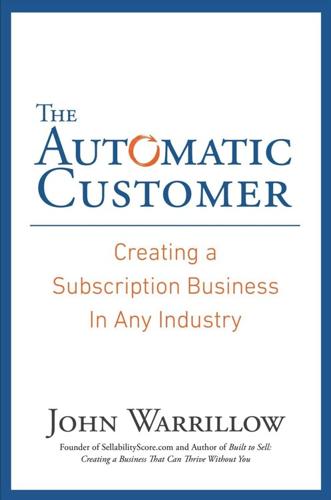
The Automatic Customer: Creating a Subscription Business in Any Industry
by
John Warrillow
Published 5 Feb 2015
For $129 a year, you can subscribe to the Wood Whisperer Guild, a membership website set up by Marc Spagnuolo, who shares his knowledge of woodworking with thousands of hobby cabinetmakers and enthusiasts. Sharing of specialized information via a membership website is a relatively recent phenomenon made possible by advancing technology—and is a testament to the way the public now values information. There was a time when technology hippies thought information should be accessible to all. Stewart Brand, speaking at a 1984 Hackers Conference, reportedly used the phrase “information wants to be free.”1 Brand’s quote was largely taken out of context, but it was enough to become a rallying cry for a small, noisy faction of technology activists fighting for free information online. These people believed information was a basic right and would start online petitions the moment anyone threatened to charge for content online.
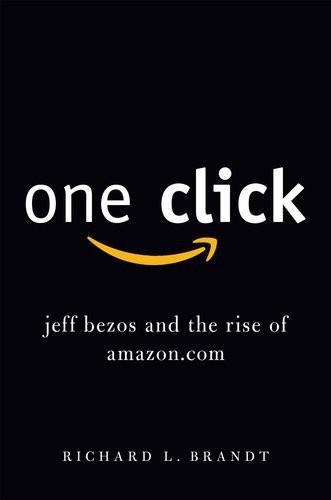
One Click: Jeff Bezos and the Rise of Amazon.com
by
Richard L. Brandt
Published 27 Oct 2011
“Having worked for a large number of more technologically oriented start-ups that didn’t do so well, I liked the idea of one in which I could easily describe where the revenue stream was going to come from,” he recalls. “At that time both Jeff and I believed Amazon could succeed as a relatively small business, compared to what it eventually became. I liked that too.” Plus, it reminded Kaphan of an enjoyable, although brief, time he had spent in 1970 working for Stewart Brand’s Whole Earth Truck Store, precursor of the Whole Earth Catalog. “I saw Amazon’s mission as a continuation of certain aspects of that same mission: to supply hard to find tools (mainly information-based tools) to a far-flung clientele who might not have easy access to those tools in their local communities,” he says.
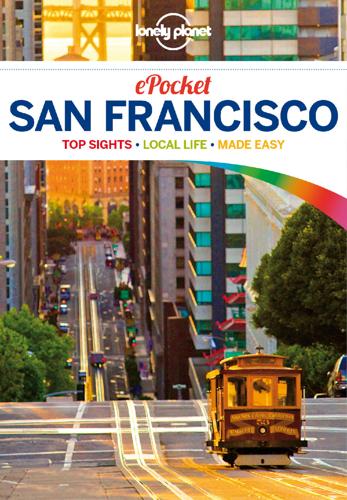
Lonely Planet Pocket San Francisco
by
Lonely Planet
and
Alison Bing
Published 31 Aug 2012
In a pronounced lapse in screening judgment, the CIA hired local writer Ken Kesey to test psychoactive drugs intended to create the ultimate soldier. Instead, they unwittingly inspired Kesey to write the novel One Flew Over the Cuckoo’s Nest, drive psychedelic busloads of Merry Pranksters across country, and introduce San Francisco to LSD and the Grateful Dead. Another LSD tester hired by the CIA, Stewart Brand, proposed an outrageous idea inspired by his LSD experiments: the complex technology governments used could empower ordinary people. The machines would be called ‘personal computers.’ With free-thinking and futuristic visions, San Francisco seemed the obvious place to begin the Civil Rights era, build a new society and end the Vietnam War.
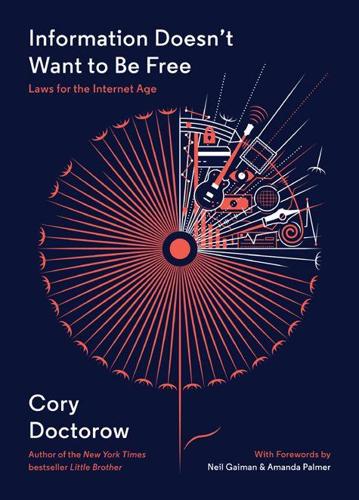
Information Doesn't Want to Be Free: Laws for the Internet Age
by
Cory Doctorow
,
Amanda Palmer
and
Neil Gaiman
Published 18 Nov 2014
It’s up to creators everywhere to engage with their colleagues about the ways that expanded liability for intermediaries drive us all into the old-media companies’ corrals, where they get to make the rules, pick the winners, and run the show. 3. DOCTOROW’S THIRD LAW Information Doesn’t Want to Be Free, People Do BACK IN 1984, Stewart Brand—founder of the Whole Earth Catalog—had a public conversation with Apple cofounder Steve Wozniak at the first Hackers Conference. There, Brand uttered a few dozen famous words: “On the one hand, information wants to be expensive, because it’s so valuable. The right information in the right place just changes your life.

Team Human
by
Douglas Rushkoff
Published 22 Jan 2019
We have fallen from the paradise of timeless grace, live in sin, and pray for redemption Wilhelm Reich, The Mass Psychology of Fascism (New York: Farrar, Straus, and Giroux, 1980). They called it wettiko Jack D. Forbes, Columbus and Other Cannibals (New York: Seven Stories, 2011). 69. in this new spirituality we would be as gods John Brockman, “We Are As Gods and Have to Get Good at It: A Conversation with Stewart Brand,” The Edge, August 18, 2009. 70. The Soviet–American citizen diplomacy program Jeffrey J. Kripal, Esalen: America and the Religion of No Religion (Chicago: University of Chicago Press, 2008). This vision still motivates the development of artificial intelligence Erik Davis, Techgnosis: Myth, Magic, and Mysticism in the Age of Information (Berkeley: North Atlantic, 2015).

To Serve God and Wal-Mart: The Making of Christian Free Enterprise
by
Bethany Moreton
Published 15 May 2009
Fones-Wolf, Selling Free Enterprise: The Business Assault on Labor and Liberalism, 1945–60, History of Communication (Urbana: University of Illinois Press, 1994); Naomi Klein, The Shock Doctrine: The Rise of Disaster Capitalism (New York: Metropolitan Books, 2007); Kim Phillips-Fein, “Top-Down Revolution: Businessmen, Intellectuals, and Politicians Against the New Deal, 1945–1964,” Enterprise & Society (2006): 686–94; Fred Turner, From Counterculture to Cyberculture: Stewart Brand, the Whole Earth Network, and the Rise of Digital Utopianism (Chicago: University of Chicago Press, 2007). 312 NOTES TO PAGES 127 – 1 3 1 4. 5. 6. 7. 8. 9. 10. 11. 12. 13. 14. 15. 16. 17. 18. 19. 20. 21. 22. 23. 24. 25. Interview with Jim von Gremp, September 8, 2004. Ferold Arend, “Store Talk: Definition of ‘Tactful,’” WMW, February 1972, 16.
…
Fortune, January 30, 1989, 55; Soderquist, The Wal-Mart Way: The Inside Story of the Success of the World’s Largest Company. 33. http://larryholder.blogspot.com/2008/02/my-early-days-with-wal-mart-data. html; accessed July 15, 2008. 34. Turner, From Counterculture to Cyberculture; the quoted phrase, reports Turner, appeared in Stewart Brand’s opening statement to evÂ�ery edition of the Whole Earth Catalog (1969–1971); Ibid., 82. 35. Between 1959 and 1997, acÂ�tual skilled high-tech jobs like systems analysts and code-writers grew only from 3.4 percent of all U.S. jobs to 6.6 percent; even at a paradigmatic high-tech corporation like Intel, three-quarters of the jobs are for routine clerical, sales, production, or maintenance work.
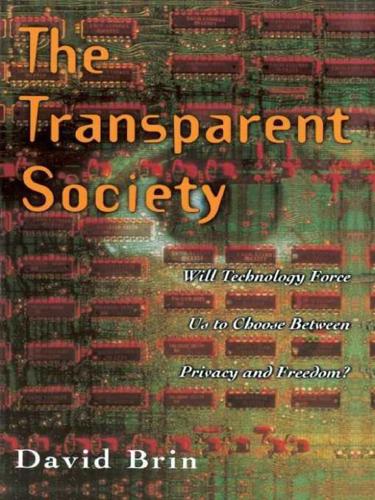
The Transparent Society: Will Technology Force Us to Choose Between Privacy and Freedom?
by
David Brin
Published 1 Jan 1998
Almost no one foresaw the personal computer. Certainly not the big shots at IBM or Burroughs. But society acquired the PC and other wonders because a cohort of young minds were indoctrinated to seek novelty where standard organizations never looked. Would another culture put up with the likes of Stewart Brand, always poking at stagnant structures, from state government to the stuffy profession of architecture? Would Steve Jobs or Andrew Grove be billionaires in an economy based on inherited advantage? Where else might happy magicians like Howard Rheingold and Kevin Kelly be more influential than establishment priests or scientists?
…
But this is just another example of trying to solve problems by reducing information flow. After all, a flamer isnʼt really different from the motorist who cut you off last week, nearly causing an accident, flipping an obscene gesture and laughing at your frustration, safe behind a mask of anonymity. Driven by rancorous behavior he witnessed in the Netʼs early days, Stewart Brand, cofounder of the Whole Earth Catalog and Whole Earth Review magazine, realized there would be no peace as long as nastiness could find shelter behind false identities. Brand lobbied successfully to have anonymity strictly forbidden on the pioneering Internet service the Well. True, there are disadvantages to this rule, and I do feel there should remain places where anonymous postings are possible, especially for whistle-blowers reporting crimes.

Computer: A History of the Information Machine
by
Martin Campbell-Kelly
and
Nathan Ensmenger
Published 29 Jul 2013
Instead, most individuals who viewed computers as tools for liberation were politically agnostic, more focused on forming alternative communities, and inclined to embrace new technology as a means to better achieve personal liberty and human happiness—what one scholar has labeled as the “New Communalists.” Stewart Brand, Stanford University biology graduate turned publishing entrepreneur, became a leading voice for the New Communalists through creating The Whole Earth Catalog. Deeply influenced by cybernetics visionary Norbert Wiener, electronics media theorist Marshall McLuhan, and architect and designer Buckminster Fuller, Brand pressed NASA to publicly release a satellite photo of the Earth in 1966.
…
Chicago: Western Society of Engineers. Turing, A. M. 1954. “Solvable and Unsolvable Problems.” Science News, no. 31, pp. 7–23. Turkle, Sherry. 2011. Alone Together: Why We Expect More from Technology and Less from Each Other. New York: Basic Books. Turner, Fred. 2006. From Counterculture to Cyberculture: Stewart Brand, the Whole Earth Network, and the Rise of Digital Utopianism. Chicago: University of Chicago Press. Valley, George E., Jr. 1985. “How the SAGE Development Began.” Annals of the History of Computing 7, no. 3: 196–226. van den Ende, Jan. 1992. “Tidal Calculations in the Netherlands.” Annals of the History of Computing 14, no. 3: 23–33. ———. 1994.

San Francisco
by
Lonely Planet
Ads breathlessly gushed that Hewlett-Packard’s ‘light’ (40lb) machine could ‘take on roots of a fifth-degree polynomial, Bessel functions, elliptic integrals and regression analysis’ – all for the low, low price of $4,900 (about $29,000 today). Consumers didn’t know what to do with such a computer, until its potential was explained in simple terms by Stewart Brand, an LSD tester for the CIA with Ken Kesey and organizer of the first Trips Festival in 1966. In his 1969 Whole Earth Catalog, Brand reasoned that the technology governments used to run countries could empower ordinary people. That same year, University of California, Los Angeles, professor Len Kleinrock sent the first rudimentary email from a computer in Los Angeles to another at Stanford.
…
The Japanese American Citizens League files civil rights claims. 1957 City Lights wins a landmark ruling against book banning over the publication of Allen Ginsberg’s Howl, and free speech and free spirits enjoy a reprieve from McCarthyism. 1959 Mayor George Christopher authorizes crackdowns on cruising areas and gay bars and starts a blacklist of gay citizens. January 21–23, 1966 The Trips Festival is organized by techno-futurist Stewart Brand, and features author Ken Kesey, the Grateful Dead, Janis Joplin, Native American activists and Hells Angels. October 1966 In Oakland, Huey Newton and Bobby Seale found the Black Panther Party for Self-Defense, a black-power group that demanded ‘Land, Bread, Housing, Education, Clothing, Justice and Peace.’

The Zero Marginal Cost Society: The Internet of Things, the Collaborative Commons, and the Eclipse of Capitalism
by
Jeremy Rifkin
Published 31 Mar 2014
These were the geeks and nerds of IT culture who shared a love of computer programming and a passion for sharing software in collaborative learning communities. They made up the Free Software Movement, whose aim was to create a global Collaborative Commons (that movement will be considered in greater detail in part III). Their slogan was “information wants to be free,” coined by Stewart Brand, one of the few who bridged the Appropriate Technology Movement and hacker culture. (The Whole Earth Catalog, which Brand edited, helped elevate the Appropriate Technology Movement from a niche subculture to a broader cultural phenomenon.) What’s often lost in Brand’s remarks on the software revolution is the rest of the utterance, which he delivered at the first hackers conference in 1984: On the one hand information wants to be expensive, because it’s so valuable.
…
Mary Beth Griggs, “3-D Printers Spit Out Fancy Food, Green Cars, and Replacement Bones,” Discover Magazine, March 26, 2012, http://discovermagazine.com/2012/mar/31-3-d-printers -spit-out-fancy-food-and-green-cars#.UnvIBPmkoSU (accessed November 7, 2013). 30. “Manitoba’s Kor Ecologic Debuts Hybrid Urbee,” Canadian Manufacturing, November 2, 2012, http://www.canadianmanufacturing.com/designengineering/news/manitobas-kor-ecologic -debuts-hybrid-urbee-11992 (accessed November 1, 2013). 31. Stewart Brand and Matt Herron, “Keep Designing—How the Information Economy Is Being Created and Shaped by the Hacker Ethic,” Whole Earth Review (May, 1985): 44. 32. Deborah Desrochers-Jacques, “Green Energy Use Jumps in Germany,” Der Spiegel, August 30, 2011, http://www.spiegel.de/international/crossing-the-20-percent-mark-green-energy-use -jumps-in-germany-a-783314.html (accessed August 7, 2013); Berlin and Niebull, “Germany’s Energy Transformation: Eneriewende,” Economist, July 28, 2012, http://www.economist.com /node/21559667 (accessed October 1, 2013). 33.

Becoming Steve Jobs: The Evolution of a Reckless Upstart Into a Visionary Leader
by
Brent Schlender
and
Rick Tetzeli
Published 24 Mar 2015
And most important, have the courage to follow your heart and intuition. They somehow already know what you truly want to become. Everything else is secondary. When I was young, there was an amazing publication called the Whole Earth Catalog, which was one of the bibles of my generation. It was created by a fellow named Stewart Brand not far from here in Menlo Park, and he brought it to life with his poetic touch. This was in the late 1960s, before personal computers and desktop publishing, so it was all made with typewriters, scissors, and Polaroid cameras. It was sort of like Google in paperback form, thirty-five years before Google came along: it was idealistic, and overflowing with neat tools and great notions.
…
We had been talking about the trajectory of his career when, in a rambling aside not unlike the road on the back cover of the last issue of the Whole Earth Catalog, Steve told me about the impact that the Catalog had had upon him. “I think back to it when I am trying to remind myself of what to do, of what’s the right thing to do.” A few weeks after that interview had been published in Fortune, I received an envelope in the mail. It was from Stewart Brand, and it contained a rare copy of that final issue. “Please give this to Steve next time you see him,” Stewart asked. When I did, a week or two later, Steve was thrilled. He’d remembered the issue for all those years, but had never had the time to locate a copy for himself. The end of the Stanford speech focuses on the Catalog’s back-cover motto, “Stay Hungry.
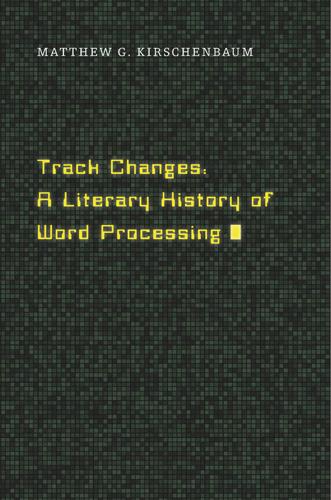
Track Changes
by
Matthew G. Kirschenbaum
Published 1 May 2016
A detailed buyer’s guide published in a 1983 issue of Writer’s Digest compares some three dozen different programs across a matrix of over two dozen variables and features, including (besides price and compatibility) the availability of block commands like copy, move, or delete, search and replace, and file backup as well as options for form printing, pagination, superscript and subscript, proportional spacing, underling and emphasis, word counting, and “screen display same as printed copy.”4 Word processing also spawned ancillary software genres, notably spell-checkers and thesauri (not built into many programs) but also typing tutorials as well as programs for creating indices, tables of contents, footnotes, and outlines. While the abundance of choice may seem empowering in retrospect, it was also a significant obstacle to getting started. Stewart Brand’s Whole Earth Software Catalog, an offshoot of the legendary counterculture publication Whole Earth Catalog, put its finger on the problem: “For new computer users these days the most daunting task is not learning how to use the machine but shopping.”5 Charles Bukowski (who wouldn’t begin using a computer in earnest until he got a Macintosh for Christmas in 1990) nonetheless captured the moment in a poem written circa 1985 called “16-bit Intel 8088 chip.”6 Laced with references to brand names such as Apple, Commodore, and IBM, it includes this observation: both Kaypro and Osborne computers use the CP/M operating system but can’t read each other’s handwriting for they format (write on) discs in different ways.7 The poem concludes by contrasting the fundamental irreconcilability of all of these artificial systems with the natural world that unchangingly, unknowingly coexists with them.
…
Len Deighton, “Foreword,” in Hammond, The Writer and the Word Processor (London: Coronet, 1984), 4. 3. J. D. Reed and Jeanne North, “Plugged-In Prose,” Time, August 10, 1981. 4. Richard Krajewski, “A Writer’s Guide to Word-Processing Software,” Writer’s Digest, September 1983, 40, 42, 52–59. 5. Whole Earth Software Catalog, ed. Stewart Brand (New York: Quantum / Doubleday, 1984), 2. 6. For Bukowski and his Macintosh, see Jed Birmingham, “Charles Bukowski, William Burroughs, and the Computer,” RealityStudio, September 11, 2009, http://realitystudio.org/bibliographic-bunker/charles-bukowski-william-burroughs-and-the-computer/. 7. Charles Bukowski, “16-Bit Intel 8088 Chip,” Aileron 6, no. 1 (1985). 8.

Animal Spirits: The American Pursuit of Vitality From Camp Meeting to Wall Street
by
Jackson Lears
The counterculture’s improvised rituals were hopeful signs as well—the rituals celebrating “something postulated as sacred … the magnificence of the season, the joy of being the human animal so vividly alive to the world.” The rhetoric of vitalism flourished amid countercultural ferment. Soon enough the ferment would subside and what was left of countercultural protest would be absorbed into the newer, hipper technocracy pioneered in Stewart Brand’s Whole Earth Catalog and brought to fulfillment in Silicon Valley. Tracy Kidder’s The Soul of a New Machine (1980) signaled a new sort of technophilic mysticism, well suited to the mass distribution of personal computers. Hip capitalist advertisers helped to channel countercultural impulses toward the creation of “alternative lifestyles” through the assemblage of consumer goods—including expensive gear that could make the purchaser feel and look like an outdoorsman even if he spent sixteen hours a day staring at a screen.
…
“There is but one way”: Ibid., 208, 218, 120. “the living experience”: Ibid., 228, 140, 227. “an evil which is not”: Ibid., 47, 55. “cultivation of a feminine”: Ibid., 74–75, 82, 149–50. Soon enough the ferment would subside: The best interpretation of this subsidence is Fred Turner, From Counterculture to Cyberculture: Stewart Brand, the Whole Earth Network, and the Rise of Digital Utopianism (2006). “recapturing the flag”: George Packer, “Recapturing the Flag,” New York Times Magazine, Sept. 30, 2001, www.nytimes.com/2001/09/30/magazine/the-way-we-live-now-9–30–01-recapturing-the-flag.html. “exterminate all the brutes”: Joseph Conrad, The Heart of Darkness [1899] (Penguin ed., 2017), 57.

San Francisco
by
Lonely Planet
Ads breathlessly gushed that Hewlett-Packard’s ‘light’ (40lb) machine could ‘take on roots of a fifth-degree polynomial, Bessel functions, elliptic integrals and regression analysis’ – all for the low, low price of $4,900 (about $29,000 today). Consumers didn’t know what to do with such a computer, until its potential was explained in simple terms by Stewart Brand, an LSD tester for the CIA with Ken Kesey and organizer of the first Trips Festival in 1966. In his 1969 Whole Earth Catalog, Brand reasoned that the technology governments used to run countries could empower ordinary people. That same year, University of California, Los Angeles, professor Len Kleinrock sent the first rudimentary email from a computer in Los Angeles to another at Stanford.
…
The Japanese American Citizens League files civil rights claims. 1957 City Lights wins a landmark ruling against book banning over the publication of Allen Ginsberg’s Howl, and free speech and free spirits enjoy a reprieve from McCarthyism. 1959 Mayor George Christopher authorizes crackdowns on cruising areas and gay bars and starts a blacklist of gay citizens. January 21–23, 1966 The Trips Festival is organized by techno-futurist Stewart Brand, and features author Ken Kesey, the Grateful Dead, Janis Joplin, Native American activists and Hells Angels. October 1966 In Oakland, Huey Newton and Bobby Seale found the Black Panther Party for Self-Defense, a black-power group that demanded ‘Land, Bread, Housing, Education, Clothing, Justice and Peace.’
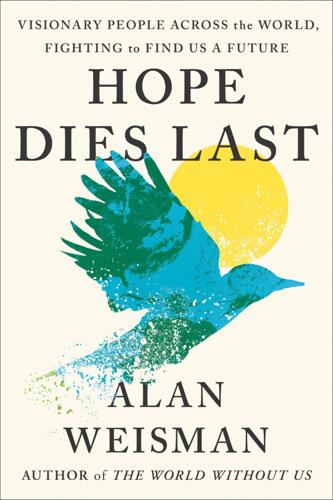
Hope Dies Last: Visionary People Across the World, Fighting to Find Us a Future
by
Alan Weisman
Published 21 Apr 2025
Others whose input and insights helped shape this book include Dan Kammen and Diana Liverman, both on the 2007 IPPC panel that won the Nobel Peace Prize; 350.org and Third Act cofounder Bill McKibben; eco-entrepreneur Paul Hawken; Natural Capital Project founder Gretchen Daily; Whole Earth visionary Stewart Brand and his wife Ryan Phelan, director of Revive & Restore, whose extinction-defying efforts will have something to teach us, regardless of their outcome; Silicon Valley sustainability crusader John Picard; Switch It Green’s Anna Chirico; Henry L. Stimson Center global security expert David Bray; Rebuild by Design’s Amy Chester; Leibniz Institute astrophysicist Sydney Barnes; University of Arizona biogeographer Greg Barron-Gafford; Canary Islands botanists Jaime Gil González and Marta Peña Hernández; Dr.
…
New York Times, November 8, 2023. https://www.nytimes.com/2023/11/08/climate/climate-change-drought-fertile-crescent.html?smid=nytcore-ios-share&referringSource=articleShare. Ansari, Nadhir al-, Sven Knutsson, and Ammar A. Ali. “Restoring the Garden of Eden, Iraq.” Journal of Earth Sciences and Geotechnical Engineering 2, no. 1 (2012): 53–88. Asafu-Adjaye, John, Linus Blomqvist, Stewart Brand, Barry Brook, et al. “An Ecomodernist Manifesto,” 2015. https://www.ecomodernism.org. Billing, Lynzy. “After the Wars in Iraq, ‘Everything Living Is Dying.’ ” Inside Climate News, December 29, 2021. https://insideclimatenews.org/news/29122021/iraq-ecocide. Brasington, Leigh. “The Two Biblical Stories of Creation.”
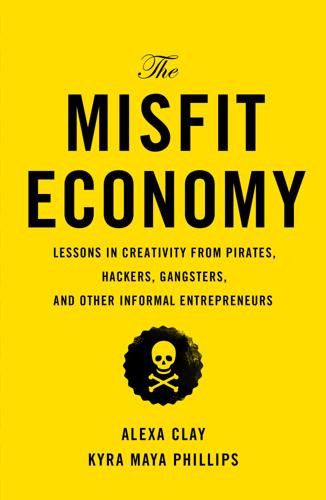
The Misfit Economy: Lessons in Creativity From Pirates, Hackers, Gangsters and Other Informal Entrepreneurs
by
Alexa Clay
and
Kyra Maya Phillips
Published 23 Jun 2015
“Our education system was used to make industrial workers out of agricultural workers. It is no longer adequate,” Howard Rheingold told us. Rheingold, sixty-seven, is the former editor of Whole Earth Review. Founded in 1985, Whole Earth Review was a countercultural publication evolving out of Stewart Brand’s Whole Earth Catalog and rooted in “that old American tradition of self-reliance,” Rheingold shared, “building on that misfit streak started by Emerson.” In Rheingold’s perspective, Whole Earth Review was all about sharing tools and ideas to get people to take more control over their lives. “There was this hope that you didn’t have to depend on distant institutions—government, business, religious organizations—to shape your life.”

The Dream Machine: J.C.R. Licklider and the Revolution That Made Computing Personal
by
M. Mitchell Waldrop
Published 14 Apr 2001
THE END OF EDEN On December 7, 1972-coincidentally, just a few weeks after Chuck Thacker had started work on the prototype Altos-Rolling Stone magazine ran a banner head- line: "SPACEWAR-Fanatic Life and Symbolic Death among the Computer 388 THE DREAM MACHINE Bums." In the article that followed, a thirty-three-year-old counterculture guru named Stewart Brand, the founder and publisher of The Whole Earth Catalo re- counted a wild-eyed night of Spacewar competition at the Stanford AI Lab, and then went on to proclaim the revolution. "Ready or not, computers are coming to the people," he declared. "That's good news, maybe the best since psychedelics. " Spacewar, Brand contended, was not just fun; it also symbolized a profound shift in the nature of technology.
…
Of course, he says, this restriction was no worse than what researchers had to live with at, say, Bell Labs. But before it was all over, the badges became a big symbolic issue at PARC, where they were widely reviled as an outrageous assault on free speech and the free flow of information. The badges were also seen as re- taliation for the Stewart Brand article, which had appeared only a short time be- fore. "I think a lot of the computer-science people wanted to believe the article caused the crackdown," says Pake. "But I never saw any evidence of it." And then on top of the homegrown paranoia, says Pake, you had the arro- gance factor. "The computer scientists had these incredible systems up and run- ning," he says.
…
The phenomenon had been gath- ering force for the better part of a generation, both in the marketplace and in society at large. Witness the public's eager embrace of computer utilities in the 1960s, when thousands of nonprofessionals had finally gotten the chance to tap in and experience the exhilaration firsthand. Or witness the rhetoric of counterculture gurus such as Stewart Brand (who'd called computing "the best news since psychedelics") and Ted Nelson, an independently wealthy computer activist who had declared that "hypertext" -a word he'd invented to describe the electronic links first imagined by Vannevar Bush-would at last allow us to break free from linear thought and hierarchical power structures.
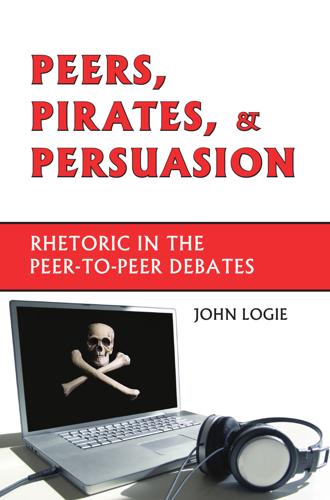
Peers, Pirates, and Persuasion: Rhetoric in the Peer-To-Peer Debates
by
John Logie
Published 29 Dec 2006
Segaller writes: Pa r l orPr e s s wwwww. p a r l or p r e s s . c om Hackers, Crackers, and the Criminalization of Peer-to-Peer Technologies 29 By 1984, as the Macintosh was launched, the hippie origins of networking were once again beginning to show themselves. Part of the impetus came from an electronic version of the Whole Earth Catalog (whose Epilog had come and gone a decade earlier). Inevitably, it was Stewart Brand who originated and branded what he called the “Whole Earth ‘Lectronic Link,” or WELL. Now more users were able to tune in and turn on to the highs of networking, attracted by the chance to connect with like-minded people— even “Dead” people. One should not underestimate the importance in the history of the Internet of the Grateful Dead. (269) The Grateful Dead, of course, holds special significance in the prehistory of the peer-to-peer debate.
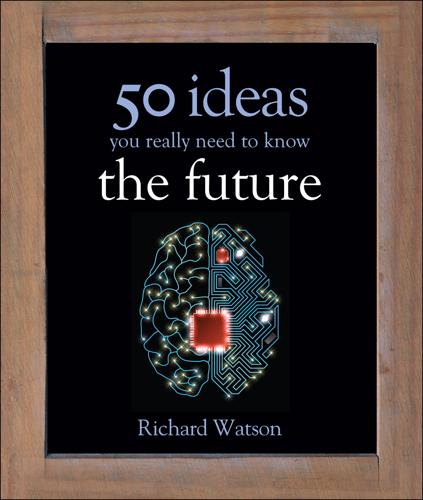
50 Future Ideas You Really Need to Know
by
Richard Watson
Published 5 Nov 2013
That will no longer be an option.” Richard Norton, Naval War College Review People power But it’s not all bad news. If governments or aid agencies cannot provide food, water, shelter or other necessities, people will often organize these things for themselves. Moreover, as the American writer Stewart Brand has commented, adversity can breed inventiveness, especially ways of collaborating at a local level. Brand also points out that informal cities can reduce fertility, in some instances by encouraging women to enter education or find paid work, which benefits not only the individual, but the nation as a whole.
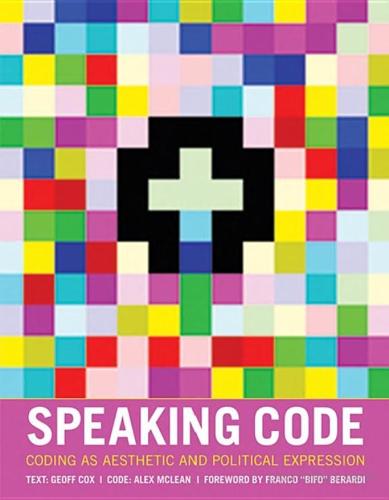
Speaking Code: Coding as Aesthetic and Political Expression
by
Geoff Cox
and
Alex McLean
Published 9 Nov 2012
Further invoked here is the input-output automaton Canard Digérateur, or Digesting Duck, created by Jacques de Vaucanson in 1739, which appeared to eat grain, metabolize, and defecate. A replica of Vaucanson’s mechanical duck, created by Frédéric Vidoni, can be seen at the Musée des Automates, Grenoble, France. 31. Virno, Multitude, 190. 32. The slogan “Information wants to be free” is attributed to Stewart Brand, who argued that technology could be liberating rather than oppressing. The earliest recorded occurrence of the expression was at the first Hackers Conference in 1984. Brand said: “On the one hand information wants to be expensive, because it’s so valuable. The right information in the right place just changes your life.

Under a White Sky: The Nature of the Future
by
Elizabeth Kolbert
Published 15 Mar 2021
This is the situation of the Devils Hole pupfish, the Shoshone pupfish, and the Pahrump poolfish, of the northern quoll, the Campbell Island teal, and the Tristan albatross. Stick to a strict interpretation of the natural and these—along with thousands of other species—are goners. The issue, at this point, is not whether we’re going to alter nature, but to what end? “We are as gods and might as well get good at it,” Stewart Brand, editor of the Whole Earth Catalog, famously wrote in its first issue, published in 1968. Recently, in response to the whole-earth transformation that’s under way, Brand has sharpened his statement: “We are as gods and have to get good at it.” Brand has co-founded a group, Revive & Restore, whose stated mission is to “enhance biodiversity through new techniques of genetic rescue.”
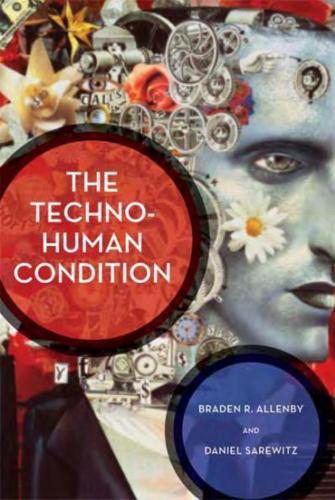
The Techno-Human Condition
by
Braden R. Allenby
and
Daniel R. Sarewitz
Published 15 Feb 2011
The background to much discussion of transhumanism is a world in which human activity increasingly affects global systems, including the climate and the hydrological, carbon, and nitrogen cycles of the anthropogenic Earth. l l And yet we know it not. We are strangers in our own strange land, homeless because we have been turfed out by our very successes. As Stewart Brand put it in his first Whole Earth Catalog (1968), "We are as gods and might as well get good at it." So far, we fail that test, and we do so for reasons that the philosopher Martin Heidegger stated succinctly: So long as we do not, through thinking, experience what is, we can never belong to what will be ....
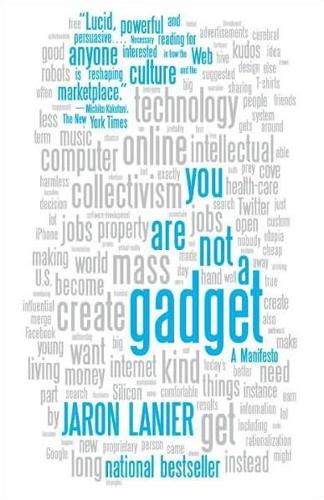
You Are Not a Gadget
by
Jaron Lanier
Published 12 Jan 2010
If a design like Facebook or Twitter depersonalizes people a little bit, then another service like Friendfeed—which may not even exist by the time this book is published—might soon come along to aggregate the previous layers of aggregation, making individual people even more abstract, and the illusion of high-level metaness more celebrated. Information Doesn’t Deserve to Be Free “Information wants to be free.” So goes the saying. Stewart Brand, the founder of the Whole Earth Catalog, seems to have said it first. I say that information doesn’t deserve to be free. Cybernetic totalists love to think of the stuff as if it were alive and had its own ideas and ambitions. But what if information is inanimate? What if it’s even less than inanimate, a mere artifact of human thought?

The Longing for Less: Living With Minimalism
by
Kyle Chayka
Published 21 Jan 2020
Over the years, he observed a trend of Americans “returning to the simple life,”10 which the media had turned into a new archetype. Moving to the country, baking your own bread, and establishing cooperative businesses constituted a new social philosophy that mingled with the techno-utopianism of Stewart Brand’s Whole Earth Catalog circa 1968. Elgin rebranded Gregg’s voluntary simplicity with the acronym VS, which sounds more like a technological device than an idea with centuries of history—once again showing how minimalism erases its own past. Elgin’s version of VS was driven by a sense of disconnection: Economic and political structures had grown beyond human scale, so people wanted to separate themselves from them.

Stories Are Weapons: Psychological Warfare and the American Mind
by
Annalee Newitz
Published 3 Jun 2024
Linebarger, Psychological Warfare, 313. 12. Linebarger, 276. 13. Linebarger, 275. 14. Nevala-Lee, Alec, Astounding: John W. Campbell, Isaac Asimov, Robert A. Heinlein, L. Ron Hubbard, and the Golden Age of Science Fiction (Harper Collins, 2019). 15. Founded by tech industry leaders including Stewart Brand and Peter Schwartz, the Global Business Network ran from the late 1980s to the late 2010s, running workshops (a few of which I attended in the 2000s) where experts—academics, journalists, authors, and community leaders—briefed US intelligence agents on emerging threats and social practices online. 16.
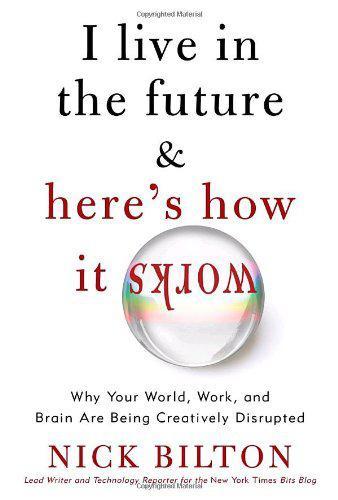
I Live in the Future & Here's How It Works: Why Your World, Work, and Brain Are Being Creatively Disrupted
by
Nick Bilton
Published 13 Sep 2010
Ultimately, some companies will win, and those winners will be the ones that create the best and most meaningful experiences for their customers. A lot of visionaries and futurists worked on the Minority Report concepts. Steven Spielberg, the director of Minority Report, asked his team of designers to envision what the year 2054 might look like. Spielberg tapped into the creative talents of famous writers such as Douglas Coupland and Stewart Brand, and also worked with interface designers from the Massachusetts Institute of Technology, including John Underkoffler, the movie’s science adviser. A creative team involved in the retail experience of the movie said “customers did not actually have to try on the clothes in the store but could do so in a virtual way.”

Memory Machines: The Evolution of Hypertext
by
Belinda Barnet
Published 14 Jul 2013
He is filled with a deep regret about his life and the failure of his vision: ‘I see today’s computer world, and the Web, as resulting from my failure’ (Nelson 2011). Although people were and still are inspired by his design, like Coleridge’s ‘Kubla Khan’, it exists in potentia. Everyone from Stewart Brand to Alan Kay seems to have been ‘inspired’ by Nelson, but nobody has built the design exactly as he wants it. ‘Nobody is building my/our design! They are building things vaguely like hearsay about the design!’ (Nelson 2012). One of the first people who thought they might try to build part of Nelson’s design was Andries van Dam (I stress ‘part’ here because van Dam had ideas of his own that he wanted to explore at the same time, such as print text editing).

Whiplash: How to Survive Our Faster Future
by
Joi Ito
and
Jeff Howe
Published 6 Dec 2016
.: Mathematica Policy Research, February 27, 2013), https://www.mathematica-mpr.com/our-publications-and-findings/publications/kipp-middle-schools-impacts-on-achievement-and-other-outcomes-full-report. 11 See “Standards in Your State | Common Core State Standards Initiative,” accessed May 26, 2016, http://www.corestandards.org/standards-in-your-state/. 12 Anu Partanen, “What Americans Keep Ignoring About Finland’s School Success,” Atlantic, December 29, 2011, http://www.theatlantic.com/national/archive/2011/12/what-americans-keep-ignoring-about-finlands-school-success/250564/. 13 Interview with Jeff Howe. 14 “The United States Standard Screw Threads,” accessed May 26, 2016, https://www.asme.org/about-asme/who -we-are/engineering-history/landmarks/234-the-united-states-standard-screw-threads. 15 Tom Knight, “Idempotent Vector Design for Standard Assembly of Biobricks,” MIT Libraries, 2003, 1–11, http://dspace.mit.edu/handle/1721.1/45138. 16 “About Me(redith),” http://www.thesmartpolitenerd.com/aboutme.html. 17 Interview with Jeff Howe. 18 Nicholas Wade, ed., The New York Times Book of Genetics (Guilford, CT: Lyons Press, 2002), 250. 19 Human National Human Genome Research Institute, “The Human Genome Project Completion: Frequently Asked Questions,” https://www.genome.gov/11006943. 20 “MIT Independent Activities Period (IAP),” http://web.mit.edu/iap/. 21 “iGEM 2004—The 2004 Synthetic Biology Competition—SBC04,” http://2004.igem.org/index.cgi. 22 Anselm Levskaya et al., “Synthetic Biology: Engineering Escherichia Coli to See Light,” Nature 438, no. 7067 (November 24, 2005): 441–42, doi:10.1038/nature04405. 23 iGEM, “Main Page—Registry of Standard Biological Parts,” accessed May 26, 2016, http://parts.igem.org/Main_Page. 24 “Team:Paris Bettencourt/Acceptance—2015.igem.org,” accessed May 26, 2016, http://2015.igem.org/Team:Paris_Bettencourt/Acceptance. 25 “Team:NYMU-Taipei—2013.igem.org,” accessed May 26, 2016, http://2013.igem.org/Team:NYMU-Taipei. 26 “Team:EPF Lausanne/Perspectives—2013.igem.org,” accessed May 26, 2016, http://2013.igem.org/Team:EPF_Lausanne/Perspectives. 27 According to Negroponte, he saw the phrase written on a wall clock on the fourth floor of the original Media Lab building. Stewart Brand included it in his book about the Media Lab, and a motto was born. Joichi Ito, “Deploy: How the Media Lab’s ‘Demo or Die’ Evolved to ‘Deploy,’” PubPub, January 31, 2016, http://www.pubpub.org/pub/deploy. 28 Ibid. 29 “Seymour Papert,” accessed May 26, 2016, http://web.media.mit.edu/~papert/. 30 Seymour Papert, “Papert on Piaget,” March 29, 1999, http://www.papert.org/articles/Papertonpiaget.html.

Discardia: More Life, Less Stuff
by
Dinah Sanders
Published 7 Oct 2011
When you are creating or modifying something—a new furniture arrangement, a new aspect of your routine, or a new way that you want to approach particular social situations—design for the expected use as well as for several possible other conditions, in case major variables switch to other settings than what you had predicted. Prepare yourself for comfortably rolling with the changes. Writer and futurist Stewart Brand, in How Buildings Learn (a book that informs about a much broader range of thinking than merely the architectural), discusses this principle: “All buildings are predictions. All predictions are wrong.” I'll tone it down just a hair: All plans are predictions. No predictions are 100% perfect. By preparing yourself for imperfection and envisioning reasonable responses to the most likely alternate scenarios, you'll reduce your stress and optimize your results.

Makers
by
Chris Anderson
Published 1 Oct 2012
“It gave a tremendous sense of self-confidence, that through exploration and learning one could understand seemingly very complex things in one’s environment,” he told [an] interviewer. Later, when Jobs and his Apple cofounder, Steve Wozniak, were members of the Homebrew Computer Club, they saw the potential of desktop tools—in this case the personal computer—to change not just people’s lives, but also the world. In this, they were inspired by Stewart Brand, who had emerged from the psychedelic culture of the 1960s to work with the early Silicon Valley visionaries to promote technology as a form of “computer liberation,” which would free both the minds and the talents of people in a way that drugs had not. In his biography of Steve Jobs, Walter Isaacson describes Brand’s role in the origins of what is today the Maker Movement: Brand ran the Whole Earth Truck Store, which began as a roving truck that sold useful tools and educational materials, and in 1968 he decided to extend its reach with The Whole Earth Catalog.

Masters of Deception: The Gang That Ruled Cyberspace
by
Michelle Slatalla
and
Joshua Quittner
Published 15 Jan 1995
What if his sister accidentally on purpose stuck his disk in the microwave? How's he going to play? This was a widespread concern among teenage boys all over the country. It was perhaps their first conscious political stand. Even if they didn't know it, they were following a basic truth identified by Whole Earth Review founder Stewart Brand: Information wants to be free. To liberate it, these kids became "warez" dudes, amateur software pirates who put their collective ingenuity together. They traded tips for breaking lame copy protections. They even wrote little lockpicking programs, like Kwik Copy, that could copy a disk protected by measly Error 23.
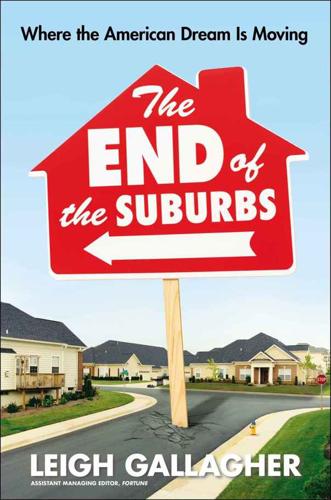
The End of the Suburbs: Where the American Dream Is Moving
by
Leigh Gallagher
Published 26 Jun 2013
This shift is major: Alexis C. Madrigal, “The Beginning of the End for Suburban America,” The Atlantic, September 14, 2011. The author and provocateur: James Howard Kunstler, The Geography of Nowhere: The Rise and Decline of America’s Man-Made Landscape (Simon & Schuster, 1993). In an interview in the late 1990s: Stewart Brand, “Vital Cities: An Interview with Jane Jacobs,” Whole Earth, Winter 1998. A 2006 documentary, The End of Suburbia: The End of Suburbia: Oil Depletion and the Collapse of the American Dream, written and directed by Gregory Greene, 2004. A prescient and informative film; see http://www.endofsuburbia.com.
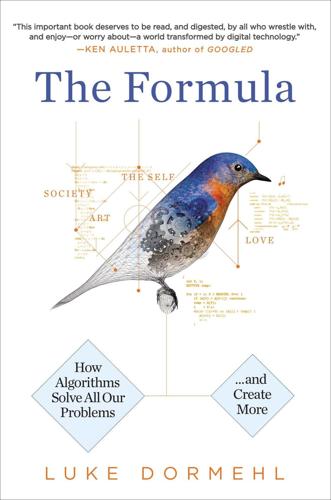
The Formula: How Algorithms Solve All Our Problems-And Create More
by
Luke Dormehl
Published 4 Nov 2014
New Statesman, May 29, 2013. newstatesman.com/sci-tech/sci-tech/2013/05/are-you-ready-era-big-data. 47 Anderson, Chris. The Long Tail (London: Random House Business, 2006). 48 Ellul, Jacques. The Technological Society (New York: Knopf, 1964). 49 Turner, Fred. From Counterculture to Cyberculture: Stewart Brand, the Whole Earth Network, and the Rise of Digital Utopianism (Chicago: University of Chicago Press, 2006). 50 Turkle, Sherry. Life on Screen: Identity in the Age of the Internet (New York: Simon & Schuster, 1995). 51 Singer, Natasha. “When Your Data Wanders to Places You’ve Never Been.”
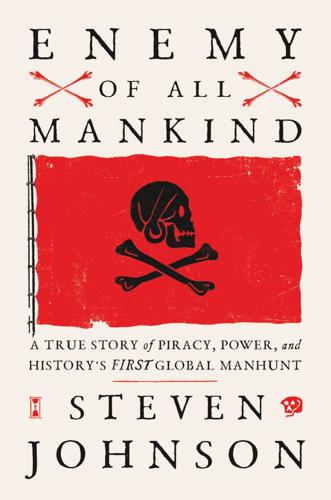
Enemy of All Mankind: A True Story of Piracy, Power, and History's First Global Manhunt
by
Steven Johnson
Published 11 May 2020
I have tried to pay tribute to that work and commentary in the preceding pages—to make this a book not just about what happened in the story of Henry Every and the Fancy, but also a book about the debate about what happened. So a special thanks is warranted to the scholars and friends who shaped this book with their work, suggestions, and in some cases close reading, particularly Philip J. Stern, Douglas R. Burgess, David Olusoga, Joel Baer, Soma Mukherjee, Chris Himes, Mark Bailey, Stewart Brand, and Adam Fisher. I would also like to acknowledge my long-ago mentor from graduate school, Edward Said, who first got me thinking about how much the institutions of the West were shaped by their encounters with the “Orient.” I wish he were still around to read this book, if only to see that I finally managed to get rid of most of the poststructuralist jargon that used to annoy him so much back in those grad school days.
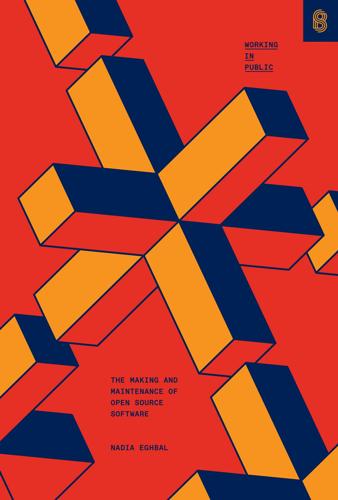
Working in Public: The Making and Maintenance of Open Source Software
by
Nadia Eghbal
Published 3 Aug 2020
They must play the role of cowboys, roping consumers with their lassos and dragging them in the desired direction, whether by threatening the users with lawsuits or wheedling readers into disabling ad-blocking software—which extends to not allowing them to read articles in a browser’s private mode. Although we continue to pay lip service to the idea that consumers should pay for software somehow, code struggles against its bonds, spurred perhaps by the famous observation, attributed to Stewart Brand, that “information wants to be free.” Economist David Friedman tells a joke that goes like this: Two economists walked past a Porsche showroom. One of them pointed at a shiny car in the window and said, “I want that.” “Obviously not,” the other replied.239 The joke is about revealed preference: the idea that we can only understand consumer preferences based on their actual behavior.

Age of the City: Why Our Future Will Be Won or Lost Together
by
Ian Goldin
and
Tom Lee-Devlin
Published 21 Jun 2023
In 1996, journalist and cyber optimist John Perry Barlow published his Declaration of the Independence of Cyberspace, in which he described his vision for the internet as ‘a world that all may enter without privilege or prejudice accorded to race, economic power, military force, or station of birth … where anyone, anywhere may express his or her beliefs, no matter how singular, without fear of being coerced into silence or conformity’.1 The fact that key figures like Stewart Brand, who founded The WELL, were also central participants in the 1960s counterculture, with its egalitarian and universalist ethos, helps explain some of this utopian hyperbole. Far from societies coming closer together, the last few decades have seen many of them unravelling. In the United States, where the General Social Survey provides consistent longitudinal data, the share of adults who agree that most people can be trusted has fallen from nearly 50 per cent in the early 1970s to around 30 per cent today.2 And while back in 1960 just 5 per cent of Republicans and 4 per cent of Democrats would have been unhappy to see their child marry a person from the opposite political party, the equivalent figures in 2010 were 49 per cent and 33 per cent.3 Conspiracy theories on the right and ‘cancel culture’ on the left make constructive dialogue nearly impossible.

NeuroTribes: The Legacy of Autism and the Future of Neurodiversity
by
Steve Silberman
Published 24 Aug 2015
It was also the computer Engelbart had used to power the Mother of All Demos. It was a chunk of hardware with unusually good karma. The hacker subculture incubated at MIT was thriving in places like SAIL, Xerox PARC, and the now legendary garages of Cupertino and San José. Soon Whole Earth Catalog impresario Stewart Brand would unleash this subculture on the unsuspecting inhabitants of Greater Mundania with the ultimate endorsement in Rolling Stone: “Computers are coming to the people. That’s good news, maybe the best since psychedelics.” The focus of the article was Spacewar, the seminal computer game developed in 1961 by four of McCarthy’s students high on the fumes of pulp science fiction.
…
While McCarthy wanted to design machines: “An Interview with John Markoff: What the Dormouse Said.” Ubiquity, Aug. 2005. tools that would facilitate “conviviality”: Tools for Conviviality, Ivan Illich. Harper & Row, 1973. a programmer at a bustling commune: “Spacewar: Fanatic Life and Symbolic Death among the Computer Bums,” Stewart Brand. Rolling Stone, Dec. 7, 1972. which was twenty-four feet long: “Convivial Cybernetic Devices: An Interview with Lee Felsenstein,” Kip Crosby. Analytical Engine (newsletter of the Computer History Association of California), Vol. 3, No. 1, Nov. 1995. a “communication device between humans”: “Spacewar.”
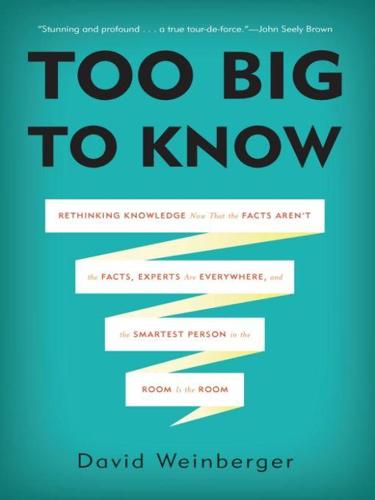
Too Big to Know: Rethinking Knowledge Now That the Facts Aren't the Facts, Experts Are Everywhere, and the Smartest Person in the Room Is the Room
by
David Weinberger
Published 14 Jul 2011
The same is true of a book that tells you to add “just enough diversity.” How much is enough? We know that it’s considerably less than we thought, but the problem is that there is no set amount of diversity that is just enough. That’s why The WELL has moderators. Founded in 1975 by the generational icon Stewart Brand, with Larry Brilliant, The WELL has been one of the longest-running conversations on the Net. Its origins are in the hippie culture of which Brand is an avatar—the name stands for The Whole Earth ’Lectronic Link, a reference to Brand’s Whole Earth Catalog—but the 4,000 current members seem to reflect more of an earnest coffee-shop culture than the shirtless non-linearity of Haight-Ashbury.
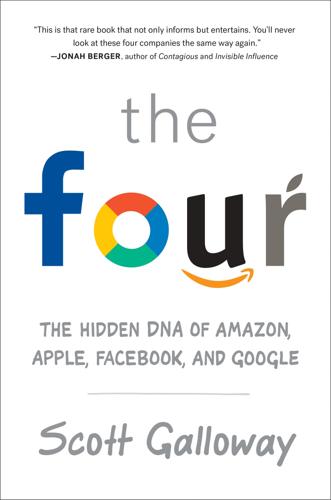
The Four: How Amazon, Apple, Facebook, and Google Divided and Conquered the World
by
Scott Galloway
Published 2 Oct 2017
To date, consumers and advertisers have voted with their actions and expressed that creepy is a price worth paying for the relevance. Information’s Price Tag The hacker credo “Information wants to be free” set the stage for the second golden age of the internet. The origin of the phrase is worth reviewing. First proposed by Stewart Brand, the founder of the Whole Earth Catalog, at the 1984 Hackers Conference, his formulation was: On the one hand information wants to be expensive, because it’s so valuable. The right information in the right place just changes your life. On the other hand, information wants to be free, because the cost of getting it out is getting lower and lower all the time.
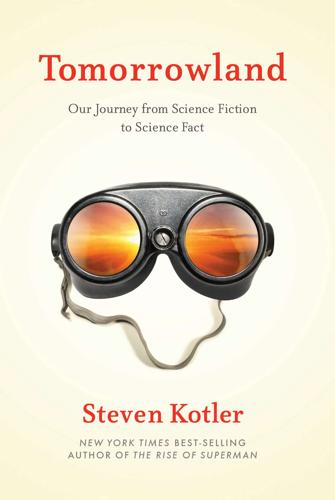
Tomorrowland: Our Journey From Science Fiction to Science Fact
by
Steven Kotler
Published 11 May 2015
And it’s this list that’s put the nuclear option back on the table, a process well summarized by Peter Schwartz and Spencer Reiss in a recent Wired article: “Burning hydrocarbons is a luxury that a planet with six billion energy-hungry souls can’t afford. There is only one sane, practical alternative: nuclear power.” Many feel the same. Both the previous Bush administration and the current Obama administration back the nuclear option, as do an increasing number of serious environmentalists like Whole Earth Catalog founder Stewart Brand, Gaia theorist James Lovelock, and eco-author Bill McKibben. Congress as well. In 2007, they gave the nuclear industry $18.5 billion in loan guarantees for up to 80 percent of the cost of new units. Since then, US power companies have submitted applications for 30 new plants. Worldwide, there are 31 new plants under construction and even more promised.

Lurking: How a Person Became a User
by
Joanne McNeil
Published 25 Feb 2020
The focus of this book is identity, which is why Amazon and Apple, titans in scale and influence, do not figure in as heavily as the other major tech companies. Right now neither plays third wheel in online relationships and neither has much stake in venues of self-presentation. Although it is amusing to read things like Stewart Brand’s review of From Counterculture to Cyberculture (“As the guy in the subtitle, I might be expected to have all kinds of eye-rolling cavils with [Fred] Turner’s book, but I don’t”) or MacKenzie Bezos’s one-star review of The Everything Store: Jeff Bezos and the Age of Amazon (“Jeff didn’t read Remains of the Day until a year after he started Amazon”), as of now, Amazon is primarily a retailer and not a social site.
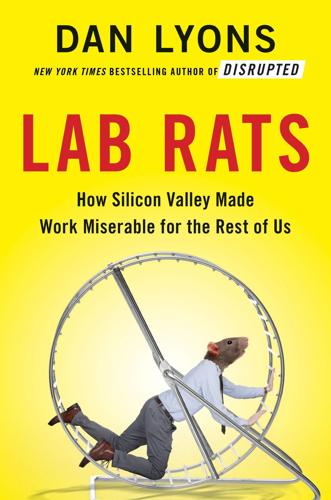
Lab Rats: How Silicon Valley Made Work Miserable for the Rest of Us
by
Dan Lyons
Published 22 Oct 2018
Wozniak and his Apple co-founder Steve Jobs were long-haired hippie-hackers who built their first personal computers as members of the Homebrew Computer Club, a pack of amateur kit-computer hobbyists. Wozniak was steeped in the people-first “HP Way.” Jobs was an LSD-taking, commune-dwelling hippie who often went barefoot and who was influenced by Stewart Brand, a proponent of psychedelic drugs who hung out with Ken Kesey and the Merry Pranksters. Brand created the Whole Earth Catalog and co-founded the WELL, one of the first online communities. Its members included John Perry Barlow, who wrote lyrics for the Grateful Dead and co-founded the Electronic Frontier Foundation, an Internet civil liberties advocacy organization.

The Digital Party: Political Organisation and Online Democracy
by
Paolo Gerbaudo
Published 19 Jul 2018
Party politics 5, no.3 (1999): 363–382. Tormey, Simon. The end of representative politics. New York: John Wiley & Sons, 2015. Turkle, Sherry. Alone together: why we expect more from technology and less from each other. London: Hachette UK, 2017. Turner, Fred. From counterculture to cyberculture: Stewart Brand, the Whole Earth Network, and the rise of digital utopianism. Chicago, IL: University of Chicago Press, 2010. Van Biezen, Ingrid, Peter Mair and Thomas Poguntke. ‘Going, going, ... gone? The decline of party membership in contemporary Europe.’ European Journal of Political Research 51, no.1 (2012): 24–56.
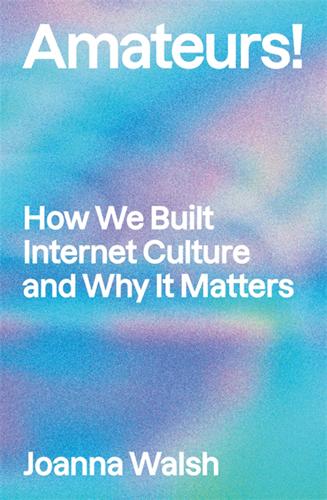
Amateurs!: How We Built Internet Culture and Why It Matters
by
Joanna Walsh
Published 22 Sep 2025
Unlike the agricultural commons whose tragedy, according to ecologist Garrett Hardin (1968) was that anything that could be got for free would be depleted through overexploitation, the digital commons rely on overexploitation for their continued existence. The more people who visit a site, the more popular it becomes; the more people who mod a meme, the more it is judged culturally important. If, according to McKenzie Wark’s mashup of quotes from Stewart Brand’s Whole Earth Catalog and Jean-Jacques Rousseau’s The Social Contract, ‘information wants to be free but is everywhere in chains’, then Web 2.0 got us used to online aesthetics that are bountifully free at the point of delivery, much as they are embedded in chains of extraction. While the vectoralist classes (the digital capitalist class described in Wark’s 2004 Hacker Manifesto) ‘depend on information’s scarcity’ for profit, they also depend on an excess of amateur aesthetics.33 Trouble is, you can’t stop people making things, particularly at a time when the promise of status and financial security has been stripped from many professions, making amateur aesthetic creation look like a risk worth taking. 214You can’t even stop people making things that make things.

Machinery of Freedom: A Guide to Radical Capitalism
by
David Friedman
Published 2 Jan 1978
The gentleman did very well for himself until the day that he tendered a bid to the U.S. government to carry the government's mail — at one-fifth the price the U.S. Post Office was charging. The Post Office regarded this as going a bit too far and insisted on its rights. The gentleman was put out of business and the Post Office stole his idea. When a mail truck gets stuck in the mud, third class is what they throw under the wheels. Stewart Brand MONOPOLY II: STATE MONOPOLY FOR FUN AND PROFIT A reg'lar pollytician can't give away an' alley without blushin', but a businessman who is in pollytics . . . will . . . charge an admission price to th' lake front and make it a felony f'r annywan to buy stove polish outside iv his store, and have it all put down to public improvements. . . .
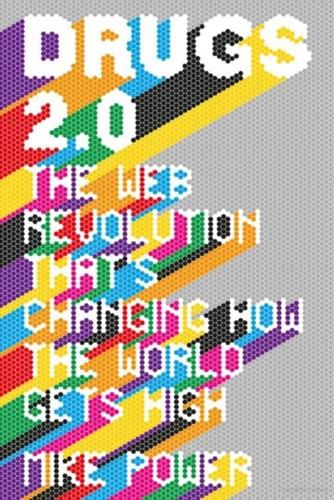
Drugs 2.0: The Web Revolution That's Changing How the World Gets High
by
Mike Power
Published 1 May 2013
It was the beginning of the modern age.1 Engelbart, in common with many intellectuals and technologists of the era, had attended LSD-assisted creativity sessions in the 1960s at the International Foundation for Advanced Study, a California psychedelic research group founded by a friend of Alexander Shulgin’s, Mylon Stolaroff. The Shulgins wrote the preface to Stolaroff’s book Thanatos to Eros (1994) detailing his experiences with LSD, MDMA, mescaline and a number of Shulgin’s creations.2 Author Stewart Brand, who coined the phrase ‘Information wants to be free’ in 1984, was responsible for filming the Mother of All Demos, and that same year he launched the Whole Earth Catalog, the ad-free samizdat techno-hippy bible. Its esoteric and wide-ranging content, from poetry to construction plans for geodesic domes by physicist Buckminster Fuller, from car repair tips to trout-fishing guides and the fundamentals of yoga and the I-ching, was hacked together using Polaroid cameras, Letraset and the highest of low-tech.

Here Comes Everybody: The Power of Organizing Without Organizations
by
Clay Shirky
Published 28 Feb 2008
Other students who have been especially incisive on social topics are Mouna Andraos, Jake Barton, Michelle Chang, John Geraci, Elizabeth Goodman, Christina Goodness, Sam Howard-Spink, James Robinson, Matty Sallin, Nick Sears, Mike Sharon, and Shawn van Every. Alicia Cervini’s careful reading has improved both the ideas and their expression from the first draft. My field has a tradition of thinking out loud. Chris Anderson, Andrew Blau, Stewart Brand, Lili Cheng, Esther Dyson, Hal Levin, Bob Metcalfe, Jerry Michalski, Richard O’Neill, Tim O’Reilly, Peter Schwartz, Andrew Stolli, and Kevin Werbach all provided both observations and public platforms for the development of this work. Articles written for Chris Anderson for Wired and Thomas Stewart for Harvard Business Review did likewise.
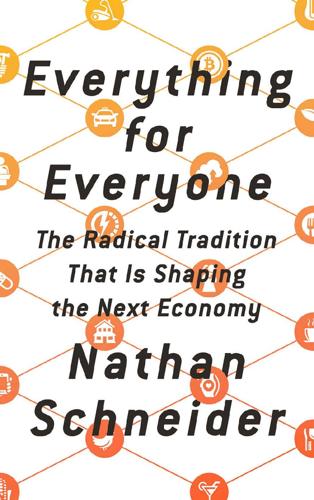
Everything for Everyone: The Radical Tradition That Is Shaping the Next Economy
by
Nathan Schneider
Published 10 Sep 2018
Kelty, Two Bits; David Bollier, “Inventing the Creative Commons,” in Viral Spiral: How the Commoners Built a Digital Republic of Their Own (New Press, 2008). 5. Theodore Roszak, The Cult of Information: The Folklore of Computers and the True Art of Thinking (Pantheon, 1986), 138–141; see also Fred Turner, From Counterculture to Cyberculture: Stewart Brand, the Whole Earth Network, and the Rise of Digital Utopianism (University of Chicago Press, 2006), and Judy Malloy, ed., Social Media Archeology and Poetics (MIT Press, 2016). 6. Coleman, Coding Freedom; Brian J. Robertson, Holacracy: The New Management System for a Rapidly Changing World (Henry Holt, 2015); Frederic Laloux, Reinventing Organizations: A Guide to Creating Organizations Inspired by the Next Stage of Human Consciousness (Nelson Parker, 2014).
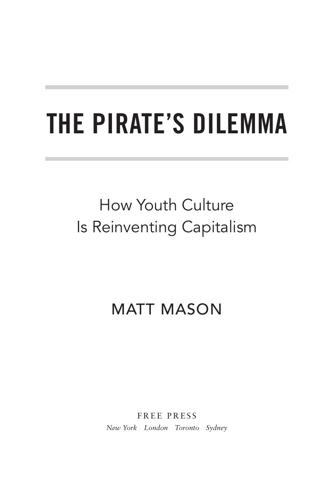
The Pirate's Dilemma: How Youth Culture Is Reinventing Capitalism
by
Matt Mason
Many companies, including Intel and IBM, have programmers working full-time developing new free software for Linux, as they obey the laws of Linux and put back some of what they take out. By distributing their core software for free, Linux now powers forty-three million personal computers worldwide. By selling customized software that runs on top of the free open-source software, it's predicted the market for Linux products will be worth $35 billion by 2008. To paraphrase Stewart Brand, author and founder of the Whole Earth Catalog, information wants to be free, but customized information wants to be really expensive. Linux is a great example of a company that follows this dictum. The value of openness is something most of us are only just getting to grips with. Harvard Business School published a report in 2006 that surveyed a range of businesses and concluded that introducing problems to outsiders was the best way to find effective solutions.

Life After Google: The Fall of Big Data and the Rise of the Blockchain Economy
by
George Gilder
Published 16 Jul 2018
But as prices dropped, purchases would mount and accumulated profits would rise on the model of all capitalist growth. Google, however, was not a conventional company. It made the fateful and audacious decision to make all its content and information available free: in economic terms, a commons, available to all, in the spirit of the Internet pioneer Stewart Brand, whose slogan was “Information wants to be free.” Brin and Page were children of the American academy, where success is measured less in money than in prestige: summers of graceful leisure and research, and above all, tenure (America’s answer to a seat in the House of Lords). The denizens of the academy covet the assurance that whenever they venture beyond their hallowed halls, they are always deemed the “brightest guys in the room.”

The Singularity Is Near: When Humans Transcend Biology
by
Ray Kurzweil
Published 14 Jul 2005
Peter Lyman and Brewster Kahle, "Archiving Digital Cultural Artifacts: Organizing an Agenda for Action," D-Lib Magazine, July–August 1998. Stewart Brand writes: "Behind every hot new working computer is a trail of bodies of extinct computers, extinct storage media, extinct applications, extinct files. Science fiction writer Bruce Sterling refers to our time as 'the Golden Age of dead media, most of them with the working lifespan of a pack of Twinkles," Stewart Brand, "Written on the Wind," Civilization Magazine, November 1998 ("01998" in Long Now terminology), available online at http://www.longnow.org/10klibrary/library.htm. 43.
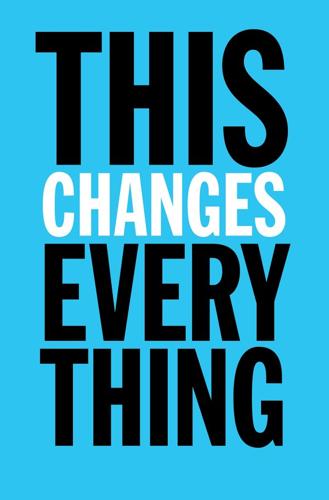
This Changes Everything: Capitalism vs. The Climate
by
Naomi Klein
Published 15 Sep 2014
Their minds hovering out in orbit, there are those who begin to imagine leaving the planet for good—saying, “Goodbye Earth!” to quote Princeton physicist Gerard O’Neill, who, in the mid-1970s, started calling for the creation of space colonies to overcome the earth’s resource limits. Interestingly, one of O’Neill’s most devoted disciples was Stewart Brand, the founder of the Whole Earth Catalog, who spent a good chunk of the 1970s arguing that the U.S. government should build space colonies; today he is one of the most vocal proponents of Big Tech fixes to climate change, whether nuclear power or geoengineering.59 And he’s not the only prominent geoengineering booster nurturing the ultimate escape fantasy.
…
New York Times Magazine, July 13, 1969, SM10. 59. Poole, Earthrise, 144–145, 162; Peder Anker, “The Ecological Colonization of Space,” Environmental History 10 (2005): 249–254; Andrew G. Kirk, Counterculture Green: The Whole Earth Catalog and American Environmentalism (Lawrence: University Press of Kansas, 2007), 170–172; Stewart Brand, Whole Earth Discipline: Why Dense Cities, Nuclear Power, Transgenic Crops, Restored Wildlands, and Geoengineering Are Necessary (New York: Penguin, 2009). 60. Leonard David, “People to Become Martians This Century?” NBC News, June 25, 2007. 61. “Richard Branson on Space Travel: ‘I’m Determined to Start a Population on Mars,’ ” CBS This Morning, September 18, 2012; “Branson’s Invasion of Mars,” New York Post, September 20, 2012; “Branson: Armstrong ‘Extraordinary Individual’ ” (video), Sky News, August 26, 2012. 62.
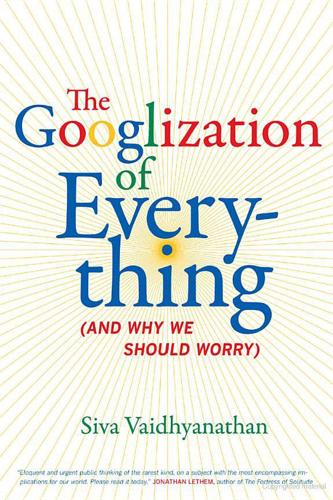
The Googlization of Everything:
by
Siva Vaidhyanathan
Published 1 Jan 2010
Nicholas Lemann, The Big Test: The Secret History of the American Meritocracy (New York: Farrar Straus and Giroux, 1999). 47. Neil Postman, Technopoly: The Surrender of Culture to Technology (New York: Knopf, 1992). 48. Langdon Winner, Autonomous Technology: Technics-out-of-Control as a Theme in Political Thought (Cambridge, MA: MIT Press, 1980). 49. Fred Turner, From Counterculture to Cyberculture: Stewart Brand, the Whole Earth Network, and the Rise of Digital Utopianism (Chicago: University of Chicago Press, 2006). 50. Fred Turner, “Burning Man at Google: A Cultural Infrastructure for New Media Production,” New Media Society 11, nos. 1–2 (2009): 73–94. 51. Yochai Benkler, The Wealth of Networks: How Social Production Transforms Markets and Freedom (New Haven, CT: Yale University Press, 2006). 52.

Maphead: Charting the Wide, Weird World of Geography Wonks
by
Ken Jennings
Published 19 Sep 2011
CHAPTER 11: FRONTIER 212 “Our age today”: Quoted in John Noble Wilford, The Mapmakers (New York: Vintage, 2000), p. 112. 212 “Mein Herr”: Lewis Carroll, Sylvie and Bruno Concluded (London: Macmillan, 1893), p. 169. 212 1982 essay: Umberto Eco, “On the Impossibility of Drawing a Map of the Empire on a Scale of 1 to 1,” in How to Travel with a Salmon and Other Essays (Orlando, Fla.: Harcourt, 1994), p. 95. 216 twenty terabytes or so: Stewart Brand, The Clock of the Long Now: Time and Responsibility (New York: Basic Books, 1999), p. 87. 217 George Armstrong Custer: Jeffry D. Wert, Custer (New York: Touchstone, 1996), p. 50. 217 drop film packets: Nicholas M. Short, The Remote Sensing Tutorial (Washington, D.C.: Federation of American Scientists, 2001), http://rst.gsfc.nasa.gov/Intro/Part2_26e.html. 218 a military incursion: Daniel Hernandez, “Tensions High Between Nicaragua, Costa Rica in Border Dispute,” Los Angeles Times, Nov. 19, 2010. 218 “McDonaldization” of cartography: Martin Dodge and Chris Perkins, “Reclaiming the Map: British Geography and Ambivalent Cartographic Practice,” Environment and Planning A 40, no. 6 (June 2008), pp. 1271–1276. 219 briefly given Chinese names: “Google Admits ‘Mistake’ of Wrong Depiction of Arunachal,” The Times of India, Aug. 8, 2009. 220 Meteor-impact craters: Richard Macey, “Opal Miner Stumbles on Mega Meteorite Crater,” The Sydney Morning Herald, Nov. 23, 2008. 220 a Roman villa in Parma: “Internet Maps Reveal Roman Villa,” BBC News, Sept. 21, 2005. 220 a lost Amazonian city: Ed Caesar, “Google Earth Helps Find El Dorado,” The Sunday Times, Jan. 10, 2010. 220 a remote forest in Mozambique: Louise Gray, “Scientists Discover New Forest with Undiscovered Species on Google Earth,” The Daily Telegraph, Dec. 21, 2008. 220 the so-called forest swastika: “German Forest Loses Swastika,” BBC News, Dec. 4, 2000. 220 eight thousand grazing cattle: Thomas H.
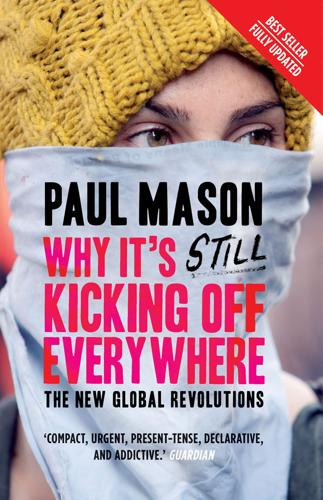
Why It's Still Kicking Off Everywhere: The New Global Revolutions
by
Paul Mason
Published 30 Sep 2013
In her brilliant cyber-memoir, technology writer Becky Hogge describes how survivors of the LSD fraternity in California ‘quit drugs for software’, seeding a techno-revolution that would create the mouse, the pixel, the Apple Mac, the Internet, hacking and free software.15 Their goals were made explicit in two famous statements by Stewart Brand, the visionary founder of the Whole Earth Catalog: ‘Like it or not, computers are coming to the masses’; and ‘Information wants to be free’. This would open up a forty-year battle, still ongoing, between those trying to monopolize, censor and commercialize information technology and those who want it to be open, uncensored and free.

Zero-Sum Future: American Power in an Age of Anxiety
by
Gideon Rachman
Published 1 Feb 2011
See Misha Glenny, “Drugs cartels open another front in a futile war,” Financial Times, December 11, 2009, and Misha Glenny, McMafia: Seriously Organized Crime (London: Vintage, 2009). 23. ZERO-SUM WORLD 1. Tom Friedman, The World Is Flat (London: Penguin, 2005), 544. 2. Fareed Zakaria, The Post-American World (New York: Norton, 2008), 218. 3. See “Lessons from ‘The Leopard,’” Economist, December 11, 2009. 4. See, for example, Stewart Brand, Whole Earth Discipline (London: Atlantic Books, 2010). 5. Martin Wolf, “The dangers of living in a zero-sum world economy,” Financial Times, December 18, 2007. 6. “U.S. Seen as Less Important, China as More Powerful: Isolationist Sentiment Surges to Four-Decade High,” Pew Research Center, Washington, D.C., December 3, 2009.
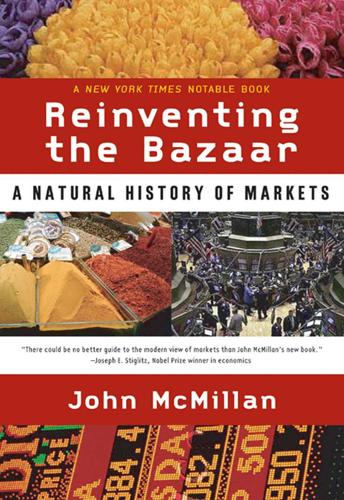
Reinventing the Bazaar: A Natural History of Markets
by
John McMillan
Published 1 Jan 2002
If information flowed freely, then the middlemen could be cut out; when information is not free, they serve a useful purpose. “Information wants to be free. Information also wants to be expensive.” This mantra of high technology applies as well to the low-tech world. It was coined by the computer guru Stewart Brand, who went on to explain, “Information wants to be free because it has become so cheap to distribute, copy, and recombine—too cheap to meter. It wants to be expensive because it can be immeasurably valuable to the recipient.”6 Buyers are empowered by anything that makes it easier for them to acquire information.
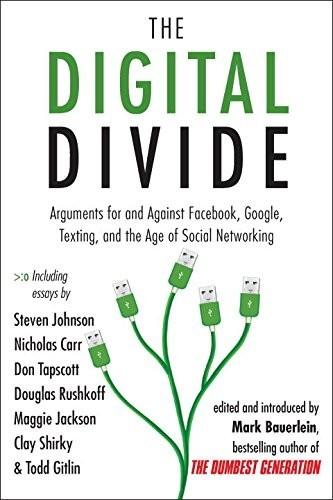
The Digital Divide: Arguments for and Against Facebook, Google, Texting, and the Age of Social Netwo Rking
by
Mark Bauerlein
Published 7 Sep 2011
. >>> making connections The earliest online social networks were arguably the Bulletin Board Systems of the 1980s that let users post public messages, send and receive private messages, play games, and exchange software. Some of those BBSs, like The WELL (Whole Earth’Lectronic Link) that technologist Larry Brilliant and futurist Stewart Brand started in 1985, made the transition to the World Wide Web in the mid-1990s. (Now owned by Salon.com, The WELL boasts that it was “the primordial ooze where the online community movement was born.”) Other websites for community and connection emerged in the 1990s, including Classmates.com (1995), where users register by high school and year of graduation; Company of Friends, a business-oriented site founded in 1997; and Epinions, founded in 1999 to allow users to give their opinions about various consumer products.
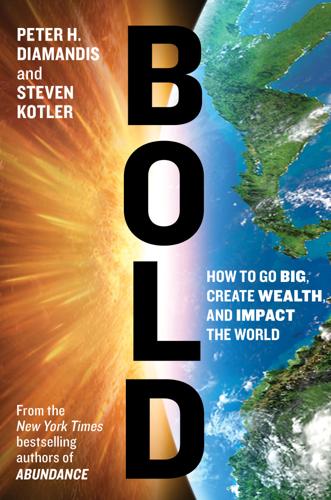
Bold: How to Go Big, Create Wealth and Impact the World
by
Peter H. Diamandis
and
Steven Kotler
Published 3 Feb 2015
But when technologies are in the trough, we are again swayed by the hype (this time, the negative hype) and consistently fail to believe they’ll ever emerge, thus missing their massively transformative potential. Gartner Hype Circle Source: www.gartner.com Take the personal computer. Back in the late 1960s, when folks like writer Stewart Brand (who coined the term personal computer) first started discussing the idea of the PC, it was with an incredible amount of “change the world” fervor.3 Then the machines actually arrived, and all most people could do was play Pong. This was the trough of disillusionment, cultural deception at its finest.
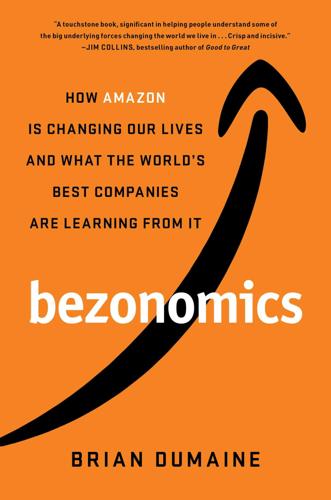
Bezonomics: How Amazon Is Changing Our Lives and What the World's Best Companies Are Learning From It
by
Brian Dumaine
Published 11 May 2020
The clock project, which the foundation says has no public completion date, is the brainchild of Bezos’s friend Danny Hillis, a pioneer in parallel supercomputers and the creative force at Disney’s Imagineering division—he once designed a full-sized dinosaur to saunter around Disney’s theme parks. In 1996, he and Stewart Brand, a biologist, cultural pioneer, and the editor of the 1960s bible Whole Earth Catalog, launched a nonprofit to build the clock. The rock musician Brian Eno helped name the organization the Long Now Foundation, to indicate, as the foundation’s website puts it, “the expanded sense of time the clock provokes—not the short now of next quarter, next week, or the next five minutes, but the ‘long now’ of centuries.”
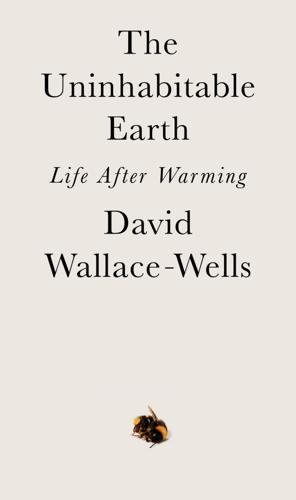
The Uninhabitable Earth: Life After Warming
by
David Wallace-Wells
Published 19 Feb 2019
From that perspective, the only threat to technology must come from technology, which is perhaps why so many in Silicon Valley seem less concerned with runaway climate change than they are with runaway artificial intelligence: the only fearsome power they are likely to take seriously is the one they themselves have unleashed. It is a strange evolutionary stage for a worldview midwifed into being, in the permanent counterculture of the Bay Area, by Stewart Brand’s nature-hacking bible, Whole Earth Catalog. And it may help explain why social media executives were so slow to process the threat that real-world politics posed to their platforms; and perhaps also why, as the science fiction writer Ted Chiang has suggested, Silicon Valley’s fear of future artificial-intelligence overlords sounds suspiciously like an unknowingly lacerating self-portrait, panic about a way of doing business embodied by the tech titans themselves: Consider: Who pursues their goals with monomaniacal focus, oblivious to the possibility of negative consequences?

The Cultural Logic of Computation
by
David Golumbia
Published 31 Mar 2009
Mind: A Quarterly Review of Psychology and Philosophy 59, Number 236 (October), 433–460. Turkle, Sherry. 1984. The Second Self: Computers and the Human Spirit. New York: Simon & Schuster. ———. 1995. Life on the Screen: Identity in the Age of the Internet. New York: Simon & Schuster. Turner, Fred. 2006. From Counterculture to Cyberculture: Stewart Brand, the Whole Earth Network, and the Rise of Digital Utopianism. Chicago: University of Chicago Press. Ullman, Ellen. 1997. Close to the Machine: Technophilia and Its Discontents. San Francisco: City Lights. Vaidhyanathan, Siva. 2003. Copyrights and Copywrongs: The Rise of Intellectual Property and How It Threatens Creativity.
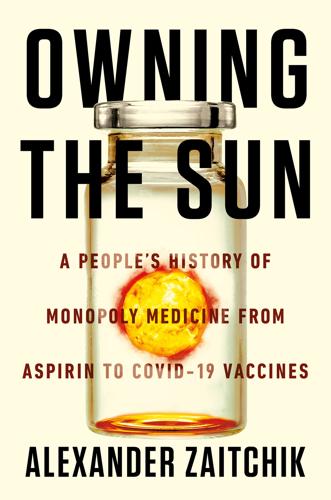
Owning the Sun
by
Alexander Zaitchik
Published 7 Jan 2022
No longer interested in how patents retarded innovation and plugged up competition, he penned an influential book, The Economics of Regulation, credited with laying the basis for the undoing of his party’s regulatory legacy, beginning with the Aeronautics Board established by Truman. 35.An understanding of this history, together with the influence of psychedelics and the counterculture, contributed to the open science ethos of the young Silicon Valley. 36.This shift was embodied in Silicon Valley hype men like Stewart Brand, publisher of the Whole Earth Catalog, who traded in his back-to-the-land philosophy for a spastic digital utopianism. 37.As of this writing, the NIH website defines the CRADA program as “an exciting opportunity for NIH investigators to join with their colleagues from industry and academia in the joint pursuit of common research goals.

A New History of the Future in 100 Objects: A Fiction
by
Adrian Hon
Published 5 Oct 2020
AUTHOR’S NOTE A History of the Future in 100 Objects was originally announced in 2011 as part of a Kickstarter crowdfunding project and published in 2013 by Skyscraper Publications. This new edition, substantially updated with new and revised chapters, came about thanks to the recommendation of Gideon Lichfield, editor in chief of the MIT Technology Review, and in no small part due to Stewart Brand, who brought the book to a much wider audience by inviting me to speak to the Long Now Foundation in San Francisco. Books about the future should come with an expiration date. I’ve yet to meet a writer who doesn’t fear their predictions will be proven wrong the instant they’re committed to print.
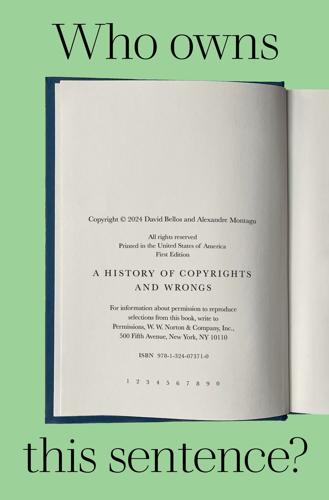
Who Owns This Sentence?: A History of Copyrights and Wrongs
by
David Bellos
and
Alexandre Montagu
Published 23 Jan 2024
Africa, Pretoria, Pretoria University Law Press, 2010. 30Daniel Defoe, Review, issue 130 (February 4, 1710), in Daniel Defoe, Works, London, Pickering and Chatto, Vol. 6 (2008), p. 649. 31Addison, writing in The Tatler, issue 101, December 1, 1709, quoted in Mark Rose, Authors and Owners: The Invention of Copyright, Cambridge MA, Harvard University Press, 1993, p. 41. CHAPTER 7 A SHORT HISTORY OF GENIUS 32Boileau, Art poétique (1669–74), lines 3–5. 33Credited by Wikipedia to Stewart Brand, speaking at a conference of computer hackers in 1984. https://en.wikipedia.org/wiki/Information_wants_to_be_free 34Ecclesiastes 1:9, given in the King James Version of 1611, as The thing that hath been, it is that which shall be; and that which is done is that which shall be done: and there is no new thing under the sun. 35Ann Jefferson, Genius in France: An Idea and Its Uses, Princeton, Princeton University Press, 2015, pp. 2–3. 36Edward Young, Über den Geist der Originalwerke, Leipzig, Beygang, 1787. 37Son caractère se répand sur tout ce qu’il touche; & ses lumières s’élançant au-delà du passé & du présent, éclairent l’avenir: il devance son siècle qui ne peut que le suivre.

Not the End of the World
by
Hannah Ritchie
Published 9 Jan 2024
Here we’re focusing on mammals, so wild birds or poultry aren’t included. But for birds, the story is the same: we have twice as much chicken biomass as wild birds. Humans make up a tiny fraction of all life on Earth: just 0.01% of it.ii But we have been the ones that have reshaped it beyond recognition. As the environmentalist, Stewart Brand, put it: ‘We are as gods, we might as well get good at it.’ Where we are today How many species do we share our planet with? It’s such a fundamental question for understanding the world around us, but it’s one that continues to escape the world’s taxonomists. The ecologist Robert May summed it up nicely in a paper published in the journal Science: If some alien version of the Starship Enterprise visited Earth, what might be the visitors’ first question?

The Stack: On Software and Sovereignty
by
Benjamin H. Bratton
Published 19 Feb 2016
The promise is that with Apple's new colorful day, 1984 (the year) will not be like 1984, the Orwellian dystopia. If the reader is unfamiliar with the advertisement, its Wikipedia page will explain its significance: http://en.wikipedia.org/wiki/1984_%28advertisement%29. 58. See Fred Turner, From Counterculture to Cyberculture: Stewart Brand, the Whole Earth Network, and the Rise of Digital Utopianism (Chicago: University of Chicago Press, 2006). For an example of Limbaugh's Apple love see http://www.rushlimbaugh.com/search/?query=apple&go.x=-299&go.y=-365&go=go. For a unusual and interesting take on Jobs and Wozniak's early relationship, see the Steve & Steve comic, http://www.steve-and-steve.com/. 59.
…
Gilles Deleuze and Félix Guattari, A Thousand Plateaus: Capitalism and Schizophrenia (Minneapolis: University of Minnesota Press, 1980). 23. The overlapping territories between early computer culture and the counterculture imagined the potential in global cybernetics to provide various dissolutions of the self into recursive networks. Fred Turner, From Counterculture to Cyberculture: Stewart Brand, the Whole Earth Network, and the Rise of Digital Utopianism (Chicago: University of Chicago Press, 2006). 24. Bruno Latour, “The Tarde Durkheim Debate,” http://www.bruno-latour.fr/node/354. 25. Jon Cohen, “The Patient of the Future,” MIT Technology Review, February 21, 2012, http://www.technologyreview.com/featuredstory/426968/the-patient-of-the-future/. 26.
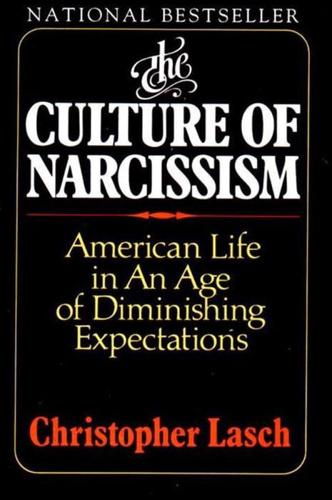
The Culture of Narcissism: American Life in an Age of Diminishing Expectations
by
Christopher Lasch
Published 1 Jan 1978
Those who dig bomb shelters hope to survive by surrounding themselves with the latest products of modern technology. Commupards in the country adhere to an opposite plan: to free themselves from dependence on technology and thus to outlive its destruction or collapse. A visitor to a commune in North Carolina writes: Everyone seems to share this sense of imminent doomsday." Stewart Brand, editor of the Whole Earth Catalogue, reports " s one of our fastest ' sales of the Survival Book are booming; it moving items. Both strategies reflect the growing despair of that " " derlies changing society, even of understanding it, which also un the cult of expanded consciousness, health, and personal " " growth so prevalent today.
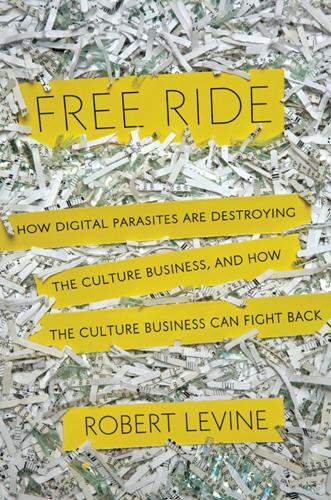
Free Ride
by
Robert Levine
Published 25 Oct 2011
But these companies depend on a ready supply of content that consumers want, and the lack of a functioning market online has already endangered this. Like TV, the Internet is only as good as what’s on. The one thing everyone can tell you about the Internet is that “information wants to be free.” This memorable phrase, coined at a 1984 hacker convention by the influential technology thinker Stewart Brand, evolved into a media business mantra that shaped the online world as we know it. This is why newspapers gave away Web content, why Hulu doesn’t charge users, and why music fans expect albums to be free for the taking. Unfortunately, we’ve forgotten the rest of Brand’s quotation: On the one hand information wants to be expensive, because it’s so valuable.

The Human Age: The World Shaped by Us
by
Diane Ackerman
Published 9 Sep 2014
It’s as if Gurdon and Yamanaka had found a way to reset the body’s clock to early development, enabling it to mint wild-card cells that haven’t chosen their career yet—without using the fetal stem cells that cause so much controversy. Space may be only one of the final frontiers. The other is surely the universe of human imagination and creative prowess in genetics. “We are as gods and might as well get good at it,” Stewart Brand began his 1968 classic, The Whole Earth Catalog, which helped to inspire the back-to-the-land movement. His 2009 book, Whole Earth Discipline, begins more worriedly: “We are as gods and have to get good at it.” Among the rarest of the rare, only several northern white rhinoceroses still exist in all the world.
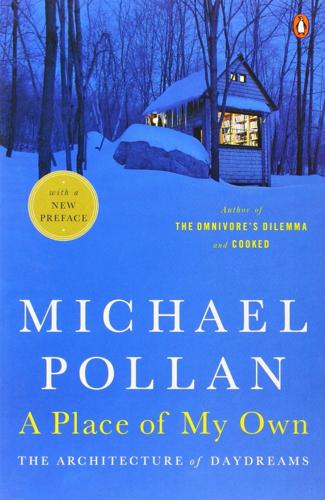
A Place of My Own: The Architecture of Daydreams
by
Michael Pollan
Published 15 Jan 1997
Modernists often designed their interiors not so much for particular individuals as for Man; they regarded the addition of clients’ stuff as a subtraction from a creation they thought of as wholly their own. This is one legacy of modernism that we have yet to overcome; our stuff, and in turn our selves, still very often have trouble gaining a comfortable foothold in a modern interior. Even now most of them seem designed to look their best uninhabited. Stewart Brand, the author of a recent book on preservation called How Buildings Learn, tells of asking one architect what he learned from revisiting his buildings. “Oh, you never go back,” the architect said, surprised at the question. “It’s too discouraging.” For many contemporary architects, time is the enemy of their art.
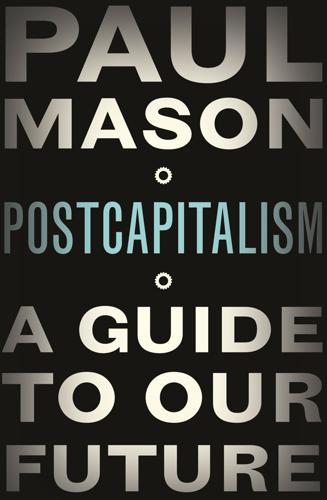
Postcapitalism: A Guide to Our Future
by
Paul Mason
Published 29 Jul 2015
Everybody else in the carriage fits into a demographic from the twentieth century: the elderly middle-class couple in their hats and tweeds; the stubbly manual worker reading his newspaper; the guy in the suit typing on his laptop, too busy for headphones, but who’s taken the time to polish his shoes (i.e. me). The first group consists of what sociologists call ‘networked individuals’, adept at drawing down knowledge from a relatively open and global system. They behave in a networked way – from work to consumption to relationships and culture. Thirty years on from Stewart Brand’s famous claim that ‘information wants to be free’, they instinctively believe that under normal circumstances it should be free. They will pay for their drugs at a dance club but still find it an imposition to pay for downloaded music. This group is already so large and well defined that in some cities – London, Tokyo, Sydney – it is the twentieth-century types that are the minority: still consulting analogue maps instead of GPS, still confused by the coffee options available at Starbucks, appalled and fascinated by the mercurial lifestyles that the other group sees as normal.
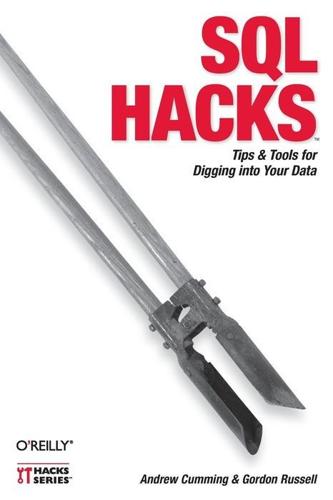
SQL Hacks
by
Andrew Cumming
and
Gordon Russell
Published 28 Nov 2006
Under normal circumstances, no one ever needs to look at the history table; but it's there in case an investigation is one day required. It also serves as a deterrent: in itself, it can't prevent dishonest alteration of the data, but when users know that their every move is being recorded, they will be less tempted to cheat. Chapter 12. Wider Access "Information wants to be free." So said Stewart Brand at the first Hackers Conference in 1984. If you take a few precautions, you can share your data with the world by giving SQL access to any Internet user. Both of the authors of this book have been allowing public access to their SQL machines for years, with few problems. Generally we find that a hundred local, "trusted" users cause more trouble than hundreds of thousands of external users.
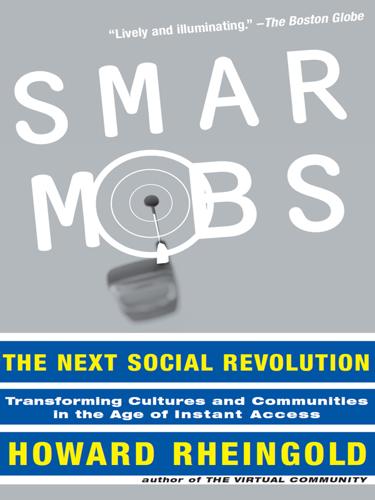
Smart Mobs: The Next Social Revolution
by
Howard Rheingold
Published 24 Dec 2011
Barnes, “For Cellphone Holdouts, Worry Closes the Sale,” New York Times, 19 September 2001, C6. 76. Simon Romero, “The Simple BlackBerry Allowed Contact When Phones Failed,” New York Times, 20 September 2001, <http://www.nytimes.com/2001/09/20/technology/circuits/20BERR.html> (28 January 2002). 77. Stewart Brand, “Founding Father: Interview with Paul Baran,” Wired 9.03, March 2001, <http://www.wired.com/wired/archive/9.03/baran.html> (13 May 2001). 78. Ling and Yttri, “Hyper-Coordination via Mobile Phones in Norway.” 79. Mark Aakhus and James Katz, eds., Perpetual Contact: Mobile Communication, Private Talk and Public Performance (Cambridge: Cambridge University Press, 2002). 80.

Zucked: Waking Up to the Facebook Catastrophe
by
Roger McNamee
Published 1 Jan 2019
No new whistle-blowers had emerged, and no one inside the company leaked any data to support the investigations. But the pressure on Facebook was about to intensify. 10 Cambridge Analytica Changes Everything Once a new technology rolls over you, if you’re not part of the steamroller, you’re part of the road. —STEWART BRAND March 2018 brought almost daily revelations about unintended damage from social media. Science magazine published a study conducted by professors at MIT of every controversial story in English on Twitter. It revealed that disinformation and fake news are shared 70 percent more often than factual stories and spread roughly six times faster.

Freedom
by
Daniel Suarez
Published 17 Dec 2009
The research and innovations of the following groups and institutions also aided greatly in the creation of this book: the National Renewable Energy Laboratory, Sandia National Laboratories, California Institute of Technology, the people and State of Iowa, and the Ames Research Center. Thanks also to Stewart Brand and the entire Long Now Foundation for promoting long-term thinking in our institutions and culture. Thanks to Dan G. and Don T. for giving me an interesting forum for my crazy ideas. Thanks as well to Adam Winston for his much-appreciated insights on early drafts of this book. Also, sincere thanks to my wonderful literary agent, Bridget Wagner, at Sagalyn Literary Agency, and also to my editor at Dutton, the saintly and talented Ben Sevier.

Superminds: The Surprising Power of People and Computers Thinking Together
by
Thomas W. Malone
Published 14 May 2018
Maybe we will just have to accept that it’s very hard to detect the biggest breakthrough ideas in their early stages. But perhaps there’s a way. I suspect that some people are much better than others at recognizing these nascent breakthroughs. For instance, in my consulting work with Peter Schwartz and Stewart Brand, cofounders of the Global Business Network consulting firm, I have come to think of them as prototypical examples of people with this knack for recognizing good ideas long before most others do. And I think many of the best venture capitalists, like John Doerr (with whom I worked when we were in college together), have this ability, too.

Custodians of the Internet: Platforms, Content Moderation, and the Hidden Decisions That Shape Social Media
by
Tarleton Gillespie
Published 25 Jun 2018
Journal on Telecommunications and High-Tech Law 13 (2): 203–18. ———. 2016. “As the Pirates Become CEOs: The Closing of the Open Internet.” Daedalus 145 (1): 65–78. TURKLE, SHERRY. 1997. Life on the Screen: Identity in the Age of the Internet. New York: Simon and Schuster. TURNER, FRED. 2006. From Counterculture to Cyberculture: Stewart Brand, the Whole Earth Network, and the Rise of Digital Utopianism. Chicago: University of Chicago Press. ———. 2009. “Burning Man at Google: A Cultural Infrastructure for New Media Production.” New Media and Society 11 (1–2): 73–94. TUSHNET, REBECCA. 2008. “Power without Responsibility: Intermediaries and the First Amendment.”
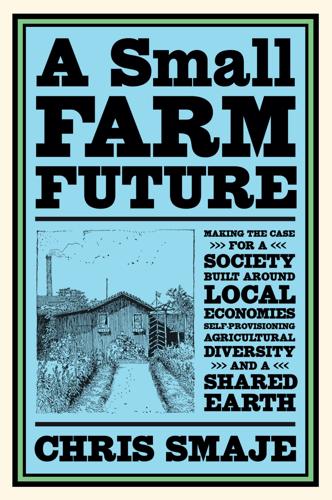
A Small Farm Future: Making the Case for a Society Built Around Local Economies, Self-Provisioning, Agricultural Diversity and a Shared Earth
by
Chris Smaje
Published 14 Aug 2020
The point I want to emphasise now is that the ‘escape from Malthus’ narrative coincides with a conventional view of economic development as a benign global force that’s available to all the world’s people if they follow the industrial path out of farming and into urbanism. Development isn’t seen as something that concentrates resources to the benefit of some places or people at the expense of others, and that may not be generalisable to the global poor. In that sense, it’s a depoliticised – perhaps Malthusian – narrative. Take these excerpts from Stewart Brand’s book, Whole Earth Discipline: Life in your village is dull, back-breaking, impoverished, restricted, exposed, dangerous, and static. Brigands get you, an accident gets you, disease gets you, and there’s no help nearby. You work like hell; then the weather changes, and you don’t have crops to eat or sell.… In the city, life is exciting, work is less grueling; you’re far better paid; you’re free to move around and change jobs; you have some privacy; you’re less vulnerable; and you have upward mobility.

You've Been Played: How Corporations, Governments, and Schools Use Games to Control Us All
by
Adrian Hon
Published 14 Sep 2022
The belief that games aren’t just good for their players but good for everyone took hold during the wider techno-optimism prevailing in the late 1990s and early 2000s. While the modern conception of technology broadly, and Silicon Valley specifically, being a positive force in the world dates back to Stewart Brand’s 1968 Whole Earth Catalog, it was only later that most people believed personal computers and the internet would genuinely change the world for the better. The One Laptop per Child (OLPC) initiative, born in 2005, aimed to disrupt education “for all kids—especially those in developing nations” by means of a one-hundred-dollar laptop.24 A few years later, antiregime protests in Iran were dubbed as the “Twitter Revolution” in the press, and academics would credit Facebook for mobilising activists and coordinating protests during the Arab Spring uprisings.25 The internet and social media seemed like unmitigated goods, with any downsides so minor as to be barely worth consideration.
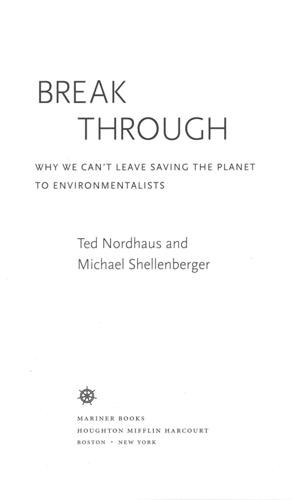
Break Through: Why We Can't Leave Saving the Planet to Environmentalists
by
Michael Shellenberger
and
Ted Nordhaus
Published 10 Mar 2009
Geoffrey Lean, “No Thanks, More a Slap in the Face,” Independent, July 31, 2005. [back] 33. T. R. Reid, The United States of Europe (New York: Penguin, 2004), 5156; Tony Judt, Postwar (New York: Penguin, 2005), 153–59; Timothy Garten Ash, Free World (New York: Random House, 2004), 30–34. [back] 34. Stewart Brand, quoted in John Tierney, “An Early Environmentalist Embraces ‘New Heresies,’” New York Times, February 27, 2007. [back] Bibliography Ab’Sáber, Aziz. “Problemas da Amazônia brasileira.” studos Avançados 19, no. 53 (2005). Adams, Michael. American Backlash. New York: Penguin, 2005. Adler, Jonathan H.

Designing Social Interfaces
by
Christian Crumlish
and
Erin Malone
Published 30 Sep 2009
“The Epic Saga of The Well: The World’s Most Influential Online Community (And It’s Not AOL).” Wired, 5.05, http://www.wired.com/wired/archive/5.05/ff_well_pr.html. Download at WoweBook.Com 4 Chapter 1: Mommy, What’s a Social User Experience Pattern? The Well The Well started in 1985 on a VAX system and a series of modems. Conceived by Stewart Brand and Larry Brilliant, Brand had a simple idea to “take a group of interesting people, give them the means to stay in continuous communication with one another, stand back, and see what happens.” He also had the idea that community created online through written dialog could be strengthened through offline, face-to-face meetings, and he set out to combine the two quite successfully.

Tools for Thought: The History and Future of Mind-Expanding Technology
by
Howard Rheingold
Published 14 May 2000
The audience, in the same room where the first "computer faire" for microcomputer homebrew hobbyists was held some years later, witnessed a kind of media presentation that nobody in the computer milieu had ever experienced before. State-of-the-art audiovisual equipment was gathered from around the world at the behest of a presentation team that included Stewart Brand, whose experience in mind-altering multimedia shows was derived from his production of get-togethers a few years before this, held not too far from this same auditorium, known as "Acid Tests." Doug's control panel and screen were linked to the host computer and the rest of the team back at SRI via a temporary microwave antenna they had set up in the hills above Menlo Park.
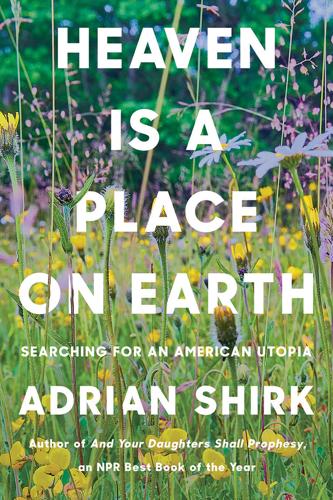
Heaven Is a Place on Earth: Searching for an American Utopia
by
Adrian Shirk
Published 15 Mar 2022
Summertown, TN: Book Publishing Company, 2002. Gornick, Vivian. The Romance of American Communism. New York: Basic Books, 1978. Halberstadt, Alex. “Out of the Woods.” New York Times Magazine, August 6, 2015. www.nytimes.com/2015/08/09/magazine/out-of-the-woods.html. Turner, Fred. From Counterculture to Cyberculture: Stewart Brand, the Whole Earth Network, and the Rise of Digital Utopianism. Chicago: University of Chicago Press, 2006. The Flesh Failures Addison, Virgil. 2019. “Anarchist Communes in the 1960s.” Gardner, Joyce. Cold Mountain Farm: An Attempt at Community. Self-published, 1970. Fairfield, Richard. The Modern Utopian: Alternative Communities Then and Now.
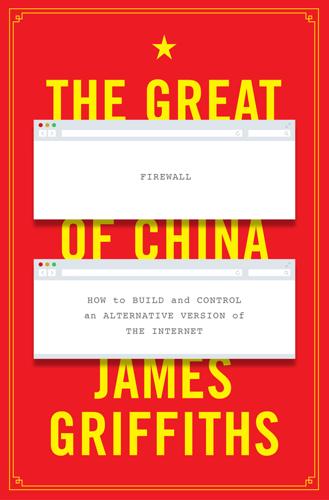
The Great Firewall of China
by
James Griffiths;
Published 15 Jan 2018
The pair separated at graduation, when Barlow went to study comparative religion at Wesleyan University on the US east coast, but they remained close, and Barlow contributed lyrics to dozens of Grateful Dead tracks.20 After university, Barlow might have been expected to join the Dead in San Francisco, or continue to Harvard Law, where he’d been offered a place, but instead he returned to Wyoming and took over his parents’ cattle ranch. Barlow was thoroughly settled into farm life by 1987, when he signed up to an early online bulletin board founded by fellow Dead Head and influential internet thinker Stewart Brand: the Whole Earth ‘Lectronic Link (WELL).21 What Barlow saw in WELL, and in the internet as a whole, was a brand-new form of community, separate from the rest of the world and unspoiled by its greed and neuroses. “Digital technology is … erasing the legal jurisdictions of the physical world and replacing them with the unbounded and perhaps permanently lawless waves of cyberspace,” he wrote in Wired, going on to endorse a concept he credited to Brand that would become the battle cry for their fellow techno-libertarians: “information wants to be free”.22 Just as he evangelised the freedom enabled by the internet, Barlow attacked the forces that sought to rein it in, like the US National Security Agency, which, he presciently argued, “meticulously observes almost every activity undertaken and continuously prevents most who inhabit its domain from drawing any blinds against such observation”.23 In 1990, Barlow recruited Mitch Kapor and John Gilmore, two tech moguls who got rich in the first Silicon Valley boom, and founded the Electronic Frontier Foundation (EFF),24 an organisation dedicated to “defending civil liberties in the digital world”.25 The three were soon joined by a host of Valley luminaries, and major corporate players, including Microsoft and HP, became donors.
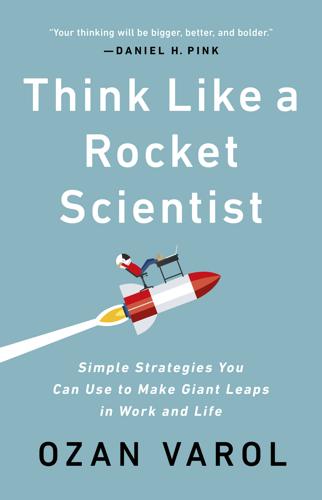
Think Like a Rocket Scientist: Simple Strategies You Can Use to Make Giant Leaps in Work and Life
by
Ozan Varol
Published 13 Apr 2020
When our focus shifts from proving ourselves right to proving ourselves wrong, we seek different inputs, we combat deeply entrenched biases, and we open ourselves up to competing facts and arguments. “I don’t like that man,” Abraham Lincoln is said to have observed. “I must get to know him better.” The same approach should apply to opposing arguments. Regularly ask yourself—as Stewart Brand, the founder of the Whole Earth Catalog does—How many things am I dead wrong about?42 Poke holes in your most cherished arguments, and look for disconfirming facts (What fact would change my mind?). Follow the “golden rule” of Darwin who, upon finding a fact that contradicted one of his beliefs, would write it down right away.43 When you kill off your bad or outdated ideas, Darwin knew, you leave breathing room for the good ones to surface.
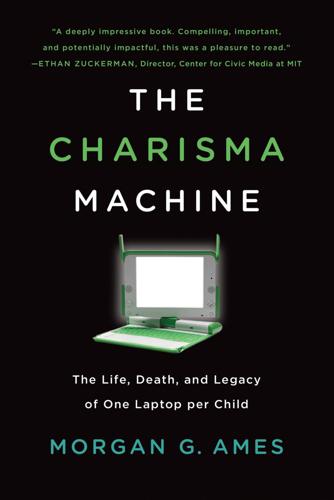
The Charisma Machine: The Life, Death, and Legacy of One Laptop Per Child
by
Morgan G. Ames
Published 19 Nov 2019
Signs: Journal of Women in Culture and Society 16, no. 1 (Autumn 1990): 128–157. https://doi.org/10.1086/494648. Turner, Fred. The Democratic Surround: Multimedia and American Liberalism from World War II to the Psychedelic Sixties. Chicago: University of Chicago Press, 2013. ———. From Counterculture to Cyberculture: Stewart Brand, the Whole Earth Network, and the Rise of Digital Utopianism. Chicago: University of Chicago Press, 2006. ———. “Where the Counterculture Met the New Economy: The WELL and the Origins of Virtual Community.” Technology and Culture 46, no. 3 (2005): 485–512. https://doi.org/10.1353/tech.2005.0154. ———.
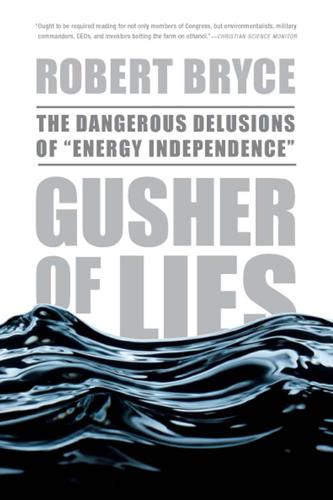
Gusher of Lies: The Dangerous Delusions of Energy Independence
by
Robert Bryce
Published 16 Mar 2011
Patrick Moore, a founder of Greenpeace, has become one of the most ardent backers of the nuclear option. In 2006, Moore wrote an opinion piece for the Washington Post saying that nuclear energy may be the “energy source that can save our planet.” Although Moore now does public relations work for the nuclear power industry, he pointed out that many other ardent environmentalists, including Stewart Brand, one of the founders of the Whole Earth Catalog, and James Lovelock, the British scientist who came up with the Gaia theory about the resilience of the planet Earth, are advocates of nuclear power. In mid-2006, Moore told me that when it comes to producing large increments of new, low-carbon electricity, there “aren’t really any other choices.
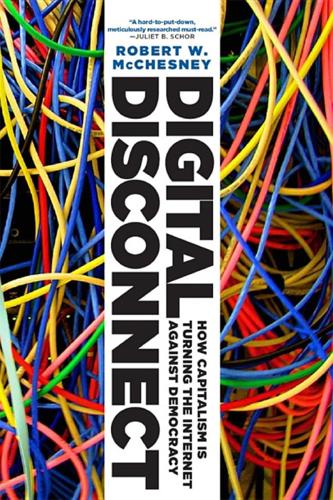
Digital Disconnect: How Capitalism Is Turning the Internet Against Democracy
by
Robert W. McChesney
Published 5 Mar 2013
There was also an element of arrogance among hackers, who tended to believe that no matter what the corporate guys cooked up, they would be able to circumvent it. The revolutionary nature of the technology could trump the monopolizing force of the market. This might help explain the 1990s alliance of sorts forged between some prominent counterculture types who embraced the Internet, like Stewart Brand, John Perry Barlow, and Esther Dyson, with free-market ideologues and techno-enthusiasts, like George Gilder and Newt Gingrich.41 Third, even in the context of a corporation-dominated polity, the political culture of the 1990s was close to an all-time high for procapitalist sentiment and close to an all-time low for notions of public service or regulation.

Dreaming in Code: Two Dozen Programmers, Three Years, 4,732 Bugs, and One Quest for Transcendent Software
by
Scott Rosenberg
Published 2 Jan 2006
In the spring of 2002, around the time Mitch Kapor and the early members of the Chandler team were beginning to zero in on their new software’s architecture, Kapor made the tech news headlines for something entirely different: He entered into a Long Bet about the prospects for artificial intelligence. Long Bets were a project of the Long Now Foundation, a nonprofit organization started by Whole Earth Catalog creator Stewart Brand and a group of digital-age notables as a way to spur discussion and creative ideas about long-term issues and problems. As the project’s first big-splash Long Bet, Kapor wagered $20,000 (all winnings earmarked for worthy nonprofit institutions) that by 2029 no computer or “machine intelligence” will have passed the Turing Test.

The New Digital Age: Transforming Nations, Businesses, and Our Lives
by
Eric Schmidt
and
Jared Cohen
Published 22 Apr 2013
There is an underside to SEO, however—“black-hat SEO”—where efforts to manipulate rankings include less legal or fair practices like sabotaging other content (by linking it to red-flag sites like child pornography), adding hidden text or cloaking (tricking the spiders so that they see one version of the site while the end user sees another). 2 This dictum is commonly attributed to Stewart Brand, the founder and editor of the Whole Earth Catalog, recorded at the first Hackers’ Conference, in 1984. 3 While in the technical community the term “hacker” means a person who develops something quickly and with an air of spontaneity, we use it here in its colloquial meaning to imply unauthorized entry into systems. 4 Among the tweets the Pakistani IT consultant Sohaib Athar sent the night of the bin Laden raid: “Helicopter hovering above Abbottabad at 1AM (is a rare event).” 5 “Predictive analytics” is a young field of study at the intersection of statistics, data-mining and computer modeling.
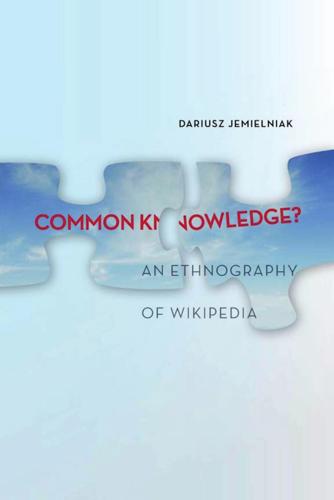
Common Knowledge?: An Ethnography of Wikipedia
by
Dariusz Jemielniak
Published 13 May 2014
Turek, P., Wierzbicki, A., Nielek, R., Hupa, A., & Datta, A. (2010). Learning about the quality of teamwork from wikiteams. In Proceedings of the 2010 IEEE Second International Conference on Social Computing (pp. 17–24). Washington, DC: IEEE Computer Society. Turner, F. (2006). From counterculture to cyberculture: Stewart Brand, the Whole Earth Network, and the rise of digital utopianism. Chicago: University of Chicago Press. User talk:Jimbo Wales/Archive. (2010, May 9). Wikimedia Commons. Retrieved August 22, 2013, from http://commons.wikimedia.org/wiki/User_talk:Jimbo_Wales/Archive 2 7 6 R e f e r e n c e s User talk:Jimbo Wales/Archive/2010/5. (2010, June 5).
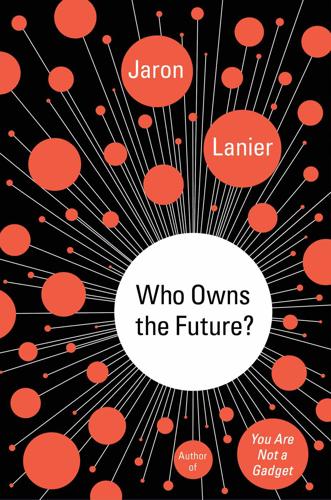
Who Owns the Future?
by
Jaron Lanier
Published 6 May 2013
In the 1980s the Silicon Valley elite were often found at a successor institution called simply “the Forum.” The Global Business Network was a key, highly influential institution in the history of Silicon Valley. It has advised almost all the companies, and almost everyone who was anyone had something to do with it. Stewart Brand, who coined the phrases “personal computer” and “information wants to be free,” was one of the founders. Now Stewart is a genuinely no-nonsense kind of guy. So is Peter Schwartz, who was the driving force behind GBN and wrote The Art of the Long View. And yet the ambience of the New Age was so thick that it helped define GBN.

What to Think About Machines That Think: Today's Leading Thinkers on the Age of Machine Intelligence
by
John Brockman
Published 5 Oct 2015
For all the imaginary deities we’ve petitioned throughout history who have failed to protect us—from nature, from one another, from ourselves—we’re finally ready to call on our own enhanced, augmented minds instead. It’s a sign of social maturity that we take responsibility for ourselves. We are as gods, Stewart Brand famously said, and we may as well get good at it. We’re trying. We could fail. WELCOME TO YOUR TRANSHUMAN SELF MARCELO GLEISER Appleton Professor of Natural Philosophy, professor of physics and astronomy, Dartmouth College; author, The Island of Knowledge Consider this: You’re late for work and, in the rush, forget your cell phone.

Sorting Things Out: Classification and Its Consequences
by
Geoffrey C. Bowker
and
Susan Leigh Star
Published 25 Aug 2000
Classification systems always have other categories, to which actants (entities or people) who remain effectively invisible to the scheme are assigned. A detailed analysis of these others throws into relief the organizational structure of any scheme (Derrida 1998). Residual categories have their own texture that operates like the silences in a symphony to pattern the visible categories and their boundaries. Stewart Brand’s (1994) wonderful book, How Buildings Learn, gives many examples of how buildings get designed as they are used as much as on the architect’s drawing board. Thus a house with a balcony and numerous curlicues around the roof will become a battened-down square fortress block under the influence of a generation of storms from the northeast.

The Facebook Effect
by
David Kirkpatrick
Published 19 Nov 2010
A decade or so later, a few pioneers were beginning to spend time in such online communities. The first service on the Internet that captured substantial numbers of nontechnical users—long before the invention of the World Wide Web—was the Usenet. Begun in 1979, it enabled people to post messages to groups dedicated to specific topics. It functions to this day. In 1985, Stewart Brand, Larry Brilliant, and a couple of others launched an electronic bulletin board called The Whole Earth ’Lectronic Link, or Well, in San Francisco. In 1987, Howard Rheingold, a big user of the Well, published an essay in which he coined the term virtual community to describe this new experience.

Blockchain Revolution: How the Technology Behind Bitcoin Is Changing Money, Business, and the World
by
Don Tapscott
and
Alex Tapscott
Published 9 May 2016
In doing so, IBM saved $900 million a year developing its own proprietary systems and created a platform on which it built a multibillion-dollar software and services business. Experience shows that long-term sustainability of volunteer communities can be challenging. In fact, some of the more successful communities have found ways to compensate members for their hard work. As Steve Wozniak said to Stewart Brand, “Information should be free, but your time should not.”19 In the case of Linux, most of the participants get paid by companies like IBM or Google to ensure that Linux meets their strategic needs. Linux is still an example of social production. Benkler told us, “The fact that some developers are paid by third parties to participate does not change the governance model of Linux, or the fact that it is socially developed.”

Digital Apollo: Human and Machine in Spaceflight
by
David A. Mindell
Published 3 Apr 2008
.: MIT Instrumentation Laboratory, 1965. Turkle, Sherry. Life on the Screen: Identity in the Age of the Internet. New York: Simon & Schuster, 1995. Turkle, Sherry. The Second Self: Computers and the Human Spirit, 20th anniversary ed. Cambridge, Mass.: MIT Press, 2005. Turner, Fred. From Counterculture to Cyberculture: Stewart Brand, the Whole Earth Network, and the Rise of Digital Utopianism. Chicago: University of Chicago Press, 2006. Vincenti, Walter G. What Engineers Know and How They Know It: Analytical Studies from Aeronautical History, Johns Hopkins Studies in the History of Technology. Baltimore: Johns Hopkins University Press, 1990.

The Future of Ideas: The Fate of the Commons in a Connected World
by
Lawrence Lessig
Published 14 Jul 2001
Huber, Michael K. Kellogg, and John Thorne, Federal Telecommunications Law, 2nd ed. (Gaithersburg, Md.: Aspen Law & Business, 1999), 17. 10 Ibid. 11 Ibid. 12 Ibid. 13 Mueller, 162. 14 Interview with Paul Baran in Stanford, California, November 14, 2000. For other interviews of Baran, see Stewart Brand, “Founding Father,” Wired (March 2001), available at http://www.wired.com/wired/archive/9.03/baran_pr.html; interview by David Hochfelder with Paul Baran, electrical engineer, Newark, New Jersey (October 24, 1999), available at http://ieee.org/organizations/history_center/oral_histories/transcripts/ baran.html; interview by J.

Reality Is Broken: Why Games Make Us Better and How They Can Change the World
by
Jane McGonigal
Published 20 Jan 2011
But alongside the more than five hundred other superstructures that players created, they effectively prove a new reality: that problem solving at extreme scales can involve ordinary people; that all scales of human organization can combine and recombine in startling ways; that continuous reinvention is not only possible, it’s an evolutionary imperative for the next decade. WE RAN SUPERSTRUCT as a live forecasting experiment for six weeks. So what were the final results? After the game, our players inventoried and organized their efforts into a catalog of solutions called the Whole Superstructure Catalog (a play on Stewart Brand’s Whole Earth Catalog), which you can view online, at Superstruct. wikia.com. In addition to their catalog of 550 superstructures, our players created more than a thousand vivid first-person accounts of the superthreats, told in videos and photos, blogs and Twitter updates, Facebook messages and podcasts.
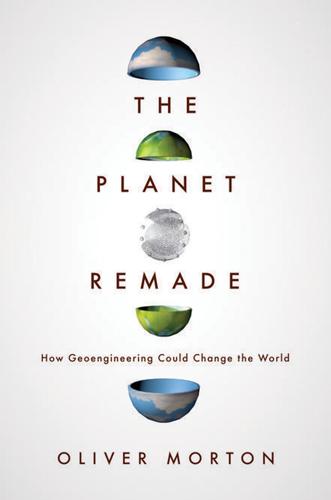
The Planet Remade: How Geoengineering Could Change the World
by
Oliver Morton
Published 26 Sep 2015
Nothing I write on earthsystem subjects will ever, I suspect, escape the influence of Jim Lovelock, for which I will remain always grateful; the same is true, when it comes to history, of Simon Schaffer. Further thanks go to Julian Allwood, Jim Anderson, Meinrat Andreae, Govindasamy Bala, Bidisha Bannerjee, Scott Barrett, Steve Barrett, Richard Betts, Linus Blomqvist, Olivier Boucher, Stewart Brand, Wally Broecker, Holly Buck, Rose Cairns, Ralph Cicerone, Olaf Corry, Steve Davis, Matthias Dörries, Simon Driscoll, George Dyson, Paul Edwards, Erle Ellis, Paul Falkowski, Chris Field, Piers Forster, David Fowler, Jean-Baptiste Fressoz, Alan Gadian, Jim Galloway, Stephen Gardiner, Arnulf Grübler, Patrick Halloran, Steve Hamburg, Jim Haywood, Tracy Hester, Clare Heyward, Thomas Homer-Dixon, Alf Hornborg, Jo House, Mike Hulme, Pete Irvine, Andrew Jarvis, Anna-Maria Jenkins Hubert, Andy Jones, Richard Klein, Ben Kravitz, Richard Lampitt, Lee Lane, Andrew Lockley, Sean Low, Adam Lowe, Simon Lewis, David MacKay, Doug MacMartin, Ashley Mercer, Pat Mooney, John Moore, Juan Moreno-Cruz, David Mitchell (neither of the more famous ones, though they are good too), David Morrison, David Morrow, Armand Neukermans, Simon Nicholson, John Nissen, Helena Paul, Arthur Petersen, Roger Pielke Jr, Ray Pierrehumbert, Rafe Pomerance, Julia Pongratz, Colin Prentice, Greg Rau, Jesse Reynolds, Kate Ricke, Andy Ridgwell, Johan Rockström, Danny Rosenfeld, Dan Sarewitz, Gavin Schmidt, Hauke Schmidt, Vivian Scott, Russell Seitz, Drew Shindell, Ian Simpson, Vaclav Smil, Joe Smith, Jordan Smith, Rachel Smolker, Karolina Sobecka, Andy Stirling, Bron Szerszynski, Michael Thompson, Simone Tilmes, David Titley, Kevin Trenberth, Slawek Tulaczyk, Paul Valdes, Naomi Vaughan, Jean-Pascal van Ypersele, Peter Wadhams, Gernot Wagner, Tom Wigley, Jennifer Wilcox, Lowell Wood, Rob Wood and Pete Worden.
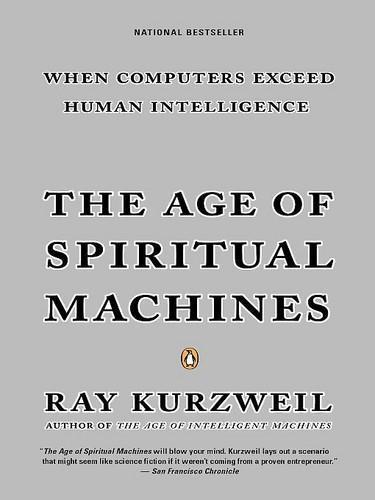
The Age of Spiritual Machines: When Computers Exceed Human Intelligence
by
Ray Kurzweil
Published 31 Dec 1998
Department of Energy: <http://www.llnl.gov/> NEC Begins Designing World’s Fastest Computer: <http://www.nb-pacifica.com/headline/necbeginsdesigningwo_1208.shtml> FUTURE VISIONS ACM 97 “The Next 50 Years” (Association for Computing Machinery): <http://research.microsoft.com/acm97/> The Extropy Site (a web site and on-line magazine covering a wide range of advanced and future technologies) <http://www.extropy.org> SETI Institute web site: <http://www.seti.org> WTA: The World Transhumanist Association: <http://www.transhumanism.com/> HISTORY OF COMPUTERS Advances of the 1960s: <http://www.inwap.com/reboot/alliance/1960s.txt> BYTE Magazine-December 1996/Cover Story/Progress and Pitfalls: <http://www.byte.com/art/96I2/sec6/art3.htm> History of Computing: IEEE Computer Society: <http://www.computer.org/50/> The Historical Collection, the Computer Museum History Center: <http://www.tcm.org/html/history/index.html> Intel Museum Home Page: What is Moore’s Law?: <http://www.pentium.com/intel/museum/25anniv/hof/moore.htm> SPACEWAR: Fanatic Life and Symbolic Death Among the Computer Bums, by Stewart Brand: <http://wwwbaumgart.com/rolling-stone/spacewar.html> Timeline of Events in Computer History, from the Virtual History Museum Group: <http://video.cs.vt.edu:90/cgi-bin/ShowMap> Chronology of Events in the History of Computers: <http://www3.islandnet.com/~kpolsson/comphist.htm> Unisys History Newsletter: <http//www.cc.gatech.edu/services/unisys-folklore/> INDUSTRIAL REVOLUTION AND LUDDITES/NEOLUDDITE MOVEMENT Anarcho-Primitivist, anticivilization, and neo-Luddite articles: <http://elaine.teleport.com/~jaheriot/anarprim.htm> What’s a Luddite?

Diet for a New America
by
John Robbins
Hilts, “Chemicals at Parents’ Job May Cause Child’s Tumor,” Washington Post, July 3, 1981. 149. Council on Environmental Quality, Chemical Hazards to Human Reproduction, Washington, DC (January 1981), II-3, 12. 150. “Politics of Poison,” KRON-TV, San Francisco, 1979. 151. J. Gofmann and A. Tamplin, quoted in Stewart Brand, “Human Harm to Human DNA,” CoEvolution Quarterly (Spring 1979): 11. Chapter Twelve. All Things Are Connected 1. Mary Bralove, “The Food Crisis: The Shortages May Pit the ‘Have Nots’ against the ‘Haves,’” Wall Street Journal, October 3, 1974, 20. 2. H. J. Maidenburg, “The Livestock Population Explosion,” New York Times, July 1, 1973, Finance section; Jane E.
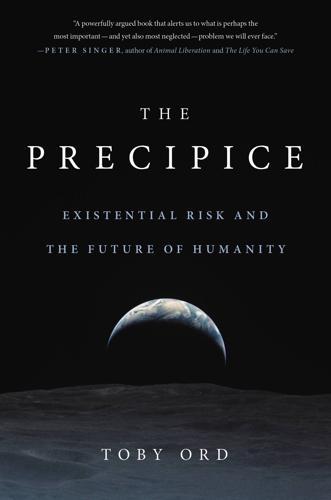
The Precipice: Existential Risk and the Future of Humanity
by
Toby Ord
Published 24 Mar 2020
Extinction is the undoing of the human enterprise.” 40 See, for example Cohen (2011), Scheffler (2009), Frick (2017). 41 Nick Bostrom (2013) expanded upon this idea: “We might also have custodial duties to preserve the inheritance of humanity passed on to us by our ancestors and convey it safely to our descendants. We do not want to be the failing link in the chain of generations, and we ought not to delete or abandon the great epic of human civilization that humankind has been working on for thousands of years, when it is clear that the narrative is far from having reached a natural terminus.” 42 Stewart Brand (2000) has spoken eloquently of this civilizational patience: “Ecological problems were thought unsolvable because they could not be solved in a year or two… It turns out that environmental problems are solvable. It’s just that it takes focused effort over a decade or three to move toward solutions, and the solutions sometimes take centuries.

Active Measures: The Secret History of Disinformation and Political Warfare
by
Thomas Rid
The Fifth Estate was a volunteer organization, with new headquarters established at 2000 P Street NW, just off Dupont Circle in Washington, D.C. The Fifth Estate grew out of late-1960s counterculture, and was especially inspired and modeled on the Whole Earth Catalog, then a cult publication. Produced in the San Francisco Bay Area by Stewart Brand, an iconic, technology-embracing hippie maven, the Whole Earth Catalog was an early techno-utopian vision of back-to-the-land living that embraced cybernetic feedback loops, community, wholeness, flattened hierarchies, and the motto “access to tools.” Brand’s catalog would become a prototypical social media platform (and later became the first actual social media platform when it was taken online, in 1984, as the Whole Earth ’Lectronic Link, or WELL).
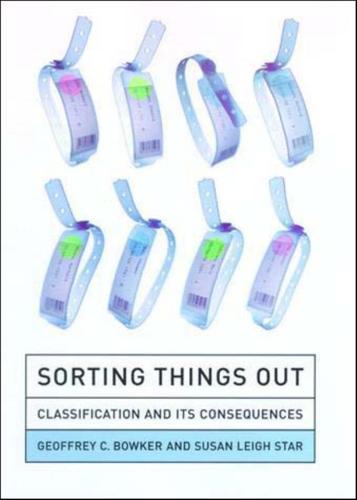
Sorting Things Out: Classification and Its Consequences (Inside Technology)
by
Geoffrey C. Bowker
Published 24 Aug 2000
Classification systems always have other categories, to which actants (entities or people) who remain effectively invisible to the scheme are assigned. A detailed analysis of these others throws into relief the organizational structure of any scheme (Derrida 1 998). Re sidual categories have their own texture that operates like the silences in a symphony to pattern the visible categories and their boundaries. • Stewart Brand' s ( 1 994) wonderful book, How Buildings Learn, gives many examples of how buildings get designed as they are used as much as on the architect's drawing board. Thus a house with a balcony and numerous curlicues around the roof will become a battened-down square fortress block under the influence of a generation of storms from the northeast.

If Mayors Ruled the World: Dysfunctional Nations, Rising Cities
by
Benjamin R. Barber
Published 5 Nov 2013
Jim Anderson and Kate Leonberger at Bloomberg Philanthropies; Wolfgang Schmidt, the foreign minister of Hamburg; and Mayor Wolfgang Schuster of Stuttgart have helped conceptualize a path forward toward a global mayors parliament. Peter Schwartz made possible a trip to Singapore of real value to my research and introduced me to Stewart Brand, the founder of Long Now Seminar, where I presented an early version of my research. Keith Reinhard has been a lively interlocutor on issues from branding and consumerism to cities and interdependence for many years and I continue to benefit from his wisdom. At Yale University Press, I have been very well served by my editor, William Frucht, and my long-term friend and agent, now an editor at the Press, Steve Wasserman—who was the editor many years ago of my Jihad vs.

Daemon
by
Daniel Suarez
Published 1 Dec 2006
THE END ACKNOWLEDGMENTS It’s been said that writing is a solitary profession, but I just don’t see it. On the long journey to get this book published, I’ve met countless people who gave both their time and effort to pass Daemon on to others. I would be remiss if I did not show my appreciation to the following folks: Rick Klau and the whole gang at Google for finding a needle in a haystack. Stewart Brand and Peter Schwartz of the Long Now Foundation for opening so many doors. Jeffrey Rayport for making key connections. Don Donzal and the Ethicalhacker.net team for checking the details. John Robb at Global Guerrillas for bringing serious folks to the table. Jim Rapoza at eWeek for being the first to note Daemon in print.

Evil Geniuses: The Unmaking of America: A Recent History
by
Kurt Andersen
Published 14 Sep 2020
Like broadcasters in the last century and most media companies today, they provide things to viewers and listeners and readers for free—but unlike other such companies, they’re allowed to disclaim all responsibility for what they publish and actually get most of what they publish for free themselves.*2 * * * — That is, for “free,” because somebody is always paying. “On the one hand,” the great countercultural and early-computer-world figure Stewart Brand said on a stage in 1984 at a Marin County computer conference he’d organized, information wants to be expensive, because it’s so valuable. The right information in the right place just changes your life. On the other hand, information wants to be free, because the cost of getting it out is getting lower and lower all the time.

Your Computer Is on Fire
by
Thomas S. Mullaney
,
Benjamin Peters
,
Mar Hicks
and
Kavita Philip
Published 9 Mar 2021
Judy O’Neill, “Interview with Paul Baran,” Charles Babbage Institute, OH 182 (February 5, 1999), Menlo Park, CA, accessed September 15, 2017, http://www.gtnoise.net/classes/cs7001/fall_2008/readings/baran-int.pdf. 29. Tara Abraham, Rebel Genius: Warren S. McCulloch’s Transdisciplinary Life in Science (Cambridge, MA: MIT Press, 2016). 30. Stewart Brand, “Founding Father,” Wired 9, no. 3 (1991), http://archive.wired.com/wired/archive/9.03/baran_pr.html. 31. Paul Baran, “On Distributed Communications: II. Digital Simulation of Hot-Potato Routingin a Broadband Distributed Communications Network,” RAND Publications, 1964, accessed September 15, 2017, https://www.rand.org/pubs/research_memoranda/RM3103.html. 32.

Ghost in the Wires: My Adventures as the World's Most Wanted Hacker
by
Kevin Mitnick
Published 14 Aug 2011
We were working fast to get the information off Shimmy’s machine. My endorphins were on major overload. After searching, archiving, and compressing, I needed a place to store the code for safekeeping. No problem: I already had root access to every server at the Whole Earth ’Lectronic Link, commonly known as “the Well.” Started by Stewart Brand and a partner, the Well had as its users a who’s who of the Internet, but the celebrity status of the site didn’t matter to me at all. My only concern was whether there was enough disk space and whether I could hide the files well enough that the system admins wouldn’t notice them. In fact, I had been spending lots of time on the site.
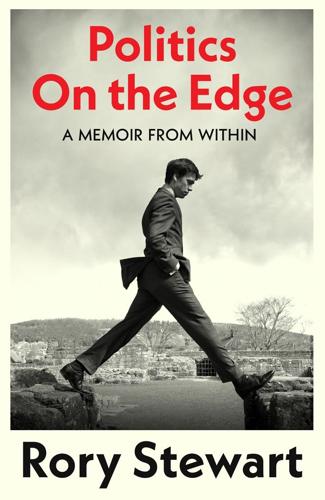
Politics on the Edge: The Instant #1 Sunday Times Bestseller From the Host of Hit Podcast the Rest Is Politics
by
Rory Stewart
Published 13 Sep 2023
Rory Stewart said he wouldn’t serve.’ Dominic Raab and Matt Hancock had chosen the same day to announce their leadership bids. But their announcements were buried. Lizzie began to hear from colleagues that they blamed me for breaking their momentum. The next morning, the Daily Mail ran the headline: ‘Rory Stewart brands Boris Johnson a LIAR in thinly veiled Pinocchio tweet.’ The Sun said that the leadership race had exploded into life. Matt Hancock’s attempts to introduce his policies on the morning round were derailed by questions as to whether he would serve under Boris. Since his run depended on being on the left of the party, and bringing in the One Nation vote, he found it difficult to say he would.
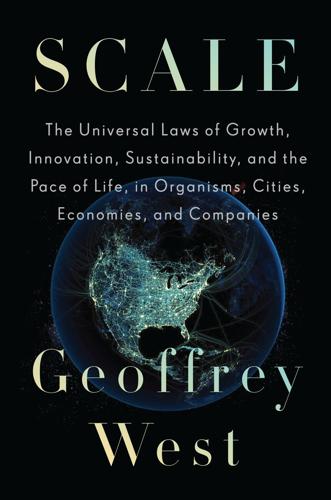
Scale: The Universal Laws of Growth, Innovation, Sustainability, and the Pace of Life in Organisms, Cities, Economies, and Companies
by
Geoffrey West
Published 15 May 2017
It was a startling revelation to see a photograph of one’s mother for the first time, the one that has given birth to all 7.3 billion of us, bathed in the glorious light of our grandparent, the sun (below left). At the time perhaps no one appreciated this more than the writer and futurist thinker Stewart Brand, who passionately felt that the image of the whole Earth from space would be a powerful symbol, evoking a sense of shared destiny among all people living on the planet. He relentlessly lobbied NASA to release the first images in 1967, which he then used on the cover of his highly influential Whole Earth Catalog, one of the great icons of the 1960s and ’70s.

Beautiful Architecture: Leading Thinkers Reveal the Hidden Beauty in Software Design
by
Diomidis Spinellis
and
Georgios Gousios
Published 30 Dec 2008
Components could be support beams or internal rooms in a building, individual instruments or melodies in a symphony, book chapters or characters in a story, CPUs and memory chips in a computer, layers in a communications stack or processors connected to a network, cooperating sequential processes, objects, collections of compile-time macros, or build-time scripts. Each discipline has its own sets of components and its own relationships among them. In wider use, the term “architecture” always means “unchanging deep structure.” —Stewart Brand, How Buildings Learn In the face of increasing complexity of systems and their interactions, both internally and with each other, an architecture comprising a set of structures provides the primary means for dealing with complexity in order to ensure that the resulting system has the required properties.

A Generation of Sociopaths: How the Baby Boomers Betrayed America
by
Bruce Cannon Gibney
Published 7 Mar 2017
In the 1960s and 1970s, parts of the movement cried wolf about the world’s ability to feed itself, the dangers of nuclear power, and resource scarcity generally. None of these arguments had much scientific credibility, and essentially all of them have proved wrong. (Whole Earth Catalog founder Stewart Brand, once a prominent antinuclear activist, has now reversed his stand; too little, too late.) The enviro–Chicken Littleism of the 1960s has been dredged up by warming deniers as evidence that scientists and environmentalists cannot be trusted. That is, of course, untrue. Real scientists can be trusted; Boomer ideologues of the 1970s and 2010s cannot.
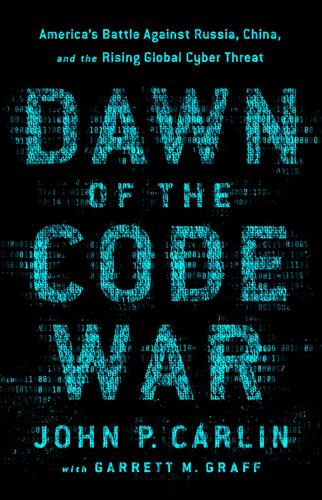
Dawn of the Code War: America's Battle Against Russia, China, and the Rising Global Cyber Threat
by
John P. Carlin
and
Garrett M. Graff
Published 15 Oct 2018
.* It was a movement that was deeply distrustful of governmental power, a reaction of an era that saw the exposure of J. Edgar Hoover’s domestic spying, Watergate, the Church Committee, and the passage of the 1974 Privacy Act to restrict government information gathering. Another key West Coast voice, Stewart Brand, of the Whole Earth Catalog, gave his colleagues a rallying cry: “Information wants to be free.” Those two revolutions blended together online in the 1980s and exploded in the 1990s as the World Wide Web began to transform the way Americans gathered information, shopped, traveled, and led their daily lives.
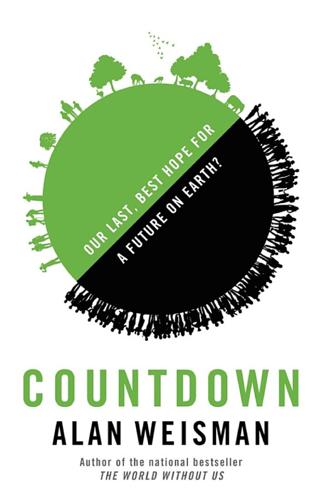
Countdown: Our Last, Best Hope for a Future on Earth?
by
Alan Weisman
Published 23 Sep 2013
More than a hundred fifty migratory and resident bird species are found here, as well as bobcat, red and gray fox, weasels, raccoons, mule deer, and mountain lions. A research center here archives fifty years of student projects; a habitat map of two tarantula species by one of Ehrlich’s undergrads, Stewart Brand, who would later publish The Whole Earth Catalog, is still used. Years before The Population Bomb appeared, Paul Ehrlich had already gained renown among ecologists for the paper he coauthored with Peter Raven, the future director of Missouri Botanical Gardens. It was the first to describe coevolution: how two interacting species, such as butterflies and the plants their larvae eat, each influence the other’s development.

Nexus: A Brief History of Information Networks From the Stone Age to AI
by
Yuval Noah Harari
Published 9 Sep 2024
Luers, “The U.S. and Eastern Europe,” Foreign Affairs 65, no. 5 (Summer 1987): 989–90; Slava Gerovitch, “How the Computer Got Its Revenge on the Soviet Union,” Nautilus, April 2, 2015, nautil.us/how-the-computer-got-its-revenge-on-the-soviet-union-235368/; Benjamin Peters, “The Soviet InterNyet,” Eon, Oct. 17, 2016, eon.co/essays/how-the-soviets-invented-the-internet-and-why-it-didnt-work; Benjamin Peters, How Not to Network a Nation: The Uneasy History of the Soviet Internet (Cambridge, Mass.: MIT Press, 2016). 53. Fred Turner, From Counterculture to Cyberculture: Stewart Brand, the Whole Earth Network, and the Rise of Digital Utopianism (Chicago: University of Chicago Press, 2010). 54. Paul Freiberger and Michael Swaine, Fire in the Valley: The Making of the Personal Computer, 2nd ed. (New York: McGraw Hill, 2000), 263–65; Laine Nooney, The Apple II Age: How the Computer Became Personal (Chicago: University of Chicago Press, 2023), 57. 55.
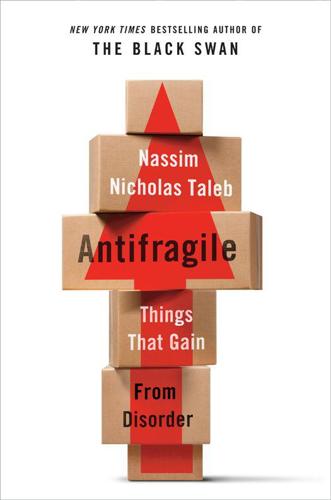
Antifragile: Things That Gain From Disorder
by
Nassim Nicholas Taleb
Published 27 Nov 2012
Finally, the best argument against teleological design is as follows. Even after they are built, buildings keep incurring mutations as if they needed to slowly evolve and be taken over by the dynamical environment: they change colors, shapes, windows—and character. In his book How Buildings Learn, Stewart Brand shows in pictures how buildings change through time, as if they needed to metamorphose into unrecognizable shapes—strangely buildings, when erected, do not account for the optionality of future alterations. Wall to Wall Windows The skepticism about architectural modernism that I am proposing is not unconditional.
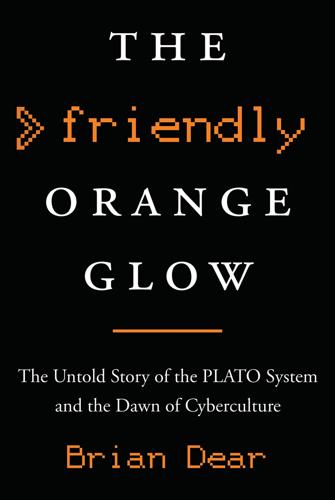
The Friendly Orange Glow: The Untold Story of the PLATO System and the Dawn of Cyberculture
by
Brian Dear
Published 14 Jun 2017
There was one other conferencing system that also inherited this idea from Notes, called PicoSpan, which was a commercialized version of CONFER written by a developer named Marcus Watts, who along with Larry Brilliant created a company called NETI to market and sell PicoSpan. Brilliant was a friend of Stewart Brand’s, creator of the Whole Earth Catalog, and around 1984 Brand and Brilliant started working a conferencing bulletin board service running on PicoSpan called the Whole Earth ’Lectronic Link—The WELL—a service that launched in 1985. Computer histories, even recent bestselling ones, often cite The WELL as the first online community with a conferencing system.
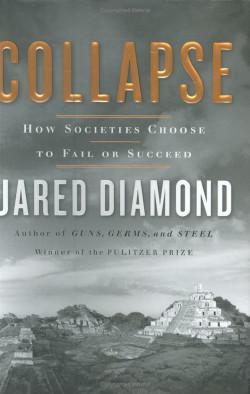
Collapse
by
Jared Diamond
Published 25 Apr 2011
A C K N O W L E D G M E N T S I acknowledge with gratitude the big debts that I owe to many people for their contributions to this book. With these friends and colleagues, I shared the pleasure and excitement of exploring the ideas presented here. A special badge of heroism was earned by six friends who read and critiqued the entire manuscript: Julio Betancourt, Stewart Brand, my wife Marie Cohen, Paul Ehrlich, Alan Grinnell, and Charles Redman. That same badge of heroism, and more, are due to my editors Wendy Wolf at Penguin Group (New York) and Stefan McGrath and Jon Turney at Viking Penguin (London), and to my agents John Brockman and Katinka Matson, who besides reading the whole manuscript helped in myriad ways to shape this book from its initial conception through all stages of production.
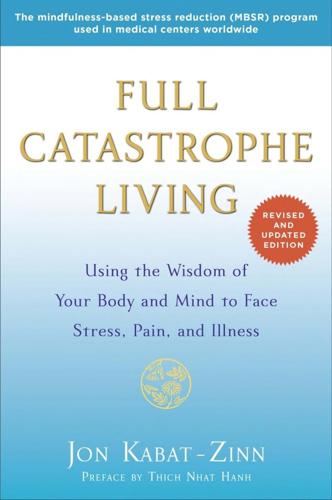
Full Catastrophe Living (Revised Edition): Using the Wisdom of Your Body and Mind to Face Stress, Pain, and Illness
by
Jon Kabat-Zinn
Published 23 Sep 2013
We believe that it is important for our patients to develop conscious approaches to recognizing and working with these problems as well as their more personal problems if they are to bring mindfulness to the totality of their lives and cope effectively with the full range of forces at work within them. World stress will only become more intense in the future. In the early 1970s, Stewart Brand of Whole Earth Catalog fame predicted narrowcasting and smart televisions, delivering only the information you want to know when you get home at the end of the day. That day is already here, but it is likely that, in terms of what is coming, we have seen nothing yet. Still, we are already in a world in which our access to information never sleeps, and goes with us everywhere through our various portable wireless devices, Twitter feeds, Facebook posts, and automatic downloads.
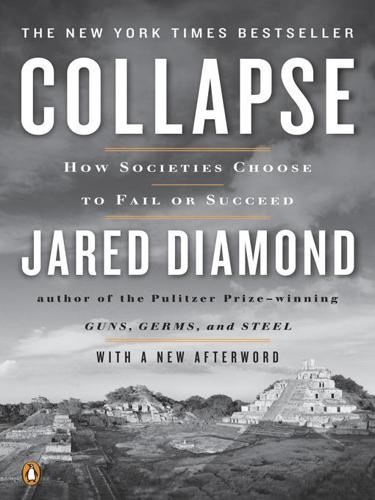
Collapse: How Societies Choose to Fail or Succeed
by
Jared Diamond
Published 2 Jan 2008
ACKNOWLEDGMENTS I acknowledge with gratitude the big debts that I owe to many people for their contributions to this book. With these friends and colleagues, I shared the pleasure and excitement of exploring the ideas presented here. A special badge of heroism was earned by six friends who read and critiqued the entire manuscript: Julio Betancourt, Stewart Brand, my wife Marie Cohen, Paul Ehrlich, Alan Grinnell, and Charles Redman. That same badge of heroism, and more, are due to my editors Wendy Wolf at Penguin Group (New York) and Stefan McGrath and Jon Turney at Viking Penguin (London), and to my agents John Brockman and Katinka Matson, who besides reading the whole manuscript helped in myriad ways to shape this book from its initial conception through all stages of production.
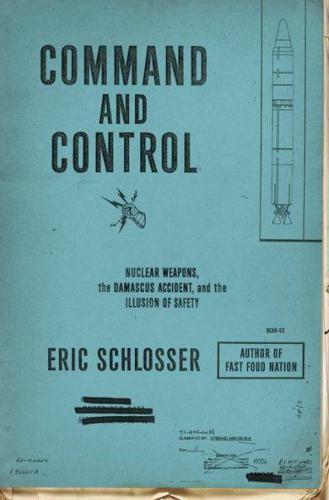
Command and Control: Nuclear Weapons, the Damascus Accident, and the Illusion ofSafety
by
Eric Schlosser
Published 16 Sep 2013
The motors might silently rotate, one notch at a time, over the course of days or even months, without the launch crews knowing. And then, when the final notch turned, fifty missiles would suddenly take off. Rubel interview. “I was scared shitless”: The engineer was Paul Baran, later one of the inventors of packet switching. Quoted in Stewart Brand, “Founding Father,” Wired, March 2001. the redesign cost about $840 million: Cited in Ball, Politics and Force Levels, p. 194. To err on the side of safety: See Dobbs, One Minute to Midnight, pp. 276–79; and “Strategic Air Command Operations in the Cuban Crisis,” pp. 72–73. “Mr. McNamara went on to describe the possibilities”: “State-Defense Meeting on Group I, II, and IV Papers,” p. 12.
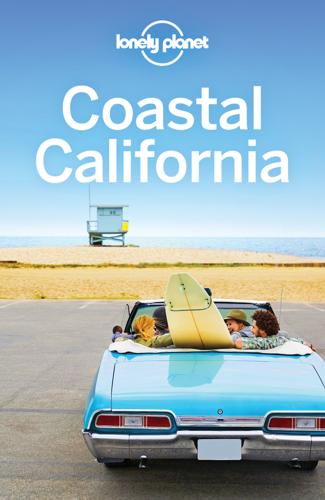
Coastal California Travel Guide
by
Lonely Planet
When Hewlett-Packard introduced the first personal computer in 1968, advertisements breathlessly gushed that the ‘light’ (40lb) machine could ‘take on roots of a fifth-degree polynomial, Bessel functions, elliptic integrals and regression analysis’ – all for just $4900 (almost $35,000 today). Consumers didn’t know quite what to do with computers, but in his 1969 Whole Earth Catalog, author (and former LSD tester for the CIA) Stewart Brand explained that the technology governments used to run countries could empower ordinary people. Hoping to bring computer power to the people, 21-year-old Steve Jobs and Steve Wozniak introduced the Apple II at the 1977 West Coast Computer Faire. Still, the question remained: what would ordinary people do with all that computing power?

Palo Alto: A History of California, Capitalism, and the World
by
Malcolm Harris
Published 14 Feb 2023
William Roseberry, “The Rise of Yuppie Coffees and the Reimagination of Class in the United States,” American Anthropologist 98, no. 4 (December 1996): 762–75. 18. Harry Braverman, Labor and Monopoly Capital: The Degredation of Work in the Twentieth Century (New York: Monthly Review Press, 1975). 19. Fred Turner, From Counterculture to Cyberculture: Stewart Brand, the Whole Earth Network, and the Rise of Digital Utopianism (Chicago: University of Chicago Press, 2006), 214. 20. Boy Lüthje, “The Changing Map of Global Electronics: Networks of Mass Production in the New Economy,” in Challenging the Chip: Labor Rights and Environmental Justice in the Global Electronics Industry, ed.
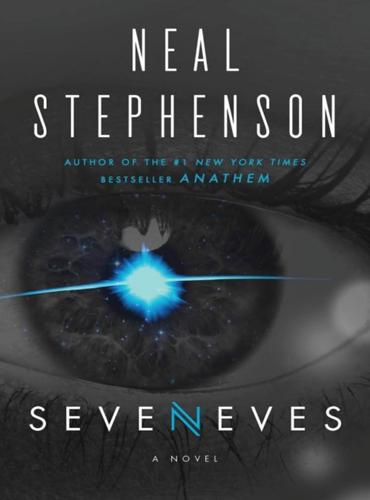
Seveneves
by
Neal Stephenson
Published 19 May 2015
Again, this work hasn’t led to an actual game yet, but it had the side effect of helping me put flesh on the bones of the story. Thanks also to James Gwertzman for introducing me to Ed and for his advice and feedback on this front. Ben Hawker of Weta Workshop read the manuscript and pointed out that Cradle would be rusty, a detail that had somehow escaped me; hasty last-minute alterations ensued. Stewart Brand and Ryan Phelan, by dint of their connection with the Long Now Foundation’s Revive and Restore Initiative, had much useful background to supply on the genetic challenges associated with reviving species from small breeding populations. While the first two parts of the story are a tale of straight-up global disaster and hastily improvised technology, I always viewed the third part of it as an opportunity to showcase many of the more positive ideas that have emerged, over the last century, from the global community of people interested in space exploration.

Northern California Travel Guide
by
Lonely Planet
Geeking Out When Silicon Valley introduced the first personal computer in 1968, advertisements breathlessly gushed that Hewlett-Packard’s ‘light’ (40lb) machine could ‘take on roots of a fifth-degree polynomial, Bessel functions, elliptic integrals and regression analysis’ – all for just $4900 (nearly $35,000 today). Consumers didn’t know quite what to do with computers, but in his 1969 Whole Earth Catalog, author (and former LSD tester for the CIA) Stewart Brand explained that the technology governments used to run countries could empower ordinary people. Hoping to bring computer power to the people, Steve Jobs and Steve Wozniak, both in their 20s at the time, introduced the Apple II at the 1977 West Coast Computer Faire, with unfathomable memory (4KB of RAM) and microprocessor speed (1MHz).
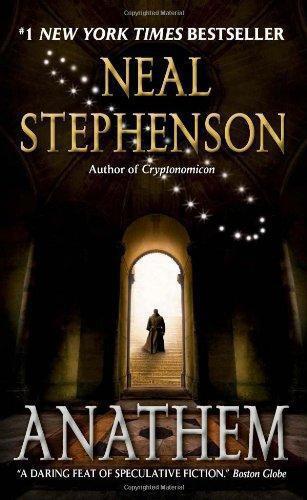
Anathem
by
Neal Stephenson
Published 25 Aug 2009
“It makes you wonder about the Cousins,” I said, thinking back to a wild notion that Arsibalt had raised last night: that the Cousins might have come, not just from another solar system, but from another cosmos. “Yes,” Criscan said, “it makes you wonder about the Cousins.” ACKNOWLEDGMENTS ANATHEM COULD NOT HAVE been written had the following not come first: the Millennium Clock project being carried out by Danny Hillis and his collaborators at the Long Now Foundation, including Stewart Brand and Alexander Rose. a philosophical lineage that can be traced from Thales through Plato, Leibniz, Kant, Gödel, and Husserl. the Orion project of the late 1950s and early 1960s. The author is, therefore, indebted to many more people than can comfortably be listed on a traditional acknowledgments page.
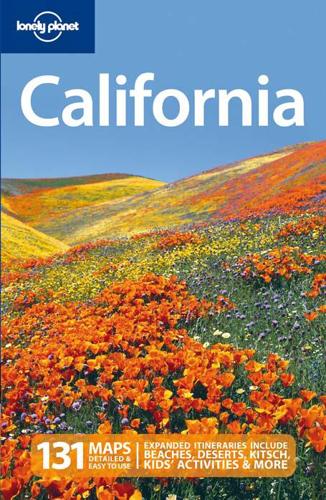
California
by
Sara Benson
Published 15 Oct 2010
Advertisements breathlessly gushed that Hewlett-Packard’s ‘light’ (40lb) machine could ‘take on roots of a fifth-degree polynomial, Bessel functions, elliptic integrals and regression analysis’ – all for the low, low price of $4900 (about $29,000 today). Consumers didn’t quite know what to do with personal computers, until another CIA LSD tester named Stewart Brand explained their potential in simple terms. In his 1969 Whole Earth Catalog, Brand reasoned that the technology governments used to run countries could empower ordinary people. That same year UCLA professor Len Kleinrock proved Brand right, sending a message from a computer in Los Angeles to another at Stanford.